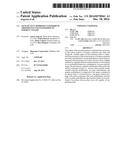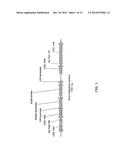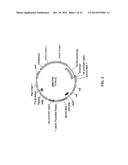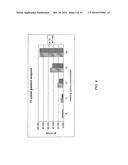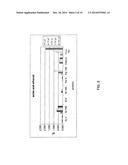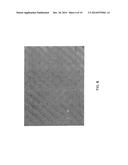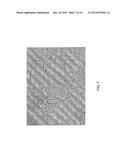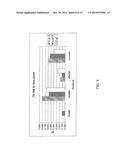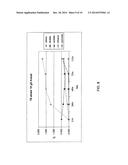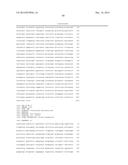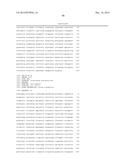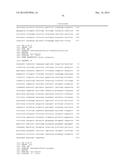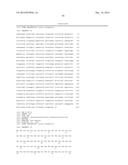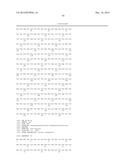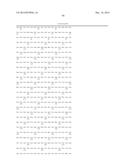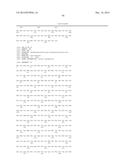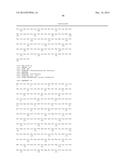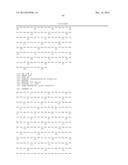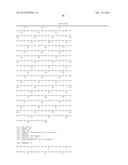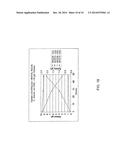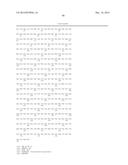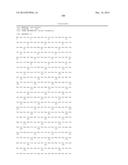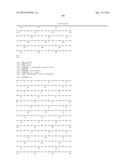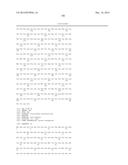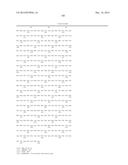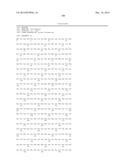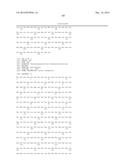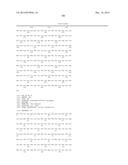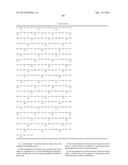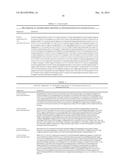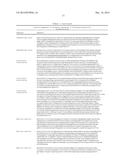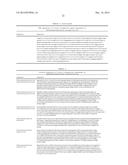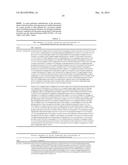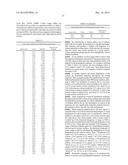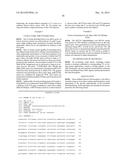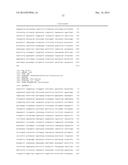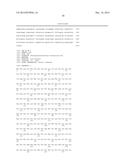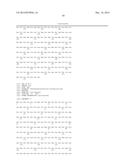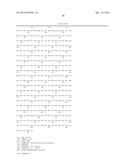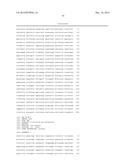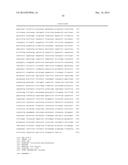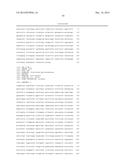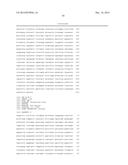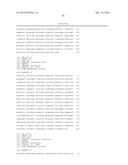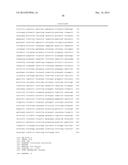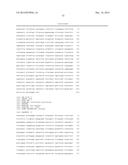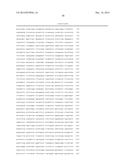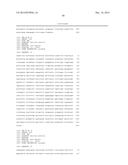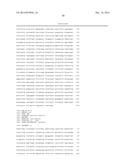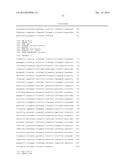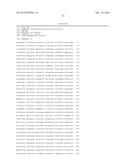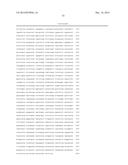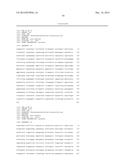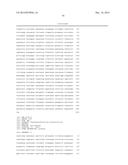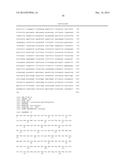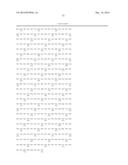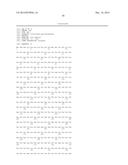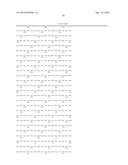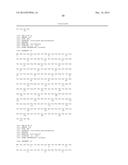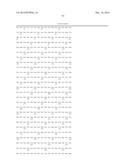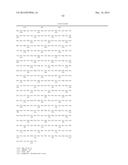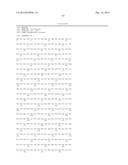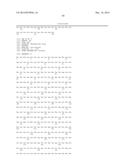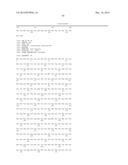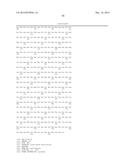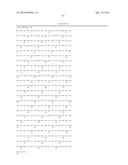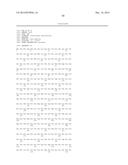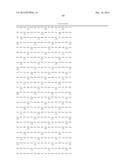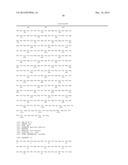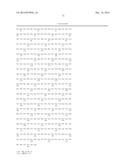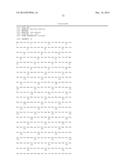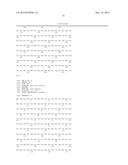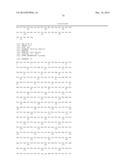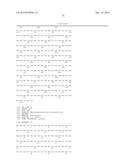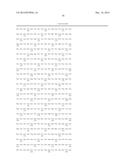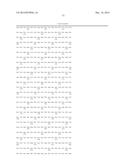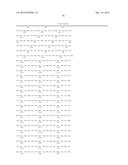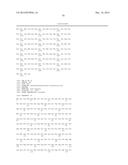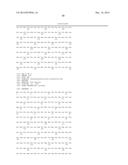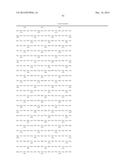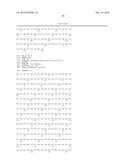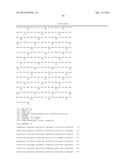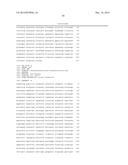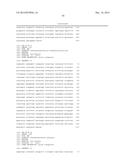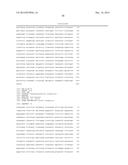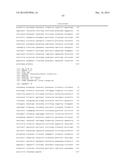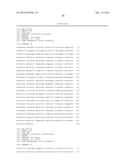Patent application title: GENETICALLY MODIFIED CLOSTRIDIUM THERMOCELLUM ENGINEERED TO FERMENT XYLOSE
Inventors:
Aaron Argyros (White River Junction, VT, US)
Aaron Argyros (White River Junction, VT, US)
Trisha Barrett (Bradford, VT, US)
Trisha Barrett (Bradford, VT, US)
Nicky Caiazza (Rancho Santa Fe, CA, US)
Dave Hogsett (Grantham, NH, US)
Assignees:
Mascoma Corporation
IPC8 Class: AC12P706FI
USPC Class:
435161
Class name: Containing hydroxy group acyclic ethanol
Publication date: 2014-12-18
Patent application number: 20140370561
Abstract:
One aspect of the invention relates to industrial bioconversion of the
xylose portion of biomass materials into fuels and chemicals. Another
aspect of the invention relates to industrial bioconversion of the xylan
portion of biomass materials into fuels and chemicals. In one embodiment,
the invention is directed to the bacterium Clostridium thermocellum, a
highly cellulolytic organism that has much potential as a biocatalyst in
a consolidated bioprocess configuration. In some embodiments, the
invention is a genetic modification that confers the ability to ferment
xylose to C. thermocellum and the strains created with this modification.
In some embodiments, the genetic modification is composed of two genes
contained in an operon from T. saccharolyticum. The genes express
proteins with xylose isomerase (XI) and xylulokinase activites (XK). In
other embodiments, the invention relates to a recombinant Clostridium
thermocellum host cell capable of fermenting xylan.Claims:
1. A recombinant Clostridium thermocellum host cell capable of fermenting
xylose.
2. The recombinant Clostridium thermocellum host cell of claim 1 comprising one or more heterologous polynucleotides encoding one or more enzymes capable of metabolizing xylose.
3. The recombinant Clostridium thermocellum host cell of claim 1, wherein the host comprises a heterologous polynucleotide that encodes a xylose isomerase.
4. The recombinant Clostridium thermocellum host cell of claim 1, wherein the host comprises a heterologous polynucleotide that encodes a xylulokinase.
5. The recombinant Clostridium thermocellum host cell of claim 2, wherein the one or more heterologous polynucleotides are derived from Thermoanaerobacterium saccharolyticum.
6. The recombinant Clostridium thermocellum host cell of claim 2, wherein the host cell further comprises a lactate dehydrogenase promoter and terminator.
7. A recombinant Clostridium thermocellum host cell comprising one or more heterologous polynucleotides, wherein the polynucleotide comprises a nucleotide sequence at least 90% identical to any one of the nucleotide sequences of SEQ ID NOs: 1-2.
8. The recombinant Clostridium thermocellum host cell of claim 7, wherein the polynucleotide comprises a nucleotide sequence at least 95% identical to any one of the nucleotide sequences of SEQ ID NOs: 1-2.
9. The recombinant Clostridium thermocellum host cell of claim 8, wherein the polynucleotide comprises a nucleotide sequence identical to any one of the nucleotide sequences of SEQ ID NOs: 1-2.
10. The recombinant Clostridium thermocellum host cell of claim 2, wherein the one or more heterologous polynucleotides are expressed.
11. The recombinant Clostridium thermocellum host cell of claim 10, wherein expression of the one or more heterologous polynucleotides confers to the recombinant host cell the ability to ferment xylose.
12. The recombinant Clostridium thermocellum host cell of claim 2, wherein the one or more heterologous polynucleotides is stably integrated into the genome of the host cell.
13. The recombinant Clostridium thermocellum host cell of claim 2, comprising at least two copies of the heterologous polynucleotides integrated into the genome of the host cell.
14. The recombinant Clostridium thermocellum host cell of claim 2, wherein the one or more heterologous polynucleotides is integrated at a specific site in the genome of the host cell.
15. The recombinant Clostridium thermocellum host cell of claim 14, wherein the integration of at least one of the heterlogous polynucleotides occurs at the site of a specific gene in the genome of the host cell.
16. The recombinant Clostridium thermocellum host cell of claim 15, wherein the specific gene is the lactate dehydrogenase gene of the host cell.
17. The recombinant Clostridium thermocellum host cell of claim 2, wherein the one or more heterologous polynucleotides is present in the host cell in an extrachromosomal plasmid.
18. The recombinant Clostridium thermocellum host cell of claim 15, wherein the specific gene is disrupted as a result of integration of the heterologous polynucleotide.
19. The recombinant Clostridium thermocellum host cell of claim 15, wherein the specific gene is deleted as a result of integration of the heterologous polynucleotide.
20. The recombinant Clostridium thermocellum host cell of claim 18, wherein the host cell cannot make the protein product of the disrupted gene.
21. The recombinant Clostridium thermocellum host cell of claim 19, wherein the host cell cannot make the protein product of the deleted gene.
22. The recombinant Clostridium thermocellum host cell of claim 2, wherein the one or more heterologous polynucleotides encoding one or more enzymes is contained in an operon.
23. The recombinant Clostridium thermocellum host cell of claim 15, wherein the start codon of the one or more heterologous polynucleotides is integrated in frame with the promoter of the specific gene in the genome of the host cell.
24. The recombinant Clostridium thermocellum host cell of claim 15, wherein the stop codon of the one or more heterologous polynucleotides is integrated in frame with the terminator of the specific gene in the genome of the host cell.
25. The recombinant Clostridium thermocellum host cell of claim 2, wherein the one or more heterologous polynucleotide is randomly integrated into the genome of the host cell.
26. The recombinant Clostridium thermocellum of claim 7, wherein the heterologous polynucleotide encodes a polypeptide comprising an amino acid sequence at least 90% identical to any one of the amino acid sequences of SEQ ID NOs: 3-4.
27. The recombinant Clostridium thermocellum host cell of claim 8, wherein the heterologous polynucleotide encodes a polypeptide comprising an amino acid sequence at least 95% identical to any one of the amino acid sequences of SEQ ID NOs:3-4.
28. The recombinant Clostridium thermocellum host cell of claim 9, wherein the heterologous polynucleotide encodes a polypeptide comprising an amino acid identical to any one of the amino acid sequences of SEQ ID NOs:3-4.
29. The recombinant Clostridium thermocellum host cell of claim 1, further comprising a deletion of one or more genes endogenous to the host cell.
30. The recombinant Clostridium thermocellum host cell of claim 29, wherein the deletion of the one or more genes endogenous to the host cell comprises the hypoxanthine phosphoribosyl transferase (HPT) gene.
31. The recombinant Clostridium thermocellum host cell of claim 1, wherein the host cell ferments xylose to ethanol.
32. The recombinant Clostridium thermocellum host cell of claim 1, wherein the host cell ferments xylose to acetate.
33. The recombinant Clostridium thermocellum host cell of claim 1, wherein the host cell ferments xylose to pyruvate.
34. The recombinant Clostridium thermocellum host cell of claim 1, further comprising a deletion of a phosphotransacetylase (PTA) gene.
35. The recombinant Clostridium thermocellum host cell of claim 34, wherein the host cell ferments xylose to ethanol as an end product and produces no undesirable end product.
36. A fermentation broth comprising: (a) a recombinant Clostridium thermocellum host cell capable of fermenting xylose; and (b) a media, wherein the media comprises xylose, and wherein the media is capable of supporting the growth of the host cell.
37. The fermentation broth of claim 36, wherein the recombinant Clostridium thermocellum host cell comprises one or more heterologous polynucleotides encoding one or more enzymes capable of metabolizing xylose.
38. A co-culture comprising the recombinant Clostridium thermocellum host cell of claim 1 and at least one other host cell.
39. The co-culture of claim 38, wherein the host cells express the same xylose metabolizing enzymes.
40. The co-culture of claim 38, wherein the host cells express different xylose metabolizing enzymes.
41. The co-culture of claim 38, wherein the host cells express at least one common xylose metabolizing enzyme.
42. A method of fermenting xylose comprising: incubating a reaction mixture comprising: (a) a biomass, wherein the biomass comprises xylose; and (b) a recombinant Clostridium thermocellum host cell, wherein the host cell is capable of fermenting xylose.
43. The method of claim 42, wherein the recombinant Clostridium thermocellum host cell comprises one or more heterologous polynucleotides encoding one or more enzymes capable of metabolizing xylose.
44. A method of making one or more xylose fermentation products comprising: incubating a reaction mixture comprising: (a) a biomass, wherein the biomass comprises xylose; and (b) a recombinant Clostridium thermocellum host cell, wherein the host cell is capable of fermenting xylose to yield one or more xylose fermentation products.
45. The method of claim 44, wherein the recombinant Clostridium thermocellum host cell comprises one or more heterologous polynucleotides encoding one or more enzymes capable of metabolizing xylose.
46. The method of claim 44, wherein the one or more xylose fermentation products comprises ethanol.
47. A recombinant Clostridium thermocellum host cell capable of fermenting xylan.
48. The recombinant Clostridium thermocellum host cell of claim 47 comprising one or more heterologous polynucleotides encoding one or more enzymes capable of metabolizing xylan.
49. The recombinant Clostridium thermocellum host cell of claim 48, wherein the one or more heterologous polynucleotides is integrated at a specific site in the genome of the host cell.
50. The recombinant Clostridium thermocellum host cell of claim 49, wherein the integration of at least one of the heterologous polynucleotides occurs at the site of a specific gene in the genome of the host cell.
51. The recombinant Clostridium thermocellum host cell of claim 50, wherein the specific gene is disrupted as a result of integration of the heterologous polynucleotide.
52. The recombinant Clostridium thermocellum host cell of claim 50, wherein the specific gene is deleted as a result of integration of the heterologous polynucleotide.
53. The recombinant Clostridium thermocellum host cell of claim 51, wherein the host cell cannot make the protein product of the disrupted gene.
54. The recombinant Clostridium thermocellum host cell of claim 52, wherein the host cell cannot make the protein product of the deleted gene.
55. The recombinant Clostridium thermocellum host cell of claim 48, wherein the one or more heterologous polynucleotides is present in the host cell in an extrachromosomal plasmid.
56. The recombinant Clostridium thermocellum host cell of claim 48, wherein the one or more heterologous polynucleotides is randomly integrated into the genome of the host cell.
57. The recombinant Clostridium thermocellum host cell of claim 47, wherein the host cell ferments xylan to ethanol.
58. A fermentation broth comprising: (a) a recombinant Clostridium thermocellum host cell capable of fermenting xylan; and (b) a media, wherein the media comprises xylan, and wherein the media is capable of supporting the growth of the host cell.
59. The fermentation broth of claim 58, wherein the recombinant Clostridium thermocellum host cell comprises one or more heterologous polynucleotides encoding one or more enzymes capable of metabolizing xylan.
60. A co-culture comprising the recombinant Clostridium thermocellum host cell of claim 47 and at least one other host cell.
61. The co-culture of claim 60, wherein the host cells express the same xylan metabolizing enzymes.
62. The co-culture of claim 60, wherein the host cells express different xylan metabolizing enzymes.
63. The co-culture of claim 60, wherein the host cells express at least one common xylan metabolizing enzyme.
64. A method of fermenting xylan comprising: incubating a reaction mixture comprising: (a) a biomass, wherein the biomass comprises xylan; and (b) a recombinant Clostridium thermocellum host cell, wherein the host cell is capable of fermenting xylan.
65. The method of claim 64, wherein the recombinant Clostridium thermocellum host cell comprises one or more heterologous polynucleotides encoding one or more enzymes capable of metabolizing xylan.
66. A method of making one or more xylan fermentation products comprising: incubating a reaction mixture comprising: (a) a biomass, wherein the biomass comprises xylan; and (b) a recombinant Clostridium thermocellum host cell, wherein the host cell is capable of fermenting xylan to yield one or more xylan fermentation products.
67. The method of claim 66, wherein the recombinant Clostridium thermocellum host cell comprises one or more heterologous polynucleotides encoding one or more enzymes capable of metabolizing xylan.
68. The method of claim 66, wherein the one or more xylan fermentation products comprises ethanol.
69. The recombinant Clostridium thermocellum host cell of claim 1, further comprising one or more heterologous polynucleotides, wherein the polynucleotide comprises a nucleotide sequence at least 90% identical to any one of the nucleotide sequences of SEQ ID NOs: 5-21.
70. The recombinant Clostridium thermocellum host cell of claim 1, further comprising one or more heterologous polynucleotides, wherein the polynucleotide comprises a nucleotide sequence at least 95% identical to any one of the nucleotide sequences of SEQ ID NOs: 5-21.
71. The recombinant Clostridium thermocellum host cell of claim 1, further comprising one or more heterologous polynucleotides, wherein the polynucleotide comprises a nucleotide sequence identical to any one of the nucleotide sequences of SEQ ID NOs: 5-21.
72. The recombinant Clostridium thermocellum host cell of claim 69, wherein the one or more heterologous polynucleotides encode a polypeptide comprising an amino acid sequence at least 90% identical to any one of the amino acid sequences of SEQ ID NOs: 22-38.
73. The recombinant Clostridium thermocellum host cell of claim 70, wherein the one or more heterologous polynucleotides encode a polypeptide comprising an amino acid sequence at least 95% identical to any one of the amino acid sequences of SEQ ID NOs: 22-38.
74. The recombinant Clostridium thermocellum host cell of claim 71, wherein the one or more heterologous polynucleotides encode a polypeptide comprising an amino acid sequence identical to any one of the amino acid sequences of SEQ ID NOs: 22-38.
75. The recombinant Clostridium thermocellum host cell of claim 1, further comprising one or more heterologous polynucleotides, wherein the polynucleotide comprises a nucleotide sequence at least 90% identical to any one of the nucleotide sequences of SEQ ID NOs: 39-50.
76. The recombinant Clostridium thermocellum host cell of claim 1, further comprising one or more heterologous polynucleotides, wherein the polynucleotide comprises a nucleotide sequence at least 95% identical to any one of the nucleotide sequences of SEQ ID NOs: 39-50.
77. The recombinant Clostridium thermocellum host cell of claim 1, further comprising one or more heterologous polynucleotides, wherein the polynucleotide comprises a nucleotide sequence identical to any one of the nucleotide sequences of SEQ ID NOs: 39-50.
78. The recombinant Clostridium thermocellum of claim 75, wherein the one or more heterologous polynucleotides encode a polypeptide comprising an amino acid sequence at least 90% identical to any one of the amino acid sequences of SEQ ID NOs: 51-62.
79. The recombinant Clostridium thermocellum of claim 76, wherein the one or more heterologous polynucleotides encode a polypeptide comprising an amino acid sequence at least 95% identical to any one of the amino acid sequences of SEQ ID NOs: 51-62.
80. The recombinant Clostridium thermocellum of claim 77, wherein the one or more heterologous polynucleotides encode a polypeptide comprising an amino acid sequence identical to any one of the amino acid sequences of SEQ ID NOs: 51-62.
81. A co-culture comprising a recombinant Clostridium thermocellum host cell comprising one or more heterologous polynucleotides encoding one or more enzymes capable of metabolizing xylose and at least one other recombinant Clostridium thermocellum host cell of claim 69.
82. A first recombinant Clostridium thermocellum host cell of claim 1, which is selected by growth on a medium containing xylose as the only sugar source for at least 10 generations to generate a second recombinant Clostridium thermocellum host cell which utilizes xylose more efficiently than an otherwise identical cell that has not undergone the selection.
Description:
BACKGROUND OF THE INVENTION
Field of the Invention
[0001] Energy conversion, utilization and access underlie many of the great challenges of our time, including those associated with sustainability, environmental quality, security, and poverty. New applications of emerging technologies are required to respond to these challenges. Biotechnology, one of the most powerful of the emerging technologies, can give rise to important new energy conversion processes. Biomass and derivatives thereof are a resource for the biological conversion of energy to forms useful to humanity.
[0002] Biomass is biological material from living, or recently living organisms, such as wood, waste, (hydrogen) gas, and alcohol fuels. Biomass is carbon, hydrogen and oxygen based. Nitrogen and small quantities of other atoms, including alkali, alkaline earth and heavy metals can be found as well. Metals are often found in functional molecules such as the porphyrins which include chlorophyll which contains magnesium. Plants in particular combine water and carbon dioxide to sugar building blocks. The required energy is produced from light via photosynthesis based on chlorophyll. On average, between 0.1 and 1% of the available light is stored as chemical energy in plants. The sugar building blocks are the starting point for all of the major fractions found in terrestrial plants, lignin, hemicellulose and cellulose. Biomass is widely recognized as a promising source of raw material for production of renewable fuels and chemicals.
[0003] The primary obstacle impeding widespread production of energy from biomass feedstocks is the general absence of low-cost technology for overcoming the recalcitrance of these materials to conversion into useful products. Biomass contains carbohydrate fractions (e.g., cellulose and hemicellulose) as well as pentose sugars (e.g., xylose and arabinose) that can be converted into ethanol or other products such as acetate, pyruvate, lactic acid, and acetic acid. In order to convert these fractions, the cellulose, hemicellulose, xylose, and arabinose must ultimately be converted or hydrolyzed into monosaccharides; it is the hydrolysis that has historically proven to be problematic.
[0004] Biologically mediated processes are promising for energy conversion. Biomass processing schemes involving enzymatic or microbial hydrolysis commonly involve four biologically mediated transformations: (1) the production of saccharolytic enzymes (cellulases and hemicellulases); (2) the hydrolysis of carbohydrate components present in pretreated biomass to sugars; (3) the fermentation of hexose sugars (e.g., glucose, mannose, and galactose); and (4) the fermentation of pentose sugars (e.g., xylose and arabinose). These four transformations occur in a single step in a process configuration called consolidated bioprocessing (CBP), which is distinguished from other less highly integrated configurations in that it does not involve a dedicated process step for cellulase and/or hemicellulase production.
[0005] CBP offers the potential for lower cost and higher efficiency than processes featuring dedicated cellulase production. The benefits result in part from avoided capital costs, substrate and other raw materials, and utilities associated with cellulase production. In addition, several factors support the realization of higher rates of hydrolysis, and hence reduced reactor volume and capital investment using CBP, including enzyme-microbe synergy and the use of thermophilic organisms and/or complexed cellulase systems. Moreover, cellulose-adherent cellulolytic microorganisms are likely to compete successfully for products of cellulose hydrolysis with non-adhered microbes, e.g., contaminants, which could increase the stability of industrial processes based on microbial cellulose utilization. Progress in developing CBP-enabling microorganisms is being made through two strategies: engineering naturally occurring cellulolytic microorganisms to improve product-related properties, such as yield and titer, and engineering non-cellulolytic organisms that exhibit high product yields and titers to express a heterologous cellulase and hemicellulase system enabling cellulose and hemicellulose utilization.
[0006] One way to meet the demand for ethanol production is to convert sugars found in biomass, e.g., materials such as agricultural wastes, corn hulls, corncobs, cellulosic materials, and the like to produce ethanol or other products. In biomass conversion, microorganisms are used as biocatalysts to convert cellulosic materials to usable end products, such as ethanol. Efficient biomass conversion in large-scale industrial applications requires a microorganism that is able to tolerate high concentrations of sugar and ethanol, and which is able to ferment more than one sugar simultaneously.
[0007] Xylose appears in great abundance in biomass feedstocks. It can constitute as much as 40% of a lignocellulosic material (Ladisch et al., Biotechnol Bioeng, 25:1-2, 1983). By fermentation xylose can be converted to ethanol which can be used as a liquid fuel or a chemical feedstock. Enzymatically or as a by-product of fermentation, xylose can also be converted to xylitol which is a promising natural sweetener having dental caries reducing properties. Xylitol can also be used by diabetics.
[0008] Although many bacteria have the ability to ferment simple hexose sugars, the pentose sugars, xylose and arabinose, are among the most difficult sugars in biomass to metabolize. Some bacteria can ferment pentoses to ethanol and other co-products, and bacteria with improved ethanol production from pentose sugars have been genetically engineered. See, e.g., Xiao et al., Appl. Environ. Microbiol., 77:7886-7895, 2011. However, these bacteria are sensitive to low pH and high concentrations of ethanol, their use in fermentations is associated with co-product formation, and the level of ethanol produced remains too low. For at least these reasons, using these bacteria in large-scale ethanol production is not economically feasible. Therefore, there is a need in the art for a cellulolytic organism that is capable of fermenting pentose sugar to ethanol.
[0009] Organisms, such as Thermoanaerobacterium saccharolyticum are naturally capable of utilizing xylose by the xylose isomerase pathway. In the xylose isomerase pathway, the enzyme xylose isomerase (XI) converts xylose to xylulose. Xylulose is then phosphorylated by an ATP utilising kinase, xylulose kinase (XK), to xylulose-5-phosphate which is an intermediate of the pentose phosphate pathway. Therefore, one method of producing a xylose fermenting cellulolytic organism, that would be useful as a CBP organism, is to clone genes from the xylose isomerase pathway, required for the fermentation of xylose to ethanol, into a cellulolytic organism such that the cellulolytic organism can produce the enzymes needed to metabolize xylose.
[0010] Clostridium thermocellum is a highly cellulolytic organism that has much potential as a biocatalyst in a consolidated bioprocess configuration. The economic potential of C. thermocellum as a CBP organism is limited by its inability to ferment xylose. There are currently no known strains of C. thermocellum capable of fermenting xylose, engineered or otherwise. Therefore, a strain of C. thermocellum that is capable of fermenting xylose will have great industrial applicability as a CBP organism.
[0011] Although the genome of C. thermocellum has been completely sequenced and a number of C. thermocellum genes have been cloned into other bacteria, reliable methods have not been established for the introduction of foreign genes into this microorganism. The absence of such methods has been a significant impediment to studies of C. thermocellum aimed at increasing both fundamental understanding and applied capability. Due to the multiple and substantial possible genome modifications required to render C. thermocellum capable of fermenting xylose, as well as the difficulty and unpredictability in transforming this organism, it is currently not possible to create a Clostridium thermocellum strain suitable for use in the industrial production of ethanol and other products from biomass. Therefore, to date, no identified strains of C. thermocellum exist that have the ability to ferment xylose. Thus, there is a need in the art to develop one or more strains of C. thermocellum capable of fermenting xylose that can act as a biocatalyst in a consolidated bioprocess configuration.
[0012] The present invention provides, for the first time, strains of C. thermocellum containing genetic modifications that confer the ability to ferment xylose to C. thermocellum.
BRIEF SUMMARY OF THE INVENTION
[0013] In one embodiment, the invention relates to a recombinant Clostridium thermocellum host cell capable of fermenting xylose.
[0014] In another embodiment, the invention relates to a recombinant Clostridium thermocellum host cell comprising a heterologous polynucleotide, wherein the polynucleotide has a nucleotide sequence at least 90% identical to any one of the nucleotide sequences of SEQ ID NOs: 1-2 or the amino acid sequences of SEQ ID NOs: 3-4.
[0015] Another aspect of the invention relates to a fermentation broth comprising: (a) a recombinant Clostridium thermocellum host cell capable of fermenting xylose; and (b) a media, wherein the media comprises xylose, and wherein the media is capable of supporting the growth of the host cell.
[0016] In yet another aspect, the invention relates to a co-culture comprising the recombinant Clostridium thermocellum host cell of the invention capable of fermention xylose and at least one other host cell.
[0017] In another embodiment, the invention relates to a method of fermenting xylose comprising: incubating a reaction mixture comprising: (a) a biomass, wherein the biomass comprises xylose; and (b) a recombinant Clostridium thermocellum host cell, wherein the host cell is capable of fermenting xylose.
[0018] In still another embodiment, the invention relates to a method of making one or more xylose fermentation product comprising: incubating a reaction mixture comprising: (a) a biomass, wherein the biomass comprises xylose; and (b) a recombinant Clostridium thermocellum host cell, wherein the host cell is capable of fermenting xylose to yield one or more xylose fermentation products.
[0019] In another embodiment, the invention relates to a recombinant Clostridium thermocellum host cell capable of fermenting xylan.
[0020] Another aspect of the invention relates to a fermentation broth comprising: (a) a recombinant Clostridium thermocellum host cell capable of fermenting xylan; and (b) a media, wherein the media comprises xylan, and wherein the media is capable of supporting the growth of the host cell.
[0021] In yet another embodiment, the invention relates to a co-culture comprising the recombinant Clostridium thermocellum of the invention capable of fermention xylan and at least one other host cell.
[0022] In another embodiment, the invention relates to a method of fermenting xylan comprising: incubating a reaction mixture comprising: (a) a biomass, wherein the biomass comprises xylan; and (b) a recombinant Clostridium thermocellum host cell, wherein the host cell is capable of fermenting xylan.
[0023] In still another embodiment, the invention relates to a method of making one or more xylan fermentation products comprising: incubating a reaction mixture comprising: (a) a biomass, wherein the biomass comprises xylan; and (b) a recombinant Clostridium thermocellum host cell, wherein the host cell is capable of fermenting xylan to yield one or more xylan fermentation products.
BRIEF DESCRIPTION OF THE DRAWINGS/FIGURES
[0024] FIG. 1 depicts the integration of xylose isomerase/xylulokinase at the LDH locus.
[0025] FIG. 2 depicts plasmid pMU1793 which was designed and built in order to integrate the XI/XK operon in the chromosome of C. thermocellum containing a deletion of the hypoxanthine phosphoribosyl transferase (HPT) gene.
[0026] FIG. 3 depicts an image of diagnostic PCR confirmation of seamless integration of the XI/XK operon at the lactate dehydrogenase (LDH) locus. Wild type control genomic DNA was used to generate the amplicon observed in lane 14 and the expected 2.9 KB band is observed. The integrated XI/XK operon should run at 4966 bp, a size which is observed in lanes 2-5 and 8.
[0027] FIG. 4 depicts the endpoint analysis of xylose concentration at 156 hr in medium inoculated with a C. thermocellum strain T2 (Δldh::XI/XK).
[0028] FIG. 5 depicts the end product HPLC analysis of the T2 strain.
[0029] FIG. 6 shows evidence of sporulation observed in T3 cultures at 48 hrs.
[0030] FIG. 7 shows the microscopy of T3 culture at 72 hrs.
[0031] FIG. 8 depicts the endpoint analysis of T6 culture grown on 10 and 20 g/l xylose.
[0032] FIG. 9 shows the growth of T6 culture on 10 g/l avicel.
[0033] FIG. 10 shows the growth of M2236 culture on CM3 medium containing xylose as the only sugar source. Xylose is consumed and ethanol is produced by the M2236 strain, while the M1570 strain is unable to convert significant amounts of xylose to ethanol.
DETAILED DESCRIPTION OF THE INVENTION
[0034] This specification discloses one or more embodiments that incorporate the features of this invention. The disclosed embodiment(s) merely exemplify the invention. The scope of the invention is not limited to the disclosed embodiment(s). The invention is defined by the claims appended hereto.
[0035] In the following description, for purposes of explanation, specific numbers, materials and configurations are set forth in order to provide a thorough understanding of the invention. It will be apparent, however, to one having ordinary skill in the art that the invention may be practiced without these specific details. In some instances, well-known features may be omitted or simplified so as not to obscure the present invention.
[0036] The embodiment(s) described, and references in the specification to "one embodiment", "an embodiment", "an example embodiment", etc., indicate that the embodiment(s) described can include a particular feature, structure, or characteristic, but every embodiment may not necessarily include the particular feature, structure, or characteristic. Moreover, such phrases are not necessarily referring to the same embodiment. Further, when a particular feature, structure, or characteristic is described in connection with an embodiment, it is understood that it is within the knowledge of one skilled in the art to effect such feature, structure, or characteristic in connection with other embodiments whether or not explicitly described.
[0037] The description of "a" or "an" item herein may refer to a single item or multiple items. It is understood that wherever embodiments are described herein with the language "comprising," otherwise analogous embodiments described in terms of "consisting of" and/or "consisting essentially of" are also provided.
DEFINITIONS
[0038] The term "heterologous" when used in reference to a polynucleotide, a gene, a polypeptide, or an enzyme refers to a polynucleotide, gene, polypeptide, or an enzyme not normally found in the host organism. "Heterologous" also includes a native coding region, or portion thereof, that is removed from the source organism and subsequently reintroduced into the source organism in a form that is different from the corresponding native gene, e.g., not in its natural location in the organism's genome. The heterologous polynucleotide or gene may be introduced into the host organism by, e.g., gene transfer. A heterologous gene may include a native coding region that is a portion of a chimeric gene including non-native regulatory regions that is reintroduced into the native host. Foreign genes can comprise native genes inserted into a non-native organism, or chimeric genes. A heterologous polynucleotide, gene, polypeptide, or an enzyme may be derived from any source, e.g., eukaryotes, prokaryotes, viruses, or synthetic polynucleotide fragments. The term "heterologous" as used herein also refers to an element of a vector, plasmid or host cell that is derived from a source other than the endogenous source. Thus, for example, a heterologous sequence could be a sequence that is derived from a different gene or plasmid from the same host, from a different strain of host cell, or from an organism of a different taxonomic group (e.g., different kingdom, phylum, class, order, family genus, or species, or any subgroup within one of these classifications). The term "heterologous" is also used synonymously herein with the term "exogenous."
[0039] By "promoter" is meant a region of DNA that facilitates the transcription of a particular gene. Promoters are typically located near the genes they regulate, on the same strand and upstream (towards the 5' region of the sense strand). The terms "promoter" or "surrogate promoter" is intended to include a polynucleotide that can transcriptionally control a gene-of-interest that it does not transcriptionally control in nature. In certain embodiments, the transcriptional control of a surrogate promoter results in an increase in expression of the gene-of-interest. In certain embodiments, a surrogate promoter is placed 5' to the gene-of-interest. A surrogate promoter may be used to replace the natural promoter, or may be used in addition to the natural promoter. A surrogate promoter may be endogenous with regard to the host cell in which it is used, or it may be a heterologous polynucleotide sequence introduced into the host cell, e.g., exogenous with regard to the host cell in which it is used.
[0040] As used herein, the term "terminator" or "transcription terminator" is a section of genetic sequence that marks the end of a gene or operon on genomic DNA for transcription.
[0041] As used herein, the term "operon" refers to a functioning unit of genomic material containing a cluster of genes under the control of a single regulatory signal or promoter. The genes are transcribed together into an mRNA strand and either translated together in the cytoplasm, or undergo trans-splicing to create monocistronic mRNAs that are translated separately, i.e., several strands of mRNA that each encode a single gene product. The result of this is that the genes contained in the operon are either expressed together or not at all. Originally operons were thought to exist solely in prokaryotes but since the discovery of the first operons in eukaryotes in the early 1990s, more evidence has arisen to suggest they are more common than previously assumed. Operons occur primarily in prokaryotes but also in some eukaryotes, including Drosophila melanogaster and C. elegans.
[0042] "Thermophilic" or "thermotolerant" bacteria are those bacteria whose growth temperature optimum is above about 45° C. Thermophilic bacteria offer major advantages for biotechnological processes, many of which run more rapidly and efficiently at high temperatures. Higher incubation temperatures increase the diffusion rate and solubilities of non-gaseous compounds of interest and tend to discourage non-thermophilic microbial contamination. Cell culture carried out at high temperatures also eliminates or greatly reduces cooling costs.
[0043] By "mesophilic" is meant an organism that thrives at a temperature of about 20-45° C.
[0044] The terms "gene(s)" or "polynucleotide" or "polynucleotide sequence(s)" are intended to include nucleic acid molecules, e.g., polynucleotides which include an open reading frame encoding a polypeptide, and can further include non-coding regulatory sequences, and introns. In addition, the terms are intended to include one or more genes that map to a functional locus. In addition, the terms are intended to include a specific gene for a selected purpose. The gene may be endogenous to the host cell or may be recombinantly introduced into the host cell, e.g., as a plasmid maintained episomally or a plasmid (or fragment thereof) that is stably integrated into the genome. In addition to the plasmid form, a gene may, for example, be in the form of linear DNA. In certain embodiments, the gene or polynucleotide is involved in at least one step in the bioconversion of a acetate to a non-charged solvent, including but not limited to, acetone, isopropanol, ethyl acetate, or ethanol. Accordingly, the term is intended to include any gene encoding a polypeptide, such as the enzymes acetate kinase (ACK), phosphotransacetylase (PTA), lactate dehydrogenase (LDH), pyruvate formate lyase (PFL), aldehyde dehydrogenase (ADH) and/or alcohol dehydrogenase (ADH), acetyl-CoA transferase (ACS), acetaldehyde dehydrogenase, acetaldehyde/alcohol dehydrogenase, glycerol-3-phosphate dehydrogenase (GPD), acetyl-CoA synthetase, thiolase, CoA transferase, acetoacetate decarboxylase, enzymes in the D-xylose pathway, such as xylose isomerase and xylulokinase, enzymes in the L-arabinose pathway, such as L-arabinose isomerase and L-ribulose-5-phosphate 4-epimerase. The term gene is also intended to cover all copies of a particular gene, e.g., all of the DNA sequences in a cell encoding a particular gene product.
[0045] The term "expression" is intended to include the expression of a gene at least at the level of mRNA production.
[0046] The term "expression product" is intended to include the resultant product, e.g., a polypeptide, of an expressed gene.
[0047] The term "cellulolytic activity" is intended to include the ability to hydrolyze glycosidic linkages in oligohexoses and polyhexoses. Cellulolytic activity may also include the ability to depolymerize or debranch cellulose and hemicellulose.
[0048] The term "xylanolytic activity" is intended to include the ability to hydrolyze glycosidic linkages in oligopentoses and polypentoses.
[0049] As used herein, the term "lactate dehydrogenase" or "LDH" is intended to include the enzymes capable of converting pyruvate into lactate. It is understood that LDH can also catalyze the oxidation of hydroxybutyrate. LDH includes those enzymes that correspond to Enzyme Commission Number 1.1.1.27.
[0050] As used herein the term "alcohol dehydrogenase" or "ADH" is intended to include the enzymes capable of converting acetaldehyde into an alcohol, such as ethanol. ADH also includes the enzymes capable of converting acetone to isopropanol. ADH includes those enzymes that correspond to Enzyme Commission Number 1.1.1.1.
[0051] As used herein, the term "phosphotransacetylase" or "PTA" is intended to include the enzymes capable of converting hypoxanthine to inosine monophosphate and guanine to guanosine monophosphate via transfer of the 5-phosphoribosyl group from 5-phosphoribosyl 1-pyrophosphate. This enzyme plays a central role in the generation of purine nucleotides through the purine salvage pathway. HPT includes those enzymes that correspond to Enzyme Commission Number 2.4.2.8.
[0052] As used herein, the term "hypoxanthine phosphoribosyltransferase" or "HPT" is intended to include the enzymes capable of converting acetyl-phosphate into acetyl-CoA. PTA includes those enzymes that correspond to Enzyme Commission Number 2.3.1.8.
[0053] A "xylose metabolizing enzyme" can be any enzyme involved in xylose digestion, metabolism and/or hydrolysis, including a xylose isomerase, xylulokinase, xylose reductase, xylose dehydrogenase, xylitol dehydrogenase, xylonate dehydratase, a transketolase, and a transaldolase protein. See, e.g. Gu et al., BMC Genomics, 11:255-268, 2010.
[0054] By "xylulokinase" (XK) is meant an enzyme that catalyzes the chemical reaction: ATP+D-xyluloseADP+D-xylulose 5-phosphate. Thus, the two substrates of this enzyme are ATP and D-xylulose, whereas its two products are ADP and D-xylulose 5-phosphate. This enzyme belongs to the family of transferases, specifically those transferring phosphorus-containing groups (phosphotransferases) with an alcohol group as acceptor. The systematic name of this enzyme class is ATP:D-xylulose 5-phosphotransferase. Other names in common use include xylulokinase (phosphorylating), and D-xylulokinase. This enzyme participates in pentose and glucuronate interconversions. XK includes those enzymes that correspond to Enzyme Commission Number 2.7.1.17.
[0055] By "xylose isomerase" (XI) is meant an enzyme that catalyzes the chemical reaction: D-xyloseD-xylulose. This enzyme belongs to the family of isomerases, specifically those intramolecular oxidoreductases interconverting aldoses and ketoses. The systematic name of this enzyme class is D-xylose aldose-ketose-isomerase. Other names in common use include D-xylose isomerase, D-xylose ketoisomerase, and D-xylose ketol-isomerase. This enzyme participates in pentose and glucuronate interconversions and fructose and mannose metabolism. The enzyme is used industrially to convert glucose to fructose in the manufacture of high-fructose corn syrup. It is sometimes referred to as "glucose isomerase". XI includes those enzymes that correspond to Enzyme Commission Number 5.3.1.5.
[0056] As used herein, the term "xylose transport proteins" or "xylose transporter" is intended to include a membrane protein that is involved in the movement of xylose across a biological membrane, thereby facilitating xylose utilization by the host organism. See, e.g. Gu et al., BMC Genonmics, 11:255-268, 2010. As used herein, the term "xylose transport genes" is intended to include the genes that encode a xylose transport protein.
[0057] Certain embodiments of the present invention provide for the "inactivation" or "deletion" of certain genes or particular polynucleotide sequences within microorganisms, which "inactivation" or "deletion" of genes or particular polynucleotide sequences may be understood to encompass "genetic modification(s)" or "transformation(s)" such that the resulting strains of said microorganisms may be understood to be "genetically modified" or "transformed." In certain embodiments, strains of microorganisms may be of bacterial, fungal, or yeast origin.
[0058] Certain embodiments of the present invention provide for the "insertion," (e.g., the addition, integration, incorporation, or introduction) of certain genes or particular polynucleotide sequences within thermophilic or mesophilic microorganisms, which insertion of genes or particular polynucleotide sequences may be understood to encompass "genetic modification(s)" or "transformation(s)" such that the resulting strains of said thermophilic or mesophilic microorganisms may be understood to be "genetically modified" or "transformed." In certain embodiments, strains of microorganisms may be of bacterial, fungal, or yeast origin.
[0059] The term "CBP organism" is intended to include microorganisms of the invention, e.g., microorganisms that have properties suitable for CBP.
[0060] The terms "fermenting" and "fermentation" are intended to include the enzymatic process (e.g., cellular or acellular, e.g., a lysate or purified polypeptide mixture) by which ethanol is produced from a carbohydrate, in particular, as a product of fermentation.
[0061] As used herein, the term "undesirable end products" of fermentation is intended to include products of fermentation other than ethanol and carbon dioxide. Undesirable end products may include, but are not limited to, acetate, lactate, pyruvate, and glyceraldehyde.
[0062] As used herein, "selection" or "selection methods" or "selection protocol(s)" refers to methods for putting pressure on (or challenging) a given strain to adapt to new conditions. The selection methods favor sporadic "variants" of the original strain wherein the variants undergo some genetic or epigenetic change that confers a growth advantage in the culture conditions of the embodiment.
[0063] In one aspect of the invention, the genes or particular polynucleotide sequences are inserted to activate the activity for which they encode, such as the expression of an enzyme. In certain embodiments, genes encoding enzymes in the metabolic production of ethanol, e.g., enzymes that metabolize pentose and/or hexose sugars, may be added to a mesophilic or thermophilic organism. In certain embodiments of the invention, the enzyme may confer the ability to metabolize a pentose sugar and be involved, for example, in the D-xylose pathway and/or L-arabinose pathway. In certain embodiments of the invention, genes encoding enzymes in the conversion of acetate to a non-charged solvent, including but not limited to, acetone, isopropanol, ethyl acetate, or ethanol, may be added to a mesophilic or thermophilic organism.
[0064] In one aspect of the invention, the genes or particular polynucleotide sequences are partially, substantially, or completely deleted, silenced, inactivated, or down-regulated in order to inactivate the activity for which they encode, such as the expression of an enzyme. Deletions provide maximum stability because there is no opportunity for a reverse mutation to restore function. Alternatively, genes can be partially, substantially, or completely deleted, silenced, inactivated, or down-regulated by insertion of nucleic acid sequences that disrupt the function and/or expression of the gene (e.g., P1 transduction or other methods known in the art). The terms "eliminate," "elimination." and "knockout" are used interchangeably with the terms "deletion," "partial deletion," "substantial deletion," or "complete deletion." In certain embodiments, strains of microorganisms of interest may be engineered by site directed homologous recombination to knockout specific genes. In still other embodiments, RNAi or antisense DNA (asDNA) may be used to partially, substantially, or completely silence, inactivate, or down-regulate a particular gene of interest.
[0065] In certain embodiments, the genes targeted for deletion or inactivation as described herein may be endogenous to the native strain of the microorganism, and may thus be understood to be referred to as "native gene(s)" or "endogenous gene(s)." An organism is in "a native state" if it has not been genetically engineered or otherwise manipulated by the hand of man in a manner that intentionally alters the genetic and/or phenotypic constitution of the organism. For example, wild-type organisms may be considered to be in a native state. In other embodiments, the gene(s) targeted for deletion or inactivation may be non-native to the organism.
[0066] Similarly, the enzymes of the invention as described herein can be endogenous to the native strain of the microorganism, and can thus be understood to be referred to as "native" or "endogenous."
[0067] The term "expression," as used herein, refers to the transcription and stable accumulation of sense (mRNA) or antisense RNA derived from the nucleic acid fragment of the invention. Expression may also refer to translation of mRNA into a polypeptide.
[0068] The term "lignocellulose" refers to material that is comprised of lignin and cellulose.
[0069] A "saccharolytic enzyme" can be any enzyme involved in carbohydrate digestion, metabolism and/or hydrolysis, including amylases, cellulases, hemicellulases, cellulolytic and amylolytic accessory enzymes, inulinases, levanases, and pentose sugar hydrolyzing enzymes.
[0070] A "pentose sugar utilizing enzyme" can be any enzyme involved in pentose sugar digestion, metabolism and/or hydrolysis, including xylanase, arabinase, arabinoxylanase, arabinosidase, arabinofuranosidase, arabinoxylanase, arabinosidase, arabinose isomerase, ribulose-5-phosphate 4-epimerase, xylose isomerase, xylulokinase, xylose reductase, xylose dehydrogenase, xylitol dehydrogenase, xylonate dehydratase, xylose transketolase, and/or xylose transaldolase.
[0071] A "cellulolytic enzyme" can be any enzyme involved in cellulose digestion, metabolism and/or hydrolysis. The term "cellulase" refers to a class of enzymes produced chiefly by fungi, bacteria, and protozoans that catalyze cellulolysis (i.e. the hydrolysis) of cellulose. However, there are also cellulases produced by other types of organisms such as plants and animals. Several different kinds of cellulases are known, which differ structurally and mechanistically. The EC number for this group of enzymes is EC 3.2.1.4. There are general types of cellulases based on the type of reaction catalyzed: endocellulase breaks internal bonds to disrupt the crystalline structure of cellulose and expose individual cellulose polysaccharide chains; exocellulase cleaves 2-4 units from the ends of the exposed chains produced by endocellulase, resulting in the tetrasaccharides or disaccharide such as cellobiose. There are two main types of exocellulases (or cellobiohydrolases, abbreviate CBH)--one type working processively from the reducing end, and one type working processively from the non-reducing end of cellulose; cellobiase or beta-glucosidase hydrolyses the exocellulase product into individual monosaccharides; oxidative cellulases that depolymerize cellulose by radical reactions, as for instance cellobiose dehydrogenase (acceptor); cellulose phosphorylases that depolymerize cellulose using phosphates instead of water. In the most familiar case of cellulase activity, the enzyme complex breaks down cellulose to beta-glucose. A "cellulase" can be any enzyme involved in cellulase digestion, metabolism and/or hydrolysis, including an endoglucanase, glucosidase, cellobiohydrolase, xylanase, glucanase, xylosidase, xylan esterase, arabinofuranosidase, galactosidase, cellobiose phosphorylase, cellodextrin phosphorylase, mannanase, mannosidase, xyloglucanase, endoxylanase, glucuronidase, acetylxylanesterase, arabinofuranohydrolase, swollenin, glucuronyl esterase, expansin, and feruoyl esterase protein.
[0072] An "amylolytic enzyme" can be any enzyme involved in amylase digestion, metabolism and/or hydrolysis. The term "amylase" refers to an enzyme that breaks starch down into sugar. Amylase is present in human saliva, where it begins the chemical process of digestion. Foods that contain much starch but little sugar, such as rice and potato, taste slightly sweet as they are chewed because amylase turns some of their starch into sugar in the mouth. The pancreas also makes amylase (α-amylase) to hydrolyse dietary starch into disaccharides and trisaccharides which are converted by other enzymes to glucose to supply the body with energy. Plants and some bacteria also produce amylase. All amylases are glycoside hydrolases and act on α-1,4-glycosidic bonds. Some amylases, such as γ-amylase (glucoamylase), also act on α-1,6-glycosidic bonds. Amylase enzymes include α-amylase (EC 3.2.1.1), 3-amylase (EC 3.2.1.2), and γ-amylase (EC 3.2.1.3). An amylase can be any enzyme involved in amylase digestion, metabolism and/or hydrolysis, including α-amylase, β-amylase, glucoamylase, and alpha-glucosidase. The α-amylases are calcium metalloenzymes, unable to function in the absence of calcium. By acting at random locations along the starch chain, α-amylase breaks down long-chain carbohydrates, ultimately yielding maltotriose and maltose from amylose, or maltose, glucose and "limit dextrin" from amylopectin. Because it can act anywhere on the substrate, α-amylase tends to be faster-acting than β-amylase. In animals, it is a major digestive enzyme and its optimum pH is about 6.7-7.0. Another form of amylase, 3-amylase, is also synthesized by bacteria, fungi, and plants. Working from the non-reducing end, β-amylase catalyzes the hydrolysis of the second α-1.4 glycosidic bond, cleaving off two glucose units (maltose) at a time. Many microbes produce amylase to degrade extracellular starches. In addition to cleaving the last α(1-4)glycosidic linkages at the nonreducing end of amylose and amylopectin, yielding glucose, γ-amylase will cleave α(1-6) glycosidic linkages. Another amylolytic enzyme is pullulanase. Pullulanase is a specific kind of glucanase, an amylolytic exoenzyme, that degrades pullulan. Pullulan is regarded as a chain of maltotriose units linked by alpha-1,6-glycosidic bonds. Pullulanase (EC 3.2.1.41) is also known as pullulan-6-glucanohydrolase (Debranching enzyme). Another amylolytic enzyme, isopullulanase, hydrolyses pullulan to isopanose (6-alpha-maltosylglucose). Isopullulanase (EC 3.2.1.57) is also known as pullulan 4-glucanohydrolase. An "amylase" can be any enzyme involved in amylase digestion, metabolism and/or hydrolysis, including α-amylase, β-amylase, glucoamylase, pullulanase, isopullulanase, and alpha-glucosidase.
[0073] The term "xylan" includes a wide variety of highly complex polysaccharides that are found in plant cell walls and some algae. Xylans are polysaccharides made from units of xylose.
[0074] The term "xylanase" is the name given to a class of enzymes which degrade the linear polysaccharide beta-1,4-xylan into xylose, thus breaking down hemicellulose, one of the major components of plant cell walls. As such, it plays a major role in micro-organisms thriving on plant sources (mammals, conversely, do not produce xylanase). Additionally, xylanases are present in fungi for the degradation of plant matter into usable nutrients. Xylanases include those enzymes that correspond to Enzyme Commission Number 3.2.1.8. A "xylose metabolizing enzyme" can be any enzyme involved in xylose digestion, metabolism and/or hydrolysis, including a xylose isomerase, xylulokinase, xylose reductase, xylose dehydrogenase, xylitol dehydrogenase, xylonate dehydratase, xylose transketolase, and a xylose transaldolase protein.
[0075] A "pentose sugar hydrolyzing enzyme" can be any enzyme involved in pentose sugar digestion, metabolism and/or hydrolysis, including xylanase, arabinase, arabinoxylanase, arabinosidase, arabinofuranosidase, arabinoxylanase, arabinosidase, arabinose isomerase, ribulose-5-phosphate 4-epimerase, xylose isomerase, xylulokinase, xylose reductase, xylose dehydrogenase, xylitol dehydrogenase, xylonate dehydratase, xylose transketolase, and/or xylose transaldolase.
Biomass
[0076] Biomass can include any type of biomass known in the art or described herein. The terms "lignocellulosic material," "lignocellulosic substrate," and "cellulosic biomass" mean any type of biomass comprising cellulose, hemicellulose, lignin, or combinations thereof, such as but not limited to woody biomass, forage grasses, herbaceous energy crops, non-woody-plant biomass, agricultural wastes and/or agricultural residues, forestry residues and/or forestry wastes, paper-production sludge and/or waste paper sludge, waste-water-treatment sludge, municipal solid waste, corn fiber from wet and dry mill corn ethanol plants, and sugar-processing residues. The terms "hemicellulosics," "hemicellulosic portions," and "hemicellulosic fractions" mean the non-lignin, non-cellulose elements of lignocellulosic material, such as but not limited to hemicellulose (i.e., comprising xyloglucan, xylan, glucuronoxylan, arabinoxylan, mannan, glucomannan, and galactoglucomannan), pectins (e.g., homogalacturonans, rhamnogalacturonan I and II, and xylogalacturonan), and proteoglycans (e.g., arabinogalactan-protein, extensin, and proline-rich proteins). Biomass also includes starch and hexose and pentose sugars.
[0077] In a non-limiting example, the lignocellulosic material can include, but is not limited to, woody biomass, such as recycled wood pulp fiber, sawdust, hardwood, softwood, and combinations thereof; grasses, such as switch grass, cord grass, rye grass, reed canary grass, miscanthus, or a combination thereof; sugar-processing residues, such as but not limited to sugar cane bagasse; agricultural wastes, such as but not limited to rice straw, rice hulls, barley straw, corn cobs, cereal straw, wheat straw, canola straw, oat straw, oat hulls, and corn fiber; stover, such as but not limited to soybean stover, corn stover; succulents, such as but not limited to, Agave; and forestry wastes, such as but not limited to, recycled wood pulp fiber, sawdust, hardwood (e.g., poplar, oak, maple, birch, willow), softwood, or any combination thereof. Lignocellulosic material may comprise one species of fiber; alternatively, lignocellulosic material may comprise a mixture of fibers that originate from different lignocellulosic materials. Other lignocellulosic materials are agricultural wastes, such as cereal straws, including wheat straw, barley straw, canola straw and oat straw; corn fiber, stovers, such as corn stover and soybean stover; grasses, such as switch grass, reed canary grass, cord grass, and miscanthus; or combinations thereof.
[0078] Paper sludge is also a viable feedstock for lactate or acetate production. Paper sludge is solid residue arising from pulping and paper-making, and is typically removed from process wastewater in a primary clarifier.
Consolidated Bioprocessing
[0079] Consolidated bioprocessing (CBP) is a processing strategy for cellulosic biomass that involves consolidating into a single process step four biologically-mediated events: enzyme production, hydrolysis, hexose fermentation, and pentose fermentation. Implementing this strategy requires development of microorganisms that both utilize cellulose, hemicellulosics, and other biomass components, such as hexose and pentose sugars, while also producing a product of interest at sufficiently high yield and concentrations. The feasibility of CBP is supported by kinetic and bioenergetic analysis. See van Walsum and Lynd (1998) Biotech. Bioeng. 58:316.
Acetate
[0080] Acetate is produced from acetyl-CoA in two reaction steps catalyzed by phosphotransacetlyase (PTA) and acetate kinase (ACK). The reactions mediated by these enzymes are shown below:
PTA reaction: acetyl-CoA+phosphate=CoA+acetyl phosphate (EC 2.3.1.8)
ACK reaction: ADP+acetyl phosphate=ATP+acetate (EC 2.7.2.1)
[0081] C. thermocellum makes acetate under standard fermentation conditions and has well annotated genes encoding PTA and ACK.
Pyruvate
[0082] Pyruvate is an important intermediary compound of metabolism. For example, under aerobic conditions pyruvate may be oxidized to acetyl coenzyme A (acetyl-CoA), which then enters the tricarboxylic acid cycle (TCA), which in turn generates synthetic precursors, CO2, and reduced cofactors. The cofactors are then oxidized by donating hydrogen equivalents, via a series of enzymatic steps, to oxygen resulting in the formation of water and ATP. This process of energy formation is known as oxidative phosphorylation.
Xylose Metabolism
[0083] Xylose is a five-carbon monosaccharide that can be metabolized into useful products by a variety of organisms. There are two main pathways of xylose metabolism, each unique in the characteristic enzymes they utilize. One pathway is called the "Xylose Reductase-Xylitol Dehydrogenase" or XR-XDH pathway. Xylose reductase (XR) and xylitol dehydrogenase (XDH) are the two main enzymes used in this method of xylose degradation. XR, encoded by the XYL1 gene, is responsible for the reduction of xylose to xylitol and is aided by cofactors NADH or NADPH. Xylitol is then oxidized to xylulose by XDH, which is expressed through the XYL2 gene, and accomplished exclusively with the cofactor NAD.sup.+. Because of the varying cofactors needed in this pathway and the degree to which they are available for usage, an imbalance can result in an overproduction of xylitol byproduct and an inefficient production of desirable products. Varying expression of the XR and XDH enzyme levels have been tested in the laboratory in the attempt to optimize the efficiency of the xylose metabolism pathway.
[0084] The other pathway for xylose metabolism is called the "Xylose Isomerase" (XI) pathway. Enzyme XI is responsible for direct conversion of xylose into xylulose, and does not proceed via a xylitol intermediate. Both pathways create xylulose, although the enzymes utilized are different. After production of xylulose both the XR-XDH and XI pathways proceed through enzyme xylulokinase (XK), encoded on gene XKSI, to further modify xylulose into xylulose-5-P where it then enters the pentose phosphate pathway for further catabolism.
[0085] Apart from the two major pathways mentioned above, xylose can also be catabolized by two oxidative pathways that are called the Weimberg pathway and the Dahms pathway are common in prokaryotic microorganisms. The Weimberg pathway is an oxidative pathway where the D-xylose is oxidized to D-xylono-lactone by a D-xylose dehydrogenase followed by a lactonase to hydrolyze the lactone to D-xylonic acid. A xylonate dehydratase is splitting off a water molecule resulting in 2-keto 3-deoxy-xylonate. A second dehydratase forms the 2-keto glutarate semialdehyde which is subsequently oxidised to 2-ketoglutarate. The Dahms pathway starts as the Weimberg pathway but the 2-keto-3 deoxy-xylonate is split by an aldolase to pyruvate and glycoladehyde.
[0086] Studies on flux through the pentose phosphate pathway during xylose metabolism have revealed that limiting the speed of this step may be beneficial to the efficiency of fermentation to ethanol. Modifications to this flux that may improve ethanol production include a) lowering phosphoglucose isomerase activity, b) deleting the GND1 gene, and c) deleting the ZWF1 gene (Jeppsson et al., Appl Environ Microbiol. 68:1604-1609, 2002). Since the pentose phosphate pathway produces additional NADPH during metabolism, limiting this step will help to correct the already evident imbalance between NAD(P)H and NAD.sup.+ cofactors and reduce xylitol byproduct. Another experiment comparing the two xylose metabolizing pathways revealed that the XI pathway was best able to metabolize xylose to produce the greatest ethanol yield, while the XR-XDH pathway reached a much faster rate of ethanol production (Karhumaa et al., Microb Cell Fact. 2007 Feb. 5; 6:5). See also International Publication No. WO2006/009434, incorporated herein by reference in its entirety.
Host Cells
[0087] Host cells useful in the present invention include any prokaryotic or eukaryotic cells; for example, microorganisms selected from bacterial, algal, and yeast cells. Among host cells suitable for the present invention are microorganisms, for example, of the genera Clostridium.
[0088] In some embodiments, the host cells are microorganisms. In one embodiment the microorganism is a thermotolerant or thermophilic microorganism.
[0089] In one embodiment, the host cells can contain antibiotic markers or can contain no antibiotic markers. In another embodiment, the host cells are bacteria selected from the genus Clostridium and other bacteria having characteristics resembling those of Clostridium species.
Cellulolytic and Xylanolytic Microorganisms
[0090] Several microorganisms that are reported in the literature to be both cellulolytic and xylanolytic have been characterized by a variety of means, including their ability to grow on microcrystalline cellulose and birchwood xylan as well as a variety of other sugars. Additionally, such organisms may be characterized by other means, including but not limited to, their ability to depolymerize and debranch cellulose and hemicellulose. In one embodiment, cellulolytic the organisms of interest is Clostridium thermocellum.
[0091] TABLE 1 summarizes the growth of C. thermocellum on Avicel®.
TABLE-US-00001 DSMZ T optimum; pH optimum; Gram Aero- Strain No. or range or range Stain tolerant Utilizes Products Clostridium 1313 55-60 7 positive No cellobiose, acetic acid, thermocellum cellulose lactic acid, ethanol, H2, CO2
[0092] Certain microorganisms, including, for example, C. thermocellum, cannot metabolize pentose sugars, such as xylose or arabinose, but are able to metabolize hexose sugars. Both xylose and arabinose are abundant sugars in biomass with xylose accounting for approximately 16-20% in soft and hard woods and L-arabinose accounting for approximately 25% in corn fiber. Accordingly, in one embodiment of the invention genetically-modified cellulolytic microorganisms are provided with the ability to metabolize pentose sugars, such as xylose and arabinose, thereby to enhance their use as biocatalysts for fermentation in the biomass-to-acetic acid or lactic acid or ethanol industries. Therefore, in one embodiment, the host cell is a Clostridium thermocellum strain. In another embodiment, the host cell is a Clostridium thermocellum strain selected from the group consisting of DSM 1313, DSM 1237 and DSM 2360.
[0093] In some embodiments, the thermotolerant host cell can grow at temperatures above about 30° C., about 31° C., about 32° C., about 33° C., about 34° C., about 35° C., about 36° C., about 37° C., about 38° C., about 39° C., about 40° C., about 41° C. or about 42° C. In some embodiments of the present invention, the thermotolerant host cell can ferment xylose to ethanol and other products at temperatures above about 30° C., about 31° C., about 32° C., about 33° C., about 34° C., about 35° C., about 36° C., about 37° C., about 38° C., about 39° C., about 40° C., about 41° C., about 42° C., or about 43° C., or about 44° C., or about 45° C., or about 50° C.
[0094] In some embodiments of the present invention, the thermotolerant host cell can grow at temperatures from about 30° C. to 60° C., about 30° C. to 55° C., about 30° C. to 50° C. about 40° C. to 60° C., about 40° C. to 55° C. or about 40° C. to 50° C. In some embodiments of the present invention, the thermotolerant host cell can ferment xylose to ethanol and other products at temperatures from about 30° C. to 60° C., about 30° C. to 55° C., about 30° C. to 50° C., about 40° C. to 60° C., about 40° C. to 55° C. or about 40° C. to 50° C.
[0095] The present invention provides cellulolytic microorganisms expressing enzymes that allow the microorganisms to ferment xylose. When genes encoding enzymes involved in the metabolic pathway of lactate or acetate, including, for example, xylose, arabinose, and/or xylan, are introduced into a microorganism that lacks one or more of these genes, for example, C. thermocellum, one may select transformed strains for growth on xylose or growth on arabinose or growth on xylan. C. thermocellum may lack one or more known genes or enzymes in the xylose to ethanol pathway and/or the arabinose utilization pathway. FIG. 2 depicts two key enzymes that are missing in the xylose to ethanol pathway in C. thermocellum. C. thermocellum is unable to metabolize xylulose which could reflect the absence of genes for xylose isomerase (referred to in FIG. 2 as "XI" or 5.3.1.5), which converts xylose to xylulose, and xylulokinase (also referred to in FIG. 2 as "XK" or 2.7.1.1), which converts xylulose to xylulose-5-phosphate.
[0096] In one embodiment, host cells are genetically engineered (transduced or transformed or transfected) with the polynucleotides encoding xylose metabolizing enzymes of this invention which are described in more detail below. In another embodiment, host cells are genetically engineered with the polynucleotides encoding xylanases of this invention The polynucleotides encoding xylose metabolizing enzymes or xylanases can be introduced to the host cell on a vector, which may be, for example, a cloning vector or an expression vector comprising a sequence encoding a heterologous xylose metabolizing enzyme. The host cells can comprise polynucleotides of the invention as integrated copies or plasmid copies.
[0097] In certain aspects, the present invention relates to host cells containing the polynucleotide constructs described below. The host cells of the present invention can express one or more heterologous polypeptides expressing xylose metabolizing enzymes. In another embodiment, the host cells of the present invention can express one or more heterologous polypeptides expressing xylanases. In some embodiments, the host cell comprises a combination of polynucleotides that encode heterologous xylose metabolizing enzymes or fragments, variants or derivatives thereof. In other embodiments, the host cell comprises a combination of polynucleotides that encode heterologous xylanases or fragments, variants or derivatives thereof. The host cell can, for example, comprise multiple copies of the same nucleic acid sequence, for example, to increase expression levels, or the host cell can comprise a combination of unique polynucleotides. In other embodiments, the host cell comprises a single polynucleotide that encodes a heterologous xylose metabolizing enzyme or a fragment, variant or derivative thereof. In yet other embodiments, the host cell comprises a single polynucleotide that encodes a heterologous xylanase or a fragment, variant or derivative thereof. In particular, such host cells expressing a single heterologous xylose metabolizing enzyme or a heterologous xylanase can be used in co-culture with other host cells of the invention comprising a polynucleotide that encodes at least one other heterologous xylose metabolizing enzyme or a heterologous xylanase or fragment, variant or derivative thereof. As used herein, "co-culture" refers to growing two different strains or species of host cells together in the same vessel.
[0098] Introduction of a polynucleotide encoding a heterologous xylose metabolizing enzyme or a heterologous xylanase into a host cell can be done by methods known in the art. Introduction of polynucleotides encoding heterologous xylose metabolizing enzymes or heterologous xylanases into, for example yeast host cells, can be effected by lithium acetate transformation, spheroplast transformation, or transformation by electroporation, as described in Current Protocols in Molecular Biology, 13.7.1-13.7.10. Introduction of the construct in other host cells can be effected by calcium phosphate transfection, DEAE-Dextran mediated transfection, or electroporation. (Davis, L., et al., Basic Methods in Molecular Biology, (1986)). However, as mentioned above, several species of Clostridium, including Clostridium thermocellum, are difficult to transform with heterologous polynucleotides. An example of transformation of Clostridium thermocellum is disclosed in International Publication No. WO 2010/056450.
[0099] In certain embodiments, xylose metabolizing gene donors may include microorganisms that confer to the host cell the ability to metabolize hexose and pentose sugars. In other embodiments, xylanase gene donors may include microorganisms that confer to the host cell the ability to metabolize xylan. In some embodiments, the xylose metabolizing gene donors are Thermoanaerobacterium saccharolyticum, C. cellulolyticum, Caldicellulosiruptor kristjanssonii, C. phytofgrmentans, and C. stercorarium.
[0100] In one embodiment, the donors of the xylose metabolizing genes are bacterial species, including, but not limited to, Clostridium cellulolyticum, Thermoanaerobacterium saccharolyticum, C. stercorarium, Caldiscellulosiruptor kristjanssonii, and C. phytokirmentans. These strains are good utilizers of xylose. In one embodiment, Thermoanaerobacterium saccharolyticum is the donor of the xylose metabolizing genes.
[0101] Accordingly, in one aspect of the invention, one or more microorganism strains are modified so as to optimize sugar utilization capability by, for example, introducing genes for one or more enzymes required for the production of ethanol from biomass-derived pentoses, e.g., D-xylose or L-arabinose metabolism. Promoters, including the native promoters of C. thermocellum such as triose phosphate isomerase (TPI), GAPDH, and LDH, can be used to express these genes. Once the gene has been cloned, codon optimization can be performed before expression. Cassettes containing, for example, the native promoter, one or more xylanolytic genes and a selectable marker can then be used to transform C. thermocellum and select for xylose growth on medium containing xylose as the sole carbohydrate source.
[0102] In certain other embodiments, the host cells of the present invention relate to genetically modified Clostridium organisms, wherein a gene or a particular polynucleotide sequence is partially, substantially, or completely deleted, silenced, inactivated, or down-regulated, which gene or polynucleotide sequence encodes for an enzyme that confers upon the organism the ability to produce organic acids as fermentation products, thereby increasing the ability of the organism to produce lactate or acetate as the major fermentation product.
[0103] The gene that confers upon the organism an ability to produce acetic acid as a fermentation product may code for expression of acetate kinase (ACK), phosphotransacetylase (PTA), pyruvate formate lyase (PFL), and/or aldehyde or alcohol dehydrogenase (ADH). The deletion or suppression of the gene(s) or particular polynucleotide sequence(s) that encode for expression of ACK. PTA, PFL, and/or ADH diminishes or eliminates the reaction scheme in the overall glycolytic pathway whereby pyruvate is converted to acetyl CoA and acetyl CoA is converted to acetic acid or ethanol. In certain embodiments, the above-mentioned genes can be disrupted, or partially or fully deleted individually or in concert in the host cell. In one embodiment, the PTA gene is deleted from the host cell. In one aspect, the deletion of the PTA gene results in the host cell fermenting xylose to ethanol as the major end product. In one aspect, the deletion of the PTA gene results in the host cell fermenting xylose to ethanol as the end product, with the virtual elimination of one or more undesirable end products (e.g. end products other than ethanol or carbon dioxide). In another aspect, the deletion of the PTA gene results in the host cell fermenting xylose to ethanol as the end product and producing no undesirable end product. In another embodiment, no, or significantly no lactate or acetate, or both, is produced.
[0104] In one embodiment, the host cell of the invention further comprises a deletion of one or more endogenous genes. In one aspect, the deletion of the one or more endogenous gene facilitates the genetic selections of the integration of one or more polynucleotides of the invention into the genome of the host cell. In certain embodiments, the one or more endogenous genes to be deleted may be selected from, but are not limited to, the hypoxanthine phosphoribosyl transferase (HPT) gene and the adenine phosphoribosyl transferase (APT) gene. In one embodiment, the endogenous gene to be deleted is the hypoxanthine phosphoribosyl transferase (HPT) gene. HPT is a transferase enzyme, which catalyzes the conversion of hypoxanthine to ionosine. The enzyme plays a central role in the generation of purine nucleotides through the purine salvage pathway.
[0105] The transformed host cells or cell cultures, as described above, can be examined for protein content of xylose metabolizing enzymes comprising a xylose isomerase, xylulokinase, xylose reductase, xylose dehydrogenase, xylitol dehydrogenase, xylonate dehydratase, a transketolase, and a transaldolase protein. These proteins can be recovered and purified from recombinant yeast cell cultures by methods including spheroplast preparation and lysis, cell disruption using glass beads, and cell disruption using liquid nitrogen for example. Additional protein purification methods include ammonium sulfate or ethanol precipitation, acid extraction, anion or cation exchange chromatography, phosphocellulose chromatography, hydrophobic interaction chromatography, affinity chromatography, hydroxylapatite chromatography, gel filtration, and lectin chromatography. Protein refolding steps can be used, as necessary, in completing configuration of the mature protein. Finally, high performance liquid chromatography (H PLC) can be employed for final purification steps.
[0106] Protein analysis methods include methods such as the traditional Lowry method or the protein assay method according to BioRad's manufacturer's protocol. Using such methods, the protein content of the xylose metabolizing enzymes can be estimated. Additionally, to accurately measure protein concentration, a heterologous xylose metabolizing enzyme can be expressed with a tag, for example a His-tag or HA-tag and purified by standard methods using, for example, antibodies against the tag or a standard nickel resin purification technique or similar approach.
[0107] The transformed host cells or cell cultures, as described above, can be further analyzed for hydrolysis of xylose, for a particular type of xylose metabolizing enzyme activity (e.g., by measuring the individual xylose isomerase, xylulokinase, xylose reductase, xylose dehydrogenase, xylitol dehydrogenase, xylonate dehydratase, transketolase, and transaldolase activity) or for total xylose metabolizing enzyme activity. The transformed host cells or cell cultures, can also be analyzed for hydrolysis of xylan, for a particular type of xylanase enzyme activity or for total xylanase enzyme activity.
[0108] One aspect of the invention is related to the efficient production of one or more xylose metabolizing enzymes to aid in the digestion of xylose and generation of products such as ethanol. Another aspect of the invention is related to the efficient production of one or more xylanase enzymes to aid in the digestion of xylan and generation of products such as ethanol.
[0109] In additional embodiments, the transformed host cells or cell cultures are assayed for ethanol production. Ethanol production can be measured by techniques known to one of ordinary skill in the art, e.g., by a standard HPLC refractive index method.
Heterologous Xylose Metabolizing Enzymes
[0110] In one embodiment, the host cells of the invention express one or more heterologous saccharolytic enzymes. In one aspect, the host cells express one or more heterologous cellulolytic enzymes. In another aspect, the host cells express one or more heterologous amylolytic enzymes. In one aspect, the host cells express one or more heterologous pentose sugar hydrolyzing enzymes. In another aspect, the host cells express one or more heterologous xylanases.
[0111] Complex biomass feedstocks contain varying amounts of starch, lignocellulosic material, and hexose and pentose sugars. Accordingly, in one embodiment, the host cells of the present invention are constructed to express different saccharolytic enzymes at different levels. In one embodiment, a host cell expresses one or more cellulolytic enzymes at a higher level than one or more amylolytic enzymes and one or more pentose sugar hydrolyzing enzymes. In another embodiment, the host cell expresses one or more amylolytic enzymes at a higher level than one or more cellulolytic enzymes and one or more pentose sugar hydrolyzing enzymes. In yet another embodiment, the host cell expresses one or more pentose sugar hydrolyzing enzymes at a higher level than one or more cellulolytic enzymes and one or more amylolytic enzymes.
[0112] In one embodiment, the one or more heterologous pentose sugar hydrolyzing enzymes expressed in a host cell comprise one or more xylose metabolizing enzymes. According to one aspect of the present invention, the expression of heterologous xylose metabolizing enzymes in a host cell can be used advantageously to produce products such as ethanol from the xylose portion of biomass sources. Xylose metabolizing enzymes from a variety of sources can be heterologously expressed to successfully increase efficiency of ethanol production, for example. The xylose metabolizing enzymes can be from fungi, bacteria, plant, protozoan or termite sources. In some embodiments, the xylose metabolizing enzyme is a Thermnnoanaerobacterium saccharolyticum, H. grisea, T. aurantiacus, T. ernersonii, T. reesei, C. lacteus, C. formosanus, N. takasagoensis, C. acinaciformis, M. darwinensis, N. walkeri, S. fibuligera, C. hlckowense R. speratus, Thermobfida fusca, Clostridium cellulolyticum, Clostridum josui, Bacillus pumilis, Cellulomonas fimi, Saccharophagus degradans, Piromyces equii, Neocallimastix patricarum or Arabidopsis thaliana xylose metabolizing enzyme. In one embodiment, the xylose metabolizing enzyme is a Thermoanaerobacteriumn saccharolyticum xylose metabolizing enzyme. In some embodiments, the xylose metabolizing enzyme of the invention is any xylose metabolizing enzyme known in the art. In a specific embodiment, the xylose metabolizing enzyme of the invention is an enzyme disclosed in Table 7 produced herein. In some embodiments, the xylose metabolizing enzyme is encoded by a nucleic acid sequence at least about 80%, at least about 85%, at least about 90%, at least about 95%, at least about 96%, at least about 97%, at least about 98%, at least about 99%, or 100% identical to any one of SEQ ID NOs: 1-2. In some embodiments, the xylose metabolizing enzyme has an amino acid sequence that is at least about 80%, at least about 85%, at least about 90%, at least about 95%, at least about 96%, at least about 97%, at least about 98%, at least about 99%, or 100% identical to any one of SEQ ID NOs: 3-4. In some embodiments, the xylose metabolizing enzyme of the invention is any xylose metabolizing enzyme suitable for expression in an appropriate host cell.
[0113] In some embodiments of the invention, multiple xylose metabolizing enzymes from a single organism are co-expressed in the same host cell. In some embodiments of the invention, multiple xylose metabolizing enzymes from different organisms are co-expressed in the same host cell. In particular, xylose metabolizing enzymes from two, three, four, five, six, seven, eight, nine or more organisms can be co-expressed in the same host cell. Similarly, the invention can encompass co-cultures of microorganism strains, wherein the microorganism strains express different xylose metabolizing enzymes. Co-cultures can include microorganism strains expressing heterologous xylose metabolizing enzymes from the same organism or from different organisms. Co-cultures can include microorganism strains expressing xylose metabolizing enzymes from two, three, four, five, six, seven, eight, nine or more microorganisms.
[0114] In some embodiments of the invention, multiple xylanases from a single organism are co-expressed in the same host cell. In some embodiments of the invention, multiple xylanases from different organisms are co-expressed in the same host cell. In particular, xylanases from two, three, four, five, six, seven, eight, nine or more organisms can be co-expressed in the same host cell. Similarly, the invention can encompass co-cultures of microorganism strains, wherein the microorganism strains express different xylanases. Co-cultures can include microorganism strains expressing heterologous xylanases from the same organism or from different organisms. Co-cultures can include microorganism strains expressing xylanases from two, three, four, five, six, seven, eight, nine or more microorganisms. In one embodiment, the xylanase may be of microbial origin, such as of fungal origin (e.g., Trichoderma, Meripilus, Humicola, Aspergillus, Fusarium) or from a bacterium (e.g., Bacillus). In another embodiment, the xylanase is derived from a filamentous fungus, for example from a strain of Aspergillus, such as Aspergillus aculeatus; or a strain of Humicola, such as Humicola lanuginosa. In certain embodiments, the xylanase may be an endo-1,4-beta-xylanase, or an endo-1,4-beta-xylanase of GH10 or GH11. Examples of commercial xylanases include SHEARZYME® and BIOFEED WHEAT® from Novozymes A/S, Denmark. Tables 2 and 3 below list the xylanases expressed in Thermoanaerobacterium saccharolyticum, and the sources of the xylanases.
TABLE-US-00002 TABLE 2 DNA sequences of xylanase genes expressed in Thermoanaerobacterium saccharolyticum Organism Sequence Clostridium atgctacaaaaaatgaacggaaaggttaaaaagattcttggaattagtatcgcatttcttatgttgatcatgg- taat phytofermentans tccaacatcaatcgcaaaagcagcaaccaataagacctatgattttaattcgatgacttatcaatccacatgg- ggag ttacatattctatcagtaatggatcaggaacatttaatttcactggtcaataccgtgaaattaagttcaatct- tccg gaaacgctagatatgtctcaatgtactagtgtaacattcaatgcttccagtccaaatggacagattgcattta- agct ttacgatacttctggaaatcaggtggctgtagtgtataactttaattccaatacctcagactgtaccttcgca- ccaa atagtacggcaaaggtaaacagtattggaataatggcgcaagggacaaataactactcagcagttgtgaatcg- agtt acatttacaatgacaggagggtcttctggcactggttcttcaactttattaaacacttatggaaatatattaa- aaaa ctctggaactgctgttaatttaagtcagctgcaaaattcaaatacactaagtgtgattaagacgcaatataat- agta tcacattagagaatgaaatgaagccagatgcagttcttggaagttcatcaacattaatgactgttgctcaagc- aaaa tcgaatggttattatattccttctagctacacggaaagtacagttccaactcttaaatttagtaccatcgatg- cagt tctacagatttgctacaataacgggctaaagcttagaggacatacattagtatggcattcccaaacaccggat- tggt tctttagaacaggttatagttctagtggatcgtatgttagccaagctgttatggatgcaagaatggaaatgtt- tatt aggtcttatatgagtcatatttataatggaagctatggaagtgtagtatatgcttgggatgttgtaaatgagt- attt gcatgcttctacctctggatggtctcaagtttatggatccaaccttggtaccacaccatcttatgtaaagaaa- gctt tccagtatgcgtatgattgtcttagcagttttggattaacgaattcagtaaaattgttttataatgattacaa- caca tatgaggttacagatcagatcctatcattagtaaattttattaactctggtacgaaactttgcgctggtgttg- gaat gcagtctcacttaaatacctcctatccttctgtatcggcatataaaacagctatgcagaagttcttgaatgca- ggat atgaagtacaggttactgaacttgatgttacgaatacatcagcttccacacaagctacttatgtatatgattt- gatg actgctattctttctctaaagaaagcaggtgggaatatcactggtattacatggtggggactatatgatagcg- tatc ttggcgtgcctcccaaaatcctttgttattcagtaatttaactactccaaaagaatcttataataaagcgtta- caag catttacagatgcaggatat Clostridium atgtttttcaagaaactagttgcactcgcaatggctgttgccattgtcattccaatgaacgttaataacatac- aaaa phytofermentans ggttgaggcggaatctacaaatgaagcagtagtatatggtaatctaatttatcacgactttgaagcaagcacc- aatg ggtggggaccaagaggtgacaatgcagaggttgtggcacaaagtacagaagaggcatattcagggttacatag- ttta aaaattagcaaacgcacgcaaacatggcatggtgctacctgcgatttgacaaaggaacttacgattggagaaa- ctta tgtatttggaatttatttaaaatataaaggtagctcttattccaatacacaaaagtttagcttacaatttcag- taca atgatggtgtgaatgatcagtacaaaacaattaagactttagaagtaaccaaagataaatggacattaattca- aggt gagtatacagttccagcagatgccgctaatgcaaaggtctatgtcgaaacagaatataagagttcaccatcaa- gtca agatctcttagacttttacattgatgatttcactgcaacgccagcaactttaccacagattcaaaaagatatt- ccta gtttaaaggatgtattttcaagttacttctttgttggtggagcggcaactgcaggtgagattgcaccagctcc- ggca aaagatttagtagcgaaacattacaataggttaactcctggtaatgagttaaaaccagactctgtattagatt- actc tgcaaccatagcctatatggatgcaaatggtggtaatcaagtgaatcctcaggtgaatcttagagctgcgaaa- actt tactggaatatgcaagagacaataatataccagtgcgtggacataccttagtatggcatagccagacaccaga- ttgg ttctttaaggtaaactattctcaggattcaaatgcagcgtgggtttccaaggaagtgatgctccaaagactag- aaaa ctacatcaaaaatgtgatgcagctgatctcatcaacctatcctacagtaaagttctatgcttgggatgtggtg- aatg aagcagtagatccaaatacttctacaggtatgagaaatcctggatcgaataacgtaacatctggtaattctcc- atgg atgcaaaccataggtgaggaatatattcaaagagcttttgaatacgcaagaaaatatgctccaactggttgta- aact gttttataatgattataacgagtatgaggatagaaagagtacctttatctttaatatcctgaaaggattaaaa- gata agggcttagtggatggtatgggaatgcagtctcattgggttatggattatccaagtattagtatgtttgagac- agct gttcgtaaatataatactttaggattagaattacaactaacggagttagatataaagcagccagacaatagta- catc tgctttagctgctcaggcagacagatataaacttttgataaataaggtcattagtttgaaaaaagagggcatg- aaca ttacaggagttatcttctggggtgtaacggataagactagttggttaggtggatatccattattatttgatgg- aaat tatcaagcaaagtcagcatactattctatcattgatgggattaccccaacagtaacgccatcaataactccaa- ctgt aacaccaaaaccaacgataacacctacagtaacaccaactgtaacgccaaaaccaacgataacacctacagta- acac caactgtaacaccaaagccaacaataactcctaccataacaccaacagtaacgccaaaaccaacaatagctcc- gaca ccaactcctactacagtaccagtggagggagcaaaaccggtggtagtagtaactacgaaaaacaatgggaaca- cgat aagccagcaatacacaataaatgcacttggtggaacgattgatttgtcaaaggtatctattgagtttactgcc- gatg gaatcatcaatcaagagcataatgtttgggtagataacgctgcgttgcaattaacagttgaaccatattacac- accg ttaaatggttatgtttctgggcagttgacgaatcaaaaacttgtggttagcatcagtaagagtacgatgctgt- caga aggaacaggaaagcttgttcttgatttacgatttgctaagaaggattggacggattttggtacgatatccaat- gaag tgttaaaggtttactataatggagtcaaagttcaa Clostridium atgtttaaattaaataagaaagtttttgcattagtttctgtaattgcattaggtttttctagcttatttacat- caac phytofermentans tgctcatgcagcaactgattactggcagaattggactgatgggtggaacagtgaacgctaccaatggttctgg- tggt aactacagtgttaactggacgaattgtggtaattttgttgtaggtaaaggttggggtactggaaatgcatcaa- gagt tgtaaattacaatgctggtgtattttcaccatctggtaatggttatttaactttctatggttggacgagaaat- tcac tcattgaatattatgttgttgatagttggggtacttatagaccaactggaactttaaagggtacagtttctag- cgat ggtggaacatatgatatttatacaagtacgagaactaatgcaccttccatcgatggtactcagactttccaac- aata ctggagtgttagacagtctaagagagctaccggaagtaacgtagcaattacttttagtaaccatgttaatgct- tgga agagtaaaggaatgaacttaggaagcagctgggcttatcaagcattatgcgtagaaggatatcaaagcagtgg- tagt gctaatgtaacggtttgg Clostridium atgggtaaaaaagtaatagctttattaacatgtgttatgctttcgcttacgctgattccgggtatcggcataa- aga phytofermentans gcactgcacaagccgctgaaaccaacatctataaagtagattggagcaaatttaatgagggtgacaaaatcag- cgg tcccatggagggtttaggtagatcaggcggagcagatatcacggttacgggctcctctaccaaatcattttac- ata cttaatcgtaaagataactgggatgcacttgatattcagaacgatcttttgaagttagatcgagatgcaacct- atg aaatcacagttaccggtcatgttgacagcaatgtagatactaagaatgctagtgtcaagcttggcggtgtaac- aag gaaaacgggcgaggatgatggatacccagagttcaaaaaagagaaactacaatcgggcaagagttttgtacta- acc tatgaacttaaactttctgatcaaattccggacgcttcaagaaatctgtgggtgctccgtgttcagaccgacg- aac caagcggaagtagggccggagatcttgtaccgttctatgtggatgatatcgtgattattcaaacaaaggcatc- cac tgctcctgtagctgtgactggtgaccttatgtcactttacgaacttaatgcggacaaaactctcaaggttgga- gaa tcattatcaagtccagctctgaaagtttctggtaatgctaagatagttgttgtagaaggcaccgatggtaccg- tgt cattacaactgaaagaccgtgttaataattatgacggtgtagacatccttcgtgatgcactgaaaataaacga- taa atttatgtctggtacatacacgattgaggtaaaaggccatgtagaggatggttctgatttaagtaaatcccag- ttt gttatgggtatgaccgaatctccatggggcgaactcacttcaagagtgacgccaagtagtgacggtagctttg- taa taacttataccaaagcatacaccggaagtgaattgacaggcctaggttatagctaccgagttcagacacctcc- aag cgttctcacatcgttttatatcgataacattaccgttacggttcagggagctgaagaagaagatgagtcaact- gtg gttatacctgaatgggatttaacccttgattccattaaagatgcatacgctgattacttcatgataggtaata- tta atggaaccaggtcagtacaggatacagaaaccaccgaaatgtttaagcatcattataatgttgttaccgcaga- aaa tgccatgaaaccagggaatatttccaaggtaaaaggcgaatacaattttgacaatgctgataagcttgttacg- tgg gctaaagaaaatggtttaaaagtccacggtcatactttagtttggcactctcagtcagctccatggttgacta- caa catgcggatggaacaccttaacacgtgcagaagcaagagctaatatggaagattatattaagaacgttgcagg- aca ttacgcagggaaggtgatttcatgggatgtattaaatgaagcatttttgccaggtgtatccgaaatccctgct- ggc tggagggatgtattacgcaaatttgaagataacggaaatggttctccttggtatcaagcctatgaaaacggtg- ctg ataagagcaagggcgaggatggctctgattatatctatgacgctttcgtgtttacacgtcttgccgctcctga- tgc agtgctgtattataacgacttcaatgagacagaggcaggtaagtgtgaagcgatcgccttgatggtggaagaa- tta aacacaaagtggaagaccgataaacggaacactgagcctgacagattgctcatcgaaggaatcggaatgcagg- cac attattggaccggagatttaaaggtttccactgtagaagctagcatcaagcgtttcataaaaacaggtgctaa- gat cagtttatctgagctggatgttcctcatggcgattacatgacctacaagcaacgtactgactctcctacaaag- gaa gaagagaaacttcaggcggatttatacaagcagttgtttgaagtatacaaaaaatatgcggacaacatcgaac- gtg tcacctctggggtaaaacagatcctcaaagctggcgtttccaaggttatccattactgtttgataaaaatttt- gct ccaaaggacgcattctttgctgtaattgatgtagcaaaggaaaaggtagcagaggaaaaggctgttgaaacca- tac ctggtaaagatatcccgaaaacaggggaagacagcagtaagcaaatgattttgactgcagtagctattctgat- tat attggtattcgtaccagttacgatcttaacaaaacgaagagagaagaatataaagaatata Thermobifida atgggtctccccgtctccgtccacaggagtgacacaaaaaaatgagggtgggccgatacatcgccatcacgg fusca ttggggcctccgcgctgctcgtctccggggtggcgccggcggcggcgggtaccgctgccgacgtccgg- gacg gccgccggcgcggcgtcgcaggccgggcacgatcagaagcaggtaccgctccgcaaggtggcgccgaagggc cttgcgatcggcgtggccgtcgcgggtggtggccaccatctggaccaggagtacccggaccccttcaagtac gacgaggagtaccggggggtgctcgccaagcacttcaactcggtcactcccgagaaccacttgaagtgggac ttcgtgcacccggagcggaaaaagtacaacttcgggcctgctgaccagatcgtcaagtttgcccagagcaac gggcagaaggcgcgcggccacacgctggtctggcacagccagaaccccgactggctcaccaaggggaagttc agcaagaaggagctccgcaagatcctcaaggagcacatcatcacggtggtgggccgctaccggggcaagatc caccagtgggacgtggccaacgagatcttcgacgacaacggtaagctccgcacgaacgagaacatggctgaa gaacttcgggccggagatcatcgccgacgcgttccgctgggcccaccaggccgacccgaaggcgaagctgtt cctcaacgactacggcgccgagggcatcaacaagcgcagcgacgcctacctcaagttcatgaaggagctgcg caagaagggcgtgccggtacacggcttcggcgtgcaggggcacctgagcctggcctacccgttcccgggcga catggcgaagaacctcaagcggttctcggacgccgggttcgaggtcgcggtcaccgaggtcgacgtgcgcat cccgctcaacggcggcgacgccactgaagcccagctcaagacccaggccgactactaccgccgcgccctgga ggcctgcctgagcgtcaagagctgcaactccttcaccctctggggcaccacgaacaagtactcgtgggtgcc ggtgttcttcccggacgagggcgaggcgacgatcttctgggacgacttctcccccaagcccgcgtacaccgc cctgcaggaggccctggcgaaggcccgccgccgc Thermobifida atgaaccatgcccccgccagtctgaagagccggagacgcttccggcccagactgctcatcggcaaggcgttcg fusca ccgcggcactcgtcgcggtcgtcacgatgatccccagtactgccgcccacgcggccgtgacctccaac- gagac cgggtaccacgacgggtacttctactcgttctggaccgacgcgcccggaacggtctccatggagctgggccct ggcggaaactacagcacctcctggcggaacaccgggaacttcgtcgccggtaagggatgggccaccggtggcc gccggaccgtgacctactccgccagcttcaacccgtcgggtaacgcctacctgaccctctacgggtggacgcg gaacccgctcgtggagtactacatcgtcgaaagctggggcacctaccggcccaccggtacctacatgggcacg gtgaccaccgacggtggtacctacgacatctacaagaccacgcggtacaacgcgccctccatcgaaggcaccc ggaccttcgaccagtactggagcgtccgccagtccaagcggaccagcggtaccatcaccgcggggaaccactt cgacgcgtgggcccgccacggtatgcacctcggaacccacgactacatgatcatggcgaccgagggctaccag agcagcggatcctccattcgtgacgttgggcaccagcggcggtgacaaccccggtgggggcaacccccccggt ggcggcaacccccccggtggcggtggctgcacggcgacgctgtccgcgggccagcagtggaacgaccgctaca acctcaacgtcaacgtcagcggctccaacaactggaccgtgaccgtgaacgttccgtggccggcgaggatcat cgccacctggaacatccacgccagctacccggactcccagaccttggttgcccggcctaacggcaacggcaac aactggggcatgacgatcatgcacaacggcaactggacgtggcccacggtgtcctgcagcgccaac Clostridium atgaagcgtaaggttaagaagatggcagctatggcaacgagtataattatggctatcatgatcatcctacata- g
stercorarium tataccagtactcgccgggcgaataatttacgacaatgagacaggcacacatggaggctacgactatgagctc- t ggaaagactacggaaatacgattatggaacttaacgacggtggtacttttagttgtcaatggagtaatatcgg- t aatgcactatttagaaaagggagaaaatttaattccgacaaaacctatcaagaattaggagatatagtagttg- a atatggctgtgattacaatccaaacggaaattcctatttgtgtgtttacggttggacaagaaatccactggtt- g aatattacattgtagaaagctggggcagctggcgtccacctggagcaacacccaaaggaaccatcacagtgga- t aggcggtacttatgaatatatgaaactacccgggtaaatcagccttccatcgatggaactgcgacattccaac- a catattggagtgttcgtaatccaagagaacaagcggaacaatatctgtcactgaacattttaaacagtgggaa- a gaatgggcatgcgaatgggtaagatgtatgaagttgctcttaccgttgaaggttatcagagcagtgggtacgc- t aatgtatacaagaatgaaatcagaataggtgcaaatccaactcctgccccatctcaaagcccaattagaagag- a tgcattttcaataatcgaagcggaagaatataacagcacaaattcctccactttacaagtgattggaacgcca- a tataatggcagaggaattggttatatgaaaatggtaataccgtaacttacagcaatatagattttggtagtgg- t ggcaacagggttctctgcaactgttgcaacgaggttaatacctcaattcaaatccgttctgacagtcctaccg- g aactctacttggtaccttatatgtaagttctaccggcagctggaatacatatcaaaccgtatctacaaacatc- a gcaaaattaccggcgttcatgatattgtattggtattctcaggtccagtcaatgtggacaacttcatatttag- c agaagttcaccagtgcctgcacctggtgataacacaagagacgcatattctatcattcaggccgaggattatg- a cagcagttatggccccaaccttcaaatctttagcttaccaggcggtggcagcgccattggctatattgaaaat- g gttattccactacctataataacgttaatttcgccaacggcttaagttctataacagcaagagttgccactca- g atctcaacttccattcaggtgagagcaggaggagcaaccggtactttactgtgcatgatattacccttgtctt- t tcaggaccagtgaatgtggactacttcgtatttacaccagcaaatgtaaattcagggcctacctcccctgtcg- g aggtacaagaagtgcattttccaatattcaagccgaagattatgacagcagttatggtcccaaccttcaaatc- t ttagcttaccaggtggtggcagcgccattggctatattgaaaatggttattccactacctataaaaatattga- t tttggtgacggcgcaacgtccgtaacagcaagagtagctacccagaatgctactaccattcaggtaagattgg- g aagtccatcgggtacattacttggaacaatttacgtggggtccacaggaagctttgatacttatagggatgta- t ccgctaccattagtaatactgcgggtgtaaaagatattgttcttgtattctcaggtcctgttaatgttgactg- g tttgtattctcaaaattcaggaacttaagggtatag Clostridium atgaataaattcttaaacaaaaaatggagcttaattttaaccatgggaggtatttttctgatggcgactttat- cat stercorarium tgatttttgcaacggggaaaaaggcctttaacgatcaaacttctgctgaagacatcccatcgcttgctgaggc- ttt cagagactattttccgattggagcggccattgagcctgggtataccacaggccaaatagccgaactgtataag- aaa cacgtgaacatgctcgtggcggaaaatgcaatgaaaccggcgtcacttcagccgacggaaggtaattttcagt- ggg cagacgctgacagaattgtgcagtttgcgaaagaaaacggtatggaactgcgcttccacactcttgtgtggca- taa tcagacgccgactggtttttccttggataaagaaggaaaaccaatggtggaggagactgatccacagaagcgt- gaa gaaaacaggaaacttctgctgcaacggcttgagaattatattcgtgctgtggttttacgctacaaagacgaca- taa agtcatgggatgtggtgaatgaggtaattgaacccaatgatcccggcggtatgagaaacagtccttggtatca- gat taccggtaccgagtacatcgaagtggcattccgtgcggcaagggaagcgggaggatccgatattaagctttat- atc aacgattacaatacagatgaccctgtcaagagagatatactgtatgaattagtgaaaaatttgctggagaagg- gtg tgccgattgacggggtgggacatcagacacatattgatatttacaatccgcctgtcgagcgaataatagagtc- tat aaaaaaatttgccggactgggactggacaacataattaccgaactggacatgagcatatattcatggaatgac- cgc agcgattacggcgatagtatacccgattatatcctgactttacaggccaaacgttatcaggaactgtttgatg- cgt taaaggaaaataaggacattgtaagcgcagtggtgttttggggcatttcggacaaatattcctggttgaacgg- gtt tcctgtaaaacgtaccaatgccccgctgctgttcgacagaaatttcatgccgaaaccagctttctgggcgata- gtt gatccttcacggttgcgggaataa Clostridium atgaatggccgtaatgggggtaaaagacctatagcgagcctgcttgtgctcacacttgcatttttaucauccg- g stercorarium taacgaaggcagaaacaacggtttatcatgagacttttgccgaaggaaagggagcggcggtacagtcaggcgg- g gcgaccattacgcacgttaccggaaaattttttgacggcaacggggacggagcggcactgtacatatccaaca- g agtgaacaactgggacgctgcagatttcagattcagcgacataggtcttcaggacggaagaatttataaaata- a cggtaaagggatatgtggatcccgatgttcatgtaccggagggttcccagatatggcttcagaccgttaacag- c tatgggtggtggggcagtaccgacataaaggccggtgaagcctttactctgacgggcgtatataaggtggata- c aaccaatgattatgctctgaggattcagtccaatgacaccggagcatttgttccgttttatatcggtgaaata- t tgatcaccgaagaaacggttcctcaggatgacagccgaaatgggaataaaactcatgctgagaagttcacacc- c ataacctttgaggaccaaaccacaggcggatttacaggcagggcaggaaccgaaattcttacggtaaccgatg- a ggcaaaccataccgatggcggaagatattcgcttaaagtcgggggaaggaacgacacatggcatggcccggcg- t tgggtgtggaaaaatacgtggatcagggttacgaatataaagtggcggtttatgtcaggctgatttcacctga- a agtgcacaactgcaactgtcaacgcaaattggtgaaggcacatcggcaagttacgtaaaccttgcgaaaaaga- a tgttgcaatcagtgacggctgggttctgctggaaggtacataccgctacgacaatcttggcggagggtacctg- a caatatatgtggagagccctgacagccctgaggcatcattttatattgacgacatcaactttgaacccacggg- c atgaaatctgaagagattgaaaaaggtttaaaatccttgaaggatgtgtataaggataattttctcaccggca- c ggcgatatcattgcgtgacctggaaggtgtaaggtttgagcttctgaaaaaacatttcaatgcggtaactgcg- g aaaatgcaatgaagccttccgaattgcagcgtgagaagggaaattttacctttgacggggcagacaggcttgt- a aacgccgcaataagtgcaggaatgaaagtacacgggcatacgctggtatggcaccagcagacccccgcgtgga- t gaatattaagttggatagcggaggaaatattgtatacctcagcagggaagaagcgcttgaaaatatgagaaat- c atataagaaccgttattgagcattttggcgacaaggttatatcgtgggatgttgtaaacgaagcaatgagcga- c aatccttccaatccttccgactggagaggatcactgcgtaaatcgccttggtattatgccattggcgaagact- a cgtggaacaggctttccttgccgcgagagaggtgctggatgaacaccccgaatgggatattaagctttactac- a acgattacaaccttgataaccagaacaaagctttggctgtttacaacatggtaagagaacttaacgaaaaata- c cagaaaactcatccgggaaaactccttatcgacggtataggcatgcagggacattattctgtaaatacaaatc- c gaagaatgttgaactgtcactgaagcggtttaccgaactgggtgtggaggtcagcataagcgaactggatatc- c gtgcgggcagcaauatcagctcaccgagaaagaggcgaatgcccaggcctacctttacgctcagttgttcaaa- a ttttccgtgaatattccgacagtattgcacgggttacgttctggggaatggatgacggtacaagctggagggc- g gaagaaagcccgctgctgtttgacaggaccctaaaagccaaacctgcgtattacgctgttgcagatccggacg- a attcattgagaaatataagcctgaaacaatagaagccaaccgggcatatgcggtttacggcacacctgaaatt- g acggaaaaaccgatgaagtttggaacaaggcacctgagctgaaaattaacaggtaccagaccgcttggcatgg- c gccgacggcaccgcaagggttctttacgacgaaaacaacctgtacgttctgatcaaggttaatgacacacagc- t tgataaaggaagcccaaatccatgggagcaggattcggttgaaatatttatagacgaaaataatgcaaaaaca- t cattttatgaggaagacgacggccagtacagggttaactttgaaaacgagacatcctttaatccggaaagtat- a gccggcggttttgaatcggccgcggaagtttcgggaacaaactataccttggaagtgaaaataccgttcagga- c cgtgaaacccgtcagcaatatgcaaatcggatttgacgtgcagattaacgacggaaaaaacggagtgcggcag- a gcattgcaacatggaatgacccgactggaaatgcatggcaggatacttcggttttcggtattcttactttgaa- a tcaaaaaatccggttacccgcggtgaagccattgtaaaaattatgaaggcttatgatatggaaccactggaaa- a ctggaacgacaatttctccgatgcttcgggaagctacgcgggatattacccgagagcaaaggaaacgggtttt- g tcagcggtatcggggacaataagataggtgctgaaattccgcttacccgggaaatgttttttacaatgattta- t aatatcgaacgaataacagggaaaatgcaggggatagatatttcagacgcggaacttacacttttcagcgatt- a taacgacttgtcggagtgggccgaagaggcagttaaggcattggttaaatcaggcaggatcaaaattaacggc- g atttattgccgaagcggcttatggacgctgaagaagtggaggcatttttaagattaagataa Bacillus atgattccacgcataaaaaaaacaatttgtgtactattagtatgtttcactatgctgtcagtcat- gttagggccagg subtilis cgctactgaagttttggcagcaagtgatgtaacagttaatgtatctgcagagaaacaagtgattc- gcggttttggag ggatgaatcatccggcttgggctggggatcttacagcagctcaaagagaaactgcttttggcaatggacagaa- ccag ttaggattttcaatcttaagaattcatgtagatgaaaatcgaaataattggtataaagaggtggagactgcaa- agag tgcggtcaaacacggagcaatcgtttttgcttctccttggaatcctccaagtgatatggttgagacctttaat- cgga atggtgacacatcggctaaacggctgaaatacaacaagtacgcagcatacgcgcagcatcttaacgattttgt- tacc ttcatgaagaataatggtgtgaatctttacgcgatttcggtccaaaacgagcctgattacgctcacgagtgga- cgtg gtggacgccgcaagaaatacttcgctttatgagagaaaacgccggctcgatcaatgcccgcgtcattgcgcct- gagt catttcaatacttgaagaatttgtcggacccgatcttgaacgatccgcaggctcttgccaatatggatattct- cgga actcacctgtacggcacccaggtcagccaattcccttatcctcttttcaaacaaaaaggagcggggaaggacc- tttg gatgacggaagtatactatccaaacagtgataccaactcggcggatcgatggcctgaggcattggatgtttca- cagc atattcacaatgcgatggtagagggggactttcaagcttatgtatggtggtacatccgaagatcatatggacc- tatg aaagaagatggtacgatcagcaaacgcggctacaatatggctcatttctcaaagtttgtgcgtcccggctatg- taag gattgatgcaacgaaaaaccctaatgcgaacgtttacgtgtcagcctataaaggtgacaacaaggtcgttatt- gttg ccatcaataaaagcaacacaggagtcaaccaaaactttgttttgcagaatggatctgcttcaaacgtatctag- atgg atcacgagcagcagcagcaatctacaacctggaacgaatctcactgtatcaggcaatcatttttgggctcatc- ttcc agctcaaagcgtgacaacatttgttgtaaatcgt Bacillus atgaggaaaaagtgtagcgtatgtttatggattctagttttattattgagctgcttatctgggaa- gtctgcgtatg subtilis ctgccactagtactacaattgcaaaacatatagggaattcaaatccgcttatcgaccatcatttg- ggagcggatcc ggttgcgctgacctataacggaagagtctacatctatatgtcaagtgatgactatgaatataatagcaacgga- aca attaaagataattcatttgccaatttgaatagagtattcgtcatatcttcagcggatatggtgaactggacag- acc acggagccattccggtagcaggtgccaatggagctaatggaggccgtggaattgcaaaatgggcaggtgcgtc- atg ggcaccgtcaatcgcagttaaaaaaattaatggcaaggataaattcttcctttatttcgcaaacagcggcgga- ggt atcggggttctcaccgcagacagcccgattggtccatggaccgacccaatcggaaaaccgctcgtaacgccaa- gta cgccaggaatgtctggtgttgtatggctttttgatccggcagtatttgtagatgacgacggaaccggttacct- gtt gccggcggaggcgttcctggcgtttcaaatccaacgcagggacaatgggccaatcctaaaacggctagagtca- taa aattggggcctgatatgacgagtgttgttggaagtgcatctacaattgatgcgcctttcatgtttgaagattc- ggg attgcacaagtataacggaacatattattactcctattgcatcaatttcggcggcacgcacccggccgataaa- ccc ccgggtgagatcggctacatgaccagttcaagtcccatgggtccctttacatatagagggcacttcctgaaaa- atc cgggtgcatttttcggaggtggcggaaacaaccatcatgctgttttcaattttaaaaacgagtggtatgtggt- gta ccatgcgcaaactgtcagttccgctctgttcggggccggcaaaggataccgctctccccatattaataagctg- gtg cataatgcagatggatctattcaagaggtagcggcaaattatgcaggtgtaacacaaatttccaatttaaacc- cat ataaccgggtagaagctgaaacgtttgcttggaatggacgcattttgacagagaagtccacagcacccggcgg- gcc agtaaataatcagcatgtaacaagcattcaaaatggagactggattgctgtaggaaatgcagacttcggagcg- ggc ggtgccaggtcatttaaagcaaatgtagcatccactttaggcgggaaaatagaagtgcgcctcgacagtgcag- acg gtaagcttgttggaactctgaatgtgccttcaacaggcggagcgcaaacgtggagggaaatagaaactgcggt- aag cggggcaaccggtgtgcacaaagtattctttgtatttaccggaacaggtacaggaaacttgtttaattttgat- tac tggcagtttacgcaaaga Bacillus atgtttaagtttaaaaagaatttcttagttggattatcggcagctttaatgagtattagcttgtt- ttcggcaacc subtilis gcctctgcagctagcacagactactggcaaaattggactgatgggggcggtatagtaaacgctgt- caatgggtct
ggcgggaattacagtgttaattggtctaataccggaaattttgttgttggtaaaggttggactacaggttcgc- ca tttaggacgataaactataatgccggagtttgggcgccgaatggcaatggatatttaactttatatggttgga- cg agatcacctctcatagaatattatgtagtggattcatggggtacttatagacctactggaacgtataaaggta- ct gtaaaaagtgatgggggtacatatgacatatatacaactacacgttataacgcaccttccattgatggcgatc- gc actacttttacgcagtactggagtgttcgccagtcgaagagaccaaccggaagcaacgctacaatcactttca- gc aatcatgtgaacgcatggaagagccatggaatgaatctgggcagtaattgggcttaccaagtcatggcgacag- aa ggatatcaaagtagtggaagttctaacgtaacagtgtgg Bacillus atgaagattaccaatcccgtacttaaaggattcaatcccgatccaagtatttgtagagcaggaga- ggattattatat subtilis cgctgtatctacatttgagtggtttccgggagtccagatacaccactcaaaagatttagtaaatt- ggcacttagttg cacatccattacagagagtttcacaattagacatgaaaggaaacccaaattcaggtggagtttgggcaccatg- ttta agctatagtgatgggaagttttggctgatctatacggatgttaaggtagtagatggcgcatggaaagattgtc- acaa ttatttagttacttgtgaaacgattaatggtgattggagtgagccgattaaattaaatagctcggggtttgat- gctt ctttgttccatgatacggatggaaaaaagtatttattaaatatgttatgggatcaccgtattgatcggcactc- attt ggaggaattgttatacaggaatattctgataaagagcaaaaattaatcggtaaaccaaaagttatatttgaag- gaac tgatagaaaactgacagaagctccgcatctttatcatatcgggaactattattatttattaactgcagaagga- ggaa cacggtacgaacatgctgctacaattgctcgttctgcaaatattgaggggccatatgaagttcatcccgataa- tcca attttaacgtcatggcatgacccaggaaatccattgcaaaaatgtggtcatgcatccattgttcaaacacata- caga tgagtggtatttagctcatttaacgggacgtcctattcatcctgacgatgattcaatttttcagcagagagga- tact gtcctttgggcagagaaacagctattcaaaaactttactggaaagatgaatggccctatgtagtaggtggaaa- agaa ggaagcttggaggtagatgcaccttctatacccgaaacaatatttgaagcaacgtacccggaagttgatgaat- ttga ggattcaacattaaatataaattttcaaactttaaggattccattcacgaatgaattaggttcattgactcaa- gcgc caaatcatttacgattattcggtcatgaatcattgacctcgacatttactcaggcatttgtagccagacgctg- gcaa agtctccattttgaagccgaaactgctgttgagttttatccggaaaattttcaacaagccgctgggttggtga- atta ctacaatacagagaactggacggctcttcaagtcacgcatgatgaagaacttgggcgcattcttgaattaaca- atat gtgacaacttttctttttcacagccattaaataataaaattgttattcctcgtgaagtaaagtatgtatattt- aaga gtaaatattgaaaaggacaaatattattatttctattcttttaacaaagaagattggcacaaaattgacattg- cact ggaatcgaaaaaattatcagatgattatatccgtgggggaggattcttcacaggggcctttgtagggatgcaa- tgcc aagataccagtggtaatcatattccggccgactttagatattttcgttataaagaaaaa Thermo- atgaagagtattgtaaacagagttgtatctatcgttacagctttaataatgatttttgggacatca- ctgttttcacaa anaerobacter- cacataagggcatttgctgatgacactaatacaaatctggtttctaatggggactttgagacaggcacaattg- atggc ium tggattaagcaaggtaatcctacattagaagtaactactgaacaagcaattgggcaatacagtatgaaag- ttacgggt saccharolyticum agaacacagacatatgaaggacctgcatatagctttttaggaaaaatgcagaaaggtgaatcatataatgtat- cgctt aaagttagacttgtttctgaacaaaattcatctaatccttttattaccgtgactatgtttagagaagatgaca- atggc aagcattatgatacaatagtttggcaaaaacaagtttctgaagattcatggactactgtaagcgggacttata- catta gattatactggaacattaaaaacattatacatgtatgtagaatcacccgatccaacgctggaatactatattg- atgat gttgtagtgacaccacaaaatccaatacaagtaggaaatgtgattaccaatggaacttttgaaaatggaaata- cttca ggatgggttggaacaggctcatctgttgttaaggcagtgtatggagtggctcatagcggaggttatagtttat- tgacg acagggagaacagctaattggaatggtcctagctatgatttgactggcaaaatagtaccaggtcaacaataca- atgtt gatttttgggtgaaatttgttaatggcaatgatacagaacaaataaaggctactgttaaagcgacttctgaca- aagac aattatatacaagttaatgattttgcaaatgtaaataaaggcgaatggacagaaataaaaggcagttttactt- tacct gtggcagattacagcggtgtcagcatctatgtagaatctcaaaatcctactttagagttttacattgatgatt- tttct gtaataggtgaaatttcaaataatcagattacaatacaaaatgatattccggatttatattcagtattcaaag- attat ttccccatcggtgttgcagttgatccgagtagattaaatgatgctgatccacatgctcaattgactgctaaac- atttt aatatgcttgttgcagaaaatgccatgaaaccggaaagcttgcagcctacagagggaaactttacctttgata- atgct gataagattgttgattatgcaatagcacataatatgaagatgagaggtcatacattgctttggcataatcagg- ttccg gattggtttttccaggacccatctgatccgtctaaaccagcttcaagggatctgctgcttcaaagattaagaa- cgcac ataacaactgtgttagatcattttaaaacaaaatacggttctcaaaatccaataatcggatgggatgttgtaa- atgag gttcttgatgataatggcaatttaagaaattctaagtggttacaaattataggacctgattatatagaaaaag- ccttt gaatatgcgcatgaggcagatccatctatgaaattgtttattaatgattacaacatcgaaaataatggcgtta- aaaca caggcaatgtatgatttagtgaaaaagttaaaaaatgaaggtgtgcctataaacggaataggcatgcaaatgc- acata agcataaattcaaatatagacaatataaaagcttctatagaaaaacttgcatcattaggtgtggaaatacagg- taact gaattagatatgaacatgaatggtgatgtatctaacgacgcattgcttaagcaagcgagattgtataaacaat- tattt gacttgtttaaagcagaaaaacaatatataactgctgtagttttttggggagtttcagatgatgtaagttggc- ttagt aagccaaatgctccgctactttttgattcaaagttacaggcaaagccagcatactgggcaattgtagatccag- gcaaa gccatacctgacattcaatctgcaaaagctttagaaggatcaccgacgattggtgcaaatgttgatagttctt- ggaaa cttgtaaaaccattgtatgctaatacttatgtgaaaggaactattggagcaactgctgctgttaaatctatgt- gggat actaaaaacttatatttgttagtacaaatttcagacaatactccatctaataatgatggcatcgagatttttg- tggat aagaatgacaacaaatctactacctatgaaagtgacgatgaacattatatagttaagagggatggtacaggga- gttca aatattacaaagtatgtaatgtctaatgctgatggctatgtagcacagatagctattccaattgaagacatta- gtcct gtgctgaatgataaaattggatttgatatcagaataaatgatgaccaaggcagtggcaatgtaaatgcgataa- cagtt tggaatgattatacaaacagtcaagatactaatacggcatattttggagatttagtattatcaaaacctgcac- agatt gcaacagctatatatggcactcctgttattgacggtaaagtagatggcgtttggaataatgctgaagctattt- cgaca aatacatgggtcttgggttcaaatggtgctactgcaacagcaaaaatgatgtgggacgataaatatctttata- tattg gcagatgtaacagataacaatttaaataaatccagtgtaaatccttatgaacaggattctgtggaagtttttg- tagat cagaataatgataagacaacttattatgaaaatgatgatgggcagtttagagttaactatgataatgaacaaa- gtttt ggaggaagcactaattcaaatggatttaagtcggcaacaagtcttacacaaaatggatatattgtagaagaag- ctatt ccttggacgagtattactccgttaaatggtactatcatagggtttgacttgcaagttaacgatgcagatgaaa- atggt aagaggacaggtattgtcacatggtgtgatccaagcggaaattcatggcaagatacttctggatttggaaact- tgatg cttacaggtaagccatcttggggcagtacaagtaattcgggaactacaagcagtagcagtaatacaagcagta- caata ggtgtaatcacaaagaacggcaacgttattacattgatacttgatgcaggaaaagctaaagaccttatagtaa- attca aaggacaagaaagtcgtatttgacataacaacaataggtgaaggacaacagaaagttgtgcagatttctaagg- acatt ttagacacaagtgctgccaacggcaaagacatcgtcataaaatcagacaatgcatcgatagcactcacgaaag- atgct taatcaaaaccagatacaaaacggtgtcaatgtatcaataaaagacaatggaaagcctacaatgtgacaaatt- atgtg acgctttctaatgtagtagatataacaataagcggtagcagtgggaatgtagcattggcaaaaccagtagagg- tgaca ttaaatatatcaaaagctaacgatccaagaaaagtagcagtttactactacaacccaacaacaaatcaatggg- agtac gtagggggtaaagtagacgcatcatctggaacaataacattcaatgcaacgcacttttcacaatatgcagcat- ttgag tatgacaagacatttaatgacataaaagacaattgggcgaaagacgtaatagaagtattagcatcaaggcata- tagta gaaggaatgacagatacacagtatgaaccaaacaagacagtgacgagagcagaatttacagcaatgatactga- ggctt ctaaacataaaagaagaagcatacagtggagaatttagcgatgtaaaaagtggagactggtatgcaaacgcga- tagaa gcagcatacaaagcagggataatcgaaggtgacggaaagaacgcaaggccaaatgacagcataacaagagaag- agatg acagcaatagccatgagggcatacgagatgctgacacagtacaaagaagagaatataggtgcgacaacattta- gcgac gacaaatccataagcgattgggcaagaaatgtagtggcaaatgcagcgaaattaggaatagtaaatggtgagc- caaat aacgtatttgcacctaaaggaaatgccacaagagcagaagcagcagctatcatatacggcttattagaaaaaa- caaat aatctttaa Thermo- atgataagtaaatctttttatgcgcatcacagcgcatttggcgctttctcaagttttgtaatcggt- aaatgcggtaa anaerobacter- aggcggtggcgtcgtactaaatgatgttcggccgcctgaaaacaacgtctacattggatacaaaagagatggt- gtta ium taagcttgctgccatttattaaagatgatacaaaaaatgctgaagaagagtttacaggagaagtctctac- aagcaaa saccharolyticum aaagaaaaaaacataaaaatctttggggaagatgagatagaaagagagttatgctgggcatcagacacttgga- cagc aggagacttcaaattttccatcatcactccatttggatacgtaaaagatccttcggtgatgaatggagacgaa- aaga aacttgcactggcacctgtcatatttgtacagttgacaatggataatactgacagcgataaggatgctgagat- gata tttggctttgaaggtccgaaaaggatattatctgagcttacagatggaaaatacttaggaggagtatacggca- gaaa atacggttttgctatcaaaaaaagcgatgatgtaagagagctttcaaggcttgatattttgacatcatgggca- aatg acaactatcaaaatcatgggcttggcagagcgccgtctttgatatttaaagtgccgagaggggagaaaaggac- atat actgtggcattggcaacgtatcaaagcggcgtcataacaacaggaatcgatgctgaattttactacacatctg- tttt taagtcattggaagaagtattatcctttggacttgacaatcaagattattacttaaatttagcaaaggaaaga- gatg aagagcttaagaaaagcggtttaaatgaatacaggcagtttttattggcacatgcagcccacagttactatgc- cagc acggagcttttaaagagagacgatggtatgcctctttgggtggtaaacgaaggcgaatacattatgataaata- catt tgatttgacggttgatcatgtcttctgggaaatgaggttccatccttggacgattacaaatacattggatctg- tact atgaaaagtacagctacagggatcaagcaggtcttgcctttacgcatgatatgggtgtcgcagatggtttttc- taaa gaaggctattcatcttacgagcttccaaacctgactggatgttttagctacatgacacatgaggagcttttga- attg ggttttgacaggttctgtctatgcaataaaaataaatgataaagaatggttaaagaaaaacatgggtgtattc- gaag attgtttcgattctcttgtggcaagagataaaaataatgatggaataatggacgttgacagttcaaggtgtga- gacg gggtcggaaataacgacttacgatagccttgacgaaagcttgggacaggcgagaaacaatctataccttggtg- ttaa gacatgggcagcttacgtgatgttgcatggtttgtttaaagaaaatgatcttagtgaaaaggcagaaaaagct- ttag aaaaggcaagacaggctgctaatactatcgttgccaagtttgacgaagaaaatcagtatatacctgcagtatt- tgag aatggcaacacatcaaggataatacctgctgtagaggcattggtatatccatatgttgtaggatatactgact- ttgt aagtgaagatggtgtatttggtgggcttataaaagccttaaagaagcatgtaatgacgattatgaagcctggt- atat gcatagatgaagtatctggaggttggaagctttcgtcaaccagcaagaacacatggaatagtaaaattttctt- atgc caatatgtgataaaagatgtgcttaatatagactttggagacaaagagattgagtgggacaaagtacacgcaa- tgtg gcaacaggtgtcttgcagtgaagattgcgctacagatcaggtaaacagcgatacaggtacgccaagaggaagc- cgct tgtatccgagacttgtgacaagtgtattgtggatgaaatag Thermo- atgattaaagtgatagtgccagatttttccgataagaagttttctgataggtggagatattgtgtt- ggaacaggcag anaerobacter- acttggccttgcgctacaaaaggaatacatcgatacattaaaatatgtgaaagaaaacatagactttaagtat- ataa ium gaggacatggccttttgtgtgacgatgtaggaatatacagagaagatgtggtaggcgatgaaataaagcc- tttttac saccharolyticum aattttacctatatagataggatttttgactcatttttagaaatcggaataaggccatttgtggaaatcggat- ttat gcctaaaagattagcatctggtacacaggcggtattttattgggaggggaatgtcactcctcccaaggattat- aaaa aggggagaacctcataaaagctgtcgtttcgcatttcatatcaaggtacggaatagatgaagtggcaaaatgg- ccat ttgaaatttggaatgagccgaacttaaaagagttttggaaagatgctgacgagaaggagtattttaagctgta- caag ataactgcaaaggctataaaggaagtaaatgagaatataaaagtaggaggacctgctatatgtggtggtgctg- acta ttggatagaagattttttgaatttctgctatgaggaaaatgttcctgtagattttgtgtcgcgacatgcgtat- acgt ctaagcaaggcgaatatacgccgcacttaatataccaagagatcatgccgtcggaatacatgctaaacgaatt- taaa acggtgagagatatcattaaaaactcgcattttccaaaccttccgtttcacataactgaatacaatacatctt- acag tcctcaaaatcctgtacatgatacgccatttaatgctgcctatattgccaggattttaagcgaaggcggagat-
tatg ttgattcattttcttactggacgtttagcgacgttttogaagaaagagatgtgccgcgatcgcaatttcatgg- agga tttggacttgtggctctaaatatggtaccaaagcctaccttttacacatttaaattttttaatgctatgggag- agga aatgtatagagatgagcatatgattgtgacgagaagggatgatggctctgttgcgctcatagcgtggaatgaa- gtca tggataagactgaaaatccagataaagagtatgaagtccagataccagttggattcaaagatgtgtttattaa- aaga caattaattgatgaagaacatggcaatocatggggaacgtggatacacatgggtaggccgaggtatcccagca- aaaa agagataaatacgcttagagaaattgcaaagccggagattatgacaagccatgctgttaccaatgatggatac- ttaa atctaaagtttaaattaggcaaaaatgcggttgtgctttatgaattgacagaaaggattgacgaatcgagcac- atat ataggacttgatgatagcaagataaacggatattga
TABLE-US-00003 TABLE 3 Protein sequences of xylanases expressed in Thermoanacrobacterium saccharolyticum Organism Sequence Clostridium mlqkmngkvkkilgisiaflmlimviptsiakaainktydfnsmtyqstwgvtysisngsgtfnftgqyreik phytofermentans fnlpetldmsqetsvtfnasspngqiafklydtsgnqvavvynfnsntsdetfapnstakvnsigimaqgtnn ysavvnrvtftmtggssgtgsstllntygnilknsgtavnlsqlqnsntlsviktqynsitlenemkpdavlg- sss tlmtvaqaksngyyipssytestvptlkfstidavlqicynnglklrghtlvwhsqtpdwffrtgysssgsyv- sq avmdarmemfirsymshiyngsygsvvyawdvvneylhastsgwsqvygsnlgttpsyvkkafqyayd clssfgltnsvklfyndyntyevtdqilslvnfinsgtklcagvgmqshlntsypsvsayktamqkflnagye- v qvteldvtntsastqatyvydlmtailslkkaggnitgitwwglydsvswrasqnpllfsnlttpkesynkal- qa ftdagy Clostridium mffkklvalamavaivipmnvnniqkveaestneavvygnliyhdfeastngwgprgdnaevvaqsteea phytofermentans ysglhslkiskrtqtwhgatcdltkeltigetyvfgiylkykgssysntqkfsqfqyndgvndqyktiktlev- tk dkwtliqgeytvpadaanakvyveteyksspssqdlldfyiddftatpatlpqiqkdipslkdvfssyffvgg- a atageiapapakdlvakhynrltpgnelkpdsvldysatiaymdanggnqvnpqvnlraaktlleyardnni pvrghtlvwhsqtpdwffkvnysqdsnaawvskevmlqrlenyiknvmqlisstyptvkfyawdvvnea vdpntstgmrnpgsnnvtsgnspwmqtigecyiqrafeyarkyaptgcklfyndyneyedrkstfifnilkg lkdkglvdgmgmqshwvmdypsismfetavrkyntlglelqlteldikqpdnstsalaaqadryklinkvi slkkegmnitgvifwgvtdktswlggypllfdgnyqaksayysiidgitptvtpsitptvtpkptitptvtpt- vtp kptitptvtptvtpkptitptitptvtpkptiaptptpttvpvegakpvvvvttknngntisqqytinalggt- idlsk vsieftadgiinqehnvwvdnaalqltvepyytplngyvsgqltnqklvvsiskstmlsegtgklvldlrfak- k dwtdfgtisnevlkvyyngvkvq Clostridium mfklnkkvfalvsvialgfsslftstahaatdywqnwtdgggtvnatngsggnysvnwtncgnfvvgkgw phytofermentans gtgnasrvvnynagvfspsgngyltfygwtrnslieyyvvdswgtyrptgtlkgtvssdggtydiytstrtna- p sidgtqtfqqywsvrqskratgsnvaitfsnhvnawkskgmnlgsswayqalcvegyqssgsanvtvw Clostridium mgkkvialltcvmlsltlipgigikstaqaaetniykvdwskfnegdkisgpmeglgrsggaditvtgsstks- f phytofermentans yisnrkdnwdaldiqndllkldrdatyeitvtghvdsnvdtknasvklggvtrktgeddgypefkkeklqsgk sfvltyelklsdqipdasrnlwvlrvqtdepsgsragdlvpfyyddiviiqtkastapvavtgdlmslyelna- dk tlkvgeslsspalkvsgnakivvvegtdgtvslqlkdrvnnydgvdilrdalkindkfmsgtytievkghved gsdlsksqfvmgmtespwgeltsrvtpssdgsfvitytkaytgseltglgysyrvqtppsvltsfyidnitvt- vq gaeeedestvvipewdltldsikdayadyfmignimepgqiqdtettemfkhhynvvtaenamkpgnisk vkgeynfdnadklvtwakenglkvhghtlvwhsqsapwlttnadgtpltraearnmedyiknvaghyag kviswdvlneaflpgvseipagwrdvlrkfedngngspwyqayengadkskgedgsdyiydafvftrlaa pdavlyyndfneteagkceaialmveelntkwktdkrntepdrlliegigmqahywtgdlkvstveasikrfi ktgakisvseldvphgdymtykqrtdsptkeeeklqadlykqlfevykkyadniervtfwgktdpqswrfq gypllfdknfapkdaffavidvakekvaeekavetipgkdipktgedsskqmiltavailiilvfvpvtiltk- rre knikni Thermobifida fusca mglpvsvhrsdtkmrvgryiaitvgasallvsgvapaaagtlptsgtaagaasqaghdqkqvplrkvapkgf aigvavaggghhldqeypdpfkydeeyrgvlakhfnsvtpenhlkwdfvhperkkynfgpadqivkfaqs ngqkvrghtlvwhsqnpdwltkgkfskkelrkilkehiitvvgryrgkihqwdvaneifddngklrtneniw lknfgpeiiadafrwahqadpkaklflndygacginkrsdaylkfmkelrkkgvpvhgfgvqghlslaypf pgdmaknlkrfsdagfevavtevdvriplnggdateaqlktqadyyrraleaclsvkscnsftlwgttnkysw vpvffpdegeatifwddfspkpaytalqealakarrr Thermobifida fusca mnhapaslksrrrfrprlligkafaaalvavvtmipstaahaavtsnetgyhdgyfysfwtdapgtvsmelgp ggnystswrntgnfvagkgwatggrrtvtysasfnpsgnayltlygwtrnplveyyiveswgtyrptgtymg tvttdggtydiykttrynapsiegtrtfdqywsvrqskrtsgitatagnhfdawarhgmhlgthdymimateg- y qssgssnvtlgtsggdnpgggnppgggnppggggctatlsagqqwndrynlnvnvsgsnnwtvtvnvp wpariiatwnihasypdsqtlvarpngngnnwgmtimhngnwtwptvscsan Clostridium mkrkvkkmaamatsiimaimiilhsipvlagriiydnetgthggydyelwkdygntimelndggtfscqw stercorarium snignalfrkgrkfnsdktyqelgdivveygcdynpngnsylcvygwtrnplveyyiveswgswrppgat pkgtitvdggtyeiyettrvnqpsidgtatfqqywsvrtskrtsgtisvtehfkqwermgmrmgkmyevalt vegyqssgyanvykneiriganptpapsqspirrdafsiicaecynstnsstlqvigtpnngrgigyiengnt- vt ysnidfgsgatgfsatvatevntsiqirsdsptgtllgtlyvsstgswntyqtvstniskitgvhdivlvfsg- pvnv dnfifsrsspvpapgdntrdaysiiqaedydssygpnlqifslpgggsaigyiengysttynnvnfanglssi- ta rvatqistsiqvraggatgllgtiyvpstnswdsyqnvtanlsnitgvhditlvfsgpvnvdyfvftpanvns- g ptspvggtrsafsniqaedydssygpnlqifslpgggsaigyiengysttyknidfgdgatsvtarvatqnat- tiq vrlgspsgtllgtiyvgstgsfdtyrdvsatisntagvkdivlvfsgpvnvdwfvfskfrnlrv Clostridium mnkflnkkwsliltmggiflmatlslifatgkkafndqtsaedipslaeafrdyfpigaaiepgyttgqiael- yk stercorarium khvnmlvaenamkpaslqptegnfqwadadrivqfakengmelrfhtlvwhnqtptgfsldkegkpmv eetdpqkreenrklllqrlenyiravvlrykddikswdvvneviepndpggmrnspwyqitgteyievafra areaggsdiklyindyntddpvkrdilyelvknllekgvpidgvghqthidiynppveriiesikkfaglgld- n iiteldmsiyswndrsdygdsipdyiltlqakryqelfdalkenkdivsavvfwgisdkyswlngfpvkrtna pllfdrnfmpkpafwaivdpsrlre Clostridium mngrnggkrpiasllvltlaflfipvtkaettvyhetfaegkgaavqsggatithvtgkffdgngdgaalyis- nr stercorarium vnnwdaadfrfsdiglqdgriykitvkgyvdpdvhvpegsqiwlqtvnsygwwgstdikageaftltgvyk vdttndyalriqsndtgafvpfyigeiliteetvpqddsrngnkthaekftpitfedqttggftgragteilt- vtdea nhtdggryslkvggrndtwhgpalgvekyvdqgyeykvavyvrlispesaqlqlstqigegtsasyvnlakk nvaisdgwvllegtyrydnlgggyltiyvespdspeasfyiddinfeptgmkseeiekglkslkdvykdnflt gtaislrdlegvrfellkkhfnavtaenamkpselqrekgnftfdgadrlvnaaisagmkvhghtlvwhqqtp awmnikldsggnivylsreealenmrnhirtviehfgdkviswdvvneamsdnpsnpsdwrgslrkspw yyaigedyveqaflaarevldehpewdiklyyndynldnqnkalavynmvrelnekyqkthpgkllidgig mqghysvntnpknvelslkrftelgvevsiseldiragsnyqltekeanaqaylyaqlfkifreysdsiarvt- fw gmddgtswraeespllfdrtlkakpayyavadpdefiekykpetieanrayavygtpeidgktdevwnkap elkinryqtawhgadgtarvlydennlyvlikvndtqldkgspnpweqdsveifidennaktsfyeeddgq yrvnfenetsfnpesiaggfesaaevsgtnytlevkipfrtvkpvsnmqigfdvqindgkngvrqsiatwnd ptgnawqdtsvfgiltlksknpvtrgeaivkimkaydmeplenwndnfsdasgsyagyypraketgfvsgi gdnkigaeipltremfftmiynieritgkmqgidisdaeltlfsdyndlsewaecavkalvksgrikingdll- p krlmdaeeveaflrlr Bacillus subtilis miprikkticvllvcftmlsvmlgpgatevlaasdvtvnvsackqvirgfggmnhpawagdltaaqretafg ngqnqlgfsilrihvdenrnnwykevetaksavkhgaivfaspwnppsdmvetfnrngdtsakrlkynky aayaqhlndfvtfmknngvnlyaisvqnepdyahewtwwtpqeilrfmrenagsinarviapesfqylknl sdpilndpqalanmdilgthlygtqvsqfpyplfkqkgagkdlwmtevyypnsdtnsadrwpealdvsqh ihnamvegdfqayvwwyirrsygpmkedgtiskrgynmahfskfvrpgyvridatknpnanvyvsayk gdnkvvivainksntgvnqnfvlqngsasnvsrwitssssnlqpgtnltvsgnhfwahlpaqsvttfvvnr Bacillus subtilis mrkkcsvelwilvlllsclsgksayaatsttiakhignsnplidhhlgadpvaltyngrvyiymssddyeyns- n gtikdnsfanlnrvfvissadmvnwtdhgaipvaganganggrgiakwagaswapsiavkkingkdkffl yfansgggigvltadspigpwtdpigkplvtpstpgmsgvvwlfdpavfvdddgtgylyagggvpgvsnp tqgqwanpktarviklgpdmtsvvgsastidapfmfedsglhkyngtyyysycinfggthpadkppgeig ymtssspmgpftyrghflknpgaffggggnnhhavfnfknewyvvyhaqtvssalfgagkgyrsphinkl vhnadgsiqevaanyagvtqisnlnpynrveaetfawngriltekstapggpvnnqhvtsigngdwiavgn adfgaggarsfkanvastlggkievrldsadgklvgtlnvpstggaqtwreietavsgatgvhkvffvftgtg- tg nlfnfdywqftqr Bacillus subtilis mfkfkknflvglsaalmsislfsatasaastdywqnwtdgggivnavngsggnysvnwsntgnfvvgkg wttgspfrtinynagvwapngngyltlygwtrsplieyyvvdswgtyrptgtykgtvksdggtydiytttryn apsidgdrttftqywsvrqskrptgsnatitfsnhvnawkshgmnlgsnwayqvmategyqssgssnvtv w Bacillus subtilis mkitnpvlkgfnpdpsicragedyyiavstfewfpgvqihhskdlvnwhlvahplqrvsqldmkgnpnsg gvwapclsysdgkfwliytdvkvvdgawkdchnylvtcetingdwsepiklnssgfdaslfhdtdgkkyll nmlwdhridrhsfggiviqeysdkeqkligkpkvifegtdrklteaphlyhignyyylltacggtryehaati- a rsaniegpyevhpdnpiltswhdpgnplqkcghasivqthtdewylahltgrpihpdddsifqqrgycplgr etaiqklywkdewpyvvggkegslevdapsisetifeatypevdefedstlninfqtlripftnelgsltqap- nh lrlfghesltstftqafvarrwqslhfeaetavefypenfqqaaglvnyyntenwtalqvthdeelgrilelt- icdn fsfsqplnnkiviprevkyvylrvniekdkyyyfysfnkedwhkidialeskklsddyirgggfftgafvgm qcqdtsgnhipadfryfrykek Thermoanaerobacterium mksivnrvvsivtalimifgtslfsqhirafaddtntnlvsngdfetgtidgwikqgnptlevtteqaigqys- mk saccharolyticum vtgrtqtyegpaysflgkmqkgesynvslkvrlvseqnssnpfitvtmfreddngkhydtivwqkqvseds wttvsgtytldytglktlymyvespdptleyyiddvvvtpqnpiqvgnvitngtfengntsgwvgtgssvvk avygvahsggysllttgrtanwngpsydltgkivpgqqynvdfwvkfvngndteqikatvkatsdkdnyiq vndfanvnkgewteikgsftlpvadysgvsiyvesqnptlefyiddfsvigeisnnqitiqndipdlysvfkd- y fpigvavdpsrlndadphaqltakhfnmlvaenamkpeslqptegnftfdnadkivdyaiahnmkmrght llwhnqvpdwffqdpsdpskpasrdlllqrlrthittvldhfktkygsqnpiigwdvvnevlddngnlrnsk wlqiigpdyiekafeyaheadpsmklfindynienngvktqamydlvkklknegvpingigmqmhisin snidnikasieklaslgveiqvteldmnmngdvsndallkqarlykqlfdlfkaekqyitavvfwgvsddvs wlskpnapllfdsklqakpaywaivdpgkaipdiqsakalegsptiganvdsswklvkplyantyvkgtiga taavksmwdtknlyllvqisdntpsnndgieifvdkndnksttyesddehyivkrdgtgssnitkyvmsnad gyvaqiaipiedispvlndkigfdirinddqgsgnvnaitvwndytnsqdtntayfgdlvlskpaqiataiyg- t pvidgkvdgvwnnaeaistntwvlgsngatatakmmwddkylyiladvtdnnlnkssvnpyeqdsvevf vdqnndkttyyenddgqfrvnydneqsfggstnsngfksatsltqngyiveeaipwtsitplngtiigfdlqv- n dadengkrtgivtwedpsgnswqdtsgfgnlmltgkpswgstsnsgttssssntsstigvitkngnvitlild- a gkakdlivnskdkkvvfdittigegqqkvvqiskdildtsaangkdiviksdnasialtkdalnqnqiqngvn vsikdngkpnvtnyvtlsnvvditisgssgnvalakpvevtlniskandprkvavyyynpttnqweyvggk vdassgtitfnathfsqyaafeydktfndikdnwakdvievlasrhivegmtdtqyepnktvtraeftamilr- ll nikeeysgefsdvksgdwyanaieaaykagiiegdgknarpndsitreemtaiamrayemltqykeenig attfsddksisdwarnvvanaaklgivngepnnvfapkgnatracaaaiiygllektnnl Thermoanaerobacterium mglfdmplqklreytgtnpcpedfdeywnraldemrsvdpkielkessfqvsfaecydlyftgvrgarihak saccharolyticum yikpktegkhpalirfhgyssnsgdwndklnyvaagftvvamdvrgqggqsqdvggvtgntlnghiirgld ddadnmlfrhifldtaqlagivmnmpevdedrvgvmgpsqggglslacaaleprvrkvvseypflsdykr vwdldlaknayqeitdyfrlfdprherenevftklgyidvknlakrikgdvlmcvglmdqvcppctvfaayn niqskkdikvypdyghepmrgfgdlamqfmlelns Thermoanaerobacterium misksfyahhsafgafssfvigkcgkgggvvlndvrppennvyigykrdgvisllpfikddtknaeeeftge saccharolyticum vstskkeknikifgedeierelcwasdtwtagdfkfsiitpfgyvkdpsvmngdekklalapvifvqltmdnt dsdkdaemifgfegpkrilseltdgkylggvygrkygfaikksddvrelsrldiltswandnyqnhglgraps lifkvprgekrtytvalatyqsgvittgidaefyytsvfksleevlsfgldnqdyylnlakerdeelkksgln- eyr qfllahaahsyyastellkrddgmplwvvnegeyimintfdltvdhvfwemrfhpwtitntldlyyekysyr dqaglafthdmgvadgfskegyssyelpnltgcfsymtheellnwvltgsvyaikindkewlkknmgvfe dcfdslvardknndgimdvdssrcetgseittydsldeslgqarnnlylgvktwaayvmlhglfkendlseka ekalekarqaantivakfdeenqyipavfengntsriipavealvypyvvgytdfvsedgvfgglikalkkhv mtimkpgicidevsggwklsstskntwnskiflcqyvikdlvlnidfgdkeiewdkvhamwqqvscsedc atdqvnsdtgtprgsrlyprlvtsvlwmk Thermoanaerobacterium mikvivpdfsdkkfsdrwrycvgtgrlglalqkeyidtlkyvkenidfkyirghgllcddvgiyredvvgdei saccharolyticum kpfynftyidrifdsfleigirpfveigfmpkrlasgtqavfywegnvtppkdykkwenlikavvshfisryg- i devakwpfeiwnepnlkefwkdadekeyfklykitakaikevnenikvggpaicggadywiedflnfcye envpvdfvsrhaytskqgcytphliyqcimpscymlnefktvrdiiknshfpnlpfhiteyntsyspqnpvh dtpfnaayiarilseggdyvdsfsywtfsdvfeerdvprsqfhggfglvalnmvpkptfytfkffnamgeem lyrdehmivtrrddgsvaliawnevmdktenpdkeyevqipvgfkdvfikrqlideehgnpwgtwihmg rprypskkeintlreiakpeimtshavtndgylnlkfklgknavvlyelteridesstyiglddskingy
[0115] In some embodiments of the invention, multiple xylose transporters from a single organism are co-expressed in the same host cell. In some embodiments of the invention, multiple xylose transporters from different organisms are co-expressed in the same host cell. In particular, xylose transporters from two, three, four, five, six, seven, eight, nine or more organisms can be co-expressed in the same host cell. Similarly, the invention can encompass co-cultures of microorganism strains, wherein the microorganism strains express different xylose transporters. Co-cultures can include microorganism strains expressing heterologous xylose transporters from the same organism or from different organisms. Co-cultures can include microorganism strains expressing xylose transporters from two, three, four, five, six, seven, eight, nine or more microorganisms. In one embodiment, the xylose transporter may be of microbial origin, such as of fungal origin (e.g., Trichoderma, Meripilus, Humicola, Aspergillus, Fusarium) or from a bacterium (e.g., Bacillus). In another embodiment, the xylose transporter is derived from a filamentous fungus, for example from a strain of Aspergillus, or a strain of Humicola. Tables 4 and 5 below list the xylose transporters expressed in Thermoanaerobacterium saccharolyticum, and the sources of the xylose transporters.
TABLE-US-00004 TABLE 4 DNA sequences of xylose transporter genes expressed in Thermoanaerobacterium saccharolyticum Organism Sequence Thermoanaerobacterium atgggtaaaaatgcaaaaaaagctttgttgtcggtgatacttatacttagtatgttgtttacgttttcggcgt- gtgc themosaccharolyticum tacaacaaatcctaatcaatcaaaatctaataatcaaacaagccaaacgaccaatacatctgacaactcaggc aaaattaaaattggctttagttagatactctaaatctagagagatggcaacatgatagagactattttgttca- aa gggctaaagagttaggagctgaigtattagtacagtcagctaatagtgattcacaaacacaatattcgcaatg- t caaaatttaatagcgcaaggeataaaagttttagtaataattccacatgatggaagtgcaatagcaccaatcg- t tgaagaagctcataaagctggagtaaaggttttagcatacgatagattaattattaacgcagatgtagatgca- t acgtgtcgtttgacaatgaaaaagttggtgaattacaagctgaagcaataacaaaactggtaccaaaaggaa attatttcttacttgaaggttcacctacagataataatgctaaattgtttgaacaaggtcaaaagaaggtttt- acaa ccgttagttgataaaggcgatataaaaatagttggagagcaatgggcgcaagattggcttacacaaaatgctt acaatattatgcaaaatgcactaacagctaataacaataaaattgatgcagtagttgatgcgaatgacagtac- t gctttaggagcgattagggctttacaagaacaaaatcttgctggaaaagttgcaatatccggtcaagatgctg atctagcaaattgtcagttgattgttgaaggcaaacaatcaatgactgtgtataagccagtaaaggaagaagc aacaaaaggtgctgatgtagcggttgccttagcaaaaaggtgaagacatcaatgcaaacggaaaggtcaata atggaaaaattgacgtaccatctgtattgcttacacctgtagccgtagataagaacaatatggtagatactat- ca taaaagacggattccatagccttgatgaagtttataaaaatgttcctaaagatcaatggccaaaacaatag Thermoanaerobacterium atggatatgggtgatttcatactagaaatgaaaaatataacaaaggatttttccggtgttaaagctttagaca- atg thermosaccharolyticum tgaatttgaaagtcaaaaaaggagaaatacacggactatgtggtgaaaatggtgcgggaaagtcaacactta tgaaaattttaagcggtgtatatccatatggtactttttctggagagataatatttgatggaaaagaattaaa- atta aataatattaaagatgcagaagatgcagggataggtataatttatcaggagttgtcattagttaaagaattgt- ct gtcagtgaaaatatatttattgggaatgagcctaataaaaatgggataattgattttgacaggatgtactatg- aa actaaaatcttacttgataaattgaatttgaatattaatcctaatgtaccagtaaagaatttgggcattggac- agc aacaattagttgaaattgccaaagctttatctaaaaatgttagcttgttgatattggatgagccaacatcatc- tctt acagatgctgatgttgagatattgtttaatatattaagacagttaaaagataatggtgttacatgtatatata- tatct cataaattaaatgaagtaatggaaataacggatcggataacagttcagagagatggaaaaacaataggttca gaagatacaaaaaatcttacagagagtgaaattataaaaatgatggttgggcgtgaacttacgaatcttttcc- c aaaagaggaacatcaaattggaaaagaaatattggaagtaaaaaatttcagtgtttatgattcgaaatcatct- a gcaaaaaaattgtagacaatgtcagctttactttaaaagaaggtgagatattaggaatagcaggccttattgg- a gctggaagaactgaacttgtttctagtattttcggatcatatccaggaagacatgaaggtgaaatctatttag- aa ggtaaaaaaattaatataagaaatcctgatgaagccttggattatggaattgcaatggttccagaagatagaa- a aggtcaagggttaataaatatattatctgtaagagataatatgacattatctaatatagaaagttataaaaat- aac tttggctcagttgacgtaaataaagaaatagtggatgttaaaaaatatatcgaaatgttgaaaataaaagttt- ca cattttgacttagcagtaaaaaatttaagcggtggaaatcaacagaaagtggttttggctaaaaatttattaa- ga aatcctaaaatattgatattagatgaacctactcgtggaattgatgtcggtgcaaaatatgagatatataaat- taa tttatgaattggttaaaagcggtatttcaataataatggtatcatcagaactgccagaaataataggattaag- tga tagaattgtcgtaatgcatgaaggtaaaaagaagggtgaatttgtcaataaagatgtcacteaagaaatgata atgcaatgtgcgataggaggtaaataa Thermoanaerobacterium atggtgaattcgaaaggttttaaagaaaataatgtatcgataaataaaaaattttcatttaatttaaaattat- atacg thermosaccharolyticum atgataatagcattagtcggtatttggattatttttgcaattgctacaaaaggtgactttttaacttctagaa- atatgt caaatctttttaggcaaatggtttctacggcggttttagccatagggatggtttttgtaataatagctggtca- gatt gatctttcagttggatcgcttttaaggtctgactggtggtatagctgcaattgctaatgtctggtttcatatt- aatggc atcctttcaataattattgcgttagcgattggtttgattttaggaacgtggaatggctggtgggtagcttata- aaa atgttccatcgtttattgtaacgttagcaggcatgctggtatttagaggaatattgattggtataactaatgg- ttat actatagcaccattgagtagtgatttcagtttataggtcaagcttatttaactccagtaagtgggctatttac- tcgg tataattgtattactagtaggagcctatactatatattcacaaaggaaatcaaaaattaagtatgggttagaa- gttt caccttttatttagatattgctaaaataatacttatgattgtattgattggactatttgtattcacgctaaat- tcctata atggaattcctttttcagtattaattttggcgattttagttgcaatatttacttatattgcatcaaagacagt- ttttggg agaagagtttatgcattaggtggtaatatcgaggctgcaaaattatcaggtatcaatgttaagaagataacac- tt attttatttgcaattaatggattgcttgcagcagtatcaggcgttgttcttacatcaactttaaatgctggat- caaca tctgcaggtcagaatgcggagatggatgcaatcgcgtcttgtgtaattggtggagcaagccttatgggaggc gttggatcagttattggtgctataataggcgcattagttatggcaagtatcaacaatggaatgagcttactta- att ccgcaccattttggcaatatgttgttaagggattgatattactattagctgtttatgtagatgtagcctcgaa- aaat aaagaataa Thermoanaerobacter atggtaaagtctaaaaaattgttggcatttttcttggttatgatattgacattgtctgttgtattagcaggat- gtacta mathranii gttcaaagacaaatgagacgacaaacactacttcaagtaatggttcaagtagcacagaaactaa- aaaaataa aaatcggtttttctcttccaacaatgagagaagaaaggtatcaaagagatagagatgcatttgttgaagaagc agaaaaacttggageagaagttttagtacaaggtgcaaataacgatgaaaaccttcagaatagccaagtaga aaaccttatcacccaaggaatagacgtattagttcttgatccacaaaatgctgcttctgcagctaccttggtt- ga aaaagctcatcaagcggggattaaggttatctcttatgacagacttatattaaattctgaaccagacgtgtat- at ctcttttgataatgaaagagtaggagttacagggagaattcctcacaaagttggtaccaaagggaacttatt tcatatttgctggctecaactgacaacaatgctacattgttcaaaaaaggagcaatgaaatatattcaacctc ttgttgacaaaggagatataaaaatagcttttgaccaggcaataaaagactgggacccaaatgaggctttaaa acttgctgaaaacgctcttactgctaacaaaaacaaagtggatgctattcttgcacctaacgatggcactgca ggtggtataatacaggccttagcagaacaaaaattggctggtaaagtgccaattacaggtcaagatgcagaa cttgcagcagtgaagaggattggaaggcacacaatcaatgacagtgttcaaagatgtaagagttcttgcta gaaaggctgctcaaattgctgtaatgttagctcaagggaaagaagtaaaagatataccggaaattaataaga ctgtaaacaatcaaaagatagatgttccatcattgttgttgacaccagttgttataacaaaggacaacattga- ta aagagcttattgacagtggttggtttacaagggaacaagtgtacggtaagtaa Thermoanaerobacter atgagcgagtatattcttgaaatgagaaacataacaaaggaatttcctggagttaaagcattggataatgtaa- a ethanolicus tttcaaagttaaaagaggggaaattcacgcgttagtaggagaaaatggagcgggaaagtctaccttgatgaa gatattaagtggtgtttatccttatggaacttataaaggagacataatcatagatggtgaagtgaagcaattt- cg aaatattaaagatagtgaaaaaagtggtatagcgattatttatcaggagctcactctggtaaagtatatgaca- gt aggcgaaaacatatttttaggtgaagagcctgtaaaaggcggaataattgattggatgaaagtttactctgag acttatagacttttgaaagagttgcagattaatgtaaacccctatacaaaagttatgaatttaggaattgggc- atc aacaaatggtagaaatagcgaaggctctttcaaaaaaagcgaggattttaatattagatgagcctacttctgc- a ttgacagaaagcgaaacagaacatcttctcaatattttgaaagatttgaagaaaaatggtgtaacttgtatat- ac atttctcacaagcttaatgaagtatttgaaattgcagattcaatcactgtattaagagatggcaaaacgataa- tg acggacaaaaaagaaaatttcacagaaaacaaggtaatttctttaatggtagggcgtgagcttacacagaga ttcccaagagctaagcatacgccaggggaagtggttttcgaggttaaaaattacacagtttatgaccatgaaa taccgggcaagaaaattattgacaatgtaagctttaaagccaggagaggcgagatattaggtattgcaggac ttatgggagcagggaggacagaacttgctgctagtatatttggtgcatttaaaggtagaaaagaaggggaaa tatatttaaatggcaaaaaaattgaaataaacactcccagcgatgcgataaaacatggaattgcctatctttc- ag aggataggaaaaggtttggccttgtgactttgatggatgtacaagaaaatatagcacttcctaactatgacag- a ctatcaaaatttagtattataaataacaatgcaaaaattaaacatgcagaaaagtatgtaaaagagttaaaaa- ta aaaacaccaaccataagacaaagggttgctaatttaagtggaggaaaccagcaaaaagtggttattgcaaa gtggcttatgtcagacccaaaagttttgatactggacgaaccaactagaggaatagatgtgggagctaagttt gaaatatataatctaatgaataaattggttgatatgggcgtgtgtgtaataatgatatcttcagaactgcctg- aaa tattgggaatgagtgatagaatactggtaattcatgaaggaaaaatcaatggagaatttccaatagaagaagc agaccaagaaaaaatcatgtactgtgcaactggaggtaaa Thermoanaerobacter atgatggaaagcaaagtgagcaaaacaactgaaaagcgcattttaaatcatttcaagatagatataaggtcat ethanolicus atactatgatattagctttattggggatatggattatttatcaatattgacccatggcgattttctatctccg- agaaa cttgtccatgcttgccaggcaaatgtctataacagcaattttagcttcaggtatggttttagttatagttgct- gggc atatagacttatctgttggttctgtggcagggtttacaggagctatagctgcaattcttcaggtgatatatca- ttg ggatacagtgccgacaataatagtgactcttatggctgggcttgctattggagtttggcaaggattttggata- g cctatagaaaagtgcctgcttttatagtgaccttaagctcaatgcttgtttttagaggtggaattttattaat- tacaa aaggtgttactatatctcctttaaaacaggacttcacagtcgtaggacagggatatattcctccattgtttag- cgt tattcttgctgtggtggcaggtgttttgtatgtaatcatggaccttaagaatagaaattctcgaattaaatac- ggct taagtgtgtccagctggggaatagaactggcaaaaattgcaggagtattgattttcatcgctttgtttacaag- tg ttatgatatcttatgaaggaattcctgtgccagtattacttgttttggtaattgtgattttgcttacttttgt- ggctcaa aatacgacttttggacgttatgtttatgcgataggcggaaataaagaagcagcagcttactcaggaataaaca tagctaagacgaacatgacgattttcttgattatgggggttttatcggcaattgcaggtatagttttgacttc- aag gttaaatgctgctacaactagtgcaggaaatttgtttgagctggatgctatagcttcggcaattatcggtgga- ac aagcacgttaggaggagaaggaacagtaccaggagcgattttaggtgctcttattatggctagcatagataat ggcatgagtcttatgaatatagattattctatattgacaattgtaaagggccttgtattagtacttgcagtgt- gggt ggatatttcaacaaagaagaggggataa Clostridium atgaaaataaaaatagtaactctgtaatatatatttcgctgcacttagtgggcttttgtttggttatgatact- gga beijerinckii gttatttcaggagctattttatttattcaagaacaaatgcaccttgattcatggcagcaaggatgggItgtaa- gtt ctgtattattaggagctattcttggggctgcaatcattggtcctatgtctgataaatatggccgtataaagct- aatt cttacatcggctgttatcttctttgtcggcgcacttggatcagcatttgctccagaaatttggtcattaatta- tattta gaatcattcttggtgtcgcagttggtgcatcttcagctctaattccaacttatttagctgaattatcaccatc- tgaa aaacgtggaaccatatcaagtttgtttcagctaatggttatgagcggaattctattggcttatattacgaatt- atgc attttcagatttatatactggttggcgagtgatgttagggttcgcagctattccagcagcagttcttttaata- ggtg cacttgtgttaccagaaagtcctagatttttagtaaaagatggacgagcagatgaagcaagaagtatactaga acatatgaataaacatgataaaggtgctgttaattatgaattagctcaaataaaaaaacaagccgagattaaa- a gtggtggagttaaagagctatttagcgaatttgtacgcccggcattagtcataggctttggtttggctgtttt- tca gcagattatgggttgtaacacagttctttattatgcaccaactatatttactgatgttggatttggggtgcaa- gca gctttactcgctcatattggaattggagtttttaatataataattactgctatagctgtagctattatggata- aaattg atcgtaaaaagatgcttatttatggtgctattggaatgggcgtttcgctcttgattatgagtatttcaatgaa- attct ctaatggatctttcgttgcctcaatcatatgtgttattgcattaactatttacattgctttcttttcagctac- ttgggga cctgtaatgtgggtcatggtaggagaagtatttccattaaatattcgcggcttaggtaattcattcagtagtg- taa ttaattggagtgctaatatgatggtatcattgacatttccagtattattgaattactttggtacaggtagttt- gtttata ggttatggtgtaatatgttttgcagcaatttggtttgttcagtctaaggtatttgaaacacgtaatcgttcac- ttgaa gatatagaagctgaacttagatcatataaaggagtagaaaaactccaaaaggatatctgcactcaagatgcta caactaaggcttag
Clostridium ttataattttattgattggtcagggatttcctctactaactcaaccaaacaattttctttatcatttttatgt- cttatat carboxidivorans ctagttcagccattatatcagctactctttcttctgttaaattatagaatatcatgaatatgagcaatgtaac- tacaca gacaacagctggcaaaatagatgtcataattaaaattccattcaacgattttgcagtttgagttacattagga- at atatccaacattagctaatatcaatgtaggtataactccccctactgctaatgaaacctttaatccaagagta- ata agtgagtacacaactgcggcatgtcttttgccagtattgtactcagcatactcaactgcatccggaatgattg- a ccacaaactgcccataagtatgccatagccaaatgcagctactgatttagctatcatcattacttgaatttgt- ga aactggaatgatatataaagctgctgatccaagggcacctaaactcaaaccaagtacaacagtttttttcttt- ttg atatgtctaaaaagcgcaggcacaaaaggaactgccacgactgaaggtaaaacgttcaacatagaaaataa agcaactaaatcttttctatttacgttataagtcatataataaattcctgaagctgattgtatagatgaaaat- gcata aacacctacaaacagtaaaaataatatgacacctggctgattatgtgtaatctgattaataaaccctttgaaa- gt aactggatctaaatgagattttactctgatacgttcatgcaaagtagtataactataaagcaatatggatgca- ca aataacagaaagtaaaataatagtcatctgataaccttttgctgaatcacctctgccgaaaacctgtgataaa- at aggaataaatagagcaactattacaccacctgactgagcaaacatcattcttatggaatttagcctagttctc- tc cataggatctgctgtcatgacagttgtacaagatacatatggattaatgatgaaagtatataatgtaagtagt- aa attgtacgtagcatatgcccatatcaatttgcccgtatgtcccaaattgggtactgtaaaagtcaaaatacct- gc aagtgcaaaaggaacagctccataaataagataacttttgtacttaccatgctttggattcattctctctgca- ata atacccatggtagggtcccatatcatatcccatcctctagatataagaaacataacagaaacttctgcagcag- t taatccataaacatcagtataataaaatgtcaaaaacattaaaattgactgaaaaactaaattcattccacca- tct acaagggaatatcccactacttctttggtaggaagtttataaaagccaggattatcaccacttttttcataca- aat ttattgtttttgcctccat Clostridium atgaataaaaaaatatctccagcactaatttatttctttggagccttcggtggatttatgtttggatatgata- ttgga acetobutylicum ataattaatggtgctttacctggaattaatgcaacttggcacgtaagttcttggttagaaggatttatcactt- ctgg attgtttgttggagctatgataggagcctcattaatggcttcactagcagataggtttggtcgtcgtagaatg- att atgtggagtgcaattgtgtttgcacttggtgcattaggttctgccgtttctactagtactaatcttttaatcg- gtgct cgtgttattttaggagtagctgtaggtggagcttctgctttagttccaatgtatatgggagaaattagccctg- ctg aaacacgtggaaaactatctggtttaaatcaattaatgataactgttggaatgcttttctcatatggtgtaaa- ttttg cgtttgctggtgcatttgaaggatggcgttggatgcttggaggagctatggtacctgcaatggtactattaat- tg gaacatttatacttccagagtcaccaagatttttagctagaataggaaagacagaattagcaaaacaagtact- t cagactttacgttcaaaggaagaggcagaaactgaatatcaagagattattaattcaaaacatactgaaacag gttcttttggagatttatttgcaaaacaggctttgccagctgtaattgcaggctgtgggttaacacttcttca- aca aattcaaggtgcaaacactattttctactattcatcacaaattttatccaatgtttttggatcagcaaatggt- ggaa ctattagtactgttggaattggtgtggttctagtattagcaactattgtaactttattggttgtagacaattc- aaac gtcgtacattatttatgactggttctattggaatgggcgcatctctattattagttggattaatttatccata- ctctga agctaaacatgcgtgggcaacttggttagtattcttcttcatatgtttatacgttgttttctatgcatactct- tgggc agctactacatggattgttgttggagaattattcccaagtaatgttagaggacttgcaacaggtattgcatca- gc agtaaactggtttggtaacattttagttgctttattcttcccagtattacttgaaactgtaggtttatctgta- atcctct tcggttttgctgcaatttgtatcataggatttttatttgcaaaatatgttctttatgaaacaaaaggaaaatc- tttaga agaaattgagacatatttgtacaatcgttctattggaaaagttagaggattaaatgagtag Clostridium atgataggaagttttaaaattaaaatgagggaaaaaataggctatgcatctggagatttagcaagtaacttga- t acetobutylicum atatcaaaccatttcaatttatttgctatttttctatactaacgttttcggcttatctgctggtcaggccggt- gtaatgt ttcttgtggtaagatttatcgacgcaattaatgacccaattattggaactttagtcgacaaaaccaatacgcg- tttt ggaagatttagaccatacttattatatggagctgctccttttgcagttttagcttttctgtgttttaccactc- ctaattt ttcagcaacaggtaaattaatttacgcttatgttacttacgtaggcctttcaattacttatacttgtataaat- gttcctt atggtgcattgacatcagctattacagatgataatcaggaaattgttagcttgacctcagtaagaatgttttt- tgct aatctaggcggtgtaatcgtttcctactttgttcctgtactttcggcatatttcacaaaatcatttggtcttt- caggtg gttggcaaataactatgagtattctaggtatagcaggtgccttcctattgctattttgtttttcaagtactaa- ggaa agagtaaaaagcgttaaccaagatcataagattaaattctctgatetctttgaacaattcaaaactaatagac- ct cttattgtattaagtattttctagtactgatatttggaataaattcaattaatagttcaataggcatatatta- cattacc tataacgttggtcgtgctgacttagtacaatggtatacggtattagggtctctccctgcatttgtttgtatac- cact aataccaaaaatcaacagaaaaattggaaaaaagcctttattaattagttctcttttaataacagtgcttggt- acc ttatctctgttagtaattccaactcatgcagtagcattaatattagtttctcgtgtgattacatcaataggtt- cattga ctgccggagcatttatgtggtcattaattccagaaacaattgaatatggtgaatacacaacaggaaaacgttt- a agcggcttaatttatgctattatcggattctttttcaagtgcggaatggcattaggcggagctgtaccaggaa- ta atactcggtaactttgggtatgtagccaataaaacccaaactcctcatgccctaacgggtatacttctaactg- c cacagtcgttcctgccgtactcatgatattagctttaatagatattaccttctacaacttagatgataaaaaa- tata atcatattatagctactttaaaagaaagagctaaattaaatagaggggagaatttaaatttatga Thermoanaerobacterium atgaaaaattttgaaacaacttggaaagaaaggatcagttatgggcttagacactgcttctaatttagtttat- c thermosaccharolyticum agatgattaccacttatttaatgtttttttacactgatgtttttggaataagtgctgcagctgtcggaacact- tttttta gtagcaaggatcatcgacgcatttgatggaccattttttggcattctaatagatcatacaaatacaaagtggg- g aaaatgcagaccatactttctttggttatcaattccatatggagtattagcaatactagcatttacgactcca- agtt ttaatgcttctggtaaattaatttatgcttatgttacatatattcttttaggaattatctactctggaattaa- tatacca attacatcaattttaccgagtttaacagataatttagaagaaagaaatatattggttagtaccagaatgattt- tagct acagttggtgctacgattgtcagtgtaggaacgttgcctctagttaaagtattcggcaatggtaatcagcaaa- a aggctttatgatgactatgactttgtttgctgtgttagctgttatattattcctagtaacctttttcaatact- agagaa aaagtaaacgaagcaaaagatcaatcaattactttaaaagaagaactaaaagcattgaaaggaaatactcctt ggtttatacttttctttgtagcttttataaatttcatagcttttataatgaaagctcaaacgacagtttatta- tttgaca tataatttaaagatgcctaacttaatcagtatagctttaggattaggctcactgaatgttgtttcattactta- tcatgc catttttagcaaagaaaataggaaaaagaaatgtcatgattacgggatttactttttcaatattagcacaatt- tata ttgtatttatcatcattgacatcaagtgcatttatatttttagtaggcactgtaattgcagcttttggaaatg- gatttgt tatgggagcaatgttttctatgacagcagatacagttgactacggtgagtggaaatcgggtgttagagctcaa ggacttctttcagctacaccagcttttggggtcaaagcaggaatgggaataggtggggctttagcaggttgg atattatcaattggtaaatatgttccagatcatccgcaaaccttatccgcattaaaagcgatagaaattaact- ttat ttggctaccgttaattggttttattatcagtgctgtattacttctattctataatttagataaacaacaagaa- cagatg actaaagaattaaatgaaagaagagctaagttaagcgcatga Thermodesulfobium atggttgagaaaaatttagacgaactaaaactaagcaagcaccacttaaaagcgatgtttgtttcaggaatgg narugense ggttttttactgatgcatatgatctcttcattattggtgtagctttatctttaattgctccggt- gtggggacttacaag ttcagaaattgcactccttggtagtagttctctttggctgctttgtttggttcgattttttttggtagatttg- cagata attttggtagaaagaagatttatggtttagaagctctgataatgacaattggcgctttaatgtcagcattttc- gcc aaaattttgtttcttctcttctcaagattcattttgggtttaggcattggtggagattatcctgttagtgctg- ttattat gagtgaatattcaaatagatctgatcgagggaaattggttgggttagttttttctatgcaagcacttggtctt- ataa ttggtcctcttgttgccttaagcttattattgttacacattccacttgactttgcatggcgtttaatgcttgg- gttagg agcgcttccttcvacttatggttatttatttaaggagaaaattaccagaatctcctcgctatctttcacaaat- agttg gcgataaaaaagcagctttaactgcttttgtaaattttactggtaatggtaataagagctatgaaccgataca- ttt aaatccgaaaattaatcataggttaaaagattttttttcaaacaaacaacatactttgactttatttgggaca- gctg gtagctggttttgcttgattgggcttattatggtaacacaatttctactccaattgtaatgaatgcaatttgt- gata gttcttcttagaactgaagatgatttattctcttgtaatatttgttgttttcgctttaccaggatatatttta- tcaataa tatttatggatataattggaagaaaatatattcagcttatgggtttggcattatggcattttcatttttatta- ttaggat taatacctgatatagaaagtaatgttacaggatttcttatactttatgggcttagctatctttttactgagtt- tggacc taatactaccactttgtccttccctcagagcttttcccaaccgaatataggacaacaggtcatggcttgtctg- ca ggaattgggaaacttggagcctttttggagtgttatttttccctattaccgagtctttttgggactaaatatg- aca tttgttattgtttcgattatatgttttatgggaattataaccacgtctgttctgactgaaccaagggaaagag- cct cgaagactgttcgtattctaaaatagtaggcaaataa
TABLE-US-00005 TABLE 5 Protein sequences of xylose transporters expressed in Thermoanaerobacterium saccharolyticum Organism Sequence Thermoanaerobacterium mgknakkallsvililsmlftfsacattnpnqsksnnqttntsdnsgkikigfsfdtlnlerwqhdrdyf thermosaccharolyticum vqrakelgadvlvqsansdsqtqysqcqnliaqgikvlviiphdgsaiapiveeahkagvkvlaydrlim nadvdayvsfdnekvgelqaeaitklvpkgnyfllegsptdnnaklfeqgqkkvlqplvdkgdikivge qwaqdwltqnaynimqnaltannnkidavvdandstalgairalqeqnlagkvaisgqdadlancqliv egkqsmtvykpvkeeatkgadvavalakgedinangkvnngkidvpsvlltpvavdknnmvdtiik dgfhsldevyknvpkdqwpkq Thermoanaerobacterium mdmgdfilemknitkdfsgvkaldnvnlkvkkgeihglcgengagkstlmkilsgvypygtfsgeiif thermosaccharolyticum dgkelklnnikdaedagigiiyqelslvkelsvsenifignepnkngiidfdrmyyetkilldklnlninpn vpvknlgigqqqlveiakalsknvsllildeptssltdadveilfnilrqlkdngvtciyishklnevmeitd- r itvqrdgktigsedtknlteseiikmmvgreltnlfpkeehqigkeilevknfsvydskssskkivdnvsft lkegeilgiagligagrtelvssifgsypgrhegeiylegkkinirnpdealdygiamvpedrkgqglinils vrdnmtlsniesyknnfgsvdvnkeivdvkkyiemlkikvshfdlavknlsggnqqkvvlaknllrnp kilildeptrgidvgakyeiykliyelvksgisiimvsselpeiiglsdrivvmhegkkkgefvnkdvtqe mimqcaiggk Thermoanaerobacterium mvnskgfkennvsinkkfsfnlklytmiialvgiwiifaiatkgdfltsrnmsnlfrqmvstavlaigmv thermosaccharolyticum fviiagqidlsvgsllgltggiaaianvwfhingilsiiialaiglilgtwngwwvayknvpsfivtlagmlv frgiligitngytiaplssdfqfigqayltpvsgyllgiivllvgaytiysqrkskikyglevspfyldiaki- ilm ivliglfvftlnsyngipfsvlilailvaiftyiasktvfgrrvyalggnieaaklsginvkkitlilfaing- llaav sgvvltstlnagstsagqnaemdaiascviggaslmggvgsvigaiigalvmasinngmsllnsapfwq yvvkglilllavyvdvasknke Thermoanaerobacter mvkskkllafflvmiltlsvvlagctssktnettnttssngssstetkkikigfslptmreeryqrdrdafve- e mathranii aeklgaevlvqganndenlqnsqvenlitqgidvlvldpqnaasaatlvekahqagikvisydr- lilnsep dvyisfdnervgelqgefltklvpkgtyfifagaptdnnatlfkkgamkyiqplvdkgdikiafdqaikd wdpnealklaenaltanknkvdailapndgtaggiiqalaeqklagkvpitgqdaelaavkrivegtqsm tvfkdvrvlarkaaqiavmlaqgkevkdipeinktvnnqkidvpsllltpvvitkdnidkelidsgwftre qvygk Thermoanaerobacter mseyilemrnitkefpgvkaldnvnfkvkrgeihalvgengagkstlmkilsgvypygtykgdiiidge ethanolicus vkqfrnikdseksgiaiiyqeltlvkymtvgeniflgeepvkggiidwmkvysetyrllkelqinvnpyt kvmnlgighqqmveiakalskkarilildeptsaltesetehllnilkdlkkngvtciyishklnevfeiads itvlrdgktimtdkkenftenkvislmvgreltqrfprakhtpgevvfevknytvydheipgkkiidnvsf karrgeilgiaglmgagrtelaasifgafkgrkegeiylngkkieintpsdaikhgiaylsedrkrfglvtlm dvqenialpnydrlskfsiinnnakikhaekyvkelkiktptirqrvanlsggnqqkvviakwlmsdpk vlildeptrgidvgakfeiynlmnklvdmgvcvimisselpeilgmsdrilvihegkingefpieeadqe kimycatggk Thermoanaerobacter mmeskvskttekrilnhfkidirsytmilallgiwiifsilthgdflsprnlsmlarqmsitailasgmvlvi ethanolicus vaghidlsvgsvagftgaiaailqviyhwdtvptiivtlmaglaigvwqgfwiayrkvpafivtlssmlvf rggillitkgvtisplkqdftvvgqgyipplfsvilavvagvlyvimdlknrnsrikyglsvsswgielakia gvlifialftsvmisyegipvpvllvlvivilltfvaqnttfgryvyaiggnkeaaaysginiaktnmtifli- m gvlsaiagivltsrlnaattsagnlfeldaiasaiiggtstlggegtvpgailgalimasidngmslmnidys- il tivkglvlvlavwvdistkkrg Clostridium mkikisnsviyifaalsgllfgydtgvisgailfiqeqmhldswqqgwvvssvllgailgaaiigpmsdk beijerinckii ygrikliltsaviffvgalgsafapeiwsliifriilgvavgassaliptylaelspsekrgtisslfqlmvm- sgil layitnyafsdlytgwrvmlgfaaipaavlligalvlpesprflvkdgradearsilehmnkhdkgavnye laqikkqaeiksggvkelfsefvrpalvigfglavfqqimgcntvlyyaptiftdvgfgvqaallahigigv fniiitaiavaimdkidrkkmliygaigmgvsllimsismkfsngsfvasiicvialtiyiaffsatwgpv mwvmvgevfplnirglgnsfssvinwsanmmvsltfpvllnyfgtgslfigygvicfaaiwfvqskvf etrnrsledieaelrsykgveklqkdictqdattka Clostridium meaktinlyeksgdnpgfyklptkevvgyslvdggmnlvfqsilmfltfyytdvygltaaevsvmflis carboxidivorans rgwdmiwdptmgiiaermnpkhgkyksyliygavpfalagiltftvpnlghtgkliwayatynllltlyt fiinpyvscttvmtadpmetrlnsirmmfaqsggvivalfipilsqvfgrgdsakgyqmtiillsvicasil lysyttlherirvkshldpvtfkgfinqithnqpgvilfllfvgvyafssiqsasgiyymtynvnrkdlvalf- s mlnvlpsvvavpfvpalfrhikkkktvvlglslgalgsaalyiipvsqitvmmiaksvaafgygilmgsl wsiipdaveyaeyntgkrhaavvyslitlglkvslavggviptlilanvgyipnvtqtakslngilimtsilp avvevvtllifmifynlteervadimaeldirhkndkenclvelveeipdqsikl Clostridium mnkkispaliyffgafggfmfgydigiingalpginatwhvsswlegfitsglfvgamigaslmasladr acetobutylicum fgrrrmimwsaivfalgalgsavststnlligarvilgvavggasalvpmymgeispaetrgklsglnql mitvgmlfsygvnfafagafegwrwmlggamvpamvlligtfilpesprflarigktelakqvlqtlrsk eeaeteyqeiinskhtetgsfgdlfakqalpaviagcgltllqqiqgantifyyssqilsnvfgsanggtist- v gigvvlvlativtllvvdkfkrrtlfmtgsigmgaslllvgliypyseakhawatwlvffficlyvvfyays waattwivvgelfpsnvrglatgiasavnwfgnilvalffpvlletvglsviffgfaaiciigf lfakyvlyetkgksleeietylynrsigkvrglne Clostridium migsfkikmrekigyasgdlasnliyqtisiyllffytnvfglsagqagvmflvvrfidaindpiigtlvdkt acetobutylicum ntrfgrfrpyllygaapfavlaflcfttpnfsatgkliyayvtyvglsitytcinvpygaltsaitddnqeiv- slt svrmffanlggvivsyfvpvlsayftksfglsggwqitmsilgiagaflllfcfsstkervksvnqdhkikfs dlfeqfktnrplivlsiffvlifginsinssigiyyitynvgradlvqwytvlgslpafvciplipkinrkig- kk pllissllitvlgtlsllvipthavalilvsrvitsigsltagafmwslipetieygeyttgkrlsgliyaii- gfffkc gmalggavpgiilgnfgyvanktqtphalgilltatvvpavlmilaliditfynlddkkynhiiatlkerak lnrgenlnl Thermoanaerobacterium mknfettwkerisyglsdtasnlvyqmittylmffytdvfgisaaavgtlflvariidafdgpffgilidhtn thermosaccharolyticum tkwgkerpyflwlsipygvlailafttpsfnasgkliyayvtyillgiiysginipitsilpsltdnleerni- lvst rmilatvgativsvgtlplvkvfgngnqqkgfmmtmtlfavlavilflvtffntrekvneakdqsitlkeel kalkgntpwfilffvafinfiafimkaqttvyyltynlkmpnlisialglgslnvvsllimpflakkigkrnv mitgftfsilaqfilylssltssafiflvgtviaafgngfvmgamfsmtadtvdygewksgvraqgllsatpa fgvkagmgiggalagwilsigkyvpdhpqtlsalkaieinfiwlpligfiisavlllfynldkqqeqmtkel nerraklsa Thermodesulfobium mveknldelklskhhlkamfvsgmgfftdaydlfiigvalsliapvwgltsseiallgsssllaalfgsiffg narugense rfadnfgrkkiyglealimtigalmsafspnflfllfsrfilglgiggdypvsavimseysnrs- drgklvglv fsmqalgliigplvalslllhipldfawrlmlglgalpslmviylrrklpesprylsqivgdkkaaltafvnf- t gngnksyepihlnpkinhrlkdffsnkqhtltlfgtagswflldwayygntistpivmnaicdssslelkm iyslvifvvfalpgyilsiifmdiigrkyiqlmgfgimafsflllglipdiesnvtgflilyglsylftefgp- nttt fvlpselfpteyrttghglsagigklgaffgvlffpitesflglnmtfvivsiicfmgiittsvltepkgksl- edc syskivgk
[0116] In certain embodiments of the invention, the xylose metabolizing enzyme can be a xylose isomerase, xylulokinase. xylose reductase, xylose dehydrogenase, xylitol dehydrogenase, xylonate dehydratase, a transketolase, and a transaldolase paralog or ortholog. In one particular embodiment, the xylose metabolizing enzyme comprises an amino acid sequence selected from SEQ ID NOs: 3-4. In certain other embodiments, the xylose metabolizing enzyme comprises an amino acid sequence that is at least about 70, about 80, about 90, about 95, about 96, about 97, about 98, about 99, or 100% identical to an amino acid sequence selected from SEQ ID NOs: 3-4. In another embodiment, the source organism for the xylose isomerase includes, but is not limited to, Ciona intestinalis, Thermus thermophilus, Escherichia coli K-12, Cereus pterogonus, Streptonyces corchorusii, Thermus caldophilus, Arthrobacter nicotinae, Pectobacterium atrosepticum, Bacillus licheniformis, Thermoanaerobacterium thermosulurigenes, Thermotoga naepolitana, Lactococcus lactis, Actinoplanes nmissouriensis, Thermoanaerobacterium saccharolvticum, Hordeum vulgare, Bifidobacterium adloescentis, Bacillus sp., Thermus aquaticus, Streptomyces violaceoruber, Geobacillus stearothermophilus, Streptomyces olivochromogenes, Streptomyces albus, and Caldicellulosiruptor sp.
[0117] In another embodiment, the source organism for the xylulokinase includes, but is not limited to Pinchia angusta, Arabidopsis thaliana, Geobacillus caldoxylosilyticus, Scheffersomyces stiptis, Lactobacillus pentosus, and Caldicellulosiruptor sp.
[0118] As a practical matter, whether any polypeptide is at least 70%, 80%, 85%, 90%, 95%, 96%, 97%, 98%, 99% or 100% identical to a polypeptide of the present invention can be determined conventionally using known computer programs. Methods for determining percent identity, as discussed in more detail below in relation to polynucleotide identity, are also relevant for evaluating polypeptide sequence identity.
[0119] In some particular embodiments of the invention, amino acid and nucleic acid sequences are readily determined for a gene, protein or other element by a accession number upon consulting the proper database, for example Genebank. However, sequences for the genes and proteins of the present invention are also disclosed herein (SEQ ID NOs: 1-4). See Table 6 and Table 7 below.
TABLE-US-00006 TABLE 6 DNA sequence of xylose isornerase and xylulokinase of Thermoanaerobacterium saccharolyticum Gene DNA sequence Xylose isomerase atgaataaatatttgagaacgtatctaaaataaaatatgaaggaccaaaatcaaacaatccttattcttttaa attttacaatccagaagaagtaatcgatggcaagacgatggaggagcatctacgcttttctatagcttactg gcacacttttactgctgatggaacagatcaatttggcaaagctaccatgcaaagaccatggaaccactac acagatcctatggacatagcaaaggcaagggtagaagcagcatttgagtttttgataagataaatgcacc tttcttctgcttccatgacagggatattgcacctgaaggagacactcttagagagacaaacaaaaacttag atacaatagttgccatgataaaggattacttgaagaccagcaagacgaaagttttgtggggcaccgcaaa tctttctccaatccgagatttgtacatggtgcatcaacatcctgcaatgctgatgttttcgcatattctgcag- c tcaagttaaaaaagctcttgagattactaaggagcttggcggcgaaaactacgtattctggggtggcaga gaaggatatgaaacacttctcaatacagacatggagtttgagcttgacaactttgcaagatttttgcacatg gctgttgactacgcgaaggaaatcggctttgaaggccagttcttgattgagccgaagccaaaggagcct acgaaacaccaatacgactttgacgtggcaaatgtattggcattcttgagaaaatacggccttgacaaata tttcaaagtgaatatcgaggcaaaccatgcgacattggcattccacgacttccaacatgagctaagatacg ccagaataaacggtgtattaggatcaattgacgcaaatacaggcgatatgcttttaggatgggatacaga ccagttccctacagatatacgcatgacaacgcttgctatgtatgaagtcataaagatgggtggatttgaca aaggcggccttaacttcgatgcaaaagtaagacgtgcttcatttgaaccagaagatcttttcttaggtcatat agccggaatggatgcctttgcaaaaggcttcaaagttgcttacaaacttgtgaaagatggcgtatttgaca agttcatcgaggaaagatacgcaagctacaaagacggcattggcgctgacattgtaagcgggaaagct gacttcaagagccttgaaaagtacgcattagagcacagccagattgtcaacaaatcaggcaggcaaga gctgttagaatcaatcctaaatcagtatttgtttgcagaataatga Xylulokinase atgtattttttagggatagatttagggacatcatcagttaagataatactgatgaatgaaagcggcaatgtgg tatcaagcgtttcaaaagaatatcctgtgtactatccagagccaggctgggctgagcaaaatccagaaga ttggtggaatggcacaagggatggaataagagagattattgcgaaaagcggcgtaaatggcgatgaaat aaagggtgttggcttaagcgggcagatgcatggactggtgcttttagacaaagacaataacgttttaacg ccagccatactttggtgtgaccagaggacacaggaagaatgcgactacatcacagagaaaataggaaa agaaggccttttgaagtacacagggaataaagcattgacaggttttactgcaccaaagatattatgggtaa agaagcaccttaaagacgtatatgaaagaatcgctcatatccttttgccaaaagattatataaggtttaaatt gacaggtgagtacgctacagaagtttcagatgcatcaggtacacttcttttcgatgtggaaaatagaagat ggtcaaaggaaatgatagacatatttgaaataccggaaaaagcccttcctaagtgctacgaatcaacaga tgtcacagggtatgtcaccaaagaggcagcagatttgacagggcttcatgaagggactattgtcgtaggc ggtggtggtgaccaagccagcggcgctgtaggcactggcacggtgaaaagcggcatagtgtccatcg cattaggaacttcaggcgtcgtatttgcatcacaggacaagtacgcagcagatgatgagcttaggcttca ctcattctgccatgcaaacggcaaatggcatgtgatgggtgtcatgctttcggctgcatcatgtcttaaatg gtgggtagatgatgtaaataattacaagaccgatgttatgacatttgatggactcttagaagaagcagaga aggtgaagccaggcagtgatggattgatattcttgccatacctgatgggtgaaaggaccccttacagcga tccttatgcgagaggcagctttgtaggtttaacaattacacacaatagaagccacatgacaagatctatatt agaaggcgtcgcatttggacttagggattcgctggagcttataaaggctttaaatatacctgtaaatgaag ccagggtaagtggtggtggtgctaaaagcaggctttggaggcaaatacttgccgatgtattcaatgtaag gatagacatgataaatgctacagaaggaccttcatttggtgcagcaataatggcgtctgtgggatatggcc tttacaaaaatgtagatgatgcatgcaatagtttaataaaagttacagacagcgtatatccaatcaaagaaa acgtcgaaaagtacaacaaactgtatccaatctacgtgagcttgtattcaaggcttaaaggcgcctttgaa gaaattgggaagttggatttgtaa
TABLE-US-00007 TABLE 7 Protein sequence of xylose isomerase and xylulokinase of Thermoanaerobacterium saccharolyticum Gene Protein sequence Xylose isomerase mnkyfenvskikyegpksnnpysfkfynpecvidgktmeehlrfsiaywhtftadgtdqfgkatmqr pwnhytdpmdiakarveaafeffdkinapffefhdrdiapegdtlretnknldtivamikdylktsktk vlwgtanlfsnprfvhgastscnadvfaysaaqvkkaleitkelggenyvfwggregyetllntdmefe ldnfarflhmavdyakeigfegqfliepkpkeptkhqydfdvanvlaftrkygldkyfkvnieanhatl afhdfqhelryaringvlgsidantgdmllgwdtdqfptdirmttlamyevikmggfdkgglnfdakv rrasfepedlflghiagmdafakgfkvayklvkdgvfdkfieeryasykdgigadivsgkadfksleky alchsqivnksgrqellesilnqylfae Xylulokinase myflgidlgtssvkiilmnesgnvvssvskeypvyypepgwaeqnpedwwngtrdgireiiaksgv ngdeikgvglsgqmhglvlldkdnnvltpailwcdqrtqeecdyitekigkegllkytgnkaltgftapk ilwvkkhlkdvyeriahillpkdyirfkltgeyatevsdasgtllfdvenrrwskemidifeipekalpkc yestdvtgyvtkeaadltglhegtivvggggdqasgavgtgtvksgivsialgtsgvvfasqdkyaadd elrlhsfchangkwhvmgvmlsaasclkwwvddynnyktdvmtfdglleeaekvkpgsdgliflp ylmgertpysdpyargsfvgltithnrshmtrsilegvafglrdslelikalnipvnearvsgggaksrlwr qiladvfnvridminategpsfgaaimasvgyglyknvddacnslikvtdsvypikenvekynklypi yvslysrlkgafeeigkldl
[0120] Some embodiments of the invention encompass a polypeptide comprising at least 10, 20, 30, 40, 50, 60, 70, 80, 90, 100, 200, 300, 400, or 500 or more consecutive amino acids of any of SEQ ID NOs: 3-4, or domains, fragments, variants, or derivatives.
[0121] In certain aspects of the invention, the polypeptides and polynucleotides of the present invention are provided in an isolated form, e.g., purified to homogeneity.
[0122] The present invention also encompasses polypeptides which comprise, or alternatively consist of, an amino acid sequence which is at least about 80%, 85%, 90%, 95%, 96%, 97%, 98%. 99% similar to the polypeptide of any of SEQ ID NOs: 3-4 and to portions of such polypeptide with such portion of the polypeptide generally containing at least 30 amino acids and more preferably at least 50 amino acids.
[0123] As known in the art "similarity" between two polypeptides is determined by comparing the amino acid sequence and conserved amino acid substitutes thereto of the polypeptide to the sequence of a second polypeptide.
[0124] The present invention further relates to a domain, fragment, variant, derivative, or analog of the polypeptide of any of SEQ ID NOs: 3-4.
[0125] Fragments or portions of the polypeptides of the present invention can be employed for producing the corresponding full-length polypeptide by peptide synthesis. Therefore, the fragments can be employed as intermediates for producing the full-length polypeptides.
[0126] Fragments of xylose metabolizing enzymes of the invention encompass domains, proteolytic fragments, deletion fragments and fragments of any of the genes which retain any specific biological activity of the xylose isomerase, xylulokinase, xylose reductase, xylose dehydrogenase, xylitol dehydrogenase, xylonate dehydratase, transketolase, and transaldolase proteins. Polypeptide fragments further include any portion of the polypeptide which retains a catalytic activity of the xylose isomerase, xylulokinase, xylose reductase, xylose dehydrogenase, xylitol dehydrogenase, xylonate dehydratase, transketolase, and transaldolase proteins.
[0127] Fragments of xylanases of the invention encompass domains, proteolytic fragments, deletion fragments and fragments of any of the genes which retain any specific biological activity of xylanases. Polypeptide fragments further include any portion of the polypeptide which retains a catalytic activity of xylanases.
[0128] The variant, derivative or analog of the polypeptide of xylose metabolizing enzymes or xylanases of the invention may be (i) one in which one or more of the amino acid residues are substituted with a conserved or non-conserved amino acid residue (preferably a conserved amino acid residue) and such substituted amino acid residue may or may not be one encoded by the genetic code, or (ii) one in which one or more of the amino acid residues includes a substituent group, or (iii) one in which the mature polypeptide is fused with another compound, such as a compound to increase the half-life of the polypeptide (for example, polyethylene glycol), or (iv) one in which the additional amino acids are fused to the mature polypeptide for purification of the polypeptide. Such variants, derivatives and analogs are deemed to be within the scope of those skilled in the art from the teachings herein.
[0129] The polypeptides of the present invention further include variants of the polypeptides. A "variant" of the polypeptide can be a conservative variant, or an allelic variant. As used herein, a conservative variant refers to alterations in the amino acid sequence that do not adversely affect the biological functions of the protein. A substitution, insertion or deletion is said to adversely affect the protein when the altered sequence prevents or disrupts a biological function associated with the protein. For example, the overall charge, structure or hydrophobic-hydrophilic properties of the protein can be altered without adversely affecting a biological activity. Accordingly, the amino acid sequence can be altered, for example to render the peptide more hydrophobic or hydrophilic, without adversely affecting the biological activities of the protein.
[0130] By an "allelic variant" is intended alternate forms of a gene occupying a given locus on a chromosome of an organism. Genes II, Lewin, B., ed., John Wiley & Sons, New York (1985). Non-naturally occurring variants may be produced using art-known mutagenesis techniques. Allelic variants, though possessing a slightly different amino acid sequence than those recited above, will still have the same or similar biological functions associated with the xylose metabolizing enzymes of the invention. The allelic variants, the conservative substitution variants, and members of the xylose metabolizing enzymes can have an amino acid sequence having at least 75%, at least 80%, at least 90%, at least 95% amino acid sequence identity with the xylose metabolizing enzymes of the invention, and, particularly, with the amino acid sequence set forth in any one of SEQ ID NOs: 3-4. Identity or homology with respect to such sequences is defined herein as the percentage of amino acid residues in the candidate sequence that are identical with the known peptides, after aligning the sequences and introducing gaps, if necessary, to achieve the maximum percent homology, and not considering any conservative substitutions as part of the sequence identity. N-terminal, C-terminal or internal extensions, deletions, or insertions into the peptide sequence shall not be construed as affecting homology.
[0131] Thus, in one aspect the proteins and peptides of the present invention include molecules comprising the amino acid sequence of SEQ ID NOs: 3-4 or fragments thereof having a consecutive sequence of at least about 3, 4, 5, 6, 10, 15, 20, 25, 30, 35 or more amino acid residues of the xylose isomerase, xylulokinase, xylose reductase, xylose dehydrogenase, xylitol dehydrogenase, xylonate dehydratase, transketolase, or transaldolase polypeptide sequences; amino acid sequence variants of such sequences wherein at least one amino acid residue has been inserted N- or C-terminal to, or within, the disclosed sequence; amino acid sequence variants of the disclosed sequences, or their fragments as defined above, that have been substituted by another residue. Contemplated variants further include those containing predetermined mutations by, e.g., homologous recombination, site-directed or PCR mutagenesis, and the corresponding proteins of other animal species, including but not limited to bacterial, fungal, insect, rabbit, rat, porcine, bovine, ovine, equine and non-human primate species, the alleles or other naturally occurring variants of the family of proteins; and derivatives wherein the protein has been covalently modified by substitution, chemical, enzymatic, or other appropriate means with a moiety other than a naturally occurring amino acid (for example, a detectable moiety such as an enzyme or radioisotope).
[0132] Using known methods of protein engineering and recombinant DNA technology, variants may be generated to improve or alter the characteristics of the polypeptides encoding the xylose metabolizing enzymes. For instance, one or more amino acids can be deleted from the N-terminus or C-terminus of the secreted protein without substantial loss of biological function.
[0133] Thus, in another aspect the invention further includes xylose isomerase, xylulokinase, xylose reductase. xylose dehydrogenase, xylitol dehydrogenase, xylonate dehydratase, transketolase, and transaldolase polypeptide variants which show substantial biological activity. Such variants include deletions, insertions, inversions, repeats, and substitutions selected according to general rules known in the art so as have little effect on activity.
[0134] The skilled artisan is fully aware of amino acid substitutions that are either less likely or not likely to significantly effect protein function (e.g., replacing one aliphatic amino acid with a second aliphatic amino acid), as further described below.
[0135] For example, guidance concerning how to make phenotypically silent amino acid substitutions is provided in Bowie et al., "Deciphering the Message in Protein Sequences: Tolerance to Amino Acid Substitutions," Science 247:1306-1310 (1990), wherein the authors indicate that there are two main strategies for studying the tolerance of an amino acid sequence to change.
[0136] The first strategy exploits the tolerance of amino acid substitutions by natural selection during the process of evolution. By comparing amino acid sequences in different species, conserved amino acids can be identified. These conserved amino acids are likely important for protein function. In contrast, the amino acid positions where substitutions have been tolerated by natural selection indicates that these positions are not critical for protein function. Thus, positions tolerating amino acid substitution could be modified while still maintaining biological activity of the protein.
[0137] The second strategy uses genetic engineering to introduce amino acid changes at specific positions of a cloned gene to identify regions critical for protein function. For example, site directed mutagenesis or alanine-scanning mutagenesis (introduction of single alanine mutations at every residue in the molecule) can be used. (Cunningham and Wells, Science 244:1081-1085 (1989).) The resulting mutant molecules can then be tested for biological activity.
[0138] As the authors state, these two strategies have revealed that proteins are often surprisingly tolerant of amino acid substitutions. The authors further indicate which amino acid changes are likely to be permissive at certain amino acid positions in the protein. For example, most buried (within the tertiary structure of the protein) amino acid residues require nonpolar side chains, whereas few features of surface side chains are generally conserved. Moreover, tolerated conservative amino acid substitutions involve replacement of the aliphatic or hydrophobic amino acids Ala. Val, Leu and lie; replacement of the hydroxyl residues Ser and Thr; replacement of the acidic residues Asp and Glu; replacement of the amide residues Asn and Gin, replacement of the basic residues Lys, Arg, and His; replacement of the aromatic residues Phe, Tyr, and Trp, and replacement of the small-sized amino acids Ala, Ser, Thr, Met, and Gly.
[0139] The terms "derivative" and "analog" refer to a polypeptide differing from the xylose metabolizing enzymes of the invention, but retaining essential properties thereof. Generally, derivatives and analogs are overall closely similar, and, in many regions, identical to the xylose metabolizing enzymes of the invention. The terms "derivative" and "analog" when referring to xylose isomerase, xylulokinase, xylose reductase, xylose dehydrogenase, xylitol dehydrogenase, xylonate dehydratase, transketolase, and transaldolase polypeptides include any polypeptides which retain at least some of the activity of the corresponding native polypeptide, e.g., the xylose isomerase activity, or the activity of the its catalytic domain.
[0140] Derivatives of the xylose metabolizing enzymes disclosed herein, are polypeptides which have been altered so as to exhibit features not found on the native polypeptide. Derivatives can be covalently modified by substitution, chemical, enzymatic, or other appropriate means with a moiety other than a naturally occurring amino acid (e.g., a detectable moiety such as an enzyme or radioisotope). Examples of derivatives include fusion proteins.
[0141] An "analog" is another form of a xylose isomerase, xylulokinase, xylose reductase, xylose dehydrogenase. xylitol dehydrogenase, xylonate dehydratase, transketolase, and transaldolase polypeptide of the present invention. An analog also retains substantially the same biological function or activity as the polypeptide of interest, e.g., functions as a xylose isomerase. An analog includes a proprotein which can be activated by cleavage of the proprotein portion to produce an active mature polypeptide.
[0142] The polypeptide of the present invention may be a recombinant polypeptide, a natural polypeptide or a synthetic polypeptide. In some particular embodiments, the polypeptide is a recombinant polypeptide.
[0143] Also provided in the present invention are allelic variants, orthologs, and/or species homologs. Procedures known in the art can be used to obtain full-length genes, allelic variants, splice variants, full-length coding portions, orthologs, and/or species homologs of genes corresponding to any of SEQ ID NOs: 1-2, or other xylose metabolizing enzymes using information from the sequences disclosed herein or the clones deposited with the ATCC. For example, allelic variants and/or species homologs may be isolated and identified by making suitable probes or primers from the sequences provided herein and screening a suitable nucleic acid source for allelic variants and/or the desired homolog.
Combinations of Xylose Metabolizing Enzymes or Xylanases
[0144] In some embodiments of the present invention, the host cell expresses a combination of heterologous xylose metabolizing enzymes. In other embodiments, the host cell expresses a combination of heterologous xylanases. For example, the host cell can contain at least two heterologous xylose metabolizing enzymes or at least two heterologous xylanases, at least three heterologous xylose metabolizing enzymes or at least three heterologous xylanases, at least four heterologous xylose metabolizing enzymes or at least four heterologous xylanases, at least five heterologous xylose metabolizing enzymes or at least five heterologous xylanases, at least six heterologous xylose metabolizing enzymes or at least six heterologous xylanases, at least seven heterologous xylose metabolizing enzymes or at least seven heterologous xylanases, or at least eight heterologous xylose metabolizing enzymes or at least eight heterologous xylanases. The heterologous xylose metabolizing enzymes in the host cell can be from the same or from different species. In one embodiment, the one or more heterologous xylose metabolizing enzymes are contained in an operon. The heterologous xylanases in the host cell can be from the same or from different species.
Fusion Proteins Comprising Xylose Metabolizing Enzymes or Xylanases
[0145] The present invention also encompasses fusion proteins. For example, the fusion proteins can be a fusion of a heterologous xylose metabolizing enzyme and a second peptide. The heterologous xylose metabolizing enzyme and the second peptide can be fused directly or indirectly, for example, through a linker sequence. The fusion protein can comprise for example, a second peptide that is N-terminal to the heterologous xylose metabolizing enzyme and/or a second peptide that is C-terminal to the heterologous xylose metabolizing enzyme. Thus, in certain embodiments, the polypeptide of the present invention comprises a first polypeptide and a second polypeptide, wherein the first polypeptide comprises a heterologous xylose metabolizing enzyme.
[0146] In other embodiments, the fusion proteins can be a fusion of a heterologous xylanase and a second peptide. The heterologous xylanase and the second peptide can be fused directly or indirectly, for example, through a linker sequence. The fusion protein can comprise for example, a second peptide that is N-terminal to the heterologous xylanase and/or a second peptide that is C-terminal to the heterologous xylanase. Thus, in certain embodiments, the polypeptide of the present invention comprises a first polypeptide and a second polypeptide, wherein the first polypeptide comprises a heterologous xylanase.
[0147] According to one aspect of the present invention, the fusion protein can comprise a first and second polypeptide wherein the first polypeptide comprises a heterologous xylose metabolizing enzyme or a xylanase, and the second polypeptide comprises a signal sequence. According to another embodiment, the fusion protein can comprise a first and second polypeptide, wherein the first polypeptide comprises a heterologous xylose metabolizing enzyme or a xylanase, and the second polypeptide comprises a polypeptide used to facilitate purification or identification or a reporter peptide. The polypeptide used to facilitate purification or identification or the reporter peptide can be, for example, a HIS-tag, a GST-tag, an HA-tag, a FLAG-tag, or a MYC-tag.
[0148] According to another embodiment, the fusion protein can comprise a first and second polypeptide, wherein the first polypeptide comprises a heterologous xylose metabolizing enzyme or a xylanase, and the second polypeptide comprises a fluorescent protein. In one aspect, the fluorescent protein is used to detect the heterologous xylose metabolizing enzyme fusion protein or the heterologous xylanase fusion protein.
[0149] According to yet another embodiment, the fusion protein can comprise a first and second polypeptide, wherein the first polypeptide comprises a heterologous xylose metabolizing enzyme or a xylanase, and the second polypeptide comprises an anchoring peptide.
[0150] According to still another embodiment, the fusion protein can comprise a first and second polypeptide, wherein the first polypeptide comprises a heterologous xylose metabolizing enzyme or a xylanase, and the second polypeptide comprises a cellulose binding module (CBM).
[0151] In certain other embodiments, the first polypeptide and the second polypeptide are fused via a linker sequence. The linker sequence can, in some embodiments, be encoded by a codon-optimized polynucleotide. (Codon-optimized polynucleotides are described in more detail below).
Co-Cultures
[0152] In another aspect, the present invention is directed to co-cultures comprising at least two host cells wherein the at least two host cells each comprise one or more isolated polynucleotides encoding one or more xylose metabolizing enzymes. In one embodiment, the co-culture can comprise two or more strains of host cells and the heterologous xylose metabolizing enzymes can be expressed in any combination in the two or more strains of host cells. In one aspect, the at least two host cells express the same xylose metabolizing enzyme. In another aspect, the at least two host cell express different xylose metabolizing enzymes. In yet another aspect, the at least two host cell express at least one common xylose metabolizing enzyme. In one aspect, the xylose metabolizing enzymes are heterologous xylose metabolizing enzymes. In one embodiment, one of the host cells is a Clostridium host cell. In one aspect, one of the host cells is a recombinant Clostridiunm thermocellum host cell.
[0153] In other aspects, the present invention is directed to co-cultures comprising at least two host cells wherein the at least two host cells each comprise one or more isolated polynucleotides encoding one or more xylanases. In one embodiment, the co-culture can comprise two or more strains of host cells and the heterologous xylanases can be expressed in any combination in the two or more strains of host cells. In one aspect, the at least two host cells express the same xylanase. In another aspect, the at least two host cell express different xylanase. In yet another aspect, the at least two host cell express at least one common xylanase. In one aspect, the xylanases are heterologous xylanases. In one embodiment, one of the host cells is a Clostridium host cell. In one aspect, one of the host cells is a recombinant Clostridium thermocellum host cell.
[0154] The various host cell strains in the co-culture can be present in equal numbers, or one strain or species of host cell can significantly outnumber another second strain or species of host cells. For example, in a co-culture comprising two strains or species of host cells the ratio of one host cell to another can be about 1:1, 1:2, 1:3, 1:4, 1:5, 1:10, 1:100, 1:500 or 1:1000. Similarly, in a co-culture comprising three or more strains or species of host cells, the strains or species of host cells may be present in equal or unequal numbers.
Polynucleotides Encoding Heterologous Xylose Metabolizing Enzymes or Heterologous Xylanases
[0155] In another aspect, the present invention includes isolated polynucleotides encoding xylose metabolizing enzymes or xylanases of the present invention. The polynucleotides can encode a xylose isomerase, xylulokinase, xylose reductase, xylose dehydrogenase, xylitol dehydrogenase, xylonate dehydratase, a transketolase, and a transaldolase.
[0156] The present invention also encompasses an isolated polynucleotide comprising a nucleic acid that is at least about 70%, 75%, or at least about 80% identical, at least about 90% to about 95% identical, or at least about 96%, 97%, 98%, 99% or 100% identical to a nucleic acid encoding a xylose isomerase, xylulokinase, xylose reductase, xylose dehydrogenase, xylitol dehydrogenase, xylonate dehydratase, a transketolase, and a transaldolase. The present invention further encompasses an isolated polynucleotide comprising a nucleic acid that is at least about 70%, 75%, or at least about 80% identical, at least about 90% to about 95% identical, or at least about 96%, 97%, 98%, 99% or 100% identical to a nucleic acid encoding a xylanase.
[0157] The present invention also encompasses variants of the xylose metabolizing enzyme genes or xylanase genes. Variants may contain alterations in the coding regions, non-coding regions, or both. Examples are polynucleotide variants containing alterations which produce silent substitutions, additions, or deletions, but do not alter the properties or activities of the encoded polypeptide. In certain embodiments, nucleotide variants are produced by silent substitutions due to the degeneracy of the genetic code. In further embodiments xylose isomerase, xylulokinase, xylose reductase, xylose dehydrogenase, xylitol dehydrogenase, xylonate dehydratase, transketolase, and transaldolase polynucleotide variants can be produced for a variety of reasons, e.g., to optimize codon expression for a particular host. In other embodiments, xylanase polynucleotide variants can be produced for a variety of reasons, e.g., to optimize codon expression for a particular host. Codon-optimized polynucleotides of the present invention are discussed further below.
[0158] The present invention also encompasses an isolated polynucleotide encoding a fusion protein. In further embodiments, the first and second polynucleotides are in the same orientation, or the second polynucleotide is in the reverse orientation of the first polynucleotide. In additional embodiments, the first polynucleotide encodes a polypeptide that is either N-terminal or C-terminal to the polypeptide encoded by the second polynucleotide. In certain other embodiments, the first polynucleotide and/or the second polynucleotide are encoded by codon-optimized polynucleotides, for example, polynucleotides codon-optimized for Clostridium thermocellum.
[0159] Also provided in the present invention are allelic variants, orthologs, and/or species homologs. Procedures known in the art can be used to obtain full-length genes, allelic variants, splice variants, full-length coding portions, orthologs, and/or species homologs of genes corresponding to any of SEQ ID NOs: 1-2, or other xylose metabolizing enzymes using information from the sequences disclosed herein or the clones deposited with the ATCC or otherwise publically available. For example, allelic variants and/or species homologs may be isolated and identified by making suitable probes or primers from the sequences provided herein and screening a suitable nucleic acid source for allelic variants and/or the desired homolog. Procedures known in the art can also be used to obtain full-length genes, allelic variants, splice variants, full-length coding portions, orthologs, and/or species homologs of genes corresponding to any xylanases using information from the sequences disclosed herein or the clones deposited with the ATCC or otherwise publically available.
[0160] By a nucleic acid having a nucleotide sequence at least, for example, 95% "identical" to a reference nucleotide sequence of the present invention, it is intended that the nucleotide sequence of the nucleic acid is identical to the reference sequence except that the nucleotide sequence may include up to five point mutations per each 100 nucleotides of the reference nucleotide sequence encoding the particular polypeptide. In other words, to obtain a nucleic acid having a nucleotide sequence at least 95% identical to a reference nucleotide sequence, up to 5% of the nucleotides in the reference sequence may be deleted or substituted with another nucleotide, or a number of nucleotides up to 5% of the total nucleotides in the reference sequence may be inserted into the reference sequence. In one embodiment, the query sequence may be an entire sequence shown of any of SEQ ID NOs: 1-2, or any fragment or domain specified as described herein.
[0161] As a practical matter, whether any particular nucleic acid molecule or polypeptide is at least 80%, 85%, 90%, 95%, 96%, 97%, 98% or 99% identical to a nucleotide sequence or polypeptide of the present invention can be determined conventionally using known computer programs. A method for determining the best overall match between a query sequence (a sequence of the present invention) and a subject sequence, also referred to as a global sequence alignment, can be determined using the FASTDB computer program based on the algorithm of Brutlag et al. (Comp. App. Biosci. (1990) 6:237-245) In a sequence alignment the query and subject sequences are both DNA sequences. An RNA sequence can be compared by converting U's to T's. The result of said global sequence alignment is in percent identity. Preferred parameters used in a FASTDB alignment of DNA sequences to calculate percent identity are: Matrix=Unitary, k-tuple=4, Mismatch Penalty=1, Joining Penalty=30, Randomization Group Length=0, Cutoff Score=1, Gap Penalty=5, Gap Size Penalty 0.05, Window Size=500 or the length of the subject nucleotide sequence, whichever is shorter.
[0162] If the subject sequence is shorter than the query sequence because of 5' or 3' deletions, not because of internal deletions, a manual correction must be made to the results. This is because the FASTDB program does not account for 5' and 3' truncations of the subject sequence when calculating percent identity. For subject sequences truncated at the 5' or 3' ends, relative to the query sequence, the percent identity is corrected by calculating the number of bases of the query sequence that are 5' and 3' of the subject sequence, which are not matched/aligned, as a percent of the total bases of the query sequence. Whether a nucleotide is matched/aligned is determined by results of the FASTDB sequence alignment. This percentage is then subtracted from the percent identity, calculated by the above FASTDB program using the specified parameters, to arrive at a final percent identity score. This corrected score is what is used for the purposes of the present invention. Only bases outside the 5' and 3' bases of the subject sequence, as displayed by the FASTDB alignment, which are not matched/aligned with the query sequence, are calculated for the purposes of manually adjusting the percent identity score.
[0163] For example, a 90 base subject sequence is aligned to a 100 base query sequence to determine percent identity. The deletions occur at the 5' end of the subject sequence and therefore, the FASTDB alignment does not show a matched/alignment of the first 10 bases at 5' end. The 10 unpaired bases represent 10% of the sequence (number of bases at the 5' and 3' ends not matched/total number of bases in the query sequence) so 10% is subtracted from the percent identity score calculated by the FASTDB program. If the remaining 90 bases were perfectly matched the final percent identity would be 90%. In another example, a 90 base subject sequence is compared with a 100 base query sequence. This time the deletions are internal deletions so that there are no bases on the 5' or 3' of the subject sequence which are not matched/aligned with the query. In this case the percent identity calculated by FASTDB is not manually corrected. Once again, only bases 5' and 3' of the subject sequence which are not matched/aligned with the query sequence are manually corrected for. No other manual corrections are to be made for the purposes of the present invention.
[0164] Some embodiments of the invention encompass a nucleic acid molecule comprising at least 10, 20, 30, 35, 40, 50, 60, 70, 80, 90, 100, 200, 300, 400, 500, 600, 700, or 800 consecutive nucleotides or more of any of SEQ ID NOs: 1-2, or domains, fragments, variants, or derivatives thereof. Other embodiments of the invention encompass a nucleic acid molecule comprising at least 10, 20, 30, 35, 40, 50, 60, 70, 80, 90, 100, 200, 300, 400, 500, 600, 700, or 800 consecutive nucleotides or more of any of known xylanases or domains, fragments, variants, or derivatives thereof.
[0165] The polynucleotide of the present invention may be in the form of RNA or in the form of DNA, which DNA includes cDNA, genomic DNA, and synthetic DNA. The DNA may be double stranded or single-stranded, and if single stranded can be the coding strand or non-coding (anti-sense) strand. In one embodiment, the coding sequence which encodes the mature polypeptide can be identical to the coding sequence encoding SEQ ID NO: 3-4, or may be a different coding sequence which coding sequence, as a result of the redundancy or degeneracy of the genetic code, encodes the same mature polypeptide as the nucleic acid sequences of any one of SEQ ID NOs: 3-4. In another embodiment, the coding sequence which encodes the mature polypeptide can be identical to the coding sequence encoding a known xylanase, or may be a different coding sequence which coding sequence, as a result of the redundancy or degeneracy of the genetic code, encodes the same mature xylanase.
[0166] In certain embodiments, the present invention provides an isolated polynucleotide comprising a nucleic acid fragment which encodes at least 10, at least 20, at least 30, at least 40, at least 50, at least 60, at least 70, at least 80, at least 90, at least 95, or at least 100 or more contiguous amino acids of SEQ ID NOs: 1-2. In other embodiments, the present invention provides an isolated polynucleotide comprising a nucleic acid fragment which encodes at least 10, at least 20, at least 30, at least 40, at least 50, at least 60, at least 70, at least 80, at least 90, at least 95, or at least 100 or more contiguous amino acids of a known xylanase.
[0167] The polynucleotide encoding for the mature polypeptide of SEQ ID NOs: 3-4 may include: only the coding sequence for the mature polypeptide; the coding sequence of any domain of the mature polypeptide; and the coding sequence for the mature polypeptide (or domain-encoding sequence) together with non coding sequence, such as introns or non-coding sequence 5' and/or 3' of the coding sequence for the mature polypeptide.
[0168] Thus, the term "polynucleotide encoding a polypeptide" encompasses a polynucleotide which includes only sequences encoding for the polypeptide as well as a polynucleotide which includes additional coding and/or non-coding sequences.
[0169] Due to the degeneracy of the genetic code, one of ordinary skill in the art will immediately recognize that a large portion of the nucleic acid molecules having a sequence at least 90%, 95%, 96%, 97%, 98%, or 99% identical to the nucleic acid sequence of any of SEQ ID NOs: 1-2, or fragments thereof, will encode polypeptides having functional activity. In fact, since degenerate variants of any of these nucleotide sequences encode the same polypeptide, in many instances, this will be clear to the skilled artisan even without performing the above described comparison assay. It will be further recognized in the art that, for such nucleic acid molecules that are not degenerate variants, a reasonable number will also encode a polypeptide having functional activity.
[0170] The polynucleotides of the present invention also comprise nucleic acids encoding xylose metabolizing enzyme or domain, fragment, variant, or derivative thereof, fused to a polynucleotide encoding a marker sequence which allows for detection of the polynucleotide of the present invention. In one embodiment of the invention, expression of the marker is independent from expression of the xylose metabolizing enzyme. The polynucleotides of the present invention further comprise nucleic acids encoding xylanases or a domain, fragment, variant, or derivative thereof, fused to a polynucleotide encoding a marker sequence which allows for detection of the polynucleotide of the present invention. In one embodiment of the invention, expression of the marker is independent from expression of the xylanase.
[0171] In one embodiment, the one or more polynucleotides of the present invention are stably integrated into the genome of the host cell. In one aspect, the polynucleotides are randomly integrated into the genome of the host cell. In another aspect, multiple copies of polynucleotides are randomly integrated into the genome of the host cell. In one aspect, at least two copies of polynucleotides are randomly integrated into the genome of the host cell.
[0172] In another embodiment, the one or more polynucleotides are not integrated into the genome of the host cell. In one aspect, the one or more polynucleotides are present in the host cell in a extrachromosomal plasmid.
[0173] In one embodiment, one or more polynucleotides of the present invention are stably integrated at a specific site in the genome of the host cell. In one aspect, the one or more polynucleotides are stably integrated at the site of one or more specific genes in the genome of the host cell. In one embodiment, the one or more specific genes are disrupted as a result of the one or more integration events. In another aspect, the one or more specific genes are deleted as a result of the one or more integration events. In one embodiment, the host cell cannot make the protein product(s) of the one or more specific disrupted genes. In another aspect, the host cell cannot make the protein product(s) of the one or more specific deleted genes. In a preferred embodiment, the one or more polynucleotides are stably integrated at the site of the lactate dehydrogenase gene in the genome of the host cell.
[0174] In one embodiment, the start codon of a polynucleotide of the present invention is integrated in frame with the promoter of a specific gene in the genome of the host cell. In another embodiment, the stop codon of a polynucleotide of the invention is integrated in frame with the terminator of a specific gene in the genome of the host cell. In one embodiment, the start codon of a polynucleotides is integrated in frame with the promoter of a specific gene in the genome of the host cell, and the terminator of the same polynucleotide is also integrated in frame with the terminator of the specific gene.
[0175] In one embodiment, the one or more polynucleotides are part of an operon. In one aspect, the start codon of the first polynucleotides in the operon is integrated in frame with the promoter of a specific gene in the genome of the host cell. In another aspect, the stop codon of the last polynucleotides in the operon is integrated in frame with the terminator of a specific gene in the genome of the host cell. In one embodiment, the start codon of the first polynucleotide in the operon is integrated in frame with the promoter of a specific gene in the genome of the host cell, and the stop codon of the last polynucleotide in the operon is integrated in frame with the terminator of the specific gene.
Codon Optimized Polynucleotides
[0176] The polynucleotides of the invention can be codon-optimized. As used herein the term "codon-optimized coding region" means a nucleic acid coding region that has been adapted for expression in the cells of a given organism by replacing at least one, or more than one, or a significant number, of codons with one or more codons that are more frequently used in the genes of that organism.
[0177] In general, highly expressed genes in an organism are biased towards codons that are recognized by the most abundant tRNA species in that organism. One measure of this bias is the "codon adaptation index" or "CAI," which measures the extent to which the codons used to encode each amino acid in a particular gene are those which occur most frequently in a reference set of highly expressed genes from an organism.
[0178] The CAI of codon optimized sequences of the present invention corresponds to between about 0.8 and 1.0, between about 0.8 and 0.9, or about 1.0. A codon optimized sequence may be further modified for expression in a particular organism, depending on that organism's biological constraints. For example, large runs of "As" or "Ts" (e.g., runs greater than 3, 4, 5, 6, 7, 8, 9, or 10 consecutive bases) can be removed from the sequences if these are known to effect transcription negatively. Furthermore, specific restriction enzyme sites may be removed for molecular cloning purposes. Examples of such restriction enzyme sites include PacI, AscI, BamHI, BglII, EcoRI and XhoI. Additionally, the DNA sequence can be checked for direct repeats, inverted repeats and mirror repeats with lengths of ten bases or longer, which can be modified manually by replacing codons with "second best" codons, i.e., codons that occur at the second highest frequency within the particular organism for which the sequence is being optimized.
[0179] Deviations in the nucleotide sequence that comprise the codons encoding the amino acids of any polypeptide chain allow for variations in the sequence coding for the gene. Since each codon consists of three nucleotides, and the nucleotides comprising DNA are restricted to four specific bases, there are 64 possible combinations of nucleotides, 61 of which encode amino acids (the remaining three codons encode signals ending translation). The "genetic code" which shows which codons encode which amino acids is reproduced herein as Table 8. As a result, many amino acids are designated by more than one codon. For example, the amino acids alanine and proline are coded for by four triplets, serine and arginine by six, whereas tryptophan and methionine are coded by just one triplet. This degeneracy allows for DNA base composition to vary over a wide range without altering the amino acid sequence of the proteins encoded by the DNA.
TABLE-US-00008 TABLE 8 The Standard Genetic Code T C A G T TTT Phe (F) TCT Ser (S) TAT Tyr (Y) TGT Cys (C) TTC Phe (F) TCC Ser (S) TAC Tyr (Y) TGC TTA Leu (L) TCA Ser (S) TAA Ter TGA Ter TTG Leu (L) TCG Ser (S) TAG Ter TGG Trp (W) C CTT Leu (L) CCT Pro (P) CAT His (H) CGT Arg (R) CTC Leu (L) CCC Pro (P) CAC His (H) CGC Arg (R) CTA Leu (L) CCA Pro (P) CAA Gln (Q) CGA Arg (R) CTG Leu (L) CCG Pro (P) CAG Gln (Q) CGG Arg (R) A ATT Ile (I) ACT Thr (T) AAT Asn (N) AGT Ser (S) ATC Ile (I) ACC Thr (T) AAC Asn (N) AGC Ser (S) ATA Ile (I) ACA Thr (T) AAA Lys (K) AGA Arg (R) ATG Met (M) ACG Thr (T) AAG Lys (K) AGG Arg (R) G GTT Val (V) GCT Ala (A) GAT Asp (D) GGT Gly (G) GTC Val (V) GCC Ala (A) GAC Asp (D) GGC Gly (G) GTA Val (V) GCA Ala (A) GAA Glu (E) GGA Gly (G) GTG Val (V) GCG Ala (A) GAG Glu (E) GGG Gly (G)
[0180] Many organisms display a bias for use of particular codons to code for insertion of a particular amino acid in a growing peptide chain. Codon preference or codon bias, differences in codon usage between organisms, is afforded by degeneracy of the genetic code, and is well documented among many organisms. Codon bias often correlates with the efficiency of translation of messenger RNA (mRNA), which is in turn believed to be dependent on, inter alia, the properties of the codons being translated and the availability of particular transfer RNA (tRNA) molecules. The predominance of selected tRNAs in a cell is generally a reflection of the codons used most frequently in peptide synthesis. Accordingly, genes can be tailored for optimal gene expression in a given organism based on codon optimization.
[0181] Given the large number of gene sequences available for a wide variety of animal, plant and microbial species, it is possible to calculate the relative frequencies of codon usage. Codon usage tables are readily available, for example, at http://www.kazusa.or.jp/codon/ (visited Dec. 21, 2011), and these tables can be adapted in a number of ways. See Nakamura, Y., et al. "Codon usage tabulated from the international DNA sequence databases: status for the year 2000," Nucl. Acids Res. 28:292 (2000). Codon usage tables for Clostridium thermocellum are reproduced below as Table 9. This table uses mRNA nomenclature, and so instead of thymine (T) which is found in DNA, the table uses uracil (U) which is found in RNA. The table has been adapted so that frequencies are calculated for each amino acid, rather than for all 64 codons.
TABLE-US-00009 TABLE 9 Codon Usage Table for Clostridium thermocellum Genes Frequency per Amino Acid Codon Number thousand Phe UUU 33708 31.4 Phe UUC 11609 10.8 Leu UUA 14541 13.6 Leu UUG 22069 20.6 Leu CUU 29310 27.3 Leu CUC 5946 5.5 Leu CUA 3307 3.1 Leu CUG 17685 16.5 Ile AUU 138715 36.1 Ile AUC 12546 11.7 Ile AUA 39530 36.9 Met AUG 26236 24.5 Val GUU 27407 25.6 Val GUC 8318 7.8 Val GUA 22260 20.8 Val GUG 18418 17.2 Ser UCU 8481 7.9 Ser UCC 11589 10.8 Ser UCA 12797 11.9 Ser UCG 6968 6.5 Ser AGU 11506 10.7 Ser AGC 13305 12.4 Pro CCU 11646 10.9 Pro CCC 7085 6.6 Pro CCA 5359 5.0 Pro CCG 12219 11.4 Thr ACU 12643 11.8 Thr ACC 14186 13.2 Thr ACA 17970 16.8 Thr ACG 9132 8.5 Ala GCU 15775 14.7 Ala GCC 16131 15.0 Ala GCA 24707 23.0 Ala GCG 11699 10.9 Tyr UAU 30600 28.5 Tyr UAC 14622 13.6 His CAU 10285 9.6 His CAC 4968 4.6 Gln CAA 11015 10.3 Gln CAG 16436 15.3 Asn AAU 34401 32.1 Asn AAC 23283 21.7 Lys AAA 55999 52.2 Lys AAG 30476 28.4 Asp GAU 35175 32.8 Asp GAC 25798 24.1 Glu GAA 54980 51.3 Glu GAG 26502 24.7 Cys UGU 6020 5.6 Cys UGC 6488 6.0 Trp UGG 9460 8.8 Arg CGU 4135 3.9 Arg CGC 2988 2.8 Arg CGA 1989 1.9 Arg CGG 3581 3.3 Arg AGA 20471 19.1 Arg AGG 13476 12.6 Gly GGU 18094 16.9 Gly GGC 15050 14.0 Gly GGA 29764 27.7 Gly GGG 8599 8.0 Stop UAA 1762 1.6 Stop UAG 633 0.6 Stop UGA 796 0.7
[0182] By utilizing this or similar tables, one of ordinary skill in the art can apply the frequencies to any given polypeptide sequence, and produce a nucleic acid fragment of a codon-optimized coding region which encodes the polypeptide, but which uses codons optimal for a given species. Codon-optimized coding regions can be designed by various different methods.
[0183] In one method, a codon usage table is used to find the single most frequent codon used for any given amino acid, and that codon is used each time that particular amino acid appears in the polypeptide sequence. For example, referring to Table 9 above, for leucine, the most frequent codon is UUG, which is used 27.2% of the time. Thus all the leucine residues in a given amino acid sequence would be assigned the codon UUG.
[0184] In another method, the actual frequencies of the codons are distributed randomly throughout the coding sequence. Thus, using this method for optimization, if a hypothetical polypeptide sequence had 100 leucine residues, referring to Table 9 for frequency of usage in the S. cerevisiae, about 5, or 5% of the leucine codons would be CUC, about 11, or 11% of the leucine codons would be CUG, about 12, or 12% of the leucine codons would be CUU, about 13, or 13% of the leucine codons would be CUA, about 26, or 26% of the leucine codons would be UUA. and about 27, or 27% of the leucine codons would be UUG.
[0185] These frequencies would be distributed randomly throughout the leucine codons in the coding region encoding the hypothetical polypeptide. As will be understood by those of ordinary skill in the art, the distribution of codons in the sequence can vary significantly using this method; however, the sequence always encodes the same polypeptide.
[0186] When using the methods above, the term "about" is used precisely to account for fractional percentages of codon frequencies for a given amino acid. As used herein, "about" is defined as one amino acid more or one amino acid less than the value given. The whole number value of amino acids is rounded up if the fractional frequency of usage is 0.50 or greater, and is rounded down if the fractional frequency of use is 0.49 or less. Using again the example of the frequency of usage of leucine in human genes for a hypothetical polypeptide having 62 leucine residues, the fractional frequency of codon usage would be calculated by multiplying 62 by the frequencies for the various codons. Thus, 7.28 percent of 62 equals 4.51 UUA codons, or "about 5," i.e., 4, 5, or 6 UUA codons, 12.66 percent of 62 equals 7.85 UUG codons or "about 8," i.e., 7, 8, or 9 UUG codons, 12.87 percent of 62 equals 7.98 CUU codons, or "about 8," i.e., 7, 8, or 9 CUU codons, 19.56 percent of 62 equals 12.13 CUC codons or "about 12," i.e., 11, 12, or 13 CUC codons, 7.00 percent of 62 equals 4.34 CUA codons or "about 4," i.e., 3, 4, or 5 CUA codons, and 40.62 percent of 62 equals 25.19 CUG codons, or "about 25," i.e., 24, 25, or 26 CUG codons.
[0187] Randomly assigning codons at an optimized frequency to encode a given polypeptide sequence, can be done manually by calculating codon frequencies for each amino acid, and then assigning the codons to the polypeptide sequence randomly. Additionally, various algorithms and computer software programs are readily available to those of ordinary skill in the art. For example, the "EditSeq" function in the Lasergene Package, available from DNAstar, Inc., Madison, Wis., the backtranslation function in the VectorNTl Suite, available from InforMax, Inc., Bethesda, Md., and the "backtranslate" function in the GCG-Wisconsin Package, available from Accelrys, Inc., San Diego, Calif. In addition, various resources are publicly available to codon-optimize coding region sequences, e.g., the "backtranslation" function at http://www.entelechon.com/bioinformatics/backtranslation.php?lang=eng (visited Dec. 18, 2009) and the "backtranseq" function available at http://emboss.bioinformatics.nl/cgi-bin/emboss/backtranseq (visited Dec. 18, 2009). Constructing a rudimentary algorithm to assign codons based on a given frequency can also easily be accomplished with basic mathematical functions by one of ordinary skill in the art.
[0188] A number of options are available for synthesizing codon optimized coding regions designed by any of the methods described above, using standard and routine molecular biological manipulations well known to those of ordinary skill in the art. In one approach, a series of complementary oligonucleotide pairs of 80-90 nucleotides each in length and spanning the length of the desired sequence is synthesized by standard methods. These oligonucleotide pairs are synthesized such that upon annealing, they form double stranded fragments of 80-90 base pairs, containing cohesive ends, e.g., each oligonucleotide in the pair is synthesized to extend 3, 4, 5, 6, 7, 8, 9, 10, or more bases beyond the region that is complementary to the other oligonucleotide in the pair. The single-stranded ends of each pair of oligonucleotides is designed to anneal with the single-stranded end of another pair of oligonucleotides. The oligonucleotide pairs are allowed to anneal, and approximately five to six of these double-stranded fragments are then allowed to anneal together via the cohesive single stranded ends, and then they ligated together and cloned into a standard bacterial cloning vector, for example, a TOPO® vector available from Invitrogen Corporation, Carlsbad, Calif. The construct is then sequenced by standard methods. Several of these constructs consisting of 5 to 6 fragments of 80 to 90 base pair fragments ligated together, i.e., fragments of about 500 base pairs, are prepared, such that the entire desired sequence is represented in a series of plasmid constructs. The inserts of these plasmids are then cut with appropriate restriction enzymes and ligated together to form the final construct. The final construct is then cloned into a standard bacterial cloning vector, and sequenced. Additional methods would be immediately apparent to the skilled artisan. In addition, gene synthesis is readily available commercially.
[0189] In additional embodiments, a full-length polypeptide sequence is codon-optimized for a given species resulting in a codon-optimized coding region encoding the entire polypeptide, and then nucleic acid fragments of the codon-optimized coding region, which encode fragments, variants, and derivatives of the polypeptide are made from the original codon-optimized coding region. As would be well understood by those of ordinary skill in the art, if codons have been randomly assigned to the full-length coding region based on their frequency of use in a given species, nucleic acid fragments encoding fragments, variants, and derivatives would not necessarily be fully codon optimized for the given species. However, such sequences are still much closer to the codon usage of the desired species than the native codon usage. The advantage of this approach is that synthesizing codon-optimized nucleic acid fragments encoding each fragment, variant, and derivative of a given polypeptide, although routine, would be time consuming and would result in significant expense.
[0190] The codon-optimized coding regions can be, for example, versions encoding a xylose metabolizing enzyme of the invention, or domains, fragments, variants, or derivatives thereof.
[0191] Codon optimization is carried out for a particular species by methods described herein, for example, in certain embodiments codon-optimized coding regions encoding polypeptides disclosed in the present application or domains, fragments, variants, or derivatives thereof are optimized according to codon usage in bacteria (e.g., Clostridium thermocellum). In certain embodiments described herein, a codon-optimized coding region encoding any of SEQ ID NOs: 3-4 or domain, fragment, variant, or derivative thereof, is optimized according to codon usage in Clostridium. In some embodiments, the sequences are codon-optimized specifically for expression in Clostridium thermocellum. Alternatively, a codon-optimized coding region encoding any of SEQ ID NOs: 3-4 can be optimized according to codon usage in any plant, animal, or microbial species.
[0192] Also provided are polynucleotides, vectors, and other expression constructs comprising codon-optimized coding regions encoding polypeptides disclosed herein, or domains, fragments, variants, or derivatives thereof, and various methods of using such polynucleotides, vectors and other expression constructs.
Vectors and Methods of Using Vectors in Host Cells
[0193] In another aspect, the present invention relates to vectors which include polynucleotides of the present invention, host cells which are genetically engineered with vectors of the invention and the production of polypeptides of the invention by recombinant techniques.
[0194] Host cells are genetically engineered (transduced or transformed or transfected) with the vectors of this invention which may be, for example, a cloning vector or an expression vector. The vector may be, for example, in the form of a plasmid, a viral particle, a phage, etc. The engineered host cells can be cultured in conventional nutrient media modified as appropriate for activating promoters, selecting transformants or amplifying the genes of the present invention. The culture conditions, such as temperature, pH and the like, are those previously used with the host cell selected for expression, and will be apparent to the ordinarily skilled artisan.
[0195] The polynucleotides of the present invention can be employed for producing polypeptides by recombinant techniques. Thus, for example, the polynucleotide may be included in any one of a variety of expression vectors for expressing a polypeptide. Such vectors include chromosomal, nonchromosomal and synthetic DNA sequences, e.g., derivatives of SV40; bacterial plasmids; and yeast plasmids. However, any other vector may be used as long as it is replicable and viable in the host.
[0196] The appropriate DNA sequence can be inserted into the vector by a variety of procedures. In general, the DNA sequence is inserted into an appropriate restriction endonuclease site(s) by procedures known in the art. Such procedures and others are deemed to be within the scope of those skilled in the art.
[0197] The DNA sequence in the expression vector is operatively associated with an appropriate expression control sequence(s) (promoter) to direct mRNA synthesis. Any suitable promoter to drive gene expression in the host cells of the invention may be used.
[0198] In addition, the expression vectors may contain one or more selectable marker genes to provide a phenotypic trait for selection of transformed host cells such as URA3, HIS3, LEU2, TRPI, LYS2 or ADE2, dihydrofolate reductase, neomycin (G418) resistance or zeocin resistance for eukaryotic cell culture, or tetracycline or ampicillin resistance in prokaryotic cell culture, e.g., Clostridium thermocellum.
[0199] The expression vector may also contain a ribosome binding site for translation initiation and/or a transcription terminator. The vector may also include appropriate sequences for amplifying expression, or may include additional regulatory regions.
[0200] The vector containing the appropriate DNA sequence as herein, as well as an appropriate promoter or control sequence, may be employed to transform an appropriate host to permit the host to express the protein.
[0201] Thus, in certain aspects, the present invention relates to host cells containing the above-described constructs. The host cell can be a host cell as described elsewhere in the application. The host cell can be, for example, a lower eukaryotic cell, such as a yeast cell, e.g., Saccharomyces cerevisiae or Kluyveromvces, or the host cell can be a prokaryotic cell, such as a bacterial cell, e.g., Clostridium thermocellum.
[0202] The selection of an appropriate host is deemed to be within the scope of those skilled in the art from the teachings herein. In one embodiment, the vector is integrated into the genome of the host cell. In another embodiment, the vector is present in the host cell as an extrachromosomal plasmid.
[0203] To select for foreign DNA that has entered a host it is preferable that the DNA be stably maintained in the organism of interest. With regard to plasmids, there are two processes by which this can occur. One is through the use of replicative plasmids. These plasmids have origins of replication that are recognized by the host and allow the plasmids to replicate as stable, autonomous, extrachromosomal elements that are partitioned during cell division into daughter cells. The second process occurs through the integration of a plasmid onto the chromosome. This predominately happens by homologous recombination and results in the insertion of the entire plasmid, or parts of the plasmid, into the host chromosome. Thus, the plasmid and selectable marker(s) are replicated as an integral piece of the chromosome and segregated into daughter cells. Therefore, to ascertain if plasmid DNA is entering a cell during a transformation event through the use of selectable markers requires the use of a replicative plasmid or the ability to recombine the plasmid onto the chromosome. These qualifiers cannot always be met, especially when handling organisms that do not have a suite of genetic tools.
[0204] One way to avoid issues regarding plasmid-associated markers is through the use of transposons. A transposon is a mobile DNA element, defined by mosaic DNA sequences that are recognized by enzymatic machinery referred to as a transposase. The function of the transposase is to randomly insert the transposon DNA into host or target DNA. A selectable marker can be cloned onto a transposon by standard genetic engineering. The resulting DNA fragment can be coupled to the transposase machinery in an in vitro reaction and the complex can be introduced into target cells by electroporation. Stable insertion of the marker onto the chromosome requires only the function of the transposase machinery and alleviates the need for homologous recombination or replicative plasmids.
[0205] The random nature associated with the integration of transposons has the added advantage of acting as a form of mutagenesis. Libraries can be created that comprise amalgamations of transposon mutants. These libraries can be used in screens or selections to produce mutants with desired phenotypes. For instance, a transposon library of a CBP organism could be screened for the ability to produce less ethanol, or more lactic acid and/or more acetate.
Methods of Using Host Cells to Produce Ethanol or Other Fermentation Products
[0206] Microorganisms produce a diverse array of fermentation products, including organic acids, such as lactate (the salt form of lactic acid), acetate (the salt form of acetic acid), pyruvate, succinate, and butyrate, and neutral products, such as ethanol, butanol, acetone, and butanediol. Fermentive products include biofuels, chemicals, compounds suitable as liquid fuels, gaseous fuels, reagents, chemical feedstocks, chemical additives, processing aids, food additives, and other products. For example, see International Publication No. WO 2010/105194, International Application No. PCT/US2010/046172, and U.S. Provisional Application Nos. 61/331,657 and 61/351,133.
[0207] In one aspect, the present invention is directed to use of host cells and co-cultures to produce ethanol or other products from the xylose portion of biomass substrates. Such methods can be accomplished, for example, by contacting a xylose-containing lignocellulosic substrate with a host cell or a co-culture of the present invention. In another aspect, the present invention is directed to use of host cells and co-cultures to produce ethanol or other products from the xylan portion of biomass substrates. Fermentation products include, but are not limited to products such as ethanol, propanol, isoamyl alcohol, butanol, acetate, amino acids, and vitamins.
[0208] In one embodiment, the end products of xylose fermentation by the host strain comprise pyruvate, acetate, and ethanol. In another embodiment, the end products of xylose fermentation by the host strain comprises acetate, and ethanol. In one aspect, the ratio of acetate to ethanol formed can be at least about 10:1, at least about 5:1, at least about 2:1, at least about 1:1, at least about 1:2, at least about 1:5, at least about 1:10, at least 1:100, at least 1:1000, or at least 1:10,000. In one embodiment, the end products of xylan fermentation by the host strain contain no detectable acetate. In another embodiment, the end products of xylan fermentation by the host strain comprise ethanol. In one embodiment, the host cell is further engineered in order to increase ethanol production from xylose fermentation by the host cell. In one embodiment, the PTA gene is deleted in order to increase ethanol production from xylose fermentation by the host cell. In one aspect, the deletion of the PTA gene results in ethanol being the major end product of xylose fermentation by the host cell. In another aspect, the deletion of the PTA gene results in the production of ethanol as theend product of xylose fermentation by the host cell, with the virtual elimination of one or more undesirable end products (e.g. end products other than ethanol or carbon dioxide). In another aspect, the deletion of the PTA gene results in the production of ethanol as the end product and the production of no undesirable end product. In another embodiment, no, or significantly no lactate or acetate, or both, is produced.
[0209] The production of ethanol can, according to the present invention, be performed at temperatures of at least about 25° C., about 28° C., about 30° C., about 31° C., about 32° C., about 33° C., about 34° C., about 35° C., about 36° C., about 37° C., about 38° C., about 39° C., about 40° C., about 41° C., about 42° C., or about 50° C. In some embodiments of the present invention, the thermotolerant host cell can produce ethanol from a xylose-containing or a xylan-containing cellulosic substrate at temperatures above about 30° C., about 31° C., about 32° C., about 33° C., about 34° C., about 35° C., about 36° C., about 37° C., about 38° C. about 39° C. about 40° C. about 41° C. about 42° C. or about 50° C. In some embodiments of the present invention, the thermotolterant host cell can produce ethanol from a xylose-containing or a xylan-containing cellulosic substrate at temperatures from about 30° C. to 60° C., about 30° C. to 55° C., about 30° C. to 50° C., about 40° C. to 60° C., about 40° C. to 55° C. or about 40° C. to 50° C.
[0210] In some embodiments, methods of producing ethanol can comprise contacting a xylose-containing and/or xylan-containing lignocellulosic substrate with a host cell or co-culture of the invention and additionally contacting the xylose-containing lignocellulosic substrate with externally produced xylose metabolizing enzymes and/or xylanases. Exemplary externally produced xylose metabolizing enzymes are commercially available and are known to those of skill in the art. Exemplary externally produced xylanases are also commercially available and are known to those of skill in the art.
[0211] In some embodiments, the recombinant host cell of the invention is further selected by growth on a medium containing xylose as the only sugar source for at least 2. 5, 10, 15, 20, or 100 generations to generate a second recombinant host cell which utilizes xylose more efficiently than an otherwise identical cell that has not undergone the selection.
[0212] The invention is also directed to methods of reducing the amount of externally produced xylose metabolizing enzymes required to produce a given amount of ethanol from a xylose-containing cellulosic substrate comprising contacting the xylose-containing cellulosic substrate with externally produced xylose metabolizing enzymes and with a host cell or co-culture of the invention. In some embodiments, the same amount of ethanol production can be achieved using at least about 5%. 10%, 15%, 20%, 25%, 30%. or 50% fewer externally produced xylose metabolizing enzymes. In other embodiments, ethanol production can be achieved without the addition of externally produced xylose metabolizing enzymes.
[0213] The invention is further directed to methods of reducing the amount of externally produced xylanases required to produce a given amount of ethanol from a xylan-containing cellulosic substrate comprising contacting the xylan-containing cellulosic substrate with externally produced xylanases and with a host cell or co-culture of the invention. In some embodiments, the same amount of ethanol production can be achieved using at least about 5%, 10%, 15%, 20%, 25%, 30%, or 50% fewer externally produced xylanases. In other embodiments, ethanol production can be achieved without the addition of externally produced xylanases.
[0214] In some embodiments, the methods comprise producing ethanol at a particular rate. For example, in some embodiments, ethanol is produced at a rate of at least about 0.1 mg per hour per liter, at least about 0.25 mg per hour per liter, at least about 0.5 mg per hour per liter, at least about 0.75 mg per hour per liter, at least about 1.0 mg per hour per liter, at least about 2.0 mg per hour per liter, at least about 5.0 mg per hour per liter, at least about 10 mg per hour per liter, at least about 15 mg per hour per liter, at least about 20.0 mg per hour per liter, at least about 25 mg per hour per liter, at least about 30 mg per hour per liter, at least about 50 mg per hour per liter, at least about 100 mg per hour per liter, at least about 200 mg per hour per liter, or at least about 500 mg per hour per liter.
[0215] In some embodiments, the host cells of the present invention can produce ethanol at a rate of at least about 0.1 mg per hour per liter, at least about 0.25 mg per hour per liter, at least about 0.5 mg per hour per liter, at least about 0.75 mg per hour per liter, at least about 1.0 mg per hour per liter, at least about 2.0 mg per hour per liter, at least about 5.0 mg per hour per liter, at least about 10 mg per hour per liter, at least about 15 mg per hour per liter, at least about 20.0 mg per hour per liter, at least about 25 mg per hour per liter, at least about 30 mg per hour per liter, at least about 50 mg per hour per liter, at least about 100 mg per hour per liter, at least about 200 mg per hour per liter, or at least about 500 mg per hour per liter more than a control strain (lacking heterologous xylose metabolizing enzymes) and grown under the same conditions. In some embodiments, the ethanol can be produced in the absence of any externally added xylose metabolizing enzymes.
[0216] Ethanol production can be measured using any method known in the art. For example, the quantity of ethanol in fermentation samples can be assessed using HPLC analysis. Many ethanol assay kits are commercially available that use, for example, alcohol oxidase enzyme based assays. Methods of determining ethanol production are within the scope of those skilled in the art from the teachings herein.
[0217] The U.S. Department of Energy (DOE) provides a method for calculating theoretical ethanol yield. Accordingly, if the weight percentages are known of C6 sugars (i.e., glucan, galactan, mannan), the theoretical yield of ethanol in gallons per dry ton of total C6 polymers can be determined by applying a conversion factor as follows:
(1.11 pounds of C6 sugar/pound of polymeric sugar)×(0.51 pounds of ethanol/pound of sugar)×(2000 pounds of ethanol/ton of C6 polymeric sugar)×(1 gallon of ethanol/6.55 pounds of ethanol)×(1/100%), wherein the factor (1 gallon of ethanol/6.55 pounds of ethanol) is taken as the specific gravity of ethanol at 20'C.
[0218] And if the weight percentages are known of C5 sugars (i.e., xylan, arabinan), the theoretical yield of ethanol in gallons per dry ton of total C5 polymers can be determined by applying a conversion factor as follows:
(1.136 pounds of C5 sugar/pound of C5 polymeric sugar)×(0.51 pounds of ethanol/pound of sugar)×(2000 pounds of ethanol/ton of C5 polymeric sugar)×(1 gallon of ethanol/6.55 pounds of ethanol)×(1/100%), wherein the factor (1 gallon of ethanoL/6.55 pounds of ethanol) is taken as the specific gravity of ethanol at 20° C.:
[0219] It follows that by adding the theoretical yield of ethanol in gallons per dry ton of the total C6 polymers to the theoretical yield of ethanol in gallons per dry ton of the total C5 polymers gives the total theoretical yield of ethanol in gallons per dry ton of feedstock.
[0220] In one embodiment, the invention provides for a method of making a pentose sugar fermentation product comprising incubating a reaction mixture comprising a biomass comprising one or more pentose sugars and a microorganism capable of fermenting one or more pentose sugars. In one aspect, the microorganism capable of fermenting one or more pentose sugars is a Clostridium species. In one aspect, the Clostridium species is Clostridium thermocellum. In one embodiment, the Clostridium thermocellum is the recombinant Clostridium thermocellum host cell of the invention. In one embodiment, the pentose sugar is xylose. In one embodiment, the xylose fermentation product comprises ethanol, acetate, and/or pyruvate. In one embodiment, the xylose fermentation end product is ethanol.
[0221] In one embodiment, the invention provides for a method of fermenting xylose comprising incubating a reaction mixture comprising a biomass comprising one or more pentose sugars and a microorganism capable of fermenting the one or more pentose sugars. In one aspect, the pentose sugar is xylose. In one aspect, the microorganism capable of fermenting one or more pentose sugars is a Clostridium species. In one aspect, the Clostridium species is Clostridium thermocellum. In one embodiment, the Clostridium thermocellum is the recombinant Clostridium thermocellum host cell of the invention.
[0222] In yet another embodiment, the invention provides a fermentation broth comprising: a microorganism capable of fermenting one or more pentose sugars and a media. In one aspect, the pentose sugar is xylose. In one aspect, the microorganism capable of fermenting one or more pentose sugars is a Clostridium species. In one aspect, the Clostridium species is Clostridium thermocellum. In one aspect, the Clostridium thermocellum is the recombinant Clostridium thermocellum host cell of the invention. In one embodiment, the media comprises one or more pentose sugars. In one aspect, the pentose sugar is xylose. In one embodiment, the media is capable of supporting the growth of the microorganism capable of fermenting one or more pentose sugars.
EXEMPLIFICATION
[0223] The invention now being generally described, it will be more readily understood by reference to the following examples, which are included merely for purposes of illustration of certain aspects and embodiments of the present invention, and are not intended to limit the invention.
Example 1
Creation of Δldh::XI/XK (T2) Strain
[0224] The present invention provides methods for generating C. thermocellum expressing the enzymes XI and XK. To do this, a molecular cassette was designed to fuse the XI/XK operon with the LDH promoter and terminator sequences on the chromosome of C. thermocellum (FIG. 1). In the process of seamless integration the LDH open reading frame is deleted and the resulting strain cannot make lactate.
[0225] In order to integrate the XI/XK operon on the chromosome, plasmid pMU1793 was designed and built (FIG. 2). This plasmid was transformed into a C. thermocellum containing a deletion of the hypoxanthine phosphoribosyl transferase (HPT) gene. This background is required to facilitate the genetic selections for the integration event and is not relevant to the invention. Two rounds of genetic selections were conducted. The first round selected against the plasmid and for integration of the XI/XK operon and selectable markers. In the second round, the markers were removed resulting in a seamless integration of the XI/XK operon in frame with the LDH promoter and terminator. The seamless integration was confirmed by diagnostic PCR (FIG. 3).
Example 2
Growth of Δldh::XI/XK (T2) Strain on Xylose
[0226] The resulting strain from Example 1 was inoculated in several tubes of CTFUD medium containing xylose concentrations ranging from 5-100 g/l. After 7 days an increase in OD as observed in 10, 20, 50 g/l xylose. These strains were further analyzed by diagnostic PCR and 16S sequencing. Both results indicated the sample was a pure culture of C. thermocellum. End point samples were taken and analyzed by HPLC. After 156 hrs, significant xylose consumption was observed (FIG. 4). No turbidity was observed in medium that had been inoculated with wild type C. thermocellum and the samples were not analyzed by HPLC.
Example 3
Xylose Fermentation by the Δldh::XI/XK (T2) Strain
[0227] C. thermocellum makes ethanol, lactate and acetate as the primary fermentation end products. The T2 Δldh::XI/XK strain was observed to produce small amounts of acetate, ethanol and pyruvate (FIG. 5). No lactate was observed, a result which is expected given the deletion of the LDH gene. The relatively large amount of pyruvate observed in the medium indicated the cells were likely under stress.
[0228] The Δldh::Xi/Xk culture grown in 20 g/l was serially transferred two times in the same medium creating T3 and T4 culture. The OD of these transfers was monitored and analyzed by microscopy. A pattern was observed that begins with no growth in the first 24 hrs post innoculation. After 48 hrs a slight increase in OD was observed and high frequency sporulation was observed (FIG. 6). Sporulation is a phenomenon that is not easy to produce in C. thermocellum and has only been observed at this frequency in the early stages of directed evolution of the ΔldhΔpta strain. Given the metabolic perturbation introduced to both Δldh::Xi/XK and ΔldhΔpta strains, this data may indicate C. thermocellum sporulates in response to redox stress. After 72 hrs, the sporulation phenomenon observed in the T3 and T4 cultures was replaced by long stressed out cells (FIG. 7).
Example 4
Xylose Fermentation by the Δldh::XI/XK (T6) Strain
[0229] Serial transfer of the Δldh::XI/XK culture was continued for two more generations, thereby creating a T6 strain. Endpoint analysis was done on the T6 culture grown in both 10 and 20 g/l xylose. The results indicated the culture was evolving to make acetate preferentially since a 5:1 acetate to ethanol ratio was observed (FIG. 8).
[0230] Molecular QC was performed on the T6 strain and again confirmed the strain was a pure culture of C. thermocellum. The T6 strain was inoculated into medium containing 10 g/l avicel to further support that the culture was indeed C. thermocellum. Growth on avicel was rapid, indicating the organism that had been transferred was highly cellulolytic. Interesting, the acetate:ethanol remained at 5:1 even on a cellulose based carbon source (FIG. 9). No lactate was observed which is expected because of the LDH deletion.
Example 5
Creation of Δhpt, Δldh:XI/XdΔpta Strain
[0231] The T6 strain described above was able to grow on xylose, however acetate was still produced. In order to generate a high yielding strain, production of acetate should be eliminated, which can be accomplished by deletion of the PTA gene.
[0232] Thus, to create a strain capable of converting xylose into ethanol as the end product, with the virtual elimination of other undesirable end products or with the production of no undesirable end product, it was necessary to delete the PTA gene. Since, the Δldh::XI/XK strain evolved to make a 5:1 acetate to ethanol, the unevolved strain was chosen as a background for this mutation. The procedure to delete PTA in the Δldh:XI/XK background was as disclosed in Argyros et al., Appl. Environ. Microbiol., 77:8288-8294, 2011. Briefly, the Δldh:XiXK strain was transformed with plasmid pMU1817 which has been used previously to delete PTA. The genetic selections were performed as above and a Δpta, Δldh:XI/XK strain was confirmed by diagnostic PCR. This strain was transferred on minimal medium 10 times and frozen down for further analysis.
[0233] Additionally, from the resulting strain of Example 1, strain M2236 was constructed. Strain M2236 further contains a deletion of the PTA gene, resulting in a strain that is Δhpt, Δldh:XI/XKΔpta. A MI570 strain is used as a control strain of C. thermocellum. M1570 has both LDH and PTA deletions but does not contain the T. saccharolyticunm XI/XK genes and is unable to ferment xylose into ethanol.
Example 6
Xylose Fermentation by the Δhpt, Δldh::XU/XKΔpta Strain
[0234] The M1570 (ΔhptΔldhΔpta) and M2236 strains were grown in CM3 medium containing xylose as the only sugar source. The concentrations of xylose and ethanol were measured using HPLC at both 24 hrs. and 48 hrs. FIG. 10 shows that xylose is consumed and ethanol is produced by the M2236 strain. In contrast, the M 1570 strain is unable to convert significant amounts of xylose to ethanol. No lactate or acetate was detected in either fermentation.
INCORPORATION BY REFERENCE
[0235] All documents cited herein, including journal articles or abstracts, published or corresponding U.S. or foreign patent applications, issued or foreign patents, or any other documents, are each entirely incorporated by reference herein, including all data, tables, figures, and text presented in the cited documents.
EQUIVALENTS
[0236] Those skilled in the art will recognize, or be able to ascertain using no more than routine experimentation, many equivalents to the specific embodiments of the invention described herein. Such equivalents are intended to be encompassed by the following claims.
Sequence CWU
1
1
6211323DNAThermoanaerobacterium
saccharolyticummisc_feature(1)..(1323)Xylose isomerase 1atgaataaat
attttgagaa cgtatctaaa ataaaatatg aaggaccaaa atcaaacaat 60ccttattctt
ttaaatttta caatccagaa gaagtaatcg atggcaagac gatggaggag 120catctacgct
tttctatagc ttactggcac acttttactg ctgatggaac agatcaattt 180ggcaaagcta
ccatgcaaag accatggaac cactacacag atcctatgga catagcaaag 240gcaagggtag
aagcagcatt tgagtttttt gataagataa atgcaccttt cttctgcttc 300catgacaggg
atattgcacc tgaaggagac actcttagag agacaaacaa aaacttagat 360acaatagttg
ccatgataaa ggattacttg aagaccagca agacgaaagt tttgtggggc 420accgcaaatc
ttttctccaa tccgagattt gtacatggtg catcaacatc ctgcaatgct 480gatgttttcg
catattctgc agctcaagtt aaaaaagctc ttgagattac taaggagctt 540ggcggcgaaa
actacgtatt ctggggtggc agagaaggat atgaaacact tctcaataca 600gacatggagt
ttgagcttga caactttgca agatttttgc acatggctgt tgactacgcg 660aaggaaatcg
gctttgaagg ccagttcttg attgagccga agccaaagga gcctacgaaa 720caccaatacg
actttgacgt ggcaaatgta ttggcattct tgagaaaata cggccttgac 780aaatatttca
aagtgaatat cgaggcaaac catgcgacat tggcattcca cgacttccaa 840catgagctaa
gatacgccag aataaacggt gtattaggat caattgacgc aaatacaggc 900gatatgcttt
taggatggga tacagaccag ttccctacag atatacgcat gacaacgctt 960gctatgtatg
aagtcataaa gatgggtgga tttgacaaag gcggccttaa cttcgatgca 1020aaagtaagac
gtgcttcatt tgaaccagaa gatcttttct taggtcatat agccggaatg 1080gatgcctttg
caaaaggctt caaagttgct tacaaacttg tgaaagatgg cgtatttgac 1140aagttcatcg
aggaaagata cgcaagctac aaagacggca ttggcgctga cattgtaagc 1200gggaaagctg
acttcaagag ccttgaaaag tacgcattag agcacagcca gattgtcaac 1260aaatcaggca
ggcaagagct gttagaatca atcctaaatc agtatttgtt tgcagaataa 1320tga
132321506DNAThermoanaerobacterium
saccharolyticummisc_feature(1)..(1506)Xylulokinase 2atgtattttt tagggataga
tttagggaca tcatcagtta agataatact gatgaatgaa 60agcggcaatg tggtatcaag
cgtttcaaaa gaatatcctg tgtactatcc agagccaggc 120tgggctgagc aaaatccaga
agattggtgg aatggcacaa gggatggaat aagagagatt 180attgcgaaaa gcggcgtaaa
tggcgatgaa ataaagggtg ttggcttaag cgggcagatg 240catggactgg tgcttttaga
caaagacaat aacgttttaa cgccagccat actttggtgt 300gaccagagga cacaggaaga
atgcgactac atcacagaga aaataggaaa agaaggcctt 360ttgaagtaca cagggaataa
agcattgaca ggttttactg caccaaagat attatgggta 420aagaagcacc ttaaagacgt
atatgaaaga atcgctcata tccttttgcc aaaagattat 480ataaggttta aattgacagg
tgagtacgct acagaagttt cagatgcatc aggtacactt 540cttttcgatg tggaaaatag
aagatggtca aaggaaatga tagacatatt tgaaataccg 600gaaaaagccc ttcctaagtg
ctacgaatca acagatgtca cagggtatgt caccaaagag 660gcagcagatt tgacagggct
tcatgaaggg actattgtcg taggcggtgg tggtgaccaa 720gccagcggcg ctgtaggcac
tggcacggtg aaaagcggca tagtgtccat cgcattagga 780acttcaggcg tcgtatttgc
atcacaggac aagtacgcag cagatgatga gcttaggctt 840cactcattct gccatgcaaa
cggcaaatgg catgtgatgg gtgtcatgct ttcggctgca 900tcatgtctta aatggtgggt
agatgatgta aataattaca agaccgatgt tatgacattt 960gatggactct tagaagaagc
agagaaggtg aagccaggca gtgatggatt gatattcttg 1020ccatacctga tgggtgaaag
gaccccttac agcgatcctt atgcgagagg cagctttgta 1080ggtttaacaa ttacacacaa
tagaagccac atgacaagat ctatattaga aggcgtcgca 1140tttggactta gggattcgct
ggagcttata aaggctttaa atatacctgt aaatgaagcc 1200agggtaagtg gtggtggtgc
taaaagcagg ctttggaggc aaatacttgc cgatgtattc 1260aatgtaagga tagacatgat
aaatgctaca gaaggacctt catttggtgc agcaataatg 1320gcgtctgtgg gatatggcct
ttacaaaaat gtagatgatg catgcaatag tttaataaaa 1380gttacagaca gcgtatatcc
aatcaaagaa aacgtcgaaa agtacaacaa actgtatcca 1440atctacgtga gcttgtattc
aaggcttaaa ggcgcctttg aagaaattgg gaagttggat 1500ttgtaa
15063439PRTThermoanaerobacterium
saccharolyticummisc_feature(1)..(439)Xylose isomerase 3Met Asn Lys Tyr
Phe Glu Asn Val Ser Lys Ile Lys Tyr Glu Gly Pro 1 5
10 15 Lys Ser Asn Asn Pro Tyr Ser Phe Lys
Phe Tyr Asn Pro Glu Glu Val 20 25
30 Ile Asp Gly Lys Thr Met Glu Glu His Leu Arg Phe Ser Ile
Ala Tyr 35 40 45
Trp His Thr Phe Thr Ala Asp Gly Thr Asp Gln Phe Gly Lys Ala Thr 50
55 60 Met Gln Arg Pro Trp
Asn His Tyr Thr Asp Pro Met Asp Ile Ala Lys 65 70
75 80 Ala Arg Val Glu Ala Ala Phe Glu Phe Phe
Asp Lys Ile Asn Ala Pro 85 90
95 Phe Phe Cys Phe His Asp Arg Asp Ile Ala Pro Glu Gly Asp Thr
Leu 100 105 110 Arg
Glu Thr Asn Lys Asn Leu Asp Thr Ile Val Ala Met Ile Lys Asp 115
120 125 Tyr Leu Lys Thr Ser Lys
Thr Lys Val Leu Trp Gly Thr Ala Asn Leu 130 135
140 Phe Ser Asn Pro Arg Phe Val His Gly Ala Ser
Thr Ser Cys Asn Ala 145 150 155
160 Asp Val Phe Ala Tyr Ser Ala Ala Gln Val Lys Lys Ala Leu Glu Ile
165 170 175 Thr Lys
Glu Leu Gly Gly Glu Asn Tyr Val Phe Trp Gly Gly Arg Glu 180
185 190 Gly Tyr Glu Thr Leu Leu Asn
Thr Asp Met Glu Phe Glu Leu Asp Asn 195 200
205 Phe Ala Arg Phe Leu His Met Ala Val Asp Tyr Ala
Lys Glu Ile Gly 210 215 220
Phe Glu Gly Gln Phe Leu Ile Glu Pro Lys Pro Lys Glu Pro Thr Lys 225
230 235 240 His Gln Tyr
Asp Phe Asp Val Ala Asn Val Leu Ala Phe Leu Arg Lys 245
250 255 Tyr Gly Leu Asp Lys Tyr Phe Lys
Val Asn Ile Glu Ala Asn His Ala 260 265
270 Thr Leu Ala Phe His Asp Phe Gln His Glu Leu Arg Tyr
Ala Arg Ile 275 280 285
Asn Gly Val Leu Gly Ser Ile Asp Ala Asn Thr Gly Asp Met Leu Leu 290
295 300 Gly Trp Asp Thr
Asp Gln Phe Pro Thr Asp Ile Arg Met Thr Thr Leu 305 310
315 320 Ala Met Tyr Glu Val Ile Lys Met Gly
Gly Phe Asp Lys Gly Gly Leu 325 330
335 Asn Phe Asp Ala Lys Val Arg Arg Ala Ser Phe Glu Pro Glu
Asp Leu 340 345 350
Phe Leu Gly His Ile Ala Gly Met Asp Ala Phe Ala Lys Gly Phe Lys
355 360 365 Val Ala Tyr Lys
Leu Val Lys Asp Gly Val Phe Asp Lys Phe Ile Glu 370
375 380 Glu Arg Tyr Ala Ser Tyr Lys Asp
Gly Ile Gly Ala Asp Ile Val Ser 385 390
395 400 Gly Lys Ala Asp Phe Lys Ser Leu Glu Lys Tyr Ala
Leu Glu His Ser 405 410
415 Gln Ile Val Asn Lys Ser Gly Arg Gln Glu Leu Leu Glu Ser Ile Leu
420 425 430 Asn Gln Tyr
Leu Phe Ala Glu 435 4501PRTThermoanaerobacterium
saccharolyticummisc_feature(1)..(501)Xylulokinase 4Met Tyr Phe Leu Gly
Ile Asp Leu Gly Thr Ser Ser Val Lys Ile Ile 1 5
10 15 Leu Met Asn Glu Ser Gly Asn Val Val Ser
Ser Val Ser Lys Glu Tyr 20 25
30 Pro Val Tyr Tyr Pro Glu Pro Gly Trp Ala Glu Gln Asn Pro Glu
Asp 35 40 45 Trp
Trp Asn Gly Thr Arg Asp Gly Ile Arg Glu Ile Ile Ala Lys Ser 50
55 60 Gly Val Asn Gly Asp Glu
Ile Lys Gly Val Gly Leu Ser Gly Gln Met 65 70
75 80 His Gly Leu Val Leu Leu Asp Lys Asp Asn Asn
Val Leu Thr Pro Ala 85 90
95 Ile Leu Trp Cys Asp Gln Arg Thr Gln Glu Glu Cys Asp Tyr Ile Thr
100 105 110 Glu Lys
Ile Gly Lys Glu Gly Leu Leu Lys Tyr Thr Gly Asn Lys Ala 115
120 125 Leu Thr Gly Phe Thr Ala Pro
Lys Ile Leu Trp Val Lys Lys His Leu 130 135
140 Lys Asp Val Tyr Glu Arg Ile Ala His Ile Leu Leu
Pro Lys Asp Tyr 145 150 155
160 Ile Arg Phe Lys Leu Thr Gly Glu Tyr Ala Thr Glu Val Ser Asp Ala
165 170 175 Ser Gly Thr
Leu Leu Phe Asp Val Glu Asn Arg Arg Trp Ser Lys Glu 180
185 190 Met Ile Asp Ile Phe Glu Ile Pro
Glu Lys Ala Leu Pro Lys Cys Tyr 195 200
205 Glu Ser Thr Asp Val Thr Gly Tyr Val Thr Lys Glu Ala
Ala Asp Leu 210 215 220
Thr Gly Leu His Glu Gly Thr Ile Val Val Gly Gly Gly Gly Asp Gln 225
230 235 240 Ala Ser Gly Ala
Val Gly Thr Gly Thr Val Lys Ser Gly Ile Val Ser 245
250 255 Ile Ala Leu Gly Thr Ser Gly Val Val
Phe Ala Ser Gln Asp Lys Tyr 260 265
270 Ala Ala Asp Asp Glu Leu Arg Leu His Ser Phe Cys His Ala
Asn Gly 275 280 285
Lys Trp His Val Met Gly Val Met Leu Ser Ala Ala Ser Cys Leu Lys 290
295 300 Trp Trp Val Asp Asp
Val Asn Asn Tyr Lys Thr Asp Val Met Thr Phe 305 310
315 320 Asp Gly Leu Leu Glu Glu Ala Glu Lys Val
Lys Pro Gly Ser Asp Gly 325 330
335 Leu Ile Phe Leu Pro Tyr Leu Met Gly Glu Arg Thr Pro Tyr Ser
Asp 340 345 350 Pro
Tyr Ala Arg Gly Ser Phe Val Gly Leu Thr Ile Thr His Asn Arg 355
360 365 Ser His Met Thr Arg Ser
Ile Leu Glu Gly Val Ala Phe Gly Leu Arg 370 375
380 Asp Ser Leu Glu Leu Ile Lys Ala Leu Asn Ile
Pro Val Asn Glu Ala 385 390 395
400 Arg Val Ser Gly Gly Gly Ala Lys Ser Arg Leu Trp Arg Gln Ile Leu
405 410 415 Ala Asp
Val Phe Asn Val Arg Ile Asp Met Ile Asn Ala Thr Glu Gly 420
425 430 Pro Ser Phe Gly Ala Ala Ile
Met Ala Ser Val Gly Tyr Gly Leu Tyr 435 440
445 Lys Asn Val Asp Asp Ala Cys Asn Ser Leu Ile Lys
Val Thr Asp Ser 450 455 460
Val Tyr Pro Ile Lys Glu Asn Val Glu Lys Tyr Asn Lys Leu Tyr Pro 465
470 475 480 Ile Tyr Val
Ser Leu Tyr Ser Arg Leu Lys Gly Ala Phe Glu Glu Ile 485
490 495 Gly Lys Leu Asp Leu
500 51560DNAClostridium
phytofermentansmisc_feature(1)..(1560)xylanase 5atgctacaaa aaatgaacgg
aaaggttaaa aagattcttg gaattagtat cgcatttctt 60atgttgatca tggtaattcc
aacatcaatc gcaaaagcag caaccaataa gacctatgat 120tttaattcga tgacttatca
atccacatgg ggagttacat attctatcag taatggatca 180ggaacattta atttcactgg
tcaataccgt gaaattaagt tcaatcttcc ggaaacgcta 240gatatgtctc aatgtactag
tgtaacattc aatgcttcca gtccaaatgg acagattgca 300tttaagcttt acgatacttc
tggaaatcag gtggctgtag tgtataactt taattccaat 360acctcagact gtaccttcgc
accaaatagt acggcaaagg taaacagtat tggaataatg 420gcgcaaggga caaataacta
ctcagcagtt gtgaatcgag ttacatttac aatgacagga 480gggtcttctg gcactggttc
ttcaacttta ttaaacactt atggaaatat attaaaaaac 540tctggaactg ctgttaattt
aagtcagctg caaaattcaa atacactaag tgtgattaag 600acgcaatata atagtatcac
attagagaat gaaatgaagc cagatgcagt tcttggaagt 660tcatcaacat taatgactgt
tgctcaagca aaatcgaatg gttattatat tccttctagc 720tacacggaaa gtacagttcc
aactcttaaa tttagtacca tcgatgcagt tctacagatt 780tgctacaata acgggctaaa
gcttagagga catacattag tatggcattc ccaaacaccg 840gattggttct ttagaacagg
ttatagttct agtggatcgt atgttagcca agctgttatg 900gatgcaagaa tggaaatgtt
tattaggtct tatatgagtc atatttataa tggaagctat 960ggaagtgtag tatatgcttg
ggatgttgta aatgagtatt tgcatgcttc tacctctgga 1020tggtctcaag tttatggatc
caaccttggt accacaccat cttatgtaaa gaaagctttc 1080cagtatgcgt atgattgtct
tagcagtttt ggattaacga attcagtaaa attgttttat 1140aatgattaca acacatatga
ggttacagat cagatcctat cattagtaaa ttttattaac 1200tctggtacga aactttgcgc
tggtgttgga atgcagtctc acttaaatac ctcctatcct 1260tctgtatcgg catataaaac
agctatgcag aagttcttga atgcaggata tgaagtacag 1320gttactgaac ttgatgttac
gaatacatca gcttccacac aagctactta tgtatatgat 1380ttgatgactg ctattctttc
tctaaagaaa gcaggtggga atatcactgg tattacatgg 1440tggggactat atgatagcgt
atcttggcgt gcctcccaaa atcctttgtt attcagtaat 1500ttaactactc caaaagaatc
ttataataaa gcgttacaag catttacaga tgcaggatat 156062268DNAClostridium
phytofermentansmisc_feature(1)..(2268)xylanase 6atgtttttca agaaactagt
tgcactcgca atggctgttg ccattgtcat tccaatgaac 60gttaataaca tacaaaaggt
tgaggcggaa tctacaaatg aagcagtagt atatggtaat 120ctaatttatc acgactttga
agcaagcacc aatgggtggg gaccaagagg tgacaatgca 180gaggttgtgg cacaaagtac
agaagaggca tattcagggt tacatagttt aaaaattagc 240aaacgcacgc aaacatggca
tggtgctacc tgcgatttga caaaggaact tacgattgga 300gaaacttatg tatttggaat
ttatttaaaa tataaaggta gctcttattc caatacacaa 360aagtttagct tacaatttca
gtacaatgat ggtgtgaatg atcagtacaa aacaattaag 420actttagaag taaccaaaga
taaatggaca ttaattcaag gtgagtatac agttccagca 480gatgccgcta atgcaaaggt
ctatgtcgaa acagaatata agagttcacc atcaagtcaa 540gatctcttag acttttacat
tgatgatttc actgcaacgc cagcaacttt accacagatt 600caaaaagata ttcctagttt
aaaggatgta ttttcaagtt acttctttgt tggtggagcg 660gcaactgcag gtgagattgc
accagctccg gcaaaagatt tagtagcgaa acattacaat 720aggttaactc ctggtaatga
gttaaaacca gactctgtat tagattactc tgcaaccata 780gcctatatgg atgcaaatgg
tggtaatcaa gtgaatcctc aggtgaatct tagagctgcg 840aaaactttac tggaatatgc
aagagacaat aatataccag tgcgtggaca taccttagta 900tggcatagcc agacaccaga
ttggttcttt aaggtaaact attctcagga ttcaaatgca 960gcgtgggttt ccaaggaagt
gatgctccaa agactagaaa actacatcaa aaatgtgatg 1020cagctgatct catcaaccta
tcctacagta aagttctatg cttgggatgt ggtgaatgaa 1080gcagtagatc caaatacttc
tacaggtatg agaaatcctg gatcgaataa cgtaacatct 1140ggtaattctc catggatgca
aaccataggt gaggaatata ttcaaagagc ttttgaatac 1200gcaagaaaat atgctccaac
tggttgtaaa ctgttttata atgattataa cgagtatgag 1260gatagaaaga gtacctttat
ctttaatatc ctgaaaggat taaaagataa gggcttagtg 1320gatggtatgg gaatgcagtc
tcattgggtt atggattatc caagtattag tatgtttgag 1380acagctgttc gtaaatataa
tactttagga ttagaattac aactaacgga gttagatata 1440aagcagccag acaatagtac
atctgcttta gctgctcagg cagacagata taaacttttg 1500ataaataagg tcattagttt
gaaaaaagag ggcatgaaca ttacaggagt tatcttctgg 1560ggtgtaacgg ataagactag
ttggttaggt ggatatccat tattatttga tggaaattat 1620caagcaaagt cagcatacta
ttctatcatt gatgggatta ccccaacagt aacgccatca 1680ataactccaa ctgtaacacc
aaaaccaacg ataacaccta cagtaacacc aactgtaacg 1740ccaaaaccaa cgataacacc
tacagtaaca ccaactgtaa caccaaagcc aacaataact 1800cctaccataa caccaacagt
aacgccaaaa ccaacaatag ctccgacacc aactcctact 1860acagtaccag tggagggagc
aaaaccggtg gtagtagtaa ctacgaaaaa caatgggaac 1920acgataagcc agcaatacac
aataaatgca cttggtggaa cgattgattt gtcaaaggta 1980tctattgagt ttactgccga
tggaatcatc aatcaagagc ataatgtttg ggtagataac 2040gctgcgttgc aattaacagt
tgaaccatat tacacaccgt taaatggtta tgtttctggg 2100cagttgacga atcaaaaact
tgtggttagc atcagtaaga gtacgatgct gtcagaagga 2160acaggaaagc ttgttcttga
tttacgattt gctaagaagg attggacgga ttttggtacg 2220atatccaatg aagtgttaaa
ggtttactat aatggagtca aagttcaa 22687636DNAClostridium
phytofermentansmisc_feature(1)..(636)xylanase 7atgtttaaat taaataagaa
agtttttgca ttagtttctg taattgcatt aggtttttct 60agcttattta catcaactgc
tcatgcagca actgattact ggcagaattg gactgatggt 120ggtggaacag tgaacgctac
caatggttct ggtggtaact acagtgttaa ctggacgaat 180tgtggtaatt ttgttgtagg
taaaggttgg ggtactggaa atgcatcaag agttgtaaat 240tacaatgctg gtgtattttc
accatctggt aatggttatt taactttcta tggttggacg 300agaaattcac tcattgaata
ttatgttgtt gatagttggg gtacttatag accaactgga 360actttaaagg gtacagtttc
tagcgatggt ggaacatatg atatttatac aagtacgaga 420actaatgcac cttccatcga
tggtactcag actttccaac aatactggag tgttagacag 480tctaagagag ctaccggaag
taacgtagca attactttta gtaaccatgt taatgcttgg 540aagagtaaag gaatgaactt
aggaagcagc tgggcttatc aagcattatg cgtagaagga 600tatcaaagca gtggtagtgc
taatgtaacg gtttgg 63682418DNAClostridium
phytofermentansmisc_feature(1)..(2418)xylanase 8atgggtaaaa aagtaatagc
tttattaaca tgtgttatgc tttcgcttac gctgattccg 60ggtatcggca taaagagcac
tgcacaagcc gctgaaacca acatctataa agtagattgg 120agcaaattta atgagggtga
caaaatcagc ggtcccatgg agggtttagg tagatcaggc 180ggagcagata tcacggttac
gggctcctct accaaatcat tttacatatc taatcgtaaa 240gataactggg atgcacttga
tattcagaac gatcttttga agttagatcg agatgcaacc 300tatgaaatca cagttaccgg
tcatgttgac agcaatgtag atactaagaa tgctagtgtc 360aagcttggcg gtgtaacaag
gaaaacgggc gaggatgatg gatacccaga gttcaaaaaa 420gagaaactac aatcgggcaa
gagttttgta ctaacctatg aacttaaact ttctgatcaa 480attccggacg cttcaagaaa
tctgtgggtg ctccgtgttc agaccgacga accaagcgga 540agtagggccg gagatcttgt
accgttctat gtggatgata tcgtgattat tcaaacaaag 600gcatccactg ctcctgtagc
tgtgactggt gaccttatgt cactttacga acttaatgcg 660gacaaaactc tcaaggttgg
agaatcatta tcaagtccag ctctgaaagt ttctggtaat 720gctaagatag ttgttgtaga
aggcaccgat ggtaccgtgt cattacaact gaaagaccgt 780gttaataatt atgacggtgt
agacatcctt cgtgatgcac tgaaaataaa cgataaattt 840atgtctggta catacacgat
tgaggtaaaa ggccatgtag aggatggttc tgatttaagt 900aaatcccagt ttgttatggg
tatgaccgaa tctccatggg gcgaactcac ttcaagagtg 960acgccaagta gtgacggtag
ctttgtaata acttatacca aagcatacac cggaagtgaa 1020ttgacaggcc taggttatag
ctaccgagtt cagacacctc caagcgttct cacatcgttt 1080tatatcgata acattaccgt
tacggttcag ggagctgaag aagaagatga gtcaactgtg 1140gttatacctg aatgggattt
aacccttgat tccattaaag atgcatacgc tgattacttc 1200atgataggta atattatgga
accaggtcag atacaggata cagaaaccac cgaaatgttt 1260aagcatcatt ataatgttgt
taccgcagaa aatgccatga aaccagggaa tatttccaag 1320gtaaaaggcg aatacaattt
tgacaatgct gataagcttg ttacgtgggc taaagaaaat 1380ggtttaaaag tccacggtca
tactttagtt tggcactctc agtcagctcc atggttgact 1440acaaatgcgg atggaacacc
tctaacacgt gcagaagcaa gagctaatat ggaagattat 1500attaagaacg ttgcaggaca
ttacgcaggg aaggtgattt catgggatgt attaaatgaa 1560gcatttttgc caggtgtatc
cgaaatccct gctggctgga gggatgtatt acgcaaattt 1620gaagataacg gaaatggttc
tccttggtat caagcctatg aaaacggtgc tgataagagc 1680aagggcgagg atggctctga
ttatatctat gacgctttcg tgtttacacg tcttgccgct 1740cctgatgcag tgctgtatta
taacgacttc aatgagacag aggcaggtaa gtgtgaagcg 1800atcgccttga tggtggaaga
attaaacaca aagtggaaga ccgataaacg gaacactgag 1860cctgacagat tgctcatcga
aggaatcgga atgcaggcac attattggac cggagattta 1920aaggtttcca ctgtagaagc
tagcatcaag cgtttcataa aaacaggtgc taagatcagt 1980gtatctgagc tggatgttcc
tcatggcgat tacatgacct acaagcaacg tactgactct 2040cctacaaagg aagaagagaa
acttcaggcg gatttataca agcagttgtt tgaagtatac 2100aaaaaatatg cggacaacat
cgaacgtgtc accttctggg gtaaaacaga tcctcaaagc 2160tggcgtttcc aaggttatcc
attactgttt gataaaaatt ttgctccaaa ggacgcattc 2220tttgctgtaa ttgatgtagc
aaaggaaaag gtagcagagg aaaaggctgt tgaaaccata 2280cctggtaaag atatcccgaa
aacaggggaa gacagcagta agcaaatgat tttgactgca 2340gtagctattc tgattatatt
ggtattcgta ccagttacga tcttaacaaa acgaagagag 2400aagaatataa agaatata
241891185DNAThermobifida
fuscamisc_feature(1)..(1185)xylanase 9atgggtctcc ccgtctccgt ccacaggagt
gacacaaaaa tgagggtggg ccgatacatc 60gccatcacgg ttggggcctc cgcgctgctc
gtctccgggg tggcgccggc ggcggcgggt 120acgctgccga cgtccgggac ggccgccggc
gcggcgtcgc aggccgggca cgatcagaag 180caggtaccgc tccgcaaggt ggcgccgaag
ggcttcgcga tcggcgtggc cgtcgcgggt 240ggtggccacc atctggacca ggagtacccg
gaccccttca agtacgacga ggagtaccgg 300ggggtgctcg ccaagcactt caactcggtc
actcccgaga accacttgaa gtgggacttc 360gtgcacccgg agcggaaaaa gtacaacttc
gggcctgctg accagatcgt caagtttgcc 420cagagcaacg ggcagaaggt gcgcggccac
acgctggtct ggcacagcca gaaccccgac 480tggctcacca aggggaagtt cagcaagaag
gagctccgca agatcctcaa ggagcacatc 540atcacggtgg tgggccgcta ccggggcaag
atccaccagt gggacgtggc caacgagatc 600ttcgacgaca acggtaagct ccgcacgaac
gagaacatct ggctgaagaa cttcgggccg 660gagatcatcg ccgacgcgtt ccgctgggcc
caccaggccg acccgaaggc gaagctgttc 720ctcaacgact acggcgccga gggcatcaac
aagcgcagcg acgcctacct caagttcatg 780aaggagctgc gcaagaaggg cgtgccggta
cacggcttcg gcgtgcaggg gcacctgagc 840ctggcctacc cgttcccggg cgacatggcg
aagaacctca agcggttctc ggacgccggg 900ttcgaggtcg cggtcaccga ggtcgacgtg
cgcatcccgc tcaacggcgg cgacgccact 960gaagcccagc tcaagaccca ggccgactac
taccgccgcg ccctggaggc ctgcctgagc 1020gtcaagagct gcaactcctt caccctctgg
ggcaccacga acaagtactc gtgggtgccg 1080gtgttcttcc cggacgaggg cgaggcgacg
atcttctggg acgacttctc ccccaagccc 1140gcgtacaccg ccctgcagga ggccctggcg
aaggcccgcc gccgc 1185101014DNAThermobifida
fuscamisc_feature(1)..(1014)xylanase 10atgaaccatg cccccgccag tctgaagagc
cggagacgct tccggcccag actgctcatc 60ggcaaggcgt tcgccgcggc actcgtcgcg
gtcgtcacga tgatccccag tactgccgcc 120cacgcggccg tgacctccaa cgagaccggg
taccacgacg ggtacttcta ctcgttctgg 180accgacgcgc ccggaacggt ctccatggag
ctgggccctg gcggaaacta cagcacctcc 240tggcggaaca ccgggaactt cgtcgccggt
aagggatggg ccaccggtgg ccgccggacc 300gtgacctact ccgccagctt caacccgtcg
ggtaacgcct acctgaccct ctacgggtgg 360acgcggaacc cgctcgtgga gtactacatc
gtcgaaagct ggggcaccta ccggcccacc 420ggtacctaca tgggcacggt gaccaccgac
ggtggtacct acgacatcta caagaccacg 480cggtacaacg cgccctccat cgaaggcacc
cggaccttcg accagtactg gagcgtccgc 540cagtccaagc ggaccagcgg taccatcacc
gcggggaacc acttcgacgc gtgggcccgc 600cacggtatgc acctcggaac ccacgactac
atgatcatgg cgaccgaggg ctaccagagc 660agcggatcct ccaacgtgac gttgggcacc
agcggcggtg acaaccccgg tgggggcaac 720ccccccggtg gcggcaaccc ccccggtggc
ggtggctgca cggcgacgct gtccgcgggc 780cagcagtgga acgaccgcta caacctcaac
gtcaacgtca gcggctccaa caactggacc 840gtgaccgtga acgttccgtg gccggcgagg
atcatcgcca cctggaacat ccacgccagc 900tacccggact cccagacctt ggttgcccgg
cctaacggca acggcaacaa ctggggcatg 960acgatcatgc acaacggcaa ctggacgtgg
cccacggtgt cctgcagcgc caac 1014111965DNAClostridium
stercorariummisc_feature(1)..(1965)xylanase 11atgaagcgta aggttaagaa
gatggcagct atggcaacga gtataattat ggctatcatg 60atcatcctac atagtatacc
agtactcgcc gggcgaataa tttacgacaa tgagacaggc 120acacatggag gctacgacta
tgagctctgg aaagactacg gaaatacgat tatggaactt 180aacgacggtg gtacttttag
ttgtcaatgg agtaatatcg gtaatgcact atttagaaaa 240gggagaaaat ttaattccga
caaaacctat caagaattag gagatatagt agttgaatat 300ggctgtgatt acaatccaaa
cggaaattcc tatttgtgtg tttacggttg gacaagaaat 360ccactggttg aatattacat
tgtagaaagc tggggcagct ggcgtccacc tggagcaaca 420cccaaaggaa ccatcacagt
ggatggcggt acttatgaaa tatatgaaac tacccgggta 480aatcagcctt ccatcgatgg
aactgcgaca ttccaacaat attggagtgt tcgtacatcc 540aagagaacaa gcggaacaat
atctgtcact gaacatttta aacagtggga aagaatgggc 600atgcgaatgg gtaagatgta
tgaagttgct cttaccgttg aaggttatca gagcagtggg 660tacgctaatg tatacaagaa
tgaaatcaga ataggtgcaa atccaactcc tgccccatct 720caaagcccaa ttagaagaga
tgcattttca ataatcgaag cggaagaata taacagcaca 780aattcctcca ctttacaagt
gattggaacg ccaaataatg gcagaggaat tggttatatt 840gaaaatggta ataccgtaac
ttacagcaat atagattttg gtagtggtgc aacagggttc 900tctgcaactg ttgcaacgga
ggttaatacc tcaattcaaa tccgttctga cagtcctacc 960ggaactctac ttggtacctt
atatgtaagt tctaccggca gctggaatac atatcaaacc 1020gtatctacaa acatcagcaa
aattaccggc gttcatgata ttgtattggt attctcaggt 1080ccagtcaatg tggacaactt
catatttagc agaagttcac cagtgcctgc acctggtgat 1140aacacaagag acgcatattc
tatcattcag gccgaggatt atgacagcag ttatggcccc 1200aaccttcaaa tctttagctt
accaggcggt ggcagcgcca ttggctatat tgaaaatggt 1260tattccacta cctataataa
cgttaatttc gccaacggct taagttctat aacagcaaga 1320gttgccactc agatctcaac
ttccattcag gtgagagcag gaggagcaac cggtacttta 1380cttggtacaa tatatgttcc
ttcgacaaat agttgggatt cttatcagaa tgtaactgcc 1440aaccttagca atattacagg
tgtgcatgat attacccttg tcttttcagg accagtgaat 1500gtggactact tcgtatttac
accagcaaat gtaaattcag ggcctacctc ccctgtcgga 1560ggtacaagaa gtgcattttc
caatattcaa gccgaagatt atgacagcag ttatggtccc 1620aaccttcaaa tctttagctt
accaggtggt ggcagcgcca ttggctatat tgaaaatggt 1680tattccacta cctataaaaa
tattgatttt ggtgacggcg caacgtccgt aacagcaaga 1740gtagctaccc agaatgctac
taccattcag gtaagattgg gaagtccatc gggtacatta 1800cttggaacaa tttacgtggg
gtccacagga agctttgata cttataggga tgtatccgct 1860accattagta atactgcggg
tgtaaaagat attgttcttg tattctcagg tcctgttaat 1920gttgactggt ttgtattctc
aaaattcagg aacttaaggg tatag 1965121164DNAClostridium
stercorariummisc_feature(1)..(1164)xylanase 12atgaataaat tcttaaacaa
aaaatggagc ttaattttaa ccatgggagg tatttttctg 60atggcgactt tatcattgat
ttttgcaacg gggaaaaagg cctttaacga tcaaacttct 120gctgaagaca tcccatcgct
tgctgaggct ttcagagact attttccgat tggagcggcc 180attgagcctg ggtataccac
aggccaaata gccgaactgt ataagaaaca cgtgaacatg 240ctcgtggcgg aaaatgcaat
gaaaccggcg tcacttcagc cgacggaagg taattttcag 300tgggcagacg ctgacagaat
tgtgcagttt gcgaaagaaa acggtatgga actgcgcttc 360cacactcttg tgtggcataa
tcagacgccg actggttttt ccttggataa agaaggaaaa 420ccaatggtgg aggagactga
tccacagaag cgtgaagaaa acaggaaact tctgctgcaa 480cggcttgaga attatattcg
tgctgtggtt ttacgctaca aagacgacat aaagtcatgg 540gatgtggtga atgaggtaat
tgaacccaat gatcccggcg gtatgagaaa cagtccttgg 600tatcagatta ccggtaccga
gtacatcgaa gtggcattcc gtgcggcaag ggaagcggga 660ggatccgata ttaagcttta
tatcaacgat tacaatacag atgaccctgt caagagagat 720atactgtatg aattagtgaa
aaatttgctg gagaagggtg tgccgattga cggggtggga 780catcagacac atattgatat
ttacaatccg cctgtcgagc gaataataga gtctataaaa 840aaatttgccg gactgggact
ggacaacata attaccgaac tggacatgag catatattca 900tggaatgacc gcagcgatta
cggcgatagt atacccgatt atatcctgac tttacaggcc 960aaacgttatc aggaactgtt
tgatgcgtta aaggaaaata aggacattgt aagcgcagtg 1020gtgttttggg gcatttcgga
caaatattcc tggttgaacg ggtttcctgt aaaacgtacc 1080aatgccccgc tgctgttcga
cagaaatttc atgccgaaac cagctttctg ggcgatagtt 1140gatccttcac ggttgcggga
ataa 1164133099DNAClostridium
stercorariummisc_feature(1)..(3099)xylanase 13atgaatggcc gtaatggggg
taaaagacct atagcgagcc tgcttgtgct cacacttgca 60tttttattca ttccggtaac
gaaggcagaa acaacggttt atcatgagac ttttgccgaa 120ggaaagggag cggcggtaca
gtcaggcggg gcgaccatta cgcacgttac cggaaaattt 180tttgacggca acggggacgg
agcggcactg tacatatcca acagagtgaa caactgggac 240gctgcagatt tcagattcag
cgacataggt cttcaggacg gaagaattta taaaataacg 300gtaaagggat atgtggatcc
cgatgttcat gtaccggagg gttcccagat atggcttcag 360accgttaaca gctatgggtg
gtggggcagt accgacataa aggccggtga agcctttact 420ctgacgggcg tatataaggt
ggatacaacc aatgattatg ctctgaggat tcagtccaat 480gacaccggag catttgttcc
gttttatatc ggtgaaatat tgatcaccga agaaacggtt 540cctcaggatg acagccgaaa
tgggaataaa actcatgctg agaagttcac acccataacc 600tttgaggacc aaaccacagg
cggatttaca ggcagggcag gaaccgaaat tcttacggta 660accgatgagg caaaccatac
cgatggcgga agatattcgc ttaaagtcgg gggaaggaac 720gacacatggc atggcccggc
gttgggtgtg gaaaaatacg tggatcaggg ttacgaatat 780aaagtggcgg tttatgtcag
gctgatttca cctgaaagtg cacaactgca actgtcaacg 840caaattggtg aaggcacatc
ggcaagttac gtaaaccttg cgaaaaagaa tgttgcaatc 900agtgacggct gggttctgct
ggaaggtaca taccgctacg acaatcttgg cggagggtac 960ctgacaatat atgtggagag
ccctgacagc cctgaggcat cattttatat tgacgacatc 1020aactttgaac ccacgggcat
gaaatctgaa gagattgaaa aaggtttaaa atccttgaag 1080gatgtgtata aggataattt
tctcaccggc acggcgatat cattgcgtga cctggaaggt 1140gtaaggtttg agcttctgaa
aaaacatttc aatgcggtaa ctgcggaaaa tgcaatgaag 1200ccttccgaat tgcagcgtga
gaagggaaat tttacctttg acggggcaga caggcttgta 1260aacgccgcaa taagtgcagg
aatgaaagta cacgggcata cgctggtatg gcaccagcag 1320acccccgcgt ggatgaatat
taagttggat agcggaggaa atattgtata cctcagcagg 1380gaagaagcgc ttgaaaatat
gagaaatcat ataagaaccg ttattgagca ttttggcgac 1440aaggttatat cgtgggatgt
tgtaaacgaa gcaatgagcg acaatccttc caatccttcc 1500gactggagag gatcactgcg
taaatcgcct tggtattatg ccattggcga agactacgtg 1560gaacaggctt tccttgccgc
gagagaggtg ctggatgaac accccgaatg ggatattaag 1620ctttactaca acgattacaa
ccttgataac cagaacaaag ctttggctgt ttacaacatg 1680gtaagagaac ttaacgaaaa
ataccagaaa actcatccgg gaaaactcct tatcgacggt 1740ataggcatgc agggacatta
ttctgtaaat acaaatccga agaatgttga actgtcactg 1800aagcggttta ccgaactggg
tgtggaggtc agcataagcg aactggatat ccgtgcgggc 1860agcaattatc agctcaccga
gaaagaggcg aatgcccagg cctaccttta cgctcagttg 1920ttcaaaattt tccgtgaata
ttccgacagt attgcacggg ttacgttctg gggaatggat 1980gacggtacaa gctggagggc
ggaagaaagc ccgctgctgt ttgacaggac cctaaaagcc 2040aaacctgcgt attacgctgt
tgcagatccg gacgaattca ttgagaaata taagcctgaa 2100acaatagaag ccaaccgggc
atatgcggtt tacggcacac ctgaaattga cggaaaaacc 2160gatgaagttt ggaacaaggc
acctgagctg aaaattaaca ggtaccagac cgcttggcat 2220ggcgccgacg gcaccgcaag
ggttctttac gacgaaaaca acctgtacgt tctgatcaag 2280gttaatgaca cacagcttga
taaaggaagc ccaaatccat gggagcagga ttcggttgaa 2340atatttatag acgaaaataa
tgcaaaaaca tcattttatg aggaagacga cggccagtac 2400agggttaact ttgaaaacga
gacatccttt aatccggaaa gtatagccgg cggttttgaa 2460tcggccgcgg aagtttcggg
aacaaactat accttggaag tgaaaatacc gttcaggacc 2520gtgaaacccg tcagcaatat
gcaaatcgga tttgacgtgc agattaacga cggaaaaaac 2580ggagtgcggc agagcattgc
aacatggaat gacccgactg gaaatgcatg gcaggatact 2640tcggttttcg gtattcttac
tttgaaatca aaaaatccgg ttacccgcgg tgaagccatt 2700gtaaaaatta tgaaggctta
tgatatggaa ccactggaaa actggaacga caatttctcc 2760gatgcttcgg gaagctacgc
gggatattac ccgagagcaa aggaaacggg ttttgtcagc 2820ggtatcgggg acaataagat
aggtgctgaa attccgctta cccgggaaat gttttttaca 2880atgatttata atatcgaacg
aataacaggg aaaatgcagg ggatagatat ttcagacgcg 2940gaacttacac ttttcagcga
ttataacgac ttgtcggagt gggccgaaga ggcagttaag 3000gcattggtta aatcaggcag
gatcaaaatt aacggcgatt tattgccgaa gcggcttatg 3060gacgctgaag aagtggaggc
atttttaaga ttaagataa 3099141266DNABacillus
subtilismisc_feature(1)..(1266)xylanase 14atgattccac gcataaaaaa
aacaatttgt gtactattag tatgtttcac tatgctgtca 60gtcatgttag ggccaggcgc
tactgaagtt ttggcagcaa gtgatgtaac agttaatgta 120tctgcagaga aacaagtgat
tcgcggtttt ggagggatga atcatccggc ttgggctggg 180gatcttacag cagctcaaag
agaaactgct tttggcaatg gacagaacca gttaggattt 240tcaatcttaa gaattcatgt
agatgaaaat cgaaataatt ggtataaaga ggtggagact 300gcaaagagtg cggtcaaaca
cggagcaatc gtttttgctt ctccttggaa tcctccaagt 360gatatggttg agacctttaa
tcggaatggt gacacatcgg ctaaacggct gaaatacaac 420aagtacgcag catacgcgca
gcatcttaac gattttgtta ccttcatgaa gaataatggt 480gtgaatcttt acgcgatttc
ggtccaaaac gagcctgatt acgctcacga gtggacgtgg 540tggacgccgc aagaaatact
tcgctttatg agagaaaacg ccggctcgat caatgcccgc 600gtcattgcgc ctgagtcatt
tcaatacttg aagaatttgt cggacccgat cttgaacgat 660ccgcaggctc ttgccaatat
ggatattctc ggaactcacc tgtacggcac ccaggtcagc 720caattccctt atcctctttt
caaacaaaaa ggagcgggga aggacctttg gatgacggaa 780gtatactatc caaacagtga
taccaactcg gcggatcgat ggcctgaggc attggatgtt 840tcacagcata ttcacaatgc
gatggtagag ggggactttc aagcttatgt atggtggtac 900atccgaagat catatggacc
tatgaaagaa gatggtacga tcagcaaacg cggctacaat 960atggctcatt tctcaaagtt
tgtgcgtccc ggctatgtaa ggattgatgc aacgaaaaac 1020cctaatgcga acgtttacgt
gtcagcctat aaaggtgaca acaaggtcgt tattgttgcc 1080atcaataaaa gcaacacagg
agtcaaccaa aactttgttt tgcagaatgg atctgcttca 1140aacgtatcta gatggatcac
gagcagcagc agcaatctac aacctggaac gaatctcact 1200gtatcaggca atcatttttg
ggctcatctt ccagctcaaa gcgtgacaac atttgttgta 1260aatcgt
1266151539DNABacillus
subtilismisc_feature(1)..(1539)xylanase 15atgaggaaaa agtgtagcgt
atgtttatgg attctagttt tattattgag ctgcttatct 60gggaagtctg cgtatgctgc
cactagtact acaattgcaa aacatatagg gaattcaaat 120ccgcttatcg accatcattt
gggagcggat ccggttgcgc tgacctataa cggaagagtc 180tacatctata tgtcaagtga
tgactatgaa tataatagca acggaacaat taaagataat 240tcatttgcca atttgaatag
agtattcgtc atatcttcag cggatatggt gaactggaca 300gaccacggag ccattccggt
agcaggtgcc aatggagcta atggaggccg tggaattgca 360aaatgggcag gtgcgtcatg
ggcaccgtca atcgcagtta aaaaaattaa tggcaaggat 420aaattcttcc tttatttcgc
aaacagcggc ggaggtatcg gggttctcac cgcagacagc 480ccgattggtc catggaccga
cccaatcgga aaaccgctcg taacgccaag tacgccagga 540atgtctggtg ttgtatggct
ttttgatccg gcagtatttg tagatgacga cggaaccggt 600tacctgtatg ccggcggagg
cgttcctggc gtttcaaatc caacgcaggg acaatgggcc 660aatcctaaaa cggctagagt
cataaaattg gggcctgata tgacgagtgt tgttggaagt 720gcatctacaa ttgatgcgcc
tttcatgttt gaagattcgg gattgcacaa gtataacgga 780acatattatt actcctattg
catcaatttc ggcggcacgc acccggccga taaacccccg 840ggtgagatcg gctacatgac
cagttcaagt cccatgggtc cctttacata tagagggcac 900ttcctgaaaa atccgggtgc
atttttcgga ggtggcggaa acaaccatca tgctgttttc 960aattttaaaa acgagtggta
tgtggtgtac catgcgcaaa ctgtcagttc cgctctgttc 1020ggggccggca aaggataccg
ctctccccat attaataagc tggtgcataa tgcagatgga 1080tctattcaag aggtagcggc
aaattatgca ggtgtaacac aaatttccaa tttaaaccca 1140tataaccggg tagaagctga
aacgtttgct tggaatggac gcattttgac agagaagtcc 1200acagcacccg gcgggccagt
aaataatcag catgtaacaa gcattcaaaa tggagactgg 1260attgctgtag gaaatgcaga
cttcggagcg ggcggtgcca ggtcatttaa agcaaatgta 1320gcatccactt taggcgggaa
aatagaagtg cgcctcgaca gtgcagacgg taagcttgtt 1380ggaactctga atgtgccttc
aacaggcgga gcgcaaacgt ggagggaaat agaaactgcg 1440gtaagcgggg caaccggtgt
gcacaaagta ttctttgtat ttaccggaac aggtacagga 1500aacttgttta attttgatta
ctggcagttt acgcaaaga 153916639DNABacillus
subtilismisc_feature(1)..(639)xylanase 16atgtttaagt ttaaaaagaa tttcttagtt
ggattatcgg cagctttaat gagtattagc 60ttgttttcgg caaccgcctc tgcagctagc
acagactact ggcaaaattg gactgatggg 120ggcggtatag taaacgctgt caatgggtct
ggcgggaatt acagtgttaa ttggtctaat 180accggaaatt ttgttgttgg taaaggttgg
actacaggtt cgccatttag gacgataaac 240tataatgccg gagtttgggc gccgaatggc
aatggatatt taactttata tggttggacg 300agatcacctc tcatagaata ttatgtagtg
gattcatggg gtacttatag acctactgga 360acgtataaag gtactgtaaa aagtgatggg
ggtacatatg acatatatac aactacacgt 420tataacgcac cttccattga tggcgatcgc
actactttta cgcagtactg gagtgttcgc 480cagtcgaaga gaccaaccgg aagcaacgct
acaatcactt tcagcaatca tgtgaacgca 540tggaagagcc atggaatgaa tctgggcagt
aattgggctt accaagtcat ggcgacagaa 600ggatatcaaa gtagtggaag ttctaacgta
acagtgtgg 639171599DNABacillus
subtilismisc_feature(1)..(1599)xylanase 17atgaagatta ccaatcccgt
acttaaagga ttcaatcccg atccaagtat ttgtagagca 60ggagaggatt attatatcgc
tgtatctaca tttgagtggt ttccgggagt ccagatacac 120cactcaaaag atttagtaaa
ttggcactta gttgcacatc cattacagag agtttcacaa 180ttagacatga aaggaaaccc
aaattcaggt ggagtttggg caccatgttt aagctatagt 240gatgggaagt tttggctgat
ctatacggat gttaaggtag tagatggcgc atggaaagat 300tgtcacaatt atttagttac
ttgtgaaacg attaatggtg attggagtga gccgattaaa 360ttaaatagct cggggtttga
tgcttctttg ttccatgata cggatggaaa aaagtattta 420ttaaatatgt tatgggatca
ccgtattgat cggcactcat ttggaggaat tgttatacag 480gaatattctg ataaagagca
aaaattaatc ggtaaaccaa aagttatatt tgaaggaact 540gatagaaaac tgacagaagc
tccgcatctt tatcatatcg ggaactatta ttatttatta 600actgcagaag gaggaacacg
gtacgaacat gctgctacaa ttgctcgttc tgcaaatatt 660gaggggccat atgaagttca
tcccgataat ccaattttaa cgtcatggca tgacccagga 720aatccattgc aaaaatgtgg
tcatgcatcc attgttcaaa cacatacaga tgagtggtat 780ttagctcatt taacgggacg
tcctattcat cctgacgatg attcaatttt tcagcagaga 840ggatactgtc ctttgggcag
agaaacagct attcaaaaac tttactggaa agatgaatgg 900ccctatgtag taggtggaaa
agaaggaagc ttggaggtag atgcaccttc tatacccgaa 960acaatatttg aagcaacgta
cccggaagtt gatgaatttg aggattcaac attaaatata 1020aattttcaaa ctttaaggat
tccattcacg aatgaattag gttcattgac tcaagcgcca 1080aatcatttac gattattcgg
tcatgaatca ttgacctcga catttactca ggcatttgta 1140gccagacgct ggcaaagtct
ccattttgaa gccgaaactg ctgttgagtt ttatccggaa 1200aattttcaac aagccgctgg
gttggtgaat tactacaata cagagaactg gacggctctt 1260caagtcacgc atgatgaaga
acttgggcgc attcttgaat taacaatatg tgacaacttt 1320tctttttcac agccattaaa
taataaaatt gttattcctc gtgaagtaaa gtatgtatat 1380ttaagagtaa atattgaaaa
ggacaaatat tattatttct attcttttaa caaagaagat 1440tggcacaaaa ttgacattgc
actggaatcg aaaaaattat cagatgatta tatccgtggg 1500ggaggattct tcacaggggc
ctttgtaggg atgcaatgcc aagataccag tggtaatcat 1560attccggccg actttagata
ttttcgttat aaagaaaaa
1599184299DNAThermoanaerobacterium
saccharolyticummisc_feature(1)..(4299)xylanase 18atgaagagta ttgtaaacag
agttgtatct atcgttacag ctttaataat gatttttggg 60acatcactgt tttcacaaca
cataagggca tttgctgatg acactaatac aaatctggtt 120tctaatgggg actttgagac
aggcacaatt gatggctgga ttaagcaagg taatcctaca 180ttagaagtaa ctactgaaca
agcaattggg caatacagta tgaaagttac gggtagaaca 240cagacatatg aaggacctgc
atatagcttt ttaggaaaaa tgcagaaagg tgaatcatat 300aatgtatcgc ttaaagttag
acttgtttct gaacaaaatt catctaatcc ttttattacc 360gtgactatgt ttagagaaga
tgacaatggc aagcattatg atacaatagt ttggcaaaaa 420caagtttctg aagattcatg
gactactgta agcgggactt atacattaga ttatactgga 480acattaaaaa cattatacat
gtatgtagaa tcacccgatc caacgctgga atactatatt 540gatgatgttg tagtgacacc
acaaaatcca atacaagtag gaaatgtgat taccaatgga 600acttttgaaa atggaaatac
ttcaggatgg gttggaacag gctcatctgt tgttaaggca 660gtgtatggag tggctcatag
cggaggttat agtttattga cgacagggag aacagctaat 720tggaatggtc ctagctatga
tttgactggc aaaatagtac caggtcaaca atacaatgtt 780gatttttggg tgaaatttgt
taatggcaat gatacagaac aaataaaggc tactgttaaa 840gcgacttctg acaaagacaa
ttatatacaa gttaatgatt ttgcaaatgt aaataaaggc 900gaatggacag aaataaaagg
cagttttact ttacctgtgg cagattacag cggtgtcagc 960atctatgtag aatctcaaaa
tcctacttta gagttttaca ttgatgattt ttctgtaata 1020ggtgaaattt caaataatca
gattacaata caaaatgata ttccggattt atattcagta 1080ttcaaagatt atttccccat
cggtgttgca gttgatccga gtagattaaa tgatgctgat 1140ccacatgctc aattgactgc
taaacatttt aatatgcttg ttgcagaaaa tgccatgaaa 1200ccggaaagct tgcagcctac
agagggaaac tttacctttg ataatgctga taagattgtt 1260gattatgcaa tagcacataa
tatgaagatg agaggtcata cattgctttg gcataatcag 1320gttccggatt ggtttttcca
ggacccatct gatccgtcta aaccagcttc aagggatctg 1380ctgcttcaaa gattaagaac
gcacataaca actgtgttag atcattttaa aacaaaatac 1440ggttctcaaa atccaataat
cggatgggat gttgtaaatg aggttcttga tgataatggc 1500aatttaagaa attctaagtg
gttacaaatt ataggacctg attatataga aaaagccttt 1560gaatatgcgc atgaggcaga
tccatctatg aaattgttta ttaatgatta caacatcgaa 1620aataatggcg ttaaaacaca
ggcaatgtat gatttagtga aaaagttaaa aaatgaaggt 1680gtgcctataa acggaatagg
catgcaaatg cacataagca taaattcaaa tatagacaat 1740ataaaagctt ctatagaaaa
acttgcatca ttaggtgtgg aaatacaggt aactgaatta 1800gatatgaaca tgaatggtga
tgtatctaac gacgcattgc ttaagcaagc gagattgtat 1860aaacaattat ttgacttgtt
taaagcagaa aaacaatata taactgctgt agttttttgg 1920ggagtttcag atgatgtaag
ttggcttagt aagccaaatg ctccgctact ttttgattca 1980aagttacagg caaagccagc
atactgggca attgtagatc caggcaaagc catacctgac 2040attcaatctg caaaagcttt
agaaggatca ccgacgattg gtgcaaatgt tgatagttct 2100tggaaacttg taaaaccatt
gtatgctaat acttatgtga aaggaactat tggagcaact 2160gctgctgtta aatctatgtg
ggatactaaa aacttatatt tgttagtaca aatttcagac 2220aatactccat ctaataatga
tggcatcgag atttttgtgg ataagaatga caacaaatct 2280actacctatg aaagtgacga
tgaacattat atagttaaga gggatggtac agggagttca 2340aatattacaa agtatgtaat
gtctaatgct gatggctatg tagcacagat agctattcca 2400attgaagaca ttagtcctgt
gctgaatgat aaaattggat ttgatatcag aataaatgat 2460gaccaaggca gtggcaatgt
aaatgcgata acagtttgga atgattatac aaacagtcaa 2520gatactaata cggcatattt
tggagattta gtattatcaa aacctgcaca gattgcaaca 2580gctatatatg gcactcctgt
tattgacggt aaagtagatg gcgtttggaa taatgctgaa 2640gctatttcga caaatacatg
ggtcttgggt tcaaatggtg ctactgcaac agcaaaaatg 2700atgtgggacg ataaatatct
ttatatattg gcagatgtaa cagataacaa tttaaataaa 2760tccagtgtaa atccttatga
acaggattct gtggaagttt ttgtagatca gaataatgat 2820aagacaactt attatgaaaa
tgatgatggg cagtttagag ttaactatga taatgaacaa 2880agttttggag gaagcactaa
ttcaaatgga tttaagtcgg caacaagtct tacacaaaat 2940ggatatattg tagaagaagc
tattccttgg acgagtatta ctccgttaaa tggtactatc 3000atagggtttg acttgcaagt
taacgatgca gatgaaaatg gtaagaggac aggtattgtc 3060acatggtgtg atccaagcgg
aaattcatgg caagatactt ctggatttgg aaacttgatg 3120cttacaggta agccatcttg
gggcagtaca agtaattcgg gaactacaag cagtagcagt 3180aatacaagca gtacaatagg
tgtaatcaca aagaacggca acgttattac attgatactt 3240gatgcaggaa aagctaaaga
ccttatagta aattcaaagg acaagaaagt cgtatttgac 3300ataacaacaa taggtgaagg
acaacagaaa gttgtgcaga tttctaagga cattttagac 3360acaagtgctg ccaacggcaa
agacatcgtc ataaaatcag acaatgcatc gatagcactc 3420acgaaagatg cacttaatca
aaaccagata caaaacggtg tcaatgtatc aataaaagac 3480aatggaaagc ctaatgtgac
aaattatgtg acgctttcta atgtagtaga tataacaata 3540agcggtagca gtgggaatgt
agcattggca aaaccagtag aggtgacatt aaatatatca 3600aaagctaacg atccaagaaa
agtagcagtt tactactaca acccaacaac aaatcaatgg 3660gagtacgtag ggggtaaagt
agacgcatca tctggaacaa taacattcaa tgcaacgcac 3720ttttcacaat atgcagcatt
tgagtatgac aagacattta atgacataaa agacaattgg 3780gcgaaagacg taatagaagt
attagcatca aggcatatag tagaaggaat gacagataca 3840cagtatgaac caaacaagac
agtgacgaga gcagaattta cagcaatgat actgaggctt 3900ctaaacataa aagaagaagc
atacagtgga gaatttagcg atgtaaaaag tggagactgg 3960tatgcaaacg cgatagaagc
agcatacaaa gcagggataa tcgaaggtga cggaaagaac 4020gcaaggccaa atgacagcat
aacaagagaa gagatgacag caatagccat gagggcatac 4080gagatgctga cacagtacaa
agaagagaat ataggtgcga caacatttag cgacgacaaa 4140tccataagcg attgggcaag
aaatgtagtg gcaaatgcag cgaaattagg aatagtaaat 4200ggtgagccaa ataacgtatt
tgcacctaaa ggaaatgcca caagagcaga agcagcagct 4260atcatatacg gcttattaga
aaaaacaaat aatctttaa
429919963DNAThermoanaerobacterium
saccharolyticummisc_feature(1)..(963)xylanase 19atgggacttt tcgacatgcc
attacaaaaa cttagagaat acactggtac aaatccatgc 60cctgaagatt tcgatgagta
ttggaatagg gctttagatg agatgaggtc agttgatcct 120aaaattgaat tgaaagaaag
tagctttcaa gtatcctttg cagaatgcta tgacttgtac 180tttacaggtg ttcgtggtgc
cagaattcat gcaaagtata taaaacctaa gacagaaggg 240aaacatccag cgttgataag
atttcatgga tattcgtcaa attcaggcga ctggaacgac 300aaattaaatt acgtggcggc
aggcttcacc gttgtggcta tggatgtaag aggtcaagga 360gggcagtctc aagatgttgg
cggtgtaact gggaatactt taaatgggca tattataaga 420gggctagacg atgatgctga
taatatgctt ttcaggcata ttttcttaga cactgcccaa 480ttggctggaa tagttatgaa
catgccagaa gttgatgaag atagagtggg agtcatggga 540ccttctcaag gcggagggct
gtcgttggcg tgtgctgcat tggagccaag ggtacgcaaa 600gtagtatctg aatatccttt
tttatctgac tacaagagag tttgggactt agaccttgca 660aaaaacgcct atcaagagat
tacggactat ttcaggcttt ttgacccaag gcatgaaagg 720gagaatgagg tatttacaaa
gcttggatat atagacgtta aaaaccttgc gaaaaggata 780aaaggcgatg tcttaatgtg
cgttgggctt atggaccaag tatgtccgcc atcaactgtt 840tttgcagcct acaacaacat
acagtcaaaa aaagatataa aagtgtatcc tgattatgga 900catgaaccta tgagaggatt
tggagattta gcgatgcagt ttatgctgga gctaaattca 960taa
963202043DNAThermoanaerobacterium
saccharolyticummisc_feature(1)..(2043)xylanase 20atgataagta aatcttttta
tgcgcatcac agcgcatttg gcgctttctc aagttttgta 60atcggtaaat gcggtaaagg
cggtggcgtc gtactaaatg atgttcggcc gcctgaaaac 120aacgtctaca ttggatacaa
aagagatggt gttataagct tgctgccatt tattaaagat 180gatacaaaaa atgctgaaga
agagtttaca ggagaagtct ctacaagcaa aaaagaaaaa 240aacataaaaa tctttgggga
agatgagata gaaagagagt tatgctgggc atcagacact 300tggacagcag gagacttcaa
attttccatc atcactccat ttggatacgt aaaagatcct 360tcggtgatga atggagacga
aaagaaactt gcactggcac ctgtcatatt tgtacagttg 420acaatggata atactgacag
cgataaggat gctgagatga tatttggctt tgaaggtccg 480aaaaggatat tatctgagct
tacagatgga aaatacttag gaggagtata cggcagaaaa 540tacggttttg ctatcaaaaa
aagcgatgat gtaagagagc tttcaaggct tgatattttg 600acatcatggg caaatgacaa
ctatcaaaat catgggcttg gcagagcgcc gtctttgata 660tttaaagtgc cgagagggga
gaaaaggaca tatactgtgg cattggcaac gtatcaaagc 720ggcgtcataa caacaggaat
cgatgctgaa ttttactaca catctgtttt taagtcattg 780gaagaagtat tatcctttgg
acttgacaat caagattatt acttaaattt agcaaaggaa 840agagatgaag agcttaagaa
aagcggttta aatgaataca ggcagttttt attggcacat 900gcagcccaca gttactatgc
cagcacggag cttttaaaga gagacgatgg tatgcctctt 960tgggtggtaa acgaaggcga
atacattatg ataaatacat ttgatttgac ggttgatcat 1020gtcttctggg aaatgaggtt
ccatccttgg acgattacaa atacattgga tctgtactat 1080gaaaagtaca gctacaggga
tcaagcaggt cttgccttta cgcatgatat gggtgtcgca 1140gatggttttt ctaaagaagg
ctattcatct tacgagcttc caaacctgac tggatgtttt 1200agctacatga cacatgagga
gcttttgaat tgggttttga caggttctgt ctatgcaata 1260aaaataaatg ataaagaatg
gttaaagaaa aacatgggtg tattcgaaga ttgtttcgat 1320tctcttgtgg caagagataa
aaataatgat ggaataatgg acgttgacag ttcaaggtgt 1380gagacggggt cggaaataac
gacttacgat agccttgacg aaagcttggg acaggcgaga 1440aacaatctat accttggtgt
taagacatgg gcagcttacg tgatgttgca tggtttgttt 1500aaagaaaatg atcttagtga
aaaggcagaa aaagctttag aaaaggcaag acaggctgct 1560aatactatcg ttgccaagtt
tgacgaagaa aatcagtata tacctgcagt atttgagaat 1620ggcaacacat caaggataat
acctgctgta gaggcattgg tatatccata tgttgtagga 1680tatactgact ttgtaagtga
agatggtgta tttggtgggc ttataaaagc cttaaagaag 1740catgtaatga cgattatgaa
gcctggtata tgcatagatg aagtatctgg aggttggaag 1800ctttcgtcaa ccagcaagaa
cacatggaat agtaaaattt tcttatgcca atatgtgata 1860aaagatgtgc ttaatataga
ctttggagac aaagagattg agtgggacaa agtacacgca 1920atgtggcaac aggtgtcttg
cagtgaagat tgcgctacag atcaggtaaa cagcgataca 1980ggtacgccaa gaggaagccg
cttgtatccg agacttgtga caagtgtatt gtggatgaaa 2040tag
2043211503DNAThermoanaerobacterium
saccharolyticummisc_feature(1)..(1503)xylanase 21atgattaaag tgatagtgcc
agatttttcc gataagaagt tttctgatag gtggagatat 60tgtgttggaa caggcagact
tggccttgcg ctacaaaagg aatacatcga tacattaaaa 120tatgtgaaag aaaacataga
ctttaagtat ataagaggac atggcctttt gtgtgacgat 180gtaggaatat acagagaaga
tgtggtaggc gatgaaataa agccttttta caattttacc 240tatatagata ggatttttga
ctcattttta gaaatcggaa taaggccatt tgtggaaatc 300ggatttatgc ctaaaagatt
agcatctggt acacaggcgg tattttattg ggaggggaat 360gtcactcctc ccaaggatta
taaaaagtgg gagaacctca taaaagctgt cgtttcgcat 420ttcatatcaa ggtacggaat
agatgaagtg gcaaaatggc catttgaaat ttggaatgag 480ccgaacttaa aagagttttg
gaaagatgct gacgagaagg agtattttaa gctgtacaag 540ataactgcaa aggctataaa
ggaagtaaat gagaatataa aagtaggagg acctgctata 600tgtggtggtg ctgactattg
gatagaagat tttttgaatt tctgctatga ggaaaatgtt 660cctgtagatt ttgtgtcgcg
acatgcgtat acgtctaagc aaggcgaata tacgccgcac 720ttaatatacc aagagatcat
gccgtcggaa tacatgctaa acgaatttaa aacggtgaga 780gatatcatta aaaactcgca
ttttccaaac cttccgtttc acataactga atacaataca 840tcttacagtc ctcaaaatcc
tgtacatgat acgccattta atgctgccta tattgccagg 900attttaagcg aaggcggaga
ttatgttgat tcattttctt actggacgtt tagcgacgtt 960ttcgaagaaa gagatgtgcc
gcgatcgcaa tttcatggag gatttggact tgtggctcta 1020aatatggtac caaagcctac
cttttacaca tttaaatttt ttaatgctat gggagaggaa 1080atgctttata gagatgagca
tatgattgtg acgagaaggg atgatggctc tgttgcgctc 1140atagcgtgga atgaagtcat
ggataagact gaaaatccag ataaagagta tgaagtccag 1200ataccagttg gattcaaaga
tgtgtttatt aaaagacaat taattgatga agaacatggc 1260aatccatggg gaacgtggat
acacatgggt aggccgaggt atcccagcaa aaaagagata 1320aatacgctta gagaaattgc
aaagccggag attatgacaa gccatgctgt taccaatgat 1380ggatacttaa atctaaagtt
taaattaggc aaaaatgcgg ttgtgcttta tgaattgaca 1440gaaaggattg acgaatcgag
cacatatata ggacttgatg atagcaagat aaacggatat 1500tga
150322520PRTClostridium
phytofermentansmisc_feature(1)..(520)xylanase 22Met Leu Gln Lys Met Asn
Gly Lys Val Lys Lys Ile Leu Gly Ile Ser 1 5
10 15 Ile Ala Phe Leu Met Leu Ile Met Val Ile Pro
Thr Ser Ile Ala Lys 20 25
30 Ala Ala Thr Asn Lys Thr Tyr Asp Phe Asn Ser Met Thr Tyr Gln
Ser 35 40 45 Thr
Trp Gly Val Thr Tyr Ser Ile Ser Asn Gly Ser Gly Thr Phe Asn 50
55 60 Phe Thr Gly Gln Tyr Arg
Glu Ile Lys Phe Asn Leu Pro Glu Thr Leu 65 70
75 80 Asp Met Ser Gln Cys Thr Ser Val Thr Phe Asn
Ala Ser Ser Pro Asn 85 90
95 Gly Gln Ile Ala Phe Lys Leu Tyr Asp Thr Ser Gly Asn Gln Val Ala
100 105 110 Val Val
Tyr Asn Phe Asn Ser Asn Thr Ser Asp Cys Thr Phe Ala Pro 115
120 125 Asn Ser Thr Ala Lys Val Asn
Ser Ile Gly Ile Met Ala Gln Gly Thr 130 135
140 Asn Asn Tyr Ser Ala Val Val Asn Arg Val Thr Phe
Thr Met Thr Gly 145 150 155
160 Gly Ser Ser Gly Thr Gly Ser Ser Thr Leu Leu Asn Thr Tyr Gly Asn
165 170 175 Ile Leu Lys
Asn Ser Gly Thr Ala Val Asn Leu Ser Gln Leu Gln Asn 180
185 190 Ser Asn Thr Leu Ser Val Ile Lys
Thr Gln Tyr Asn Ser Ile Thr Leu 195 200
205 Glu Asn Glu Met Lys Pro Asp Ala Val Leu Gly Ser Ser
Ser Thr Leu 210 215 220
Met Thr Val Ala Gln Ala Lys Ser Asn Gly Tyr Tyr Ile Pro Ser Ser 225
230 235 240 Tyr Thr Glu Ser
Thr Val Pro Thr Leu Lys Phe Ser Thr Ile Asp Ala 245
250 255 Val Leu Gln Ile Cys Tyr Asn Asn Gly
Leu Lys Leu Arg Gly His Thr 260 265
270 Leu Val Trp His Ser Gln Thr Pro Asp Trp Phe Phe Arg Thr
Gly Tyr 275 280 285
Ser Ser Ser Gly Ser Tyr Val Ser Gln Ala Val Met Asp Ala Arg Met 290
295 300 Glu Met Phe Ile Arg
Ser Tyr Met Ser His Ile Tyr Asn Gly Ser Tyr 305 310
315 320 Gly Ser Val Val Tyr Ala Trp Asp Val Val
Asn Glu Tyr Leu His Ala 325 330
335 Ser Thr Ser Gly Trp Ser Gln Val Tyr Gly Ser Asn Leu Gly Thr
Thr 340 345 350 Pro
Ser Tyr Val Lys Lys Ala Phe Gln Tyr Ala Tyr Asp Cys Leu Ser 355
360 365 Ser Phe Gly Leu Thr Asn
Ser Val Lys Leu Phe Tyr Asn Asp Tyr Asn 370 375
380 Thr Tyr Glu Val Thr Asp Gln Ile Leu Ser Leu
Val Asn Phe Ile Asn 385 390 395
400 Ser Gly Thr Lys Leu Cys Ala Gly Val Gly Met Gln Ser His Leu Asn
405 410 415 Thr Ser
Tyr Pro Ser Val Ser Ala Tyr Lys Thr Ala Met Gln Lys Phe 420
425 430 Leu Asn Ala Gly Tyr Glu Val
Gln Val Thr Glu Leu Asp Val Thr Asn 435 440
445 Thr Ser Ala Ser Thr Gln Ala Thr Tyr Val Tyr Asp
Leu Met Thr Ala 450 455 460
Ile Leu Ser Leu Lys Lys Ala Gly Gly Asn Ile Thr Gly Ile Thr Trp 465
470 475 480 Trp Gly Leu
Tyr Asp Ser Val Ser Trp Arg Ala Ser Gln Asn Pro Leu 485
490 495 Leu Phe Ser Asn Leu Thr Thr Pro
Lys Glu Ser Tyr Asn Lys Ala Leu 500 505
510 Gln Ala Phe Thr Asp Ala Gly Tyr 515
520 23756PRTClostridium
phytofermentansmisc_feature(1)..(756)xylanase 23Met Phe Phe Lys Lys Leu
Val Ala Leu Ala Met Ala Val Ala Ile Val 1 5
10 15 Ile Pro Met Asn Val Asn Asn Ile Gln Lys Val
Glu Ala Glu Ser Thr 20 25
30 Asn Glu Ala Val Val Tyr Gly Asn Leu Ile Tyr His Asp Phe Glu
Ala 35 40 45 Ser
Thr Asn Gly Trp Gly Pro Arg Gly Asp Asn Ala Glu Val Val Ala 50
55 60 Gln Ser Thr Glu Glu Ala
Tyr Ser Gly Leu His Ser Leu Lys Ile Ser 65 70
75 80 Lys Arg Thr Gln Thr Trp His Gly Ala Thr Cys
Asp Leu Thr Lys Glu 85 90
95 Leu Thr Ile Gly Glu Thr Tyr Val Phe Gly Ile Tyr Leu Lys Tyr Lys
100 105 110 Gly Ser
Ser Tyr Ser Asn Thr Gln Lys Phe Ser Leu Gln Phe Gln Tyr 115
120 125 Asn Asp Gly Val Asn Asp Gln
Tyr Lys Thr Ile Lys Thr Leu Glu Val 130 135
140 Thr Lys Asp Lys Trp Thr Leu Ile Gln Gly Glu Tyr
Thr Val Pro Ala 145 150 155
160 Asp Ala Ala Asn Ala Lys Val Tyr Val Glu Thr Glu Tyr Lys Ser Ser
165 170 175 Pro Ser Ser
Gln Asp Leu Leu Asp Phe Tyr Ile Asp Asp Phe Thr Ala 180
185 190 Thr Pro Ala Thr Leu Pro Gln Ile
Gln Lys Asp Ile Pro Ser Leu Lys 195 200
205 Asp Val Phe Ser Ser Tyr Phe Phe Val Gly Gly Ala Ala
Thr Ala Gly 210 215 220
Glu Ile Ala Pro Ala Pro Ala Lys Asp Leu Val Ala Lys His Tyr Asn 225
230 235 240 Arg Leu Thr Pro
Gly Asn Glu Leu Lys Pro Asp Ser Val Leu Asp Tyr 245
250 255 Ser Ala Thr Ile Ala Tyr Met Asp Ala
Asn Gly Gly Asn Gln Val Asn 260 265
270 Pro Gln Val Asn Leu Arg Ala Ala Lys Thr Leu Leu Glu Tyr
Ala Arg 275 280 285
Asp Asn Asn Ile Pro Val Arg Gly His Thr Leu Val Trp His Ser Gln 290
295 300 Thr Pro Asp Trp Phe
Phe Lys Val Asn Tyr Ser Gln Asp Ser Asn Ala 305 310
315 320 Ala Trp Val Ser Lys Glu Val Met Leu Gln
Arg Leu Glu Asn Tyr Ile 325 330
335 Lys Asn Val Met Gln Leu Ile Ser Ser Thr Tyr Pro Thr Val Lys
Phe 340 345 350 Tyr
Ala Trp Asp Val Val Asn Glu Ala Val Asp Pro Asn Thr Ser Thr 355
360 365 Gly Met Arg Asn Pro Gly
Ser Asn Asn Val Thr Ser Gly Asn Ser Pro 370 375
380 Trp Met Gln Thr Ile Gly Glu Glu Tyr Ile Gln
Arg Ala Phe Glu Tyr 385 390 395
400 Ala Arg Lys Tyr Ala Pro Thr Gly Cys Lys Leu Phe Tyr Asn Asp Tyr
405 410 415 Asn Glu
Tyr Glu Asp Arg Lys Ser Thr Phe Ile Phe Asn Ile Leu Lys 420
425 430 Gly Leu Lys Asp Lys Gly Leu
Val Asp Gly Met Gly Met Gln Ser His 435 440
445 Trp Val Met Asp Tyr Pro Ser Ile Ser Met Phe Glu
Thr Ala Val Arg 450 455 460
Lys Tyr Asn Thr Leu Gly Leu Glu Leu Gln Leu Thr Glu Leu Asp Ile 465
470 475 480 Lys Gln Pro
Asp Asn Ser Thr Ser Ala Leu Ala Ala Gln Ala Asp Arg 485
490 495 Tyr Lys Leu Leu Ile Asn Lys Val
Ile Ser Leu Lys Lys Glu Gly Met 500 505
510 Asn Ile Thr Gly Val Ile Phe Trp Gly Val Thr Asp Lys
Thr Ser Trp 515 520 525
Leu Gly Gly Tyr Pro Leu Leu Phe Asp Gly Asn Tyr Gln Ala Lys Ser 530
535 540 Ala Tyr Tyr Ser
Ile Ile Asp Gly Ile Thr Pro Thr Val Thr Pro Ser 545 550
555 560 Ile Thr Pro Thr Val Thr Pro Lys Pro
Thr Ile Thr Pro Thr Val Thr 565 570
575 Pro Thr Val Thr Pro Lys Pro Thr Ile Thr Pro Thr Val Thr
Pro Thr 580 585 590
Val Thr Pro Lys Pro Thr Ile Thr Pro Thr Ile Thr Pro Thr Val Thr
595 600 605 Pro Lys Pro Thr
Ile Ala Pro Thr Pro Thr Pro Thr Thr Val Pro Val 610
615 620 Glu Gly Ala Lys Pro Val Val Val
Val Thr Thr Lys Asn Asn Gly Asn 625 630
635 640 Thr Ile Ser Gln Gln Tyr Thr Ile Asn Ala Leu Gly
Gly Thr Ile Asp 645 650
655 Leu Ser Lys Val Ser Ile Glu Phe Thr Ala Asp Gly Ile Ile Asn Gln
660 665 670 Glu His Asn
Val Trp Val Asp Asn Ala Ala Leu Gln Leu Thr Val Glu 675
680 685 Pro Tyr Tyr Thr Pro Leu Asn Gly
Tyr Val Ser Gly Gln Leu Thr Asn 690 695
700 Gln Lys Leu Val Val Ser Ile Ser Lys Ser Thr Met Leu
Ser Glu Gly 705 710 715
720 Thr Gly Lys Leu Val Leu Asp Leu Arg Phe Ala Lys Lys Asp Trp Thr
725 730 735 Asp Phe Gly Thr
Ile Ser Asn Glu Val Leu Lys Val Tyr Tyr Asn Gly 740
745 750 Val Lys Val Gln 755
24212PRTClostridium phytofermentansmisc_feature(1)..(212)xylanase 24Met
Phe Lys Leu Asn Lys Lys Val Phe Ala Leu Val Ser Val Ile Ala 1
5 10 15 Leu Gly Phe Ser Ser Leu
Phe Thr Ser Thr Ala His Ala Ala Thr Asp 20
25 30 Tyr Trp Gln Asn Trp Thr Asp Gly Gly Gly
Thr Val Asn Ala Thr Asn 35 40
45 Gly Ser Gly Gly Asn Tyr Ser Val Asn Trp Thr Asn Cys Gly
Asn Phe 50 55 60
Val Val Gly Lys Gly Trp Gly Thr Gly Asn Ala Ser Arg Val Val Asn 65
70 75 80 Tyr Asn Ala Gly Val
Phe Ser Pro Ser Gly Asn Gly Tyr Leu Thr Phe 85
90 95 Tyr Gly Trp Thr Arg Asn Ser Leu Ile Glu
Tyr Tyr Val Val Asp Ser 100 105
110 Trp Gly Thr Tyr Arg Pro Thr Gly Thr Leu Lys Gly Thr Val Ser
Ser 115 120 125 Asp
Gly Gly Thr Tyr Asp Ile Tyr Thr Ser Thr Arg Thr Asn Ala Pro 130
135 140 Ser Ile Asp Gly Thr Gln
Thr Phe Gln Gln Tyr Trp Ser Val Arg Gln 145 150
155 160 Ser Lys Arg Ala Thr Gly Ser Asn Val Ala Ile
Thr Phe Ser Asn His 165 170
175 Val Asn Ala Trp Lys Ser Lys Gly Met Asn Leu Gly Ser Ser Trp Ala
180 185 190 Tyr Gln
Ala Leu Cys Val Glu Gly Tyr Gln Ser Ser Gly Ser Ala Asn 195
200 205 Val Thr Val Trp 210
25806PRTClostridium phytofermentansmisc_feature(1)..(806)xylanase
25Met Gly Lys Lys Val Ile Ala Leu Leu Thr Cys Val Met Leu Ser Leu 1
5 10 15 Thr Leu Ile Pro
Gly Ile Gly Ile Lys Ser Thr Ala Gln Ala Ala Glu 20
25 30 Thr Asn Ile Tyr Lys Val Asp Trp Ser
Lys Phe Asn Glu Gly Asp Lys 35 40
45 Ile Ser Gly Pro Met Glu Gly Leu Gly Arg Ser Gly Gly Ala
Asp Ile 50 55 60
Thr Val Thr Gly Ser Ser Thr Lys Ser Phe Tyr Ile Ser Asn Arg Lys 65
70 75 80 Asp Asn Trp Asp Ala
Leu Asp Ile Gln Asn Asp Leu Leu Lys Leu Asp 85
90 95 Arg Asp Ala Thr Tyr Glu Ile Thr Val Thr
Gly His Val Asp Ser Asn 100 105
110 Val Asp Thr Lys Asn Ala Ser Val Lys Leu Gly Gly Val Thr Arg
Lys 115 120 125 Thr
Gly Glu Asp Asp Gly Tyr Pro Glu Phe Lys Lys Glu Lys Leu Gln 130
135 140 Ser Gly Lys Ser Phe Val
Leu Thr Tyr Glu Leu Lys Leu Ser Asp Gln 145 150
155 160 Ile Pro Asp Ala Ser Arg Asn Leu Trp Val Leu
Arg Val Gln Thr Asp 165 170
175 Glu Pro Ser Gly Ser Arg Ala Gly Asp Leu Val Pro Phe Tyr Val Asp
180 185 190 Asp Ile
Val Ile Ile Gln Thr Lys Ala Ser Thr Ala Pro Val Ala Val 195
200 205 Thr Gly Asp Leu Met Ser Leu
Tyr Glu Leu Asn Ala Asp Lys Thr Leu 210 215
220 Lys Val Gly Glu Ser Leu Ser Ser Pro Ala Leu Lys
Val Ser Gly Asn 225 230 235
240 Ala Lys Ile Val Val Val Glu Gly Thr Asp Gly Thr Val Ser Leu Gln
245 250 255 Leu Lys Asp
Arg Val Asn Asn Tyr Asp Gly Val Asp Ile Leu Arg Asp 260
265 270 Ala Leu Lys Ile Asn Asp Lys Phe
Met Ser Gly Thr Tyr Thr Ile Glu 275 280
285 Val Lys Gly His Val Glu Asp Gly Ser Asp Leu Ser Lys
Ser Gln Phe 290 295 300
Val Met Gly Met Thr Glu Ser Pro Trp Gly Glu Leu Thr Ser Arg Val 305
310 315 320 Thr Pro Ser Ser
Asp Gly Ser Phe Val Ile Thr Tyr Thr Lys Ala Tyr 325
330 335 Thr Gly Ser Glu Leu Thr Gly Leu Gly
Tyr Ser Tyr Arg Val Gln Thr 340 345
350 Pro Pro Ser Val Leu Thr Ser Phe Tyr Ile Asp Asn Ile Thr
Val Thr 355 360 365
Val Gln Gly Ala Glu Glu Glu Asp Glu Ser Thr Val Val Ile Pro Glu 370
375 380 Trp Asp Leu Thr Leu
Asp Ser Ile Lys Asp Ala Tyr Ala Asp Tyr Phe 385 390
395 400 Met Ile Gly Asn Ile Met Glu Pro Gly Gln
Ile Gln Asp Thr Glu Thr 405 410
415 Thr Glu Met Phe Lys His His Tyr Asn Val Val Thr Ala Glu Asn
Ala 420 425 430 Met
Lys Pro Gly Asn Ile Ser Lys Val Lys Gly Glu Tyr Asn Phe Asp 435
440 445 Asn Ala Asp Lys Leu Val
Thr Trp Ala Lys Glu Asn Gly Leu Lys Val 450 455
460 His Gly His Thr Leu Val Trp His Ser Gln Ser
Ala Pro Trp Leu Thr 465 470 475
480 Thr Asn Ala Asp Gly Thr Pro Leu Thr Arg Ala Glu Ala Arg Ala Asn
485 490 495 Met Glu
Asp Tyr Ile Lys Asn Val Ala Gly His Tyr Ala Gly Lys Val 500
505 510 Ile Ser Trp Asp Val Leu Asn
Glu Ala Phe Leu Pro Gly Val Ser Glu 515 520
525 Ile Pro Ala Gly Trp Arg Asp Val Leu Arg Lys Phe
Glu Asp Asn Gly 530 535 540
Asn Gly Ser Pro Trp Tyr Gln Ala Tyr Glu Asn Gly Ala Asp Lys Ser 545
550 555 560 Lys Gly Glu
Asp Gly Ser Asp Tyr Ile Tyr Asp Ala Phe Val Phe Thr 565
570 575 Arg Leu Ala Ala Pro Asp Ala Val
Leu Tyr Tyr Asn Asp Phe Asn Glu 580 585
590 Thr Glu Ala Gly Lys Cys Glu Ala Ile Ala Leu Met Val
Glu Glu Leu 595 600 605
Asn Thr Lys Trp Lys Thr Asp Lys Arg Asn Thr Glu Pro Asp Arg Leu 610
615 620 Leu Ile Glu Gly
Ile Gly Met Gln Ala His Tyr Trp Thr Gly Asp Leu 625 630
635 640 Lys Val Ser Thr Val Glu Ala Ser Ile
Lys Arg Phe Ile Lys Thr Gly 645 650
655 Ala Lys Ile Ser Val Ser Glu Leu Asp Val Pro His Gly Asp
Tyr Met 660 665 670
Thr Tyr Lys Gln Arg Thr Asp Ser Pro Thr Lys Glu Glu Glu Lys Leu
675 680 685 Gln Ala Asp Leu
Tyr Lys Gln Leu Phe Glu Val Tyr Lys Lys Tyr Ala 690
695 700 Asp Asn Ile Glu Arg Val Thr Phe
Trp Gly Lys Thr Asp Pro Gln Ser 705 710
715 720 Trp Arg Phe Gln Gly Tyr Pro Leu Leu Phe Asp Lys
Asn Phe Ala Pro 725 730
735 Lys Asp Ala Phe Phe Ala Val Ile Asp Val Ala Lys Glu Lys Val Ala
740 745 750 Glu Glu Lys
Ala Val Glu Thr Ile Pro Gly Lys Asp Ile Pro Lys Thr 755
760 765 Gly Glu Asp Ser Ser Lys Gln Met
Ile Leu Thr Ala Val Ala Ile Leu 770 775
780 Ile Ile Leu Val Phe Val Pro Val Thr Ile Leu Thr Lys
Arg Arg Glu 785 790 795
800 Lys Asn Ile Lys Asn Ile 805 26395PRTThermobifida
fuscamisc_feature(1)..(395)xylanase 26Met Gly Leu Pro Val Ser Val His Arg
Ser Asp Thr Lys Met Arg Val 1 5 10
15 Gly Arg Tyr Ile Ala Ile Thr Val Gly Ala Ser Ala Leu Leu
Val Ser 20 25 30
Gly Val Ala Pro Ala Ala Ala Gly Thr Leu Pro Thr Ser Gly Thr Ala
35 40 45 Ala Gly Ala Ala
Ser Gln Ala Gly His Asp Gln Lys Gln Val Pro Leu 50
55 60 Arg Lys Val Ala Pro Lys Gly Phe
Ala Ile Gly Val Ala Val Ala Gly 65 70
75 80 Gly Gly His His Leu Asp Gln Glu Tyr Pro Asp Pro
Phe Lys Tyr Asp 85 90
95 Glu Glu Tyr Arg Gly Val Leu Ala Lys His Phe Asn Ser Val Thr Pro
100 105 110 Glu Asn His
Leu Lys Trp Asp Phe Val His Pro Glu Arg Lys Lys Tyr 115
120 125 Asn Phe Gly Pro Ala Asp Gln Ile
Val Lys Phe Ala Gln Ser Asn Gly 130 135
140 Gln Lys Val Arg Gly His Thr Leu Val Trp His Ser Gln
Asn Pro Asp 145 150 155
160 Trp Leu Thr Lys Gly Lys Phe Ser Lys Lys Glu Leu Arg Lys Ile Leu
165 170 175 Lys Glu His Ile
Ile Thr Val Val Gly Arg Tyr Arg Gly Lys Ile His 180
185 190 Gln Trp Asp Val Ala Asn Glu Ile Phe
Asp Asp Asn Gly Lys Leu Arg 195 200
205 Thr Asn Glu Asn Ile Trp Leu Lys Asn Phe Gly Pro Glu Ile
Ile Ala 210 215 220
Asp Ala Phe Arg Trp Ala His Gln Ala Asp Pro Lys Ala Lys Leu Phe 225
230 235 240 Leu Asn Asp Tyr Gly
Ala Glu Gly Ile Asn Lys Arg Ser Asp Ala Tyr 245
250 255 Leu Lys Phe Met Lys Glu Leu Arg Lys Lys
Gly Val Pro Val His Gly 260 265
270 Phe Gly Val Gln Gly His Leu Ser Leu Ala Tyr Pro Phe Pro Gly
Asp 275 280 285 Met
Ala Lys Asn Leu Lys Arg Phe Ser Asp Ala Gly Phe Glu Val Ala 290
295 300 Val Thr Glu Val Asp Val
Arg Ile Pro Leu Asn Gly Gly Asp Ala Thr 305 310
315 320 Glu Ala Gln Leu Lys Thr Gln Ala Asp Tyr Tyr
Arg Arg Ala Leu Glu 325 330
335 Ala Cys Leu Ser Val Lys Ser Cys Asn Ser Phe Thr Leu Trp Gly Thr
340 345 350 Thr Asn
Lys Tyr Ser Trp Val Pro Val Phe Phe Pro Asp Glu Gly Glu 355
360 365 Ala Thr Ile Phe Trp Asp Asp
Phe Ser Pro Lys Pro Ala Tyr Thr Ala 370 375
380 Leu Gln Glu Ala Leu Ala Lys Ala Arg Arg Arg 385
390 395 27338PRTThermobifida
fuscamisc_feature(1)..(338)xylanase 27Met Asn His Ala Pro Ala Ser Leu Lys
Ser Arg Arg Arg Phe Arg Pro 1 5 10
15 Arg Leu Leu Ile Gly Lys Ala Phe Ala Ala Ala Leu Val Ala
Val Val 20 25 30
Thr Met Ile Pro Ser Thr Ala Ala His Ala Ala Val Thr Ser Asn Glu
35 40 45 Thr Gly Tyr His
Asp Gly Tyr Phe Tyr Ser Phe Trp Thr Asp Ala Pro 50
55 60 Gly Thr Val Ser Met Glu Leu Gly
Pro Gly Gly Asn Tyr Ser Thr Ser 65 70
75 80 Trp Arg Asn Thr Gly Asn Phe Val Ala Gly Lys Gly
Trp Ala Thr Gly 85 90
95 Gly Arg Arg Thr Val Thr Tyr Ser Ala Ser Phe Asn Pro Ser Gly Asn
100 105 110 Ala Tyr Leu
Thr Leu Tyr Gly Trp Thr Arg Asn Pro Leu Val Glu Tyr 115
120 125 Tyr Ile Val Glu Ser Trp Gly Thr
Tyr Arg Pro Thr Gly Thr Tyr Met 130 135
140 Gly Thr Val Thr Thr Asp Gly Gly Thr Tyr Asp Ile Tyr
Lys Thr Thr 145 150 155
160 Arg Tyr Asn Ala Pro Ser Ile Glu Gly Thr Arg Thr Phe Asp Gln Tyr
165 170 175 Trp Ser Val Arg
Gln Ser Lys Arg Thr Ser Gly Thr Ile Thr Ala Gly 180
185 190 Asn His Phe Asp Ala Trp Ala Arg His
Gly Met His Leu Gly Thr His 195 200
205 Asp Tyr Met Ile Met Ala Thr Glu Gly Tyr Gln Ser Ser Gly
Ser Ser 210 215 220
Asn Val Thr Leu Gly Thr Ser Gly Gly Asp Asn Pro Gly Gly Gly Asn 225
230 235 240 Pro Pro Gly Gly Gly
Asn Pro Pro Gly Gly Gly Gly Cys Thr Ala Thr 245
250 255 Leu Ser Ala Gly Gln Gln Trp Asn Asp Arg
Tyr Asn Leu Asn Val Asn 260 265
270 Val Ser Gly Ser Asn Asn Trp Thr Val Thr Val Asn Val Pro Trp
Pro 275 280 285 Ala
Arg Ile Ile Ala Thr Trp Asn Ile His Ala Ser Tyr Pro Asp Ser 290
295 300 Gln Thr Leu Val Ala Arg
Pro Asn Gly Asn Gly Asn Asn Trp Gly Met 305 310
315 320 Thr Ile Met His Asn Gly Asn Trp Thr Trp Pro
Thr Val Ser Cys Ser 325 330
335 Ala Asn 28654PRTClostridium
stercorariummisc_feature(1)..(654)xylanase 28Met Lys Arg Lys Val Lys Lys
Met Ala Ala Met Ala Thr Ser Ile Ile 1 5
10 15 Met Ala Ile Met Ile Ile Leu His Ser Ile Pro
Val Leu Ala Gly Arg 20 25
30 Ile Ile Tyr Asp Asn Glu Thr Gly Thr His Gly Gly Tyr Asp Tyr
Glu 35 40 45 Leu
Trp Lys Asp Tyr Gly Asn Thr Ile Met Glu Leu Asn Asp Gly Gly 50
55 60 Thr Phe Ser Cys Gln Trp
Ser Asn Ile Gly Asn Ala Leu Phe Arg Lys 65 70
75 80 Gly Arg Lys Phe Asn Ser Asp Lys Thr Tyr Gln
Glu Leu Gly Asp Ile 85 90
95 Val Val Glu Tyr Gly Cys Asp Tyr Asn Pro Asn Gly Asn Ser Tyr Leu
100 105 110 Cys Val
Tyr Gly Trp Thr Arg Asn Pro Leu Val Glu Tyr Tyr Ile Val 115
120 125 Glu Ser Trp Gly Ser Trp Arg
Pro Pro Gly Ala Thr Pro Lys Gly Thr 130 135
140 Ile Thr Val Asp Gly Gly Thr Tyr Glu Ile Tyr Glu
Thr Thr Arg Val 145 150 155
160 Asn Gln Pro Ser Ile Asp Gly Thr Ala Thr Phe Gln Gln Tyr Trp Ser
165 170 175 Val Arg Thr
Ser Lys Arg Thr Ser Gly Thr Ile Ser Val Thr Glu His 180
185 190 Phe Lys Gln Trp Glu Arg Met Gly
Met Arg Met Gly Lys Met Tyr Glu 195 200
205 Val Ala Leu Thr Val Glu Gly Tyr Gln Ser Ser Gly Tyr
Ala Asn Val 210 215 220
Tyr Lys Asn Glu Ile Arg Ile Gly Ala Asn Pro Thr Pro Ala Pro Ser 225
230 235 240 Gln Ser Pro Ile
Arg Arg Asp Ala Phe Ser Ile Ile Glu Ala Glu Glu 245
250 255 Tyr Asn Ser Thr Asn Ser Ser Thr Leu
Gln Val Ile Gly Thr Pro Asn 260 265
270 Asn Gly Arg Gly Ile Gly Tyr Ile Glu Asn Gly Asn Thr Val
Thr Tyr 275 280 285
Ser Asn Ile Asp Phe Gly Ser Gly Ala Thr Gly Phe Ser Ala Thr Val 290
295 300 Ala Thr Glu Val Asn
Thr Ser Ile Gln Ile Arg Ser Asp Ser Pro Thr 305 310
315 320 Gly Thr Leu Leu Gly Thr Leu Tyr Val Ser
Ser Thr Gly Ser Trp Asn 325 330
335 Thr Tyr Gln Thr Val Ser Thr Asn Ile Ser Lys Ile Thr Gly Val
His 340 345 350 Asp
Ile Val Leu Val Phe Ser Gly Pro Val Asn Val Asp Asn Phe Ile 355
360 365 Phe Ser Arg Ser Ser Pro
Val Pro Ala Pro Gly Asp Asn Thr Arg Asp 370 375
380 Ala Tyr Ser Ile Ile Gln Ala Glu Asp Tyr Asp
Ser Ser Tyr Gly Pro 385 390 395
400 Asn Leu Gln Ile Phe Ser Leu Pro Gly Gly Gly Ser Ala Ile Gly Tyr
405 410 415 Ile Glu
Asn Gly Tyr Ser Thr Thr Tyr Asn Asn Val Asn Phe Ala Asn 420
425 430 Gly Leu Ser Ser Ile Thr Ala
Arg Val Ala Thr Gln Ile Ser Thr Ser 435 440
445 Ile Gln Val Arg Ala Gly Gly Ala Thr Gly Thr Leu
Leu Gly Thr Ile 450 455 460
Tyr Val Pro Ser Thr Asn Ser Trp Asp Ser Tyr Gln Asn Val Thr Ala 465
470 475 480 Asn Leu Ser
Asn Ile Thr Gly Val His Asp Ile Thr Leu Val Phe Ser 485
490 495 Gly Pro Val Asn Val Asp Tyr Phe
Val Phe Thr Pro Ala Asn Val Asn 500 505
510 Ser Gly Pro Thr Ser Pro Val Gly Gly Thr Arg Ser Ala
Phe Ser Asn 515 520 525
Ile Gln Ala Glu Asp Tyr Asp Ser Ser Tyr Gly Pro Asn Leu Gln Ile 530
535 540 Phe Ser Leu Pro
Gly Gly Gly Ser Ala Ile Gly Tyr Ile Glu Asn Gly 545 550
555 560 Tyr Ser Thr Thr Tyr Lys Asn Ile Asp
Phe Gly Asp Gly Ala Thr Ser 565 570
575 Val Thr Ala Arg Val Ala Thr Gln Asn Ala Thr Thr Ile Gln
Val Arg 580 585 590
Leu Gly Ser Pro Ser Gly Thr Leu Leu Gly Thr Ile Tyr Val Gly Ser
595 600 605 Thr Gly Ser Phe
Asp Thr Tyr Arg Asp Val Ser Ala Thr Ile Ser Asn 610
615 620 Thr Ala Gly Val Lys Asp Ile Val
Leu Val Phe Ser Gly Pro Val Asn 625 630
635 640 Val Asp Trp Phe Val Phe Ser Lys Phe Arg Asn Leu
Arg Val 645 650
29387PRTClostridium stercorariummisc_feature(1)..(387)xylanase 29Met Asn
Lys Phe Leu Asn Lys Lys Trp Ser Leu Ile Leu Thr Met Gly 1 5
10 15 Gly Ile Phe Leu Met Ala Thr
Leu Ser Leu Ile Phe Ala Thr Gly Lys 20 25
30 Lys Ala Phe Asn Asp Gln Thr Ser Ala Glu Asp Ile
Pro Ser Leu Ala 35 40 45
Glu Ala Phe Arg Asp Tyr Phe Pro Ile Gly Ala Ala Ile Glu Pro Gly
50 55 60 Tyr Thr Thr
Gly Gln Ile Ala Glu Leu Tyr Lys Lys His Val Asn Met 65
70 75 80 Leu Val Ala Glu Asn Ala Met
Lys Pro Ala Ser Leu Gln Pro Thr Glu 85
90 95 Gly Asn Phe Gln Trp Ala Asp Ala Asp Arg Ile
Val Gln Phe Ala Lys 100 105
110 Glu Asn Gly Met Glu Leu Arg Phe His Thr Leu Val Trp His Asn
Gln 115 120 125 Thr
Pro Thr Gly Phe Ser Leu Asp Lys Glu Gly Lys Pro Met Val Glu 130
135 140 Glu Thr Asp Pro Gln Lys
Arg Glu Glu Asn Arg Lys Leu Leu Leu Gln 145 150
155 160 Arg Leu Glu Asn Tyr Ile Arg Ala Val Val Leu
Arg Tyr Lys Asp Asp 165 170
175 Ile Lys Ser Trp Asp Val Val Asn Glu Val Ile Glu Pro Asn Asp Pro
180 185 190 Gly Gly
Met Arg Asn Ser Pro Trp Tyr Gln Ile Thr Gly Thr Glu Tyr 195
200 205 Ile Glu Val Ala Phe Arg Ala
Ala Arg Glu Ala Gly Gly Ser Asp Ile 210 215
220 Lys Leu Tyr Ile Asn Asp Tyr Asn Thr Asp Asp Pro
Val Lys Arg Asp 225 230 235
240 Ile Leu Tyr Glu Leu Val Lys Asn Leu Leu Glu Lys Gly Val Pro Ile
245 250 255 Asp Gly Val
Gly His Gln Thr His Ile Asp Ile Tyr Asn Pro Pro Val 260
265 270 Glu Arg Ile Ile Glu Ser Ile Lys
Lys Phe Ala Gly Leu Gly Leu Asp 275 280
285 Asn Ile Ile Thr Glu Leu Asp Met Ser Ile Tyr Ser Trp
Asn Asp Arg 290 295 300
Ser Asp Tyr Gly Asp Ser Ile Pro Asp Tyr Ile Leu Thr Leu Gln Ala 305
310 315 320 Lys Arg Tyr Gln
Glu Leu Phe Asp Ala Leu Lys Glu Asn Lys Asp Ile 325
330 335 Val Ser Ala Val Val Phe Trp Gly Ile
Ser Asp Lys Tyr Ser Trp Leu 340 345
350 Asn Gly Phe Pro Val Lys Arg Thr Asn Ala Pro Leu Leu Phe
Asp Arg 355 360 365
Asn Phe Met Pro Lys Pro Ala Phe Trp Ala Ile Val Asp Pro Ser Arg 370
375 380 Leu Arg Glu 385
301032PRTClostridium stercorariummisc_feature(1)..(1032)xylanase
30Met Asn Gly Arg Asn Gly Gly Lys Arg Pro Ile Ala Ser Leu Leu Val 1
5 10 15 Leu Thr Leu Ala
Phe Leu Phe Ile Pro Val Thr Lys Ala Glu Thr Thr 20
25 30 Val Tyr His Glu Thr Phe Ala Glu Gly
Lys Gly Ala Ala Val Gln Ser 35 40
45 Gly Gly Ala Thr Ile Thr His Val Thr Gly Lys Phe Phe Asp
Gly Asn 50 55 60
Gly Asp Gly Ala Ala Leu Tyr Ile Ser Asn Arg Val Asn Asn Trp Asp 65
70 75 80 Ala Ala Asp Phe Arg
Phe Ser Asp Ile Gly Leu Gln Asp Gly Arg Ile 85
90 95 Tyr Lys Ile Thr Val Lys Gly Tyr Val Asp
Pro Asp Val His Val Pro 100 105
110 Glu Gly Ser Gln Ile Trp Leu Gln Thr Val Asn Ser Tyr Gly Trp
Trp 115 120 125 Gly
Ser Thr Asp Ile Lys Ala Gly Glu Ala Phe Thr Leu Thr Gly Val 130
135 140 Tyr Lys Val Asp Thr Thr
Asn Asp Tyr Ala Leu Arg Ile Gln Ser Asn 145 150
155 160 Asp Thr Gly Ala Phe Val Pro Phe Tyr Ile Gly
Glu Ile Leu Ile Thr 165 170
175 Glu Glu Thr Val Pro Gln Asp Asp Ser Arg Asn Gly Asn Lys Thr His
180 185 190 Ala Glu
Lys Phe Thr Pro Ile Thr Phe Glu Asp Gln Thr Thr Gly Gly 195
200 205 Phe Thr Gly Arg Ala Gly Thr
Glu Ile Leu Thr Val Thr Asp Glu Ala 210 215
220 Asn His Thr Asp Gly Gly Arg Tyr Ser Leu Lys Val
Gly Gly Arg Asn 225 230 235
240 Asp Thr Trp His Gly Pro Ala Leu Gly Val Glu Lys Tyr Val Asp Gln
245 250 255 Gly Tyr Glu
Tyr Lys Val Ala Val Tyr Val Arg Leu Ile Ser Pro Glu 260
265 270 Ser Ala Gln Leu Gln Leu Ser Thr
Gln Ile Gly Glu Gly Thr Ser Ala 275 280
285 Ser Tyr Val Asn Leu Ala Lys Lys Asn Val Ala Ile Ser
Asp Gly Trp 290 295 300
Val Leu Leu Glu Gly Thr Tyr Arg Tyr Asp Asn Leu Gly Gly Gly Tyr 305
310 315 320 Leu Thr Ile Tyr
Val Glu Ser Pro Asp Ser Pro Glu Ala Ser Phe Tyr 325
330 335 Ile Asp Asp Ile Asn Phe Glu Pro Thr
Gly Met Lys Ser Glu Glu Ile 340 345
350 Glu Lys Gly Leu Lys Ser Leu Lys Asp Val Tyr Lys Asp Asn
Phe Leu 355 360 365
Thr Gly Thr Ala Ile Ser Leu Arg Asp Leu Glu Gly Val Arg Phe Glu 370
375 380 Leu Leu Lys Lys His
Phe Asn Ala Val Thr Ala Glu Asn Ala Met Lys 385 390
395 400 Pro Ser Glu Leu Gln Arg Glu Lys Gly Asn
Phe Thr Phe Asp Gly Ala 405 410
415 Asp Arg Leu Val Asn Ala Ala Ile Ser Ala Gly Met Lys Val His
Gly 420 425 430 His
Thr Leu Val Trp His Gln Gln Thr Pro Ala Trp Met Asn Ile Lys 435
440 445 Leu Asp Ser Gly Gly Asn
Ile Val Tyr Leu Ser Arg Glu Glu Ala Leu 450 455
460 Glu Asn Met Arg Asn His Ile Arg Thr Val Ile
Glu His Phe Gly Asp 465 470 475
480 Lys Val Ile Ser Trp Asp Val Val Asn Glu Ala Met Ser Asp Asn Pro
485 490 495 Ser Asn
Pro Ser Asp Trp Arg Gly Ser Leu Arg Lys Ser Pro Trp Tyr 500
505 510 Tyr Ala Ile Gly Glu Asp Tyr
Val Glu Gln Ala Phe Leu Ala Ala Arg 515 520
525 Glu Val Leu Asp Glu His Pro Glu Trp Asp Ile Lys
Leu Tyr Tyr Asn 530 535 540
Asp Tyr Asn Leu Asp Asn Gln Asn Lys Ala Leu Ala Val Tyr Asn Met 545
550 555 560 Val Arg Glu
Leu Asn Glu Lys Tyr Gln Lys Thr His Pro Gly Lys Leu 565
570 575 Leu Ile Asp Gly Ile Gly Met Gln
Gly His Tyr Ser Val Asn Thr Asn 580 585
590 Pro Lys Asn Val Glu Leu Ser Leu Lys Arg Phe Thr Glu
Leu Gly Val 595 600 605
Glu Val Ser Ile Ser Glu Leu Asp Ile Arg Ala Gly Ser Asn Tyr Gln 610
615 620 Leu Thr Glu Lys
Glu Ala Asn Ala Gln Ala Tyr Leu Tyr Ala Gln Leu 625 630
635 640 Phe Lys Ile Phe Arg Glu Tyr Ser Asp
Ser Ile Ala Arg Val Thr Phe 645 650
655 Trp Gly Met Asp Asp Gly Thr Ser Trp Arg Ala Glu Glu Ser
Pro Leu 660 665 670
Leu Phe Asp Arg Thr Leu Lys Ala Lys Pro Ala Tyr Tyr Ala Val Ala
675 680 685 Asp Pro Asp Glu
Phe Ile Glu Lys Tyr Lys Pro Glu Thr Ile Glu Ala 690
695 700 Asn Arg Ala Tyr Ala Val Tyr Gly
Thr Pro Glu Ile Asp Gly Lys Thr 705 710
715 720 Asp Glu Val Trp Asn Lys Ala Pro Glu Leu Lys Ile
Asn Arg Tyr Gln 725 730
735 Thr Ala Trp His Gly Ala Asp Gly Thr Ala Arg Val Leu Tyr Asp Glu
740 745 750 Asn Asn Leu
Tyr Val Leu Ile Lys Val Asn Asp Thr Gln Leu Asp Lys 755
760 765 Gly Ser Pro Asn Pro Trp Glu Gln
Asp Ser Val Glu Ile Phe Ile Asp 770 775
780 Glu Asn Asn Ala Lys Thr Ser Phe Tyr Glu Glu Asp Asp
Gly Gln Tyr 785 790 795
800 Arg Val Asn Phe Glu Asn Glu Thr Ser Phe Asn Pro Glu Ser Ile Ala
805 810 815 Gly Gly Phe Glu
Ser Ala Ala Glu Val Ser Gly Thr Asn Tyr Thr Leu 820
825 830 Glu Val Lys Ile Pro Phe Arg Thr Val
Lys Pro Val Ser Asn Met Gln 835 840
845 Ile Gly Phe Asp Val Gln Ile Asn Asp Gly Lys Asn Gly Val
Arg Gln 850 855 860
Ser Ile Ala Thr Trp Asn Asp Pro Thr Gly Asn Ala Trp Gln Asp Thr 865
870 875 880 Ser Val Phe Gly Ile
Leu Thr Leu Lys Ser Lys Asn Pro Val Thr Arg 885
890 895 Gly Glu Ala Ile Val Lys Ile Met Lys Ala
Tyr Asp Met Glu Pro Leu 900 905
910 Glu Asn Trp Asn Asp Asn Phe Ser Asp Ala Ser Gly Ser Tyr Ala
Gly 915 920 925 Tyr
Tyr Pro Arg Ala Lys Glu Thr Gly Phe Val Ser Gly Ile Gly Asp 930
935 940 Asn Lys Ile Gly Ala Glu
Ile Pro Leu Thr Arg Glu Met Phe Phe Thr 945 950
955 960 Met Ile Tyr Asn Ile Glu Arg Ile Thr Gly Lys
Met Gln Gly Ile Asp 965 970
975 Ile Ser Asp Ala Glu Leu Thr Leu Phe Ser Asp Tyr Asn Asp Leu Ser
980 985 990 Glu Trp
Ala Glu Glu Ala Val Lys Ala Leu Val Lys Ser Gly Arg Ile 995
1000 1005 Lys Ile Asn Gly Asp
Leu Leu Pro Lys Arg Leu Met Asp Ala Glu 1010 1015
1020 Glu Val Glu Ala Phe Leu Arg Leu Arg
1025 1030 31422PRTBacillus
subtilismisc_feature(1)..(422)xylanase 31Met Ile Pro Arg Ile Lys Lys Thr
Ile Cys Val Leu Leu Val Cys Phe 1 5 10
15 Thr Met Leu Ser Val Met Leu Gly Pro Gly Ala Thr Glu
Val Leu Ala 20 25 30
Ala Ser Asp Val Thr Val Asn Val Ser Ala Glu Lys Gln Val Ile Arg
35 40 45 Gly Phe Gly Gly
Met Asn His Pro Ala Trp Ala Gly Asp Leu Thr Ala 50
55 60 Ala Gln Arg Glu Thr Ala Phe Gly
Asn Gly Gln Asn Gln Leu Gly Phe 65 70
75 80 Ser Ile Leu Arg Ile His Val Asp Glu Asn Arg Asn
Asn Trp Tyr Lys 85 90
95 Glu Val Glu Thr Ala Lys Ser Ala Val Lys His Gly Ala Ile Val Phe
100 105 110 Ala Ser Pro
Trp Asn Pro Pro Ser Asp Met Val Glu Thr Phe Asn Arg 115
120 125 Asn Gly Asp Thr Ser Ala Lys Arg
Leu Lys Tyr Asn Lys Tyr Ala Ala 130 135
140 Tyr Ala Gln His Leu Asn Asp Phe Val Thr Phe Met Lys
Asn Asn Gly 145 150 155
160 Val Asn Leu Tyr Ala Ile Ser Val Gln Asn Glu Pro Asp Tyr Ala His
165 170 175 Glu Trp Thr Trp
Trp Thr Pro Gln Glu Ile Leu Arg Phe Met Arg Glu 180
185 190 Asn Ala Gly Ser Ile Asn Ala Arg Val
Ile Ala Pro Glu Ser Phe Gln 195 200
205 Tyr Leu Lys Asn Leu Ser Asp Pro Ile Leu Asn Asp Pro Gln
Ala Leu 210 215 220
Ala Asn Met Asp Ile Leu Gly Thr His Leu Tyr Gly Thr Gln Val Ser 225
230 235 240 Gln Phe Pro Tyr Pro
Leu Phe Lys Gln Lys Gly Ala Gly Lys Asp Leu 245
250 255 Trp Met Thr Glu Val Tyr Tyr Pro Asn Ser
Asp Thr Asn Ser Ala Asp 260 265
270 Arg Trp Pro Glu Ala Leu Asp Val Ser Gln His Ile His Asn Ala
Met 275 280 285 Val
Glu Gly Asp Phe Gln Ala Tyr Val Trp Trp Tyr Ile Arg Arg Ser 290
295 300 Tyr Gly Pro Met Lys Glu
Asp Gly Thr Ile Ser Lys Arg Gly Tyr Asn 305 310
315 320 Met Ala His Phe Ser Lys Phe Val Arg Pro Gly
Tyr Val Arg Ile Asp 325 330
335 Ala Thr Lys Asn Pro Asn Ala Asn Val Tyr Val Ser Ala Tyr Lys Gly
340 345 350 Asp Asn
Lys Val Val Ile Val Ala Ile Asn Lys Ser Asn Thr Gly Val 355
360 365 Asn Gln Asn Phe Val Leu Gln
Asn Gly Ser Ala Ser Asn Val Ser Arg 370 375
380 Trp Ile Thr Ser Ser Ser Ser Asn Leu Gln Pro Gly
Thr Asn Leu Thr 385 390 395
400 Val Ser Gly Asn His Phe Trp Ala His Leu Pro Ala Gln Ser Val Thr
405 410 415 Thr Phe Val
Val Asn Arg 420 32513PRTBacillus
subtilismisc_feature(1)..(513)xylanase 32Met Arg Lys Lys Cys Ser Val Cys
Leu Trp Ile Leu Val Leu Leu Leu 1 5 10
15 Ser Cys Leu Ser Gly Lys Ser Ala Tyr Ala Ala Thr Ser
Thr Thr Ile 20 25 30
Ala Lys His Ile Gly Asn Ser Asn Pro Leu Ile Asp His His Leu Gly
35 40 45 Ala Asp Pro Val
Ala Leu Thr Tyr Asn Gly Arg Val Tyr Ile Tyr Met 50
55 60 Ser Ser Asp Asp Tyr Glu Tyr Asn
Ser Asn Gly Thr Ile Lys Asp Asn 65 70
75 80 Ser Phe Ala Asn Leu Asn Arg Val Phe Val Ile Ser
Ser Ala Asp Met 85 90
95 Val Asn Trp Thr Asp His Gly Ala Ile Pro Val Ala Gly Ala Asn Gly
100 105 110 Ala Asn Gly
Gly Arg Gly Ile Ala Lys Trp Ala Gly Ala Ser Trp Ala 115
120 125 Pro Ser Ile Ala Val Lys Lys Ile
Asn Gly Lys Asp Lys Phe Phe Leu 130 135
140 Tyr Phe Ala Asn Ser Gly Gly Gly Ile Gly Val Leu Thr
Ala Asp Ser 145 150 155
160 Pro Ile Gly Pro Trp Thr Asp Pro Ile Gly Lys Pro Leu Val Thr Pro
165 170 175 Ser Thr Pro Gly
Met Ser Gly Val Val Trp Leu Phe Asp Pro Ala Val 180
185 190 Phe Val Asp Asp Asp Gly Thr Gly Tyr
Leu Tyr Ala Gly Gly Gly Val 195 200
205 Pro Gly Val Ser Asn Pro Thr Gln Gly Gln Trp Ala Asn Pro
Lys Thr 210 215 220
Ala Arg Val Ile Lys Leu Gly Pro Asp Met Thr Ser Val Val Gly Ser 225
230 235 240 Ala Ser Thr Ile Asp
Ala Pro Phe Met Phe Glu Asp Ser Gly Leu His 245
250 255 Lys Tyr Asn Gly Thr Tyr Tyr Tyr Ser Tyr
Cys Ile Asn Phe Gly Gly 260 265
270 Thr His Pro Ala Asp Lys Pro Pro Gly Glu Ile Gly Tyr Met Thr
Ser 275 280 285 Ser
Ser Pro Met Gly Pro Phe Thr Tyr Arg Gly His Phe Leu Lys Asn 290
295 300 Pro Gly Ala Phe Phe Gly
Gly Gly Gly Asn Asn His His Ala Val Phe 305 310
315 320 Asn Phe Lys Asn Glu Trp Tyr Val Val Tyr His
Ala Gln Thr Val Ser 325 330
335 Ser Ala Leu Phe Gly Ala Gly Lys Gly Tyr Arg Ser Pro His Ile Asn
340 345 350 Lys Leu
Val His Asn Ala Asp Gly Ser Ile Gln Glu Val Ala Ala Asn 355
360 365 Tyr Ala Gly Val Thr Gln Ile
Ser Asn Leu Asn Pro Tyr Asn Arg Val 370 375
380 Glu Ala Glu Thr Phe Ala Trp Asn Gly Arg Ile Leu
Thr Glu Lys Ser 385 390 395
400 Thr Ala Pro Gly Gly Pro Val Asn Asn Gln His Val Thr Ser Ile Gln
405 410 415 Asn Gly Asp
Trp Ile Ala Val Gly Asn Ala Asp Phe Gly Ala Gly Gly 420
425 430 Ala Arg Ser Phe Lys Ala Asn Val
Ala Ser Thr Leu Gly Gly Lys Ile 435 440
445 Glu Val Arg Leu Asp Ser Ala Asp Gly Lys Leu Val Gly
Thr Leu Asn 450 455 460
Val Pro Ser Thr Gly Gly Ala Gln Thr Trp Arg Glu Ile Glu Thr Ala 465
470 475 480 Val Ser Gly Ala
Thr Gly Val His Lys Val Phe Phe Val Phe Thr Gly 485
490 495 Thr Gly Thr Gly Asn Leu Phe Asn Phe
Asp Tyr Trp Gln Phe Thr Gln 500 505
510 Arg 33213PRTBacillus
subtilismisc_feature(1)..(213)xylanase 33Met Phe Lys Phe Lys Lys Asn Phe
Leu Val Gly Leu Ser Ala Ala Leu 1 5 10
15 Met Ser Ile Ser Leu Phe Ser Ala Thr Ala Ser Ala Ala
Ser Thr Asp 20 25 30
Tyr Trp Gln Asn Trp Thr Asp Gly Gly Gly Ile Val Asn Ala Val Asn
35 40 45 Gly Ser Gly Gly
Asn Tyr Ser Val Asn Trp Ser Asn Thr Gly Asn Phe 50
55 60 Val Val Gly Lys Gly Trp Thr Thr
Gly Ser Pro Phe Arg Thr Ile Asn 65 70
75 80 Tyr Asn Ala Gly Val Trp Ala Pro Asn Gly Asn Gly
Tyr Leu Thr Leu 85 90
95 Tyr Gly Trp Thr Arg Ser Pro Leu Ile Glu Tyr Tyr Val Val Asp Ser
100 105 110 Trp Gly Thr
Tyr Arg Pro Thr Gly Thr Tyr Lys Gly Thr Val Lys Ser 115
120 125 Asp Gly Gly Thr Tyr Asp Ile Tyr
Thr Thr Thr Arg Tyr Asn Ala Pro 130 135
140 Ser Ile Asp Gly Asp Arg Thr Thr Phe Thr Gln Tyr Trp
Ser Val Arg 145 150 155
160 Gln Ser Lys Arg Pro Thr Gly Ser Asn Ala Thr Ile Thr Phe Ser Asn
165 170 175 His Val Asn Ala
Trp Lys Ser His Gly Met Asn Leu Gly Ser Asn Trp 180
185 190 Ala Tyr Gln Val Met Ala Thr Glu Gly
Tyr Gln Ser Ser Gly Ser Ser 195 200
205 Asn Val Thr Val Trp 210
34533PRTBacillus subtilismisc_feature(1)..(533)xylanase 34Met Lys Ile Thr
Asn Pro Val Leu Lys Gly Phe Asn Pro Asp Pro Ser 1 5
10 15 Ile Cys Arg Ala Gly Glu Asp Tyr Tyr
Ile Ala Val Ser Thr Phe Glu 20 25
30 Trp Phe Pro Gly Val Gln Ile His His Ser Lys Asp Leu Val
Asn Trp 35 40 45
His Leu Val Ala His Pro Leu Gln Arg Val Ser Gln Leu Asp Met Lys 50
55 60 Gly Asn Pro Asn Ser
Gly Gly Val Trp Ala Pro Cys Leu Ser Tyr Ser 65 70
75 80 Asp Gly Lys Phe Trp Leu Ile Tyr Thr Asp
Val Lys Val Val Asp Gly 85 90
95 Ala Trp Lys Asp Cys His Asn Tyr Leu Val Thr Cys Glu Thr Ile
Asn 100 105 110 Gly
Asp Trp Ser Glu Pro Ile Lys Leu Asn Ser Ser Gly Phe Asp Ala 115
120 125 Ser Leu Phe His Asp Thr
Asp Gly Lys Lys Tyr Leu Leu Asn Met Leu 130 135
140 Trp Asp His Arg Ile Asp Arg His Ser Phe Gly
Gly Ile Val Ile Gln 145 150 155
160 Glu Tyr Ser Asp Lys Glu Gln Lys Leu Ile Gly Lys Pro Lys Val Ile
165 170 175 Phe Glu
Gly Thr Asp Arg Lys Leu Thr Glu Ala Pro His Leu Tyr His 180
185 190 Ile Gly Asn Tyr Tyr Tyr Leu
Leu Thr Ala Glu Gly Gly Thr Arg Tyr 195 200
205 Glu His Ala Ala Thr Ile Ala Arg Ser Ala Asn Ile
Glu Gly Pro Tyr 210 215 220
Glu Val His Pro Asp Asn Pro Ile Leu Thr Ser Trp His Asp Pro Gly 225
230 235 240 Asn Pro Leu
Gln Lys Cys Gly His Ala Ser Ile Val Gln Thr His Thr 245
250 255 Asp Glu Trp Tyr Leu Ala His Leu
Thr Gly Arg Pro Ile His Pro Asp 260 265
270 Asp Asp Ser Ile Phe Gln Gln Arg Gly Tyr Cys Pro Leu
Gly Arg Glu 275 280 285
Thr Ala Ile Gln Lys Leu Tyr Trp Lys Asp Glu Trp Pro Tyr Val Val 290
295 300 Gly Gly Lys Glu
Gly Ser Leu Glu Val Asp Ala Pro Ser Ile Pro Glu 305 310
315 320 Thr Ile Phe Glu Ala Thr Tyr Pro Glu
Val Asp Glu Phe Glu Asp Ser 325 330
335 Thr Leu Asn Ile Asn Phe Gln Thr Leu Arg Ile Pro Phe Thr
Asn Glu 340 345 350
Leu Gly Ser Leu Thr Gln Ala Pro Asn His Leu Arg Leu Phe Gly His
355 360 365 Glu Ser Leu Thr
Ser Thr Phe Thr Gln Ala Phe Val Ala Arg Arg Trp 370
375 380 Gln Ser Leu His Phe Glu Ala Glu
Thr Ala Val Glu Phe Tyr Pro Glu 385 390
395 400 Asn Phe Gln Gln Ala Ala Gly Leu Val Asn Tyr Tyr
Asn Thr Glu Asn 405 410
415 Trp Thr Ala Leu Gln Val Thr His Asp Glu Glu Leu Gly Arg Ile Leu
420 425 430 Glu Leu Thr
Ile Cys Asp Asn Phe Ser Phe Ser Gln Pro Leu Asn Asn 435
440 445 Lys Ile Val Ile Pro Arg Glu Val
Lys Tyr Val Tyr Leu Arg Val Asn 450 455
460 Ile Glu Lys Asp Lys Tyr Tyr Tyr Phe Tyr Ser Phe Asn
Lys Glu Asp 465 470 475
480 Trp His Lys Ile Asp Ile Ala Leu Glu Ser Lys Lys Leu Ser Asp Asp
485 490 495 Tyr Ile Arg Gly
Gly Gly Phe Phe Thr Gly Ala Phe Val Gly Met Gln 500
505 510 Cys Gln Asp Thr Ser Gly Asn His Ile
Pro Ala Asp Phe Arg Tyr Phe 515 520
525 Arg Tyr Lys Glu Lys 530
351432PRTThermoanaerobacterium
saccharolyticummisc_feature(1)..(1432)xylanase 35Met Lys Ser Ile Val Asn
Arg Val Val Ser Ile Val Thr Ala Leu Ile 1 5
10 15 Met Ile Phe Gly Thr Ser Leu Phe Ser Gln His
Ile Arg Ala Phe Ala 20 25
30 Asp Asp Thr Asn Thr Asn Leu Val Ser Asn Gly Asp Phe Glu Thr
Gly 35 40 45 Thr
Ile Asp Gly Trp Ile Lys Gln Gly Asn Pro Thr Leu Glu Val Thr 50
55 60 Thr Glu Gln Ala Ile Gly
Gln Tyr Ser Met Lys Val Thr Gly Arg Thr 65 70
75 80 Gln Thr Tyr Glu Gly Pro Ala Tyr Ser Phe Leu
Gly Lys Met Gln Lys 85 90
95 Gly Glu Ser Tyr Asn Val Ser Leu Lys Val Arg Leu Val Ser Glu Gln
100 105 110 Asn Ser
Ser Asn Pro Phe Ile Thr Val Thr Met Phe Arg Glu Asp Asp 115
120 125 Asn Gly Lys His Tyr Asp Thr
Ile Val Trp Gln Lys Gln Val Ser Glu 130 135
140 Asp Ser Trp Thr Thr Val Ser Gly Thr Tyr Thr Leu
Asp Tyr Thr Gly 145 150 155
160 Thr Leu Lys Thr Leu Tyr Met Tyr Val Glu Ser Pro Asp Pro Thr Leu
165 170 175 Glu Tyr Tyr
Ile Asp Asp Val Val Val Thr Pro Gln Asn Pro Ile Gln 180
185 190 Val Gly Asn Val Ile Thr Asn Gly
Thr Phe Glu Asn Gly Asn Thr Ser 195 200
205 Gly Trp Val Gly Thr Gly Ser Ser Val Val Lys Ala Val
Tyr Gly Val 210 215 220
Ala His Ser Gly Gly Tyr Ser Leu Leu Thr Thr Gly Arg Thr Ala Asn 225
230 235 240 Trp Asn Gly Pro
Ser Tyr Asp Leu Thr Gly Lys Ile Val Pro Gly Gln 245
250 255 Gln Tyr Asn Val Asp Phe Trp Val Lys
Phe Val Asn Gly Asn Asp Thr 260 265
270 Glu Gln Ile Lys Ala Thr Val Lys Ala Thr Ser Asp Lys Asp
Asn Tyr 275 280 285
Ile Gln Val Asn Asp Phe Ala Asn Val Asn Lys Gly Glu Trp Thr Glu 290
295 300 Ile Lys Gly Ser Phe
Thr Leu Pro Val Ala Asp Tyr Ser Gly Val Ser 305 310
315 320 Ile Tyr Val Glu Ser Gln Asn Pro Thr Leu
Glu Phe Tyr Ile Asp Asp 325 330
335 Phe Ser Val Ile Gly Glu Ile Ser Asn Asn Gln Ile Thr Ile Gln
Asn 340 345 350 Asp
Ile Pro Asp Leu Tyr Ser Val Phe Lys Asp Tyr Phe Pro Ile Gly 355
360 365 Val Ala Val Asp Pro Ser
Arg Leu Asn Asp Ala Asp Pro His Ala Gln 370 375
380 Leu Thr Ala Lys His Phe Asn Met Leu Val Ala
Glu Asn Ala Met Lys 385 390 395
400 Pro Glu Ser Leu Gln Pro Thr Glu Gly Asn Phe Thr Phe Asp Asn Ala
405 410 415 Asp Lys
Ile Val Asp Tyr Ala Ile Ala His Asn Met Lys Met Arg Gly 420
425 430 His Thr Leu Leu Trp His Asn
Gln Val Pro Asp Trp Phe Phe Gln Asp 435 440
445 Pro Ser Asp Pro Ser Lys Pro Ala Ser Arg Asp Leu
Leu Leu Gln Arg 450 455 460
Leu Arg Thr His Ile Thr Thr Val Leu Asp His Phe Lys Thr Lys Tyr 465
470 475 480 Gly Ser Gln
Asn Pro Ile Ile Gly Trp Asp Val Val Asn Glu Val Leu 485
490 495 Asp Asp Asn Gly Asn Leu Arg Asn
Ser Lys Trp Leu Gln Ile Ile Gly 500 505
510 Pro Asp Tyr Ile Glu Lys Ala Phe Glu Tyr Ala His Glu
Ala Asp Pro 515 520 525
Ser Met Lys Leu Phe Ile Asn Asp Tyr Asn Ile Glu Asn Asn Gly Val 530
535 540 Lys Thr Gln Ala
Met Tyr Asp Leu Val Lys Lys Leu Lys Asn Glu Gly 545 550
555 560 Val Pro Ile Asn Gly Ile Gly Met Gln
Met His Ile Ser Ile Asn Ser 565 570
575 Asn Ile Asp Asn Ile Lys Ala Ser Ile Glu Lys Leu Ala Ser
Leu Gly 580 585 590
Val Glu Ile Gln Val Thr Glu Leu Asp Met Asn Met Asn Gly Asp Val
595 600 605 Ser Asn Asp Ala
Leu Leu Lys Gln Ala Arg Leu Tyr Lys Gln Leu Phe 610
615 620 Asp Leu Phe Lys Ala Glu Lys Gln
Tyr Ile Thr Ala Val Val Phe Trp 625 630
635 640 Gly Val Ser Asp Asp Val Ser Trp Leu Ser Lys Pro
Asn Ala Pro Leu 645 650
655 Leu Phe Asp Ser Lys Leu Gln Ala Lys Pro Ala Tyr Trp Ala Ile Val
660 665 670 Asp Pro Gly
Lys Ala Ile Pro Asp Ile Gln Ser Ala Lys Ala Leu Glu 675
680 685 Gly Ser Pro Thr Ile Gly Ala Asn
Val Asp Ser Ser Trp Lys Leu Val 690 695
700 Lys Pro Leu Tyr Ala Asn Thr Tyr Val Lys Gly Thr Ile
Gly Ala Thr 705 710 715
720 Ala Ala Val Lys Ser Met Trp Asp Thr Lys Asn Leu Tyr Leu Leu Val
725 730 735 Gln Ile Ser Asp
Asn Thr Pro Ser Asn Asn Asp Gly Ile Glu Ile Phe 740
745 750 Val Asp Lys Asn Asp Asn Lys Ser Thr
Thr Tyr Glu Ser Asp Asp Glu 755 760
765 His Tyr Ile Val Lys Arg Asp Gly Thr Gly Ser Ser Asn Ile
Thr Lys 770 775 780
Tyr Val Met Ser Asn Ala Asp Gly Tyr Val Ala Gln Ile Ala Ile Pro 785
790 795 800 Ile Glu Asp Ile Ser
Pro Val Leu Asn Asp Lys Ile Gly Phe Asp Ile 805
810 815 Arg Ile Asn Asp Asp Gln Gly Ser Gly Asn
Val Asn Ala Ile Thr Val 820 825
830 Trp Asn Asp Tyr Thr Asn Ser Gln Asp Thr Asn Thr Ala Tyr Phe
Gly 835 840 845 Asp
Leu Val Leu Ser Lys Pro Ala Gln Ile Ala Thr Ala Ile Tyr Gly 850
855 860 Thr Pro Val Ile Asp Gly
Lys Val Asp Gly Val Trp Asn Asn Ala Glu 865 870
875 880 Ala Ile Ser Thr Asn Thr Trp Val Leu Gly Ser
Asn Gly Ala Thr Ala 885 890
895 Thr Ala Lys Met Met Trp Asp Asp Lys Tyr Leu Tyr Ile Leu Ala Asp
900 905 910 Val Thr
Asp Asn Asn Leu Asn Lys Ser Ser Val Asn Pro Tyr Glu Gln 915
920 925 Asp Ser Val Glu Val Phe Val
Asp Gln Asn Asn Asp Lys Thr Thr Tyr 930 935
940 Tyr Glu Asn Asp Asp Gly Gln Phe Arg Val Asn Tyr
Asp Asn Glu Gln 945 950 955
960 Ser Phe Gly Gly Ser Thr Asn Ser Asn Gly Phe Lys Ser Ala Thr Ser
965 970 975 Leu Thr Gln
Asn Gly Tyr Ile Val Glu Glu Ala Ile Pro Trp Thr Ser 980
985 990 Ile Thr Pro Leu Asn Gly Thr Ile
Ile Gly Phe Asp Leu Gln Val Asn 995 1000
1005 Asp Ala Asp Glu Asn Gly Lys Arg Thr Gly Ile
Val Thr Trp Cys 1010 1015 1020
Asp Pro Ser Gly Asn Ser Trp Gln Asp Thr Ser Gly Phe Gly Asn
1025 1030 1035 Leu Met Leu
Thr Gly Lys Pro Ser Trp Gly Ser Thr Ser Asn Ser 1040
1045 1050 Gly Thr Thr Ser Ser Ser Ser Asn
Thr Ser Ser Thr Ile Gly Val 1055 1060
1065 Ile Thr Lys Asn Gly Asn Val Ile Thr Leu Ile Leu Asp
Ala Gly 1070 1075 1080
Lys Ala Lys Asp Leu Ile Val Asn Ser Lys Asp Lys Lys Val Val 1085
1090 1095 Phe Asp Ile Thr Thr
Ile Gly Glu Gly Gln Gln Lys Val Val Gln 1100 1105
1110 Ile Ser Lys Asp Ile Leu Asp Thr Ser Ala
Ala Asn Gly Lys Asp 1115 1120 1125
Ile Val Ile Lys Ser Asp Asn Ala Ser Ile Ala Leu Thr Lys Asp
1130 1135 1140 Ala Leu
Asn Gln Asn Gln Ile Gln Asn Gly Val Asn Val Ser Ile 1145
1150 1155 Lys Asp Asn Gly Lys Pro Asn
Val Thr Asn Tyr Val Thr Leu Ser 1160 1165
1170 Asn Val Val Asp Ile Thr Ile Ser Gly Ser Ser Gly
Asn Val Ala 1175 1180 1185
Leu Ala Lys Pro Val Glu Val Thr Leu Asn Ile Ser Lys Ala Asn 1190
1195 1200 Asp Pro Arg Lys Val
Ala Val Tyr Tyr Tyr Asn Pro Thr Thr Asn 1205 1210
1215 Gln Trp Glu Tyr Val Gly Gly Lys Val Asp
Ala Ser Ser Gly Thr 1220 1225 1230
Ile Thr Phe Asn Ala Thr His Phe Ser Gln Tyr Ala Ala Phe Glu
1235 1240 1245 Tyr Asp
Lys Thr Phe Asn Asp Ile Lys Asp Asn Trp Ala Lys Asp 1250
1255 1260 Val Ile Glu Val Leu Ala Ser
Arg His Ile Val Glu Gly Met Thr 1265 1270
1275 Asp Thr Gln Tyr Glu Pro Asn Lys Thr Val Thr Arg
Ala Glu Phe 1280 1285 1290
Thr Ala Met Ile Leu Arg Leu Leu Asn Ile Lys Glu Glu Ala Tyr 1295
1300 1305 Ser Gly Glu Phe Ser
Asp Val Lys Ser Gly Asp Trp Tyr Ala Asn 1310 1315
1320 Ala Ile Glu Ala Ala Tyr Lys Ala Gly Ile
Ile Glu Gly Asp Gly 1325 1330 1335
Lys Asn Ala Arg Pro Asn Asp Ser Ile Thr Arg Glu Glu Met Thr
1340 1345 1350 Ala Ile
Ala Met Arg Ala Tyr Glu Met Leu Thr Gln Tyr Lys Glu 1355
1360 1365 Glu Asn Ile Gly Ala Thr Thr
Phe Ser Asp Asp Lys Ser Ile Ser 1370 1375
1380 Asp Trp Ala Arg Asn Val Val Ala Asn Ala Ala Lys
Leu Gly Ile 1385 1390 1395
Val Asn Gly Glu Pro Asn Asn Val Phe Ala Pro Lys Gly Asn Ala 1400
1405 1410 Thr Arg Ala Glu Ala
Ala Ala Ile Ile Tyr Gly Leu Leu Glu Lys 1415 1420
1425 Thr Asn Asn Leu 1430
36320PRTThermoanaerobacterium
saccharolyticummisc_feature(1)..(320)xylanase 36Met Gly Leu Phe Asp Met
Pro Leu Gln Lys Leu Arg Glu Tyr Thr Gly 1 5
10 15 Thr Asn Pro Cys Pro Glu Asp Phe Asp Glu Tyr
Trp Asn Arg Ala Leu 20 25
30 Asp Glu Met Arg Ser Val Asp Pro Lys Ile Glu Leu Lys Glu Ser
Ser 35 40 45 Phe
Gln Val Ser Phe Ala Glu Cys Tyr Asp Leu Tyr Phe Thr Gly Val 50
55 60 Arg Gly Ala Arg Ile His
Ala Lys Tyr Ile Lys Pro Lys Thr Glu Gly 65 70
75 80 Lys His Pro Ala Leu Ile Arg Phe His Gly Tyr
Ser Ser Asn Ser Gly 85 90
95 Asp Trp Asn Asp Lys Leu Asn Tyr Val Ala Ala Gly Phe Thr Val Val
100 105 110 Ala Met
Asp Val Arg Gly Gln Gly Gly Gln Ser Gln Asp Val Gly Gly 115
120 125 Val Thr Gly Asn Thr Leu Asn
Gly His Ile Ile Arg Gly Leu Asp Asp 130 135
140 Asp Ala Asp Asn Met Leu Phe Arg His Ile Phe Leu
Asp Thr Ala Gln 145 150 155
160 Leu Ala Gly Ile Val Met Asn Met Pro Glu Val Asp Glu Asp Arg Val
165 170 175 Gly Val Met
Gly Pro Ser Gln Gly Gly Gly Leu Ser Leu Ala Cys Ala 180
185 190 Ala Leu Glu Pro Arg Val Arg Lys
Val Val Ser Glu Tyr Pro Phe Leu 195 200
205 Ser Asp Tyr Lys Arg Val Trp Asp Leu Asp Leu Ala Lys
Asn Ala Tyr 210 215 220
Gln Glu Ile Thr Asp Tyr Phe Arg Leu Phe Asp Pro Arg His Glu Arg 225
230 235 240 Glu Asn Glu Val
Phe Thr Lys Leu Gly Tyr Ile Asp Val Lys Asn Leu 245
250 255 Ala Lys Arg Ile Lys Gly Asp Val Leu
Met Cys Val Gly Leu Met Asp 260 265
270 Gln Val Cys Pro Pro Ser Thr Val Phe Ala Ala Tyr Asn Asn
Ile Gln 275 280 285
Ser Lys Lys Asp Ile Lys Val Tyr Pro Asp Tyr Gly His Glu Pro Met 290
295 300 Arg Gly Phe Gly Asp
Leu Ala Met Gln Phe Met Leu Glu Leu Asn Ser 305 310
315 320 37680PRTThermoanaerobacterium
saccharolyticummisc_feature(1)..(680)xylanase 37Met Ile Ser Lys Ser Phe
Tyr Ala His His Ser Ala Phe Gly Ala Phe 1 5
10 15 Ser Ser Phe Val Ile Gly Lys Cys Gly Lys Gly
Gly Gly Val Val Leu 20 25
30 Asn Asp Val Arg Pro Pro Glu Asn Asn Val Tyr Ile Gly Tyr Lys
Arg 35 40 45 Asp
Gly Val Ile Ser Leu Leu Pro Phe Ile Lys Asp Asp Thr Lys Asn 50
55 60 Ala Glu Glu Glu Phe Thr
Gly Glu Val Ser Thr Ser Lys Lys Glu Lys 65 70
75 80 Asn Ile Lys Ile Phe Gly Glu Asp Glu Ile Glu
Arg Glu Leu Cys Trp 85 90
95 Ala Ser Asp Thr Trp Thr Ala Gly Asp Phe Lys Phe Ser Ile Ile Thr
100 105 110 Pro Phe
Gly Tyr Val Lys Asp Pro Ser Val Met Asn Gly Asp Glu Lys 115
120 125 Lys Leu Ala Leu Ala Pro Val
Ile Phe Val Gln Leu Thr Met Asp Asn 130 135
140 Thr Asp Ser Asp Lys Asp Ala Glu Met Ile Phe Gly
Phe Glu Gly Pro 145 150 155
160 Lys Arg Ile Leu Ser Glu Leu Thr Asp Gly Lys Tyr Leu Gly Gly Val
165 170 175 Tyr Gly Arg
Lys Tyr Gly Phe Ala Ile Lys Lys Ser Asp Asp Val Arg 180
185 190 Glu Leu Ser Arg Leu Asp Ile Leu
Thr Ser Trp Ala Asn Asp Asn Tyr 195 200
205 Gln Asn His Gly Leu Gly Arg Ala Pro Ser Leu Ile Phe
Lys Val Pro 210 215 220
Arg Gly Glu Lys Arg Thr Tyr Thr Val Ala Leu Ala Thr Tyr Gln Ser 225
230 235 240 Gly Val Ile Thr
Thr Gly Ile Asp Ala Glu Phe Tyr Tyr Thr Ser Val 245
250 255 Phe Lys Ser Leu Glu Glu Val Leu Ser
Phe Gly Leu Asp Asn Gln Asp 260 265
270 Tyr Tyr Leu Asn Leu Ala Lys Glu Arg Asp Glu Glu Leu Lys
Lys Ser 275 280 285
Gly Leu Asn Glu Tyr Arg Gln Phe Leu Leu Ala His Ala Ala His Ser 290
295 300 Tyr Tyr Ala Ser Thr
Glu Leu Leu Lys Arg Asp Asp Gly Met Pro Leu 305 310
315 320 Trp Val Val Asn Glu Gly Glu Tyr Ile Met
Ile Asn Thr Phe Asp Leu 325 330
335 Thr Val Asp His Val Phe Trp Glu Met Arg Phe His Pro Trp Thr
Ile 340 345 350 Thr
Asn Thr Leu Asp Leu Tyr Tyr Glu Lys Tyr Ser Tyr Arg Asp Gln 355
360 365 Ala Gly Leu Ala Phe Thr
His Asp Met Gly Val Ala Asp Gly Phe Ser 370 375
380 Lys Glu Gly Tyr Ser Ser Tyr Glu Leu Pro Asn
Leu Thr Gly Cys Phe 385 390 395
400 Ser Tyr Met Thr His Glu Glu Leu Leu Asn Trp Val Leu Thr Gly Ser
405 410 415 Val Tyr
Ala Ile Lys Ile Asn Asp Lys Glu Trp Leu Lys Lys Asn Met 420
425 430 Gly Val Phe Glu Asp Cys Phe
Asp Ser Leu Val Ala Arg Asp Lys Asn 435 440
445 Asn Asp Gly Ile Met Asp Val Asp Ser Ser Arg Cys
Glu Thr Gly Ser 450 455 460
Glu Ile Thr Thr Tyr Asp Ser Leu Asp Glu Ser Leu Gly Gln Ala Arg 465
470 475 480 Asn Asn Leu
Tyr Leu Gly Val Lys Thr Trp Ala Ala Tyr Val Met Leu 485
490 495 His Gly Leu Phe Lys Glu Asn Asp
Leu Ser Glu Lys Ala Glu Lys Ala 500 505
510 Leu Glu Lys Ala Arg Gln Ala Ala Asn Thr Ile Val Ala
Lys Phe Asp 515 520 525
Glu Glu Asn Gln Tyr Ile Pro Ala Val Phe Glu Asn Gly Asn Thr Ser 530
535 540 Arg Ile Ile Pro
Ala Val Glu Ala Leu Val Tyr Pro Tyr Val Val Gly 545 550
555 560 Tyr Thr Asp Phe Val Ser Glu Asp Gly
Val Phe Gly Gly Leu Ile Lys 565 570
575 Ala Leu Lys Lys His Val Met Thr Ile Met Lys Pro Gly Ile
Cys Ile 580 585 590
Asp Glu Val Ser Gly Gly Trp Lys Leu Ser Ser Thr Ser Lys Asn Thr
595 600 605 Trp Asn Ser Lys
Ile Phe Leu Cys Gln Tyr Val Ile Lys Asp Val Leu 610
615 620 Asn Ile Asp Phe Gly Asp Lys Glu
Ile Glu Trp Asp Lys Val His Ala 625 630
635 640 Met Trp Gln Gln Val Ser Cys Ser Glu Asp Cys Ala
Thr Asp Gln Val 645 650
655 Asn Ser Asp Thr Gly Thr Pro Arg Gly Ser Arg Leu Tyr Pro Arg Leu
660 665 670 Val Thr Ser
Val Leu Trp Met Lys 675 680
38500PRTThermoanaerobacterium
saccharolyticummisc_feature(1)..(500)xylanase 38Met Ile Lys Val Ile Val
Pro Asp Phe Ser Asp Lys Lys Phe Ser Asp 1 5
10 15 Arg Trp Arg Tyr Cys Val Gly Thr Gly Arg Leu
Gly Leu Ala Leu Gln 20 25
30 Lys Glu Tyr Ile Asp Thr Leu Lys Tyr Val Lys Glu Asn Ile Asp
Phe 35 40 45 Lys
Tyr Ile Arg Gly His Gly Leu Leu Cys Asp Asp Val Gly Ile Tyr 50
55 60 Arg Glu Asp Val Val Gly
Asp Glu Ile Lys Pro Phe Tyr Asn Phe Thr 65 70
75 80 Tyr Ile Asp Arg Ile Phe Asp Ser Phe Leu Glu
Ile Gly Ile Arg Pro 85 90
95 Phe Val Glu Ile Gly Phe Met Pro Lys Arg Leu Ala Ser Gly Thr Gln
100 105 110 Ala Val
Phe Tyr Trp Glu Gly Asn Val Thr Pro Pro Lys Asp Tyr Lys 115
120 125 Lys Trp Glu Asn Leu Ile Lys
Ala Val Val Ser His Phe Ile Ser Arg 130 135
140 Tyr Gly Ile Asp Glu Val Ala Lys Trp Pro Phe Glu
Ile Trp Asn Glu 145 150 155
160 Pro Asn Leu Lys Glu Phe Trp Lys Asp Ala Asp Glu Lys Glu Tyr Phe
165 170 175 Lys Leu Tyr
Lys Ile Thr Ala Lys Ala Ile Lys Glu Val Asn Glu Asn 180
185 190 Ile Lys Val Gly Gly Pro Ala Ile
Cys Gly Gly Ala Asp Tyr Trp Ile 195 200
205 Glu Asp Phe Leu Asn Phe Cys Tyr Glu Glu Asn Val Pro
Val Asp Phe 210 215 220
Val Ser Arg His Ala Tyr Thr Ser Lys Gln Gly Glu Tyr Thr Pro His 225
230 235 240 Leu Ile Tyr Gln
Glu Ile Met Pro Ser Glu Tyr Met Leu Asn Glu Phe 245
250 255 Lys Thr Val Arg Asp Ile Ile Lys Asn
Ser His Phe Pro Asn Leu Pro 260 265
270 Phe His Ile Thr Glu Tyr Asn Thr Ser Tyr Ser Pro Gln Asn
Pro Val 275 280 285
His Asp Thr Pro Phe Asn Ala Ala Tyr Ile Ala Arg Ile Leu Ser Glu 290
295 300 Gly Gly Asp Tyr Val
Asp Ser Phe Ser Tyr Trp Thr Phe Ser Asp Val 305 310
315 320 Phe Glu Glu Arg Asp Val Pro Arg Ser Gln
Phe His Gly Gly Phe Gly 325 330
335 Leu Val Ala Leu Asn Met Val Pro Lys Pro Thr Phe Tyr Thr Phe
Lys 340 345 350 Phe
Phe Asn Ala Met Gly Glu Glu Met Leu Tyr Arg Asp Glu His Met 355
360 365 Ile Val Thr Arg Arg Asp
Asp Gly Ser Val Ala Leu Ile Ala Trp Asn 370 375
380 Glu Val Met Asp Lys Thr Glu Asn Pro Asp Lys
Glu Tyr Glu Val Gln 385 390 395
400 Ile Pro Val Gly Phe Lys Asp Val Phe Ile Lys Arg Gln Leu Ile Asp
405 410 415 Glu Glu
His Gly Asn Pro Trp Gly Thr Trp Ile His Met Gly Arg Pro 420
425 430 Arg Tyr Pro Ser Lys Lys Glu
Ile Asn Thr Leu Arg Glu Ile Ala Lys 435 440
445 Pro Glu Ile Met Thr Ser His Ala Val Thr Asn Asp
Gly Tyr Leu Asn 450 455 460
Leu Lys Phe Lys Leu Gly Lys Asn Ala Val Val Leu Tyr Glu Leu Thr 465
470 475 480 Glu Arg Ile
Asp Glu Ser Ser Thr Tyr Ile Gly Leu Asp Asp Ser Lys 485
490 495 Ile Asn Gly Tyr 500
391107DNAThermoanaerobacterium
thermosaccharolyticummisc_feature(1)..(1107)xylose transporter
39atgggtaaaa atgcaaaaaa agctttgttg tcggtgatac ttatacttag tatgttgttt
60acgttttcgg cgtgtgctac aacaaatcct aatcaatcaa aatctaataa tcaaacaagc
120caaacgacca atacatctga caactcaggc aaaattaaaa ttggctttag ttttgatact
180ctaaatctag agagatggca acatgataga gactattttg ttcaaagggc taaagagtta
240ggagctgatg tattagtaca gtcagctaat agtgattcac aaacacaata ttcgcaatgt
300caaaatttaa tagcgcaagg cataaaagtt ttagtaataa ttccacatga tggaagtgca
360atagcaccaa tcgttgaaga agctcataaa gctggagtaa aggttttagc atacgataga
420ttaattatga acgcagatgt agatgcatac gtgtcgtttg acaatgaaaa agttggtgaa
480ttacaagctg aagcaataac aaaactggta ccaaaaggaa attatttctt acttgaaggt
540tcacctacag ataataatgc taaattgttt gaacaaggtc aaaagaaggt tttacaaccg
600ttagttgata aaggcgatat aaaaatagtt ggagagcaat gggcgcaaga ttggcttaca
660caaaatgctt acaatattat gcaaaatgca ctaacagcta ataacaataa aattgatgca
720gtagttgatg cgaatgacag tactgcttta ggagcgatta gggctttaca agaacaaaat
780cttgctggaa aagttgcaat atccggtcaa gatgctgatc tagcaaattg tcagttgatt
840gttgaaggca aacaatcaat gactgtgtat aagccagtaa aggaagaagc aacaaaaggt
900gctgatgtag cggttgcctt agcaaaaggt gaagacatca atgcaaacgg aaaggtcaat
960aatggaaaaa ttgacgtacc atctgtattg cttacacctg tagccgtaga taagaacaat
1020atggtagata ctatcataaa agacggattc catagccttg atgaagttta taaaaatgtt
1080cctaaagatc aatggccaaa acaatag
1107401527DNAThermoanaerobacterium
thermosaccharolyticummisc_feature(1)..(1527)xylose transporter
40atggatatgg gtgatttcat actagaaatg aaaaatataa caaaggattt ttccggtgtt
60aaagctttag acaatgtgaa tttgaaagtc aaaaaaggag aaatacacgg actatgtggt
120gaaaatggtg cgggaaagtc aacacttatg aaaattttaa gcggtgtata tccatatggt
180actttttctg gagagataat atttgatgga aaagaattaa aattaaataa tattaaagat
240gcagaagatg cagggatagg tataatttat caggagttgt cattagttaa agaattgtct
300gtcagtgaaa atatatttat tgggaatgag cctaataaaa atgggataat tgattttgac
360aggatgtact atgaaactaa aatcttactt gataaattga atttgaatat taatcctaat
420gtaccagtaa agaatttggg cattggacag caacaattag ttgaaattgc caaagcttta
480tctaaaaatg ttagcttgtt gatattggat gagccaacat catctcttac agatgctgat
540gttgagatat tgtttaatat attaagacag ttaaaagata atggtgttac atgtatatat
600atatctcata aattaaatga agtaatggaa ataacggatc ggataacagt tcagagagat
660ggaaaaacaa taggttcaga agatacaaaa aatcttacag agagtgaaat tataaaaatg
720atggttgggc gtgaacttac gaatcttttc ccaaaagagg aacatcaaat tggaaaagaa
780atattggaag taaaaaattt cagtgtttat gattcgaaat catctagcaa aaaaattgta
840gacaatgtca gctttacttt aaaagaaggt gagatattag gaatagcagg ccttattgga
900gctggaagaa ctgaacttgt ttctagtatt ttcggatcat atccaggaag acatgaaggt
960gaaatctatt tagaaggtaa aaaaattaat ataagaaatc ctgatgaagc cttggattat
1020ggaattgcaa tggttccaga agatagaaaa ggtcaagggt taataaatat attatctgta
1080agagataata tgacattatc taatatagaa agttataaaa ataactttgg ctcagttgac
1140gtaaataaag aaatagtgga tgttaaaaaa tatatcgaaa tgttgaaaat aaaagtttca
1200cattttgact tagcagtaaa aaatttaagc ggtggaaatc aacagaaagt ggttttggct
1260aaaaatttat taagaaatcc taaaatattg atattagatg aacctactcg tggaattgat
1320gtcggtgcaa aatatgagat atataaatta atttatgaat tggttaaaag cggtatttca
1380ataataatgg tatcatcaga actgccagaa ataataggat taagtgatag aattgtcgta
1440atgcatgaag gtaaaaagaa gggtgaattt gtcaataaag atgtcactca agaaatgata
1500atgcaatgtg cgataggagg taaataa
1527411167DNAThermoanaerobacterium
thermosaccharolyticummisc_feature(1)..(1167)xylose transporter
41atggtgaatt cgaaaggttt taaagaaaat aatgtatcga taaataaaaa attttcattt
60aatttaaaat tatatacgat gataatagca ttagtcggta tttggattat ttttgcaatt
120gctacaaaag gtgacttttt aacttctaga aatatgtcaa atctttttag gcaaatggtt
180tctacggcgg ttttagccat agggatggtt tttgtaataa tagctggtca gattgatctt
240tcagttggat cgcttttagg tctgactggt ggtatagctg caattgctaa tgtctggttt
300catattaatg gcatcctttc aataattatt gcgttagcga ttggtttgat tttaggaacg
360tggaatggct ggtgggtagc ttataaaaat gttccatcgt ttattgtaac gttagcaggc
420atgctggtat ttagaggaat attgattggt ataactaatg gttatactat agcaccattg
480agtagtgatt ttcagtttat aggtcaagct tatttaactc cagtaagtgg ctatttactc
540ggtataattg tattactagt aggagcctat actatatatt cacaaaggaa atcaaaaatt
600aagtatgggt tagaagtttc acctttttat ttagatattg ctaaaataat acttatgatt
660gtattgattg gactatttgt attcacgcta aattcctata atggaattcc tttttcagta
720ttaattttgg cgattttagt tgcaatattt acttatattg catcaaagac agtttttggg
780agaagagttt atgcattagg tggtaatatc gaggctgcaa aattatcagg tatcaatgtt
840aagaagataa cacttatttt atttgcaatt aatggattgc ttgcagcagt atcaggcgtt
900gttcttacat caactttaaa tgctggatca acatctgcag gtcagaatgc ggagatggat
960gcaatcgcgt cttgtgtaat tggtggagca agccttatgg gaggcgttgg atcagttatt
1020ggtgctataa taggcgcatt agttatggca agtatcaaca atggaatgag cttacttaat
1080tccgcaccat tttggcaata tgttgttaag ggattgatat tactattagc tgtttatgta
1140gatgtagcct cgaaaaataa agaataa
1167421086DNAThermoanaerobacter mathraniimisc_feature(1)..(1086)xylose
transporter 42atggtaaagt ctaaaaaatt gttggcattt ttcttggtta tgatattgac
attgtctgtt 60gtattagcag gatgtactag ttcaaagaca aatgagacga caaacactac
ttcaagtaat 120ggttcaagta gcacagaaac taaaaaaata aaaatcggtt tttctcttcc
aacaatgaga 180gaagaaaggt atcaaagaga tagagatgca tttgttgaag aagcagaaaa
acttggagca 240gaagttttag tacaaggtgc aaataacgat gaaaaccttc agaatagcca
agtagaaaac 300cttatcaccc aaggaataga cgtattagtt cttgatccac aaaatgctgc
ttctgcagct 360accttggttg aaaaagctca tcaagcgggg attaaggtta tctcttatga
cagacttata 420ttaaattctg aaccagacgt gtatatctct tttgataatg aaagagtagg
agagttacag 480ggagaattcc tcacaaagtt ggtaccaaag ggaacttatt tcatatttgc
tggtgctcca 540actgacaaca atgctacatt gttcaaaaaa ggagcaatga aatatattca
acctcttgtt 600gacaaaggag atataaaaat agcttttgac caggcaataa aagactggga
cccaaatgag 660gctttaaaac ttgctgaaaa cgctcttact gctaacaaaa acaaagtgga
tgctattctt 720gcacctaacg atggcactgc aggtggtata atacaggcct tagcagaaca
aaaattggct 780ggtaaagtgc caattacagg tcaagatgca gaacttgcag cagtgaagag
gattgtggaa 840ggcacacaat caatgacagt gttcaaagat gtaagagttc ttgctagaaa
ggctgctcaa 900attgctgtaa tgttagctca agggaaagaa gtaaaagata taccggaaat
taataagact 960gtaaacaatc aaaagataga tgttccatca ttgttgttga caccagttgt
tataacaaag 1020gacaacattg ataaagagct tattgacagt ggttggttta caagggaaca
agtgtacggt 1080aagtaa
1086431518DNAThermoanaerobacter
ethanolicusmisc_feature(1)..(1518)xylose transporter 43atgagcgagt
atattcttga aatgagaaac ataacaaagg aatttcctgg agttaaagca 60ttggataatg
taaatttcaa agttaaaaga ggggaaattc acgcgttagt aggagaaaat 120ggagcgggaa
agtctacctt gatgaagata ttaagtggtg tttatcctta tggaacttat 180aaaggagaca
taatcataga tggtgaagtg aagcaatttc gaaatattaa agatagtgaa 240aaaagtggta
tagcgattat ttatcaggag ctcactctgg taaagtatat gacagtaggc 300gaaaacatat
ttttaggtga agagcctgta aaaggcggaa taattgattg gatgaaagtt 360tactctgaga
cttatagact tttgaaagag ttgcagatta atgtaaaccc ctatacaaaa 420gttatgaatt
taggaattgg gcatcaacaa atggtagaaa tagcgaaggc tctttcaaaa 480aaagcgagga
ttttaatatt agatgagcct acttctgcat tgacagaaag cgaaacagaa 540catcttctca
atattttgaa agatttgaag aaaaatggtg taacttgtat atacatttct 600cacaagctta
atgaagtatt tgaaattgca gattcaatca ctgtattaag agatggcaaa 660acgataatga
cggacaaaaa agaaaatttc acagaaaaca aggtaatttc tttaatggta 720gggcgtgagc
ttacacagag attcccaaga gctaagcata cgccagggga agtggttttc 780gaggttaaaa
attacacagt ttatgaccat gaaataccgg gcaagaaaat tattgacaat 840gtaagcttta
aagccaggag aggcgagata ttaggtattg caggacttat gggagcaggg 900aggacagaac
ttgctgctag tatatttggt gcatttaaag gtagaaaaga aggggaaata 960tatttaaatg
gcaaaaaaat tgaaataaac actcccagcg atgcgataaa acatggaatt 1020gcctatcttt
cagaggatag gaaaaggttt ggccttgtga ctttgatgga tgtacaagaa 1080aatatagcac
ttcctaacta tgacagacta tcaaaattta gtattataaa taacaatgca 1140aaaattaaac
atgcagaaaa gtatgtaaaa gagttaaaaa taaaaacacc aaccataaga 1200caaagggttg
ctaatttaag tggaggaaac cagcaaaaag tggttattgc aaagtggctt 1260atgtcagacc
caaaagtttt gatactggac gaaccaacta gaggaataga tgtgggagct 1320aagtttgaaa
tatataatct aatgaataaa ttggttgata tgggcgtgtg tgtaataatg 1380atatcttcag
aactgcctga aatattggga atgagtgata gaatactggt aattcatgaa 1440ggaaaaatca
atggagaatt tccaatagaa gaagcagacc aagaaaaaat catgtactgt 1500gcaactggag
gtaagtaa
1518441167DNAThermoanaerobacter ethanolicusmisc_feature(1)..(1167)xylose
transporter 44atgatggaaa gcaaagtgag caaaacaact gaaaagcgca ttttaaatca
tttcaagata 60gatataaggt catatactat gatattagct ttattgggga tatggattat
tttttcaata 120ttgacccatg gcgattttct atctccgaga aacttgtcca tgcttgccag
gcaaatgtct 180ataacagcaa ttttagcttc aggtatggtt ttagttatag ttgctgggca
tatagactta 240tctgttggtt ctgtggcagg gtttacagga gctatagctg caattcttca
ggtgatatat 300cattgggata cagtgccgac aataatagtg actcttatgg ctgggcttgc
tattggagtt 360tggcaaggat tttggatagc ctatagaaaa gtgcctgctt ttatagtgac
cttaagctca 420atgcttgttt ttagaggtgg aattttatta attacaaaag gtgttactat
atctccttta 480aaacaggact tcacagtcgt aggacaggga tatattcctc cattgtttag
cgttattctt 540gctgtggtgg caggtgtttt gtatgtaatc atggacctta agaatagaaa
ttctcgaatt 600aaatacggct taagtgtgtc cagctgggga atagaactgg caaaaattgc
aggagtattg 660attttcatcg ctttgtttac aagtgttatg atatcttatg aaggaattcc
tgtgccagta 720ttacttgttt tggtaattgt gattttgctt acttttgtgg ctcaaaatac
gacttttgga 780cgttatgttt atgcgatagg cggaaataaa gaagcagcag cttactcagg
aataaacata 840gctaagacga acatgacgat tttcttgatt atgggggttt tatcggcaat
tgcaggtata 900gttttgactt caaggttaaa tgctgctaca actagtgcag gaaatttgtt
tgagctggat 960gctatagctt cggcaattat cggtggaaca agcacgttag gaggagaagg
aacagtacca 1020ggagcgattt taggtgctct tattatggct agcatagata atggcatgag
tcttatgaat 1080atagattatt ctatattgac aattgtaaag ggccttgtat tagtacttgc
agtgtgggtg 1140gatatttcaa caaagaagag gggataa
1167451398DNAClostridium
beijerinckiimisc_feature(1)..(1398)xylose transporter 45atgaaaataa
aaattagtaa ctctgtaata tatattttcg ctgcacttag tgggcttttg 60tttggttatg
atactggagt tatttcagga gctattttat ttattcaaga acaaatgcac 120cttgattcat
ggcagcaagg atgggttgta agttctgtat tattaggagc tattcttggg 180gctgcaatca
ttggtcctat gtctgataaa tatggccgta taaagctaat tcttacatcg 240gctgttatct
tctttgtcgg cgcacttgga tcagcatttg ctccagaaat ttggtcatta 300attatattta
gaatcattct tggtgtcgca gttggtgcat cttcagctct aattccaact 360tatttagctg
aattatcacc atctgaaaaa cgtggaacca tatcaagttt gtttcagcta 420atggttatga
gcggaattct attggcttat attacgaatt atgcattttc agatttatat 480actggttggc
gagtgatgtt agggttcgca gctattccag cagcagttct tttaataggt 540gcacttgtgt
taccagaaag tcctagattt ttagtaaaag atggacgagc agatgaagca 600agaagtatac
tagaacatat gaataaacat gataaaggtg ctgttaatta tgaattagct 660caaataaaaa
aacaagccga gattaaaagt ggtggagtta aagagctatt tagcgaattt 720gtacgcccgg
cattagtcat aggctttggt ttggctgttt ttcagcagat tatgggttgt 780aacacagttc
tttattatgc accaactata tttactgatg ttggatttgg ggtgcaagca 840gctttactcg
ctcatattgg aattggagtt tttaatataa taattactgc tatagctgta 900gctattatgg
ataaaattga tcgtaaaaag atgcttattt atggtgctat tggaatgggc 960gtttcgctct
tgattatgag tatttcaatg aaattctcta atggatcttt cgttgcctca 1020atcatatgtg
ttattgcatt aactatttac attgctttct tttcagctac ttggggacct 1080gtaatgtggg
tcatggtagg agaagtattt ccattaaata ttcgcggctt aggtaattca 1140ttcagtagtg
taattaattg gagtgctaat atgatggtat cattgacatt tccagtatta 1200ttgaattact
ttggtacagg tagtttgttt ataggttatg gtgtaatatg ttttgcagca 1260atttggtttg
ttcagtctaa ggtatttgaa acacgtaatc gttcacttga agatatagaa 1320gctgaactta
gatcatataa aggagtagaa aaactccaaa aggatatctg cactcaagat 1380gctacaacta
aggcttag
1398461455DNAClostridium carboxidivoransmisc_feature(1)..(1455)xylose
transporter 46ttataatttt attgattggt cagggatttc ctctactaac tcaaccaaac
aattttcttt 60atcattttta tgtcttatat ctagttcagc cattatatca gctactcttt
cttctgttaa 120attatagaat atcatgaata tgagcaatgt aactacacag acaacagctg
gcaaaataga 180tgtcataatt aaaattccat tcaacgattt tgcagtttga gttacattag
gaatatatcc 240aacattagct aatatcaatg taggtataac tccccctact gctaatgaaa
cctttaatcc 300aagagtaata agtgagtaca caactgcggc atgtcttttg ccagtattgt
actcagcata 360ctcaactgca tccggaatga ttgaccacaa actgcccata agtatgccat
agccaaatgc 420agctactgat ttagctatca tcattactgt aatttgtgaa actggaatga
tatataaagc 480tgctgatcca agggcaccta aactcaaacc aagtacaaca gtttttttct
ttttgatatg 540tctaaaaagc gcaggcacaa aaggaactgc cacgactgaa ggtaaaacgt
tcaacataga 600aaataaagca actaaatctt ttctatttac gttataagtc atataataaa
ttcctgaagc 660tgattgtata gatgaaaatg cataaacacc tacaaacagt aaaaataata
tgacacctgg 720ctgattatgt gtaatctgat taataaaccc tttgaaagta actggatcta
aatgagattt 780tactctgata cgttcatgca aagtagtata actataaagc aatatggatg
cacaaataac 840agaaagtaaa ataatagtca tctgataacc ttttgctgaa tcacctctgc
cgaaaacctg 900tgataaaata ggaataaata gagcaactat tacaccacct gactgagcaa
acatcattct 960tatggaattt agcctagttc tctccatagg atctgctgtc atgacagttg
tacaagatac 1020atatggatta atgatgaaag tatataatgt aagtagtaaa ttgtacgtag
catatgccca 1080tatcaatttg cccgtatgtc ccaaattggg tactgtaaaa gtcaaaatac
ctgcaagtgc 1140aaaaggaaca gctccataaa taagataact tttgtactta ccatgctttg
gattcattct 1200ctctgcaata atacccatgg tagggtccca tatcatatcc catcctctag
atataagaaa 1260cataacagaa acttctgcag cagttaatcc ataaacatca gtataataaa
atgtcaaaaa 1320cattaaaatt gactgaaaaa ctaaattcat tccaccatct acaagggaat
atcccactac 1380ttctttggta ggaagtttat aaaagccagg attatcacca cttttttcat
acaaatttat 1440tgtttttgcc tccat
1455471368DNAClostridium
acetobutylicummisc_feature(1)..(1368)xylose transporter 47atgaataaaa
aaatatctcc agcactaatt tatttctttg gagccttcgg tggatttatg 60tttggatatg
atattggaat aattaatggt gctttacctg gaattaatgc aacttggcac 120gtaagttctt
ggttagaagg atttatcact tctggattgt ttgttggagc tatgatagga 180gcctcattaa
tggcttcact agcagatagg tttggtcgtc gtagaatgat tatgtggagt 240gcaattgtgt
ttgcacttgg tgcattaggt tctgccgttt ctactagtac taatctttta 300atcggtgctc
gtgttatttt aggagtagct gtaggtggag cttctgcttt agttccaatg 360tatatgggag
aaattagccc tgctgaaaca cgtggaaaac tatctggttt aaatcaatta 420atgataactg
ttggaatgct tttctcatat ggtgtaaatt ttgcgtttgc tggtgcattt 480gaaggatggc
gttggatgct tggaggagct atggtacctg caatggtact attaattgga 540acatttatac
ttccagagtc accaagattt ttagctagaa taggaaagac agaattagca 600aaacaagtac
ttcagacttt acgttcaaag gaagaggcag aaactgaata tcaagagatt 660attaattcaa
aacatactga aacaggttct tttggagatt tatttgcaaa acaggctttg 720ccagctgtaa
ttgcaggctg tgggttaaca cttcttcaac aaattcaagg tgcaaacact 780attttctact
attcatcaca aattttatcc aatgtttttg gatcagcaaa tggtggaact 840attagtactg
ttggaattgg tgtggttcta gtattagcaa ctattgtaac tttattggtt 900gtagacaaat
tcaaacgtcg tacattattt atgactggtt ctattggaat gggcgcatct 960ctattattag
ttggattaat ttatccatac tctgaagcta aacatgcgtg ggcaacttgg 1020ttagtattct
tcttcatatg tttatacgtt gttttctatg catactcttg ggcagctact 1080acatggattg
ttgttggaga attattccca agtaatgtta gaggacttgc aacaggtatt 1140gcatcagcag
taaactggtt tggtaacatt ttagttgctt tattcttccc agtattactt 1200gaaactgtag
gtttatctgt aatcttcttc ggttttgctg caatttgtat cataggattt 1260ttatttgcaa
aatatgttct ttatgaaaca aaaggaaaat ctttagaaga aattgagaca 1320tatttgtaca
atcgttctat tggaaaagtt agaggattaa atgagtag
1368481377DNAClostridium acetobutylicummisc_feature(1)..(1377)xylose
transporter 48atgataggaa gttttaaaat taaaatgagg gaaaaaatag gctatgcatc
tggagattta 60gcaagtaact tgatatatca aaccatttca atttatttgc tatttttcta
tactaacgtt 120ttcggcttat ctgctggtca ggccggtgta atgtttcttg tggtaagatt
tatcgacgca 180attaatgacc caattattgg aactttagtc gacaaaacca atacgcgttt
tggaagattt 240agaccatact tattatatgg agctgctcct tttgcagttt tagcttttct
gtgttttacc 300actcctaatt tttcagcaac aggtaaatta atttacgctt atgttactta
cgtaggcctt 360tcaattactt atacttgtat aaatgttcct tatggtgcat tgacatcagc
tattacagat 420gataatcagg aaattgttag cttgacctca gtaagaatgt tttttgctaa
tctaggcggt 480gtaatcgttt cctactttgt tcctgtactt tcggcatatt tcacaaaatc
atttggtctt 540tcaggtggtt ggcaaataac tatgagtatt ctaggtatag caggtgcctt
cctattgcta 600ttttgttttt caagtactaa ggaaagagta aaaagcgtta accaagatca
taagattaaa 660ttctctgatc tctttgaaca attcaaaact aatagacctc ttattgtatt
aagtattttc 720tttgtactga tatttggaat aaattcaatt aatagttcaa taggcatata
ttacattacc 780tataacgttg gtcgtgctga cttagtacaa tggtatacgg tattagggtc
tctccctgca 840tttgtttgta taccactaat accaaaaatc aacagaaaaa ttggaaaaaa
gcctttatta 900attagttctc ttttaataac agtgcttggt accttatctc tgttagtaat
tccaactcat 960gcagtagcat taatattagt ttctcgtgtg attacatcaa taggttcatt
gactgccgga 1020gcatttatgt ggtcattaat tccagaaaca attgaatatg gtgaatacac
aacaggaaaa 1080cgtttaagcg gcttaattta tgctattatc ggattctttt tcaagtgcgg
aatggcatta 1140ggcggagctg taccaggaat aatactcggt aactttgggt atgtagccaa
taaaacccaa 1200actcctcatg ccctaacggg tatacttcta actgccacag tcgttcctgc
cgtactcatg 1260atattagctt taatagatat taccttctac aacttagatg ataaaaaata
taatcatatt 1320atagctactt taaaagaaag agctaaatta aatagagggg agaatttaaa
tttatga 1377491350DNAThermoanaerobacterium
thermosaccharolyticummisc_feature(1)..(1350)xylose transporter
49atgaaaaatt ttgaaacaac ttggaaagaa aggatcagtt atgggcttag tgacactgct
60tctaatttag tttatcagat gattaccact tatttaatgt ttttttacac tgatgttttt
120ggaataagtg ctgcagctgt cggaacactt tttttagtag caaggatcat cgacgcattt
180gatggaccat tttttggcat tctaatagat catacaaata caaagtgggg aaaatgcaga
240ccatactttc tttggttatc aattccatat ggagtattag caatactagc atttacgact
300ccaagtttta atgcttctgg taaattaatt tatgcttatg ttacatatat tcttttagga
360attatctact ctggaattaa tataccaatt acatcaattt taccgagttt aacagataat
420ttagaagaaa gaaatatatt ggttagtacc agaatgattt tagctacagt tggtgctacg
480attgtcagtg taggaacgtt gcctctagtt aaagtattcg gcaatggtaa tcagcaaaaa
540ggctttatga tgactatgac tttgtttgct gtgttagctg ttatattatt cctagtaacc
600tttttcaata ctagagaaaa agtaaacgaa gcaaaagatc aatcaattac tttaaaagaa
660gaactaaaag cattgaaagg aaatactcct tggtttatac ttttctttgt agcttttata
720aatttcatag cttttataat gaaagctcaa acgacagttt attatttgac atataattta
780aagatgccta acttaatcag tatagcttta ggattaggct cactgaatgt tgtttcatta
840cttatcatgc catttttagc aaagaaaata ggaaaaagaa atgtcatgat tacgggattt
900actttttcaa tattagcaca atttatattg tatttatcat cattgacatc aagtgcattt
960atatttttag taggcactgt aattgcagct tttggaaatg gatttgttat gggagcaatg
1020ttttctatga cagcagatac agttgactac ggtgagtgga aatcgggtgt tagagctcaa
1080ggacttcttt cagctacacc agcttttggg gtcaaagcag gaatgggaat aggtggggct
1140ttagcaggtt ggatattatc aattggtaaa tatgttccag atcatccgca aaccttatcc
1200gcattaaaag cgatagaaat taactttatt tggctaccgt taattggttt tattatcagt
1260gctgtattac ttctattcta taatttagat aaacaacaag aacagatgac taaagaatta
1320aatgaaagaa gagctaagtt aagcgcatga
1350501362DNAThermodesulfobium narugensemisc_feature(1)..(1362)xylose
transporter 50atggttgaga aaaatttaga cgaactaaaa ctaagcaagc accacttaaa
agcgatgttt 60gtttcaggaa tggggttttt tactgatgca tatgatctct tcattattgg
tgtagcttta 120tctttaattg ctccggtgtg gggacttaca agttcagaaa ttgcactcct
tggtagtagt 180tctcttttgg ctgctttgtt tggttcgatt ttttttggta gatttgcaga
taattttggt 240agaaagaaga tttatggttt agaagctctg ataatgacaa ttggcgcttt
aatgtcagca 300ttttcgccaa attttttgtt tcttctcttc tcaagattca ttttgggttt
aggcattggt 360ggagattatc ctgttagtgc tgttattatg agtgaatatt caaatagatc
tgatcgaggg 420aaattggttg ggttagtttt ttctatgcaa gcacttggtc ttataattgg
tcctcttgtt 480gccttaagct tattattgtt acacattcca cttgactttg catggcgttt
aatgcttggg 540ttaggagcgc ttccttcact tatggttatt tatttaagga gaaaattacc
agaatctcct 600cgctatcttt cacaaatagt tggcgataaa aaagcagctt taactgcttt
tgtaaatttt 660actggtaatg gtaataagag ctatgaaccg atacatttaa atccgaaaat
taatcatagg 720ttaaaagatt ttttttcaaa caaacaacat actttgactt tatttgggac
agctggtagc 780tggtttttgc ttgattgggc ttattatggt aacacaattt ctactccaat
tgtaatgaat 840gcaatttgtg atagttcttc tttagaactg aagatgattt attctcttgt
aatatttgtt 900gttttcgctt taccaggata tattttatca ataatattta tggatataat
tggaagaaaa 960tatattcagc ttatgggttt tggcattatg gcattttcat ttttattatt
aggattaata 1020cctgatatag aaagtaatgt tacaggattt cttatacttt atgggcttag
ctatcttttt 1080actgagtttg gacctaatac taccactttt gtccttccct cagagctttt
cccaaccgaa 1140tataggacaa caggtcatgg cttgtctgca ggaattggga aacttggagc
cttttttgga 1200gtgttatttt tccctattac cgagtctttt ttgggactaa atatgacatt
tgttattgtt 1260tcgattatat gttttatggg aattataacc acgtctgttc tgactgaacc
aaagggaaag 1320agcctcgaag actgttcgta ttctaaaata gtaggcaaat aa
136251368PRTThermoanaerobacterium
thermosaccharolyticummisc_feature(1)..(368)xylose transporter 51Met Gly
Lys Asn Ala Lys Lys Ala Leu Leu Ser Val Ile Leu Ile Leu 1 5
10 15 Ser Met Leu Phe Thr Phe Ser
Ala Cys Ala Thr Thr Asn Pro Asn Gln 20 25
30 Ser Lys Ser Asn Asn Gln Thr Ser Gln Thr Thr Asn
Thr Ser Asp Asn 35 40 45
Ser Gly Lys Ile Lys Ile Gly Phe Ser Phe Asp Thr Leu Asn Leu Glu
50 55 60 Arg Trp Gln
His Asp Arg Asp Tyr Phe Val Gln Arg Ala Lys Glu Leu 65
70 75 80 Gly Ala Asp Val Leu Val Gln
Ser Ala Asn Ser Asp Ser Gln Thr Gln 85
90 95 Tyr Ser Gln Cys Gln Asn Leu Ile Ala Gln Gly
Ile Lys Val Leu Val 100 105
110 Ile Ile Pro His Asp Gly Ser Ala Ile Ala Pro Ile Val Glu Glu
Ala 115 120 125 His
Lys Ala Gly Val Lys Val Leu Ala Tyr Asp Arg Leu Ile Met Asn 130
135 140 Ala Asp Val Asp Ala Tyr
Val Ser Phe Asp Asn Glu Lys Val Gly Glu 145 150
155 160 Leu Gln Ala Glu Ala Ile Thr Lys Leu Val Pro
Lys Gly Asn Tyr Phe 165 170
175 Leu Leu Glu Gly Ser Pro Thr Asp Asn Asn Ala Lys Leu Phe Glu Gln
180 185 190 Gly Gln
Lys Lys Val Leu Gln Pro Leu Val Asp Lys Gly Asp Ile Lys 195
200 205 Ile Val Gly Glu Gln Trp Ala
Gln Asp Trp Leu Thr Gln Asn Ala Tyr 210 215
220 Asn Ile Met Gln Asn Ala Leu Thr Ala Asn Asn Asn
Lys Ile Asp Ala 225 230 235
240 Val Val Asp Ala Asn Asp Ser Thr Ala Leu Gly Ala Ile Arg Ala Leu
245 250 255 Gln Glu Gln
Asn Leu Ala Gly Lys Val Ala Ile Ser Gly Gln Asp Ala 260
265 270 Asp Leu Ala Asn Cys Gln Leu Ile
Val Glu Gly Lys Gln Ser Met Thr 275 280
285 Val Tyr Lys Pro Val Lys Glu Glu Ala Thr Lys Gly Ala
Asp Val Ala 290 295 300
Val Ala Leu Ala Lys Gly Glu Asp Ile Asn Ala Asn Gly Lys Val Asn 305
310 315 320 Asn Gly Lys Ile
Asp Val Pro Ser Val Leu Leu Thr Pro Val Ala Val 325
330 335 Asp Lys Asn Asn Met Val Asp Thr Ile
Ile Lys Asp Gly Phe His Ser 340 345
350 Leu Asp Glu Val Tyr Lys Asn Val Pro Lys Asp Gln Trp Pro
Lys Gln 355 360 365
52508PRTThermoanaerobacterium
thermosaccharolyticummisc_feature(1)..(508)xylose transporter 52Met Asp
Met Gly Asp Phe Ile Leu Glu Met Lys Asn Ile Thr Lys Asp 1 5
10 15 Phe Ser Gly Val Lys Ala Leu
Asp Asn Val Asn Leu Lys Val Lys Lys 20 25
30 Gly Glu Ile His Gly Leu Cys Gly Glu Asn Gly Ala
Gly Lys Ser Thr 35 40 45
Leu Met Lys Ile Leu Ser Gly Val Tyr Pro Tyr Gly Thr Phe Ser Gly
50 55 60 Glu Ile Ile
Phe Asp Gly Lys Glu Leu Lys Leu Asn Asn Ile Lys Asp 65
70 75 80 Ala Glu Asp Ala Gly Ile Gly
Ile Ile Tyr Gln Glu Leu Ser Leu Val 85
90 95 Lys Glu Leu Ser Val Ser Glu Asn Ile Phe Ile
Gly Asn Glu Pro Asn 100 105
110 Lys Asn Gly Ile Ile Asp Phe Asp Arg Met Tyr Tyr Glu Thr Lys
Ile 115 120 125 Leu
Leu Asp Lys Leu Asn Leu Asn Ile Asn Pro Asn Val Pro Val Lys 130
135 140 Asn Leu Gly Ile Gly Gln
Gln Gln Leu Val Glu Ile Ala Lys Ala Leu 145 150
155 160 Ser Lys Asn Val Ser Leu Leu Ile Leu Asp Glu
Pro Thr Ser Ser Leu 165 170
175 Thr Asp Ala Asp Val Glu Ile Leu Phe Asn Ile Leu Arg Gln Leu Lys
180 185 190 Asp Asn
Gly Val Thr Cys Ile Tyr Ile Ser His Lys Leu Asn Glu Val 195
200 205 Met Glu Ile Thr Asp Arg Ile
Thr Val Gln Arg Asp Gly Lys Thr Ile 210 215
220 Gly Ser Glu Asp Thr Lys Asn Leu Thr Glu Ser Glu
Ile Ile Lys Met 225 230 235
240 Met Val Gly Arg Glu Leu Thr Asn Leu Phe Pro Lys Glu Glu His Gln
245 250 255 Ile Gly Lys
Glu Ile Leu Glu Val Lys Asn Phe Ser Val Tyr Asp Ser 260
265 270 Lys Ser Ser Ser Lys Lys Ile Val
Asp Asn Val Ser Phe Thr Leu Lys 275 280
285 Glu Gly Glu Ile Leu Gly Ile Ala Gly Leu Ile Gly Ala
Gly Arg Thr 290 295 300
Glu Leu Val Ser Ser Ile Phe Gly Ser Tyr Pro Gly Arg His Glu Gly 305
310 315 320 Glu Ile Tyr Leu
Glu Gly Lys Lys Ile Asn Ile Arg Asn Pro Asp Glu 325
330 335 Ala Leu Asp Tyr Gly Ile Ala Met Val
Pro Glu Asp Arg Lys Gly Gln 340 345
350 Gly Leu Ile Asn Ile Leu Ser Val Arg Asp Asn Met Thr Leu
Ser Asn 355 360 365
Ile Glu Ser Tyr Lys Asn Asn Phe Gly Ser Val Asp Val Asn Lys Glu 370
375 380 Ile Val Asp Val Lys
Lys Tyr Ile Glu Met Leu Lys Ile Lys Val Ser 385 390
395 400 His Phe Asp Leu Ala Val Lys Asn Leu Ser
Gly Gly Asn Gln Gln Lys 405 410
415 Val Val Leu Ala Lys Asn Leu Leu Arg Asn Pro Lys Ile Leu Ile
Leu 420 425 430 Asp
Glu Pro Thr Arg Gly Ile Asp Val Gly Ala Lys Tyr Glu Ile Tyr 435
440 445 Lys Leu Ile Tyr Glu Leu
Val Lys Ser Gly Ile Ser Ile Ile Met Val 450 455
460 Ser Ser Glu Leu Pro Glu Ile Ile Gly Leu Ser
Asp Arg Ile Val Val 465 470 475
480 Met His Glu Gly Lys Lys Lys Gly Glu Phe Val Asn Lys Asp Val Thr
485 490 495 Gln Glu
Met Ile Met Gln Cys Ala Ile Gly Gly Lys 500
505 53388PRTThermoanaerobacterium
thermosaccharolyticummisc_feature(1)..(388)xylose transporter 53Met Val
Asn Ser Lys Gly Phe Lys Glu Asn Asn Val Ser Ile Asn Lys 1 5
10 15 Lys Phe Ser Phe Asn Leu Lys
Leu Tyr Thr Met Ile Ile Ala Leu Val 20 25
30 Gly Ile Trp Ile Ile Phe Ala Ile Ala Thr Lys Gly
Asp Phe Leu Thr 35 40 45
Ser Arg Asn Met Ser Asn Leu Phe Arg Gln Met Val Ser Thr Ala Val
50 55 60 Leu Ala Ile
Gly Met Val Phe Val Ile Ile Ala Gly Gln Ile Asp Leu 65
70 75 80 Ser Val Gly Ser Leu Leu Gly
Leu Thr Gly Gly Ile Ala Ala Ile Ala 85
90 95 Asn Val Trp Phe His Ile Asn Gly Ile Leu Ser
Ile Ile Ile Ala Leu 100 105
110 Ala Ile Gly Leu Ile Leu Gly Thr Trp Asn Gly Trp Trp Val Ala
Tyr 115 120 125 Lys
Asn Val Pro Ser Phe Ile Val Thr Leu Ala Gly Met Leu Val Phe 130
135 140 Arg Gly Ile Leu Ile Gly
Ile Thr Asn Gly Tyr Thr Ile Ala Pro Leu 145 150
155 160 Ser Ser Asp Phe Gln Phe Ile Gly Gln Ala Tyr
Leu Thr Pro Val Ser 165 170
175 Gly Tyr Leu Leu Gly Ile Ile Val Leu Leu Val Gly Ala Tyr Thr Ile
180 185 190 Tyr Ser
Gln Arg Lys Ser Lys Ile Lys Tyr Gly Leu Glu Val Ser Pro 195
200 205 Phe Tyr Leu Asp Ile Ala Lys
Ile Ile Leu Met Ile Val Leu Ile Gly 210 215
220 Leu Phe Val Phe Thr Leu Asn Ser Tyr Asn Gly Ile
Pro Phe Ser Val 225 230 235
240 Leu Ile Leu Ala Ile Leu Val Ala Ile Phe Thr Tyr Ile Ala Ser Lys
245 250 255 Thr Val Phe
Gly Arg Arg Val Tyr Ala Leu Gly Gly Asn Ile Glu Ala 260
265 270 Ala Lys Leu Ser Gly Ile Asn Val
Lys Lys Ile Thr Leu Ile Leu Phe 275 280
285 Ala Ile Asn Gly Leu Leu Ala Ala Val Ser Gly Val Val
Leu Thr Ser 290 295 300
Thr Leu Asn Ala Gly Ser Thr Ser Ala Gly Gln Asn Ala Glu Met Asp 305
310 315 320 Ala Ile Ala Ser
Cys Val Ile Gly Gly Ala Ser Leu Met Gly Gly Val 325
330 335 Gly Ser Val Ile Gly Ala Ile Ile Gly
Ala Leu Val Met Ala Ser Ile 340 345
350 Asn Asn Gly Met Ser Leu Leu Asn Ser Ala Pro Phe Trp Gln
Tyr Val 355 360 365
Val Lys Gly Leu Ile Leu Leu Leu Ala Val Tyr Val Asp Val Ala Ser 370
375 380 Lys Asn Lys Glu 385
54361PRTThermoanaerobacter
mathraniimisc_feature(1)..(361)xylose transporter 54Met Val Lys Ser Lys
Lys Leu Leu Ala Phe Phe Leu Val Met Ile Leu 1 5
10 15 Thr Leu Ser Val Val Leu Ala Gly Cys Thr
Ser Ser Lys Thr Asn Glu 20 25
30 Thr Thr Asn Thr Thr Ser Ser Asn Gly Ser Ser Ser Thr Glu Thr
Lys 35 40 45 Lys
Ile Lys Ile Gly Phe Ser Leu Pro Thr Met Arg Glu Glu Arg Tyr 50
55 60 Gln Arg Asp Arg Asp Ala
Phe Val Glu Glu Ala Glu Lys Leu Gly Ala 65 70
75 80 Glu Val Leu Val Gln Gly Ala Asn Asn Asp Glu
Asn Leu Gln Asn Ser 85 90
95 Gln Val Glu Asn Leu Ile Thr Gln Gly Ile Asp Val Leu Val Leu Asp
100 105 110 Pro Gln
Asn Ala Ala Ser Ala Ala Thr Leu Val Glu Lys Ala His Gln 115
120 125 Ala Gly Ile Lys Val Ile Ser
Tyr Asp Arg Leu Ile Leu Asn Ser Glu 130 135
140 Pro Asp Val Tyr Ile Ser Phe Asp Asn Glu Arg Val
Gly Glu Leu Gln 145 150 155
160 Gly Glu Phe Leu Thr Lys Leu Val Pro Lys Gly Thr Tyr Phe Ile Phe
165 170 175 Ala Gly Ala
Pro Thr Asp Asn Asn Ala Thr Leu Phe Lys Lys Gly Ala 180
185 190 Met Lys Tyr Ile Gln Pro Leu Val
Asp Lys Gly Asp Ile Lys Ile Ala 195 200
205 Phe Asp Gln Ala Ile Lys Asp Trp Asp Pro Asn Glu Ala
Leu Lys Leu 210 215 220
Ala Glu Asn Ala Leu Thr Ala Asn Lys Asn Lys Val Asp Ala Ile Leu 225
230 235 240 Ala Pro Asn Asp
Gly Thr Ala Gly Gly Ile Ile Gln Ala Leu Ala Glu 245
250 255 Gln Lys Leu Ala Gly Lys Val Pro Ile
Thr Gly Gln Asp Ala Glu Leu 260 265
270 Ala Ala Val Lys Arg Ile Val Glu Gly Thr Gln Ser Met Thr
Val Phe 275 280 285
Lys Asp Val Arg Val Leu Ala Arg Lys Ala Ala Gln Ile Ala Val Met 290
295 300 Leu Ala Gln Gly Lys
Glu Val Lys Asp Ile Pro Glu Ile Asn Lys Thr 305 310
315 320 Val Asn Asn Gln Lys Ile Asp Val Pro Ser
Leu Leu Leu Thr Pro Val 325 330
335 Val Ile Thr Lys Asp Asn Ile Asp Lys Glu Leu Ile Asp Ser Gly
Trp 340 345 350 Phe
Thr Arg Glu Gln Val Tyr Gly Lys 355 360
55505PRTThermoanaerobacter ethanolicusmisc_feature(1)..(505)xylose
transporter 55Met Ser Glu Tyr Ile Leu Glu Met Arg Asn Ile Thr Lys Glu Phe
Pro 1 5 10 15 Gly
Val Lys Ala Leu Asp Asn Val Asn Phe Lys Val Lys Arg Gly Glu
20 25 30 Ile His Ala Leu Val
Gly Glu Asn Gly Ala Gly Lys Ser Thr Leu Met 35
40 45 Lys Ile Leu Ser Gly Val Tyr Pro Tyr
Gly Thr Tyr Lys Gly Asp Ile 50 55
60 Ile Ile Asp Gly Glu Val Lys Gln Phe Arg Asn Ile Lys
Asp Ser Glu 65 70 75
80 Lys Ser Gly Ile Ala Ile Ile Tyr Gln Glu Leu Thr Leu Val Lys Tyr
85 90 95 Met Thr Val Gly
Glu Asn Ile Phe Leu Gly Glu Glu Pro Val Lys Gly 100
105 110 Gly Ile Ile Asp Trp Met Lys Val Tyr
Ser Glu Thr Tyr Arg Leu Leu 115 120
125 Lys Glu Leu Gln Ile Asn Val Asn Pro Tyr Thr Lys Val Met
Asn Leu 130 135 140
Gly Ile Gly His Gln Gln Met Val Glu Ile Ala Lys Ala Leu Ser Lys 145
150 155 160 Lys Ala Arg Ile Leu
Ile Leu Asp Glu Pro Thr Ser Ala Leu Thr Glu 165
170 175 Ser Glu Thr Glu His Leu Leu Asn Ile Leu
Lys Asp Leu Lys Lys Asn 180 185
190 Gly Val Thr Cys Ile Tyr Ile Ser His Lys Leu Asn Glu Val Phe
Glu 195 200 205 Ile
Ala Asp Ser Ile Thr Val Leu Arg Asp Gly Lys Thr Ile Met Thr 210
215 220 Asp Lys Lys Glu Asn Phe
Thr Glu Asn Lys Val Ile Ser Leu Met Val 225 230
235 240 Gly Arg Glu Leu Thr Gln Arg Phe Pro Arg Ala
Lys His Thr Pro Gly 245 250
255 Glu Val Val Phe Glu Val Lys Asn Tyr Thr Val Tyr Asp His Glu Ile
260 265 270 Pro Gly
Lys Lys Ile Ile Asp Asn Val Ser Phe Lys Ala Arg Arg Gly 275
280 285 Glu Ile Leu Gly Ile Ala Gly
Leu Met Gly Ala Gly Arg Thr Glu Leu 290 295
300 Ala Ala Ser Ile Phe Gly Ala Phe Lys Gly Arg Lys
Glu Gly Glu Ile 305 310 315
320 Tyr Leu Asn Gly Lys Lys Ile Glu Ile Asn Thr Pro Ser Asp Ala Ile
325 330 335 Lys His Gly
Ile Ala Tyr Leu Ser Glu Asp Arg Lys Arg Phe Gly Leu 340
345 350 Val Thr Leu Met Asp Val Gln Glu
Asn Ile Ala Leu Pro Asn Tyr Asp 355 360
365 Arg Leu Ser Lys Phe Ser Ile Ile Asn Asn Asn Ala Lys
Ile Lys His 370 375 380
Ala Glu Lys Tyr Val Lys Glu Leu Lys Ile Lys Thr Pro Thr Ile Arg 385
390 395 400 Gln Arg Val Ala
Asn Leu Ser Gly Gly Asn Gln Gln Lys Val Val Ile 405
410 415 Ala Lys Trp Leu Met Ser Asp Pro Lys
Val Leu Ile Leu Asp Glu Pro 420 425
430 Thr Arg Gly Ile Asp Val Gly Ala Lys Phe Glu Ile Tyr Asn
Leu Met 435 440 445
Asn Lys Leu Val Asp Met Gly Val Cys Val Ile Met Ile Ser Ser Glu 450
455 460 Leu Pro Glu Ile Leu
Gly Met Ser Asp Arg Ile Leu Val Ile His Glu 465 470
475 480 Gly Lys Ile Asn Gly Glu Phe Pro Ile Glu
Glu Ala Asp Gln Glu Lys 485 490
495 Ile Met Tyr Cys Ala Thr Gly Gly Lys 500
505 56388PRTThermoanaerobacter
ethanolicusmisc_feature(1)..(388)xylose transporter 56Met Met Glu Ser Lys
Val Ser Lys Thr Thr Glu Lys Arg Ile Leu Asn 1 5
10 15 His Phe Lys Ile Asp Ile Arg Ser Tyr Thr
Met Ile Leu Ala Leu Leu 20 25
30 Gly Ile Trp Ile Ile Phe Ser Ile Leu Thr His Gly Asp Phe Leu
Ser 35 40 45 Pro
Arg Asn Leu Ser Met Leu Ala Arg Gln Met Ser Ile Thr Ala Ile 50
55 60 Leu Ala Ser Gly Met Val
Leu Val Ile Val Ala Gly His Ile Asp Leu 65 70
75 80 Ser Val Gly Ser Val Ala Gly Phe Thr Gly Ala
Ile Ala Ala Ile Leu 85 90
95 Gln Val Ile Tyr His Trp Asp Thr Val Pro Thr Ile Ile Val Thr Leu
100 105 110 Met Ala
Gly Leu Ala Ile Gly Val Trp Gln Gly Phe Trp Ile Ala Tyr 115
120 125 Arg Lys Val Pro Ala Phe Ile
Val Thr Leu Ser Ser Met Leu Val Phe 130 135
140 Arg Gly Gly Ile Leu Leu Ile Thr Lys Gly Val Thr
Ile Ser Pro Leu 145 150 155
160 Lys Gln Asp Phe Thr Val Val Gly Gln Gly Tyr Ile Pro Pro Leu Phe
165 170 175 Ser Val Ile
Leu Ala Val Val Ala Gly Val Leu Tyr Val Ile Met Asp 180
185 190 Leu Lys Asn Arg Asn Ser Arg Ile
Lys Tyr Gly Leu Ser Val Ser Ser 195 200
205 Trp Gly Ile Glu Leu Ala Lys Ile Ala Gly Val Leu Ile
Phe Ile Ala 210 215 220
Leu Phe Thr Ser Val Met Ile Ser Tyr Glu Gly Ile Pro Val Pro Val 225
230 235 240 Leu Leu Val Leu
Val Ile Val Ile Leu Leu Thr Phe Val Ala Gln Asn 245
250 255 Thr Thr Phe Gly Arg Tyr Val Tyr Ala
Ile Gly Gly Asn Lys Glu Ala 260 265
270 Ala Ala Tyr Ser Gly Ile Asn Ile Ala Lys Thr Asn Met Thr
Ile Phe 275 280 285
Leu Ile Met Gly Val Leu Ser Ala Ile Ala Gly Ile Val Leu Thr Ser 290
295 300 Arg Leu Asn Ala Ala
Thr Thr Ser Ala Gly Asn Leu Phe Glu Leu Asp 305 310
315 320 Ala Ile Ala Ser Ala Ile Ile Gly Gly Thr
Ser Thr Leu Gly Gly Glu 325 330
335 Gly Thr Val Pro Gly Ala Ile Leu Gly Ala Leu Ile Met Ala Ser
Ile 340 345 350 Asp
Asn Gly Met Ser Leu Met Asn Ile Asp Tyr Ser Ile Leu Thr Ile 355
360 365 Val Lys Gly Leu Val Leu
Val Leu Ala Val Trp Val Asp Ile Ser Thr 370 375
380 Lys Lys Arg Gly 385
57465PRTClostridium beijerinckiimisc_feature(1)..(465)xylose transporter
57Met Lys Ile Lys Ile Ser Asn Ser Val Ile Tyr Ile Phe Ala Ala Leu 1
5 10 15 Ser Gly Leu Leu
Phe Gly Tyr Asp Thr Gly Val Ile Ser Gly Ala Ile 20
25 30 Leu Phe Ile Gln Glu Gln Met His Leu
Asp Ser Trp Gln Gln Gly Trp 35 40
45 Val Val Ser Ser Val Leu Leu Gly Ala Ile Leu Gly Ala Ala
Ile Ile 50 55 60
Gly Pro Met Ser Asp Lys Tyr Gly Arg Ile Lys Leu Ile Leu Thr Ser 65
70 75 80 Ala Val Ile Phe Phe
Val Gly Ala Leu Gly Ser Ala Phe Ala Pro Glu 85
90 95 Ile Trp Ser Leu Ile Ile Phe Arg Ile Ile
Leu Gly Val Ala Val Gly 100 105
110 Ala Ser Ser Ala Leu Ile Pro Thr Tyr Leu Ala Glu Leu Ser Pro
Ser 115 120 125 Glu
Lys Arg Gly Thr Ile Ser Ser Leu Phe Gln Leu Met Val Met Ser 130
135 140 Gly Ile Leu Leu Ala Tyr
Ile Thr Asn Tyr Ala Phe Ser Asp Leu Tyr 145 150
155 160 Thr Gly Trp Arg Val Met Leu Gly Phe Ala Ala
Ile Pro Ala Ala Val 165 170
175 Leu Leu Ile Gly Ala Leu Val Leu Pro Glu Ser Pro Arg Phe Leu Val
180 185 190 Lys Asp
Gly Arg Ala Asp Glu Ala Arg Ser Ile Leu Glu His Met Asn 195
200 205 Lys His Asp Lys Gly Ala Val
Asn Tyr Glu Leu Ala Gln Ile Lys Lys 210 215
220 Gln Ala Glu Ile Lys Ser Gly Gly Val Lys Glu Leu
Phe Ser Glu Phe 225 230 235
240 Val Arg Pro Ala Leu Val Ile Gly Phe Gly Leu Ala Val Phe Gln Gln
245 250 255 Ile Met Gly
Cys Asn Thr Val Leu Tyr Tyr Ala Pro Thr Ile Phe Thr 260
265 270 Asp Val Gly Phe Gly Val Gln Ala
Ala Leu Leu Ala His Ile Gly Ile 275 280
285 Gly Val Phe Asn Ile Ile Ile Thr Ala Ile Ala Val Ala
Ile Met Asp 290 295 300
Lys Ile Asp Arg Lys Lys Met Leu Ile Tyr Gly Ala Ile Gly Met Gly 305
310 315 320 Val Ser Leu Leu
Ile Met Ser Ile Ser Met Lys Phe Ser Asn Gly Ser 325
330 335 Phe Val Ala Ser Ile Ile Cys Val Ile
Ala Leu Thr Ile Tyr Ile Ala 340 345
350 Phe Phe Ser Ala Thr Trp Gly Pro Val Met Trp Val Met Val
Gly Glu 355 360 365
Val Phe Pro Leu Asn Ile Arg Gly Leu Gly Asn Ser Phe Ser Ser Val 370
375 380 Ile Asn Trp Ser Ala
Asn Met Met Val Ser Leu Thr Phe Pro Val Leu 385 390
395 400 Leu Asn Tyr Phe Gly Thr Gly Ser Leu Phe
Ile Gly Tyr Gly Val Ile 405 410
415 Cys Phe Ala Ala Ile Trp Phe Val Gln Ser Lys Val Phe Glu Thr
Arg 420 425 430 Asn
Arg Ser Leu Glu Asp Ile Glu Ala Glu Leu Arg Ser Tyr Lys Gly 435
440 445 Val Glu Lys Leu Gln Lys
Asp Ile Cys Thr Gln Asp Ala Thr Thr Lys 450 455
460 Ala 465 58484PRTClostridium
carboxidivoransmisc_feature(1)..(484)xylose transporter 58Met Glu Ala Lys
Thr Ile Asn Leu Tyr Glu Lys Ser Gly Asp Asn Pro 1 5
10 15 Gly Phe Tyr Lys Leu Pro Thr Lys Glu
Val Val Gly Tyr Ser Leu Val 20 25
30 Asp Gly Gly Met Asn Leu Val Phe Gln Ser Ile Leu Met Phe
Leu Thr 35 40 45
Phe Tyr Tyr Thr Asp Val Tyr Gly Leu Thr Ala Ala Glu Val Ser Val 50
55 60 Met Phe Leu Ile Ser
Arg Gly Trp Asp Met Ile Trp Asp Pro Thr Met 65 70
75 80 Gly Ile Ile Ala Glu Arg Met Asn Pro Lys
His Gly Lys Tyr Lys Ser 85 90
95 Tyr Leu Ile Tyr Gly Ala Val Pro Phe Ala Leu Ala Gly Ile Leu
Thr 100 105 110 Phe
Thr Val Pro Asn Leu Gly His Thr Gly Lys Leu Ile Trp Ala Tyr 115
120 125 Ala Thr Tyr Asn Leu Leu
Leu Thr Leu Tyr Thr Phe Ile Ile Asn Pro 130 135
140 Tyr Val Ser Cys Thr Thr Val Met Thr Ala Asp
Pro Met Glu Arg Thr 145 150 155
160 Arg Leu Asn Ser Ile Arg Met Met Phe Ala Gln Ser Gly Gly Val Ile
165 170 175 Val Ala
Leu Phe Ile Pro Ile Leu Ser Gln Val Phe Gly Arg Gly Asp 180
185 190 Ser Ala Lys Gly Tyr Gln Met
Thr Ile Ile Leu Leu Ser Val Ile Cys 195 200
205 Ala Ser Ile Leu Leu Tyr Ser Tyr Thr Thr Leu His
Glu Arg Ile Arg 210 215 220
Val Lys Ser His Leu Asp Pro Val Thr Phe Lys Gly Phe Ile Asn Gln 225
230 235 240 Ile Thr His
Asn Gln Pro Gly Val Ile Leu Phe Leu Leu Phe Val Gly 245
250 255 Val Tyr Ala Phe Ser Ser Ile Gln
Ser Ala Ser Gly Ile Tyr Tyr Met 260 265
270 Thr Tyr Asn Val Asn Arg Lys Asp Leu Val Ala Leu Phe
Ser Met Leu 275 280 285
Asn Val Leu Pro Ser Val Val Ala Val Pro Phe Val Pro Ala Leu Phe 290
295 300 Arg His Ile Lys
Lys Lys Lys Thr Val Val Leu Gly Leu Ser Leu Gly 305 310
315 320 Ala Leu Gly Ser Ala Ala Leu Tyr Ile
Ile Pro Val Ser Gln Ile Thr 325 330
335 Val Met Met Ile Ala Lys Ser Val Ala Ala Phe Gly Tyr Gly
Ile Leu 340 345 350
Met Gly Ser Leu Trp Ser Ile Ile Pro Asp Ala Val Glu Tyr Ala Glu
355 360 365 Tyr Asn Thr Gly
Lys Arg His Ala Ala Val Val Tyr Ser Leu Ile Thr 370
375 380 Leu Gly Leu Lys Val Ser Leu Ala
Val Gly Gly Val Ile Pro Thr Leu 385 390
395 400 Ile Leu Ala Asn Val Gly Tyr Ile Pro Asn Val Thr
Gln Thr Ala Lys 405 410
415 Ser Leu Asn Gly Ile Leu Ile Met Thr Ser Ile Leu Pro Ala Val Val
420 425 430 Cys Val Val
Thr Leu Leu Ile Phe Met Ile Phe Tyr Asn Leu Thr Glu 435
440 445 Glu Arg Val Ala Asp Ile Met Ala
Glu Leu Asp Ile Arg His Lys Asn 450 455
460 Asp Lys Glu Asn Cys Leu Val Glu Leu Val Glu Glu Ile
Pro Asp Gln 465 470 475
480 Ser Ile Lys Leu 59455PRTClostridium
acetobutylicummisc_feature(1)..(455)xylose transporter 59Met Asn Lys Lys
Ile Ser Pro Ala Leu Ile Tyr Phe Phe Gly Ala Phe 1 5
10 15 Gly Gly Phe Met Phe Gly Tyr Asp Ile
Gly Ile Ile Asn Gly Ala Leu 20 25
30 Pro Gly Ile Asn Ala Thr Trp His Val Ser Ser Trp Leu Glu
Gly Phe 35 40 45
Ile Thr Ser Gly Leu Phe Val Gly Ala Met Ile Gly Ala Ser Leu Met 50
55 60 Ala Ser Leu Ala Asp
Arg Phe Gly Arg Arg Arg Met Ile Met Trp Ser 65 70
75 80 Ala Ile Val Phe Ala Leu Gly Ala Leu Gly
Ser Ala Val Ser Thr Ser 85 90
95 Thr Asn Leu Leu Ile Gly Ala Arg Val Ile Leu Gly Val Ala Val
Gly 100 105 110 Gly
Ala Ser Ala Leu Val Pro Met Tyr Met Gly Glu Ile Ser Pro Ala 115
120 125 Glu Thr Arg Gly Lys Leu
Ser Gly Leu Asn Gln Leu Met Ile Thr Val 130 135
140 Gly Met Leu Phe Ser Tyr Gly Val Asn Phe Ala
Phe Ala Gly Ala Phe 145 150 155
160 Glu Gly Trp Arg Trp Met Leu Gly Gly Ala Met Val Pro Ala Met Val
165 170 175 Leu Leu
Ile Gly Thr Phe Ile Leu Pro Glu Ser Pro Arg Phe Leu Ala 180
185 190 Arg Ile Gly Lys Thr Glu Leu
Ala Lys Gln Val Leu Gln Thr Leu Arg 195 200
205 Ser Lys Glu Glu Ala Glu Thr Glu Tyr Gln Glu Ile
Ile Asn Ser Lys 210 215 220
His Thr Glu Thr Gly Ser Phe Gly Asp Leu Phe Ala Lys Gln Ala Leu 225
230 235 240 Pro Ala Val
Ile Ala Gly Cys Gly Leu Thr Leu Leu Gln Gln Ile Gln 245
250 255 Gly Ala Asn Thr Ile Phe Tyr Tyr
Ser Ser Gln Ile Leu Ser Asn Val 260 265
270 Phe Gly Ser Ala Asn Gly Gly Thr Ile Ser Thr Val Gly
Ile Gly Val 275 280 285
Val Leu Val Leu Ala Thr Ile Val Thr Leu Leu Val Val Asp Lys Phe 290
295 300 Lys Arg Arg Thr
Leu Phe Met Thr Gly Ser Ile Gly Met Gly Ala Ser 305 310
315 320 Leu Leu Leu Val Gly Leu Ile Tyr Pro
Tyr Ser Glu Ala Lys His Ala 325 330
335 Trp Ala Thr Trp Leu Val Phe Phe Phe Ile Cys Leu Tyr Val
Val Phe 340 345 350
Tyr Ala Tyr Ser Trp Ala Ala Thr Thr Trp Ile Val Val Gly Glu Leu
355 360 365 Phe Pro Ser Asn
Val Arg Gly Leu Ala Thr Gly Ile Ala Ser Ala Val 370
375 380 Asn Trp Phe Gly Asn Ile Leu Val
Ala Leu Phe Phe Pro Val Leu Leu 385 390
395 400 Glu Thr Val Gly Leu Ser Val Ile Phe Phe Gly Phe
Ala Ala Ile Cys 405 410
415 Ile Ile Gly Phe Leu Phe Ala Lys Tyr Val Leu Tyr Glu Thr Lys Gly
420 425 430 Lys Ser Leu
Glu Glu Ile Glu Thr Tyr Leu Tyr Asn Arg Ser Ile Gly 435
440 445 Lys Val Arg Gly Leu Asn Glu
450 455 60458PRTClostridium
acetobutylicummisc_feature(1)..(458)xylose transporter 60Met Ile Gly Ser
Phe Lys Ile Lys Met Arg Glu Lys Ile Gly Tyr Ala 1 5
10 15 Ser Gly Asp Leu Ala Ser Asn Leu Ile
Tyr Gln Thr Ile Ser Ile Tyr 20 25
30 Leu Leu Phe Phe Tyr Thr Asn Val Phe Gly Leu Ser Ala Gly
Gln Ala 35 40 45
Gly Val Met Phe Leu Val Val Arg Phe Ile Asp Ala Ile Asn Asp Pro 50
55 60 Ile Ile Gly Thr Leu
Val Asp Lys Thr Asn Thr Arg Phe Gly Arg Phe 65 70
75 80 Arg Pro Tyr Leu Leu Tyr Gly Ala Ala Pro
Phe Ala Val Leu Ala Phe 85 90
95 Leu Cys Phe Thr Thr Pro Asn Phe Ser Ala Thr Gly Lys Leu Ile
Tyr 100 105 110 Ala
Tyr Val Thr Tyr Val Gly Leu Ser Ile Thr Tyr Thr Cys Ile Asn 115
120 125 Val Pro Tyr Gly Ala Leu
Thr Ser Ala Ile Thr Asp Asp Asn Gln Glu 130 135
140 Ile Val Ser Leu Thr Ser Val Arg Met Phe Phe
Ala Asn Leu Gly Gly 145 150 155
160 Val Ile Val Ser Tyr Phe Val Pro Val Leu Ser Ala Tyr Phe Thr Lys
165 170 175 Ser Phe
Gly Leu Ser Gly Gly Trp Gln Ile Thr Met Ser Ile Leu Gly 180
185 190 Ile Ala Gly Ala Phe Leu Leu
Leu Phe Cys Phe Ser Ser Thr Lys Glu 195 200
205 Arg Val Lys Ser Val Asn Gln Asp His Lys Ile Lys
Phe Ser Asp Leu 210 215 220
Phe Glu Gln Phe Lys Thr Asn Arg Pro Leu Ile Val Leu Ser Ile Phe 225
230 235 240 Phe Val Leu
Ile Phe Gly Ile Asn Ser Ile Asn Ser Ser Ile Gly Ile 245
250 255 Tyr Tyr Ile Thr Tyr Asn Val Gly
Arg Ala Asp Leu Val Gln Trp Tyr 260 265
270 Thr Val Leu Gly Ser Leu Pro Ala Phe Val Cys Ile Pro
Leu Ile Pro 275 280 285
Lys Ile Asn Arg Lys Ile Gly Lys Lys Pro Leu Leu Ile Ser Ser Leu 290
295 300 Leu Ile Thr Val
Leu Gly Thr Leu Ser Leu Leu Val Ile Pro Thr His 305 310
315 320 Ala Val Ala Leu Ile Leu Val Ser Arg
Val Ile Thr Ser Ile Gly Ser 325 330
335 Leu Thr Ala Gly Ala Phe Met Trp Ser Leu Ile Pro Glu Thr
Ile Glu 340 345 350
Tyr Gly Glu Tyr Thr Thr Gly Lys Arg Leu Ser Gly Leu Ile Tyr Ala
355 360 365 Ile Ile Gly Phe
Phe Phe Lys Cys Gly Met Ala Leu Gly Gly Ala Val 370
375 380 Pro Gly Ile Ile Leu Gly Asn Phe
Gly Tyr Val Ala Asn Lys Thr Gln 385 390
395 400 Thr Pro His Ala Leu Thr Gly Ile Leu Leu Thr Ala
Thr Val Val Pro 405 410
415 Ala Val Leu Met Ile Leu Ala Leu Ile Asp Ile Thr Phe Tyr Asn Leu
420 425 430 Asp Asp Lys
Lys Tyr Asn His Ile Ile Ala Thr Leu Lys Glu Arg Ala 435
440 445 Lys Leu Asn Arg Gly Glu Asn Leu
Asn Leu 450 455
61449PRTThermoanaerobacterium
thermosaccharolyticummisc_feature(1)..(449)xylose transporter 61Met Lys
Asn Phe Glu Thr Thr Trp Lys Glu Arg Ile Ser Tyr Gly Leu 1 5
10 15 Ser Asp Thr Ala Ser Asn Leu
Val Tyr Gln Met Ile Thr Thr Tyr Leu 20 25
30 Met Phe Phe Tyr Thr Asp Val Phe Gly Ile Ser Ala
Ala Ala Val Gly 35 40 45
Thr Leu Phe Leu Val Ala Arg Ile Ile Asp Ala Phe Asp Gly Pro Phe
50 55 60 Phe Gly Ile
Leu Ile Asp His Thr Asn Thr Lys Trp Gly Lys Cys Arg 65
70 75 80 Pro Tyr Phe Leu Trp Leu Ser
Ile Pro Tyr Gly Val Leu Ala Ile Leu 85
90 95 Ala Phe Thr Thr Pro Ser Phe Asn Ala Ser Gly
Lys Leu Ile Tyr Ala 100 105
110 Tyr Val Thr Tyr Ile Leu Leu Gly Ile Ile Tyr Ser Gly Ile Asn
Ile 115 120 125 Pro
Ile Thr Ser Ile Leu Pro Ser Leu Thr Asp Asn Leu Glu Glu Arg 130
135 140 Asn Ile Leu Val Ser Thr
Arg Met Ile Leu Ala Thr Val Gly Ala Thr 145 150
155 160 Ile Val Ser Val Gly Thr Leu Pro Leu Val Lys
Val Phe Gly Asn Gly 165 170
175 Asn Gln Gln Lys Gly Phe Met Met Thr Met Thr Leu Phe Ala Val Leu
180 185 190 Ala Val
Ile Leu Phe Leu Val Thr Phe Phe Asn Thr Arg Glu Lys Val 195
200 205 Asn Glu Ala Lys Asp Gln Ser
Ile Thr Leu Lys Glu Glu Leu Lys Ala 210 215
220 Leu Lys Gly Asn Thr Pro Trp Phe Ile Leu Phe Phe
Val Ala Phe Ile 225 230 235
240 Asn Phe Ile Ala Phe Ile Met Lys Ala Gln Thr Thr Val Tyr Tyr Leu
245 250 255 Thr Tyr Asn
Leu Lys Met Pro Asn Leu Ile Ser Ile Ala Leu Gly Leu 260
265 270 Gly Ser Leu Asn Val Val Ser Leu
Leu Ile Met Pro Phe Leu Ala Lys 275 280
285 Lys Ile Gly Lys Arg Asn Val Met Ile Thr Gly Phe Thr
Phe Ser Ile 290 295 300
Leu Ala Gln Phe Ile Leu Tyr Leu Ser Ser Leu Thr Ser Ser Ala Phe 305
310 315 320 Ile Phe Leu Val
Gly Thr Val Ile Ala Ala Phe Gly Asn Gly Phe Val 325
330 335 Met Gly Ala Met Phe Ser Met Thr Ala
Asp Thr Val Asp Tyr Gly Glu 340 345
350 Trp Lys Ser Gly Val Arg Ala Gln Gly Leu Leu Ser Ala Thr
Pro Ala 355 360 365
Phe Gly Val Lys Ala Gly Met Gly Ile Gly Gly Ala Leu Ala Gly Trp 370
375 380 Ile Leu Ser Ile Gly
Lys Tyr Val Pro Asp His Pro Gln Thr Leu Ser 385 390
395 400 Ala Leu Lys Ala Ile Glu Ile Asn Phe Ile
Trp Leu Pro Leu Ile Gly 405 410
415 Phe Ile Ile Ser Ala Val Leu Leu Leu Phe Tyr Asn Leu Asp Lys
Gln 420 425 430 Gln
Glu Gln Met Thr Lys Glu Leu Asn Glu Arg Arg Ala Lys Leu Ser 435
440 445 Ala
62453PRTThermodesulfobium narugensemisc_feature(1)..(453)xylose
transporter 62Met Val Glu Lys Asn Leu Asp Glu Leu Lys Leu Ser Lys His His
Leu 1 5 10 15 Lys
Ala Met Phe Val Ser Gly Met Gly Phe Phe Thr Asp Ala Tyr Asp
20 25 30 Leu Phe Ile Ile Gly
Val Ala Leu Ser Leu Ile Ala Pro Val Trp Gly 35
40 45 Leu Thr Ser Ser Glu Ile Ala Leu Leu
Gly Ser Ser Ser Leu Leu Ala 50 55
60 Ala Leu Phe Gly Ser Ile Phe Phe Gly Arg Phe Ala Asp
Asn Phe Gly 65 70 75
80 Arg Lys Lys Ile Tyr Gly Leu Glu Ala Leu Ile Met Thr Ile Gly Ala
85 90 95 Leu Met Ser Ala
Phe Ser Pro Asn Phe Leu Phe Leu Leu Phe Ser Arg 100
105 110 Phe Ile Leu Gly Leu Gly Ile Gly Gly
Asp Tyr Pro Val Ser Ala Val 115 120
125 Ile Met Ser Glu Tyr Ser Asn Arg Ser Asp Arg Gly Lys Leu
Val Gly 130 135 140
Leu Val Phe Ser Met Gln Ala Leu Gly Leu Ile Ile Gly Pro Leu Val 145
150 155 160 Ala Leu Ser Leu Leu
Leu Leu His Ile Pro Leu Asp Phe Ala Trp Arg 165
170 175 Leu Met Leu Gly Leu Gly Ala Leu Pro Ser
Leu Met Val Ile Tyr Leu 180 185
190 Arg Arg Lys Leu Pro Glu Ser Pro Arg Tyr Leu Ser Gln Ile Val
Gly 195 200 205 Asp
Lys Lys Ala Ala Leu Thr Ala Phe Val Asn Phe Thr Gly Asn Gly 210
215 220 Asn Lys Ser Tyr Glu Pro
Ile His Leu Asn Pro Lys Ile Asn His Arg 225 230
235 240 Leu Lys Asp Phe Phe Ser Asn Lys Gln His Thr
Leu Thr Leu Phe Gly 245 250
255 Thr Ala Gly Ser Trp Phe Leu Leu Asp Trp Ala Tyr Tyr Gly Asn Thr
260 265 270 Ile Ser
Thr Pro Ile Val Met Asn Ala Ile Cys Asp Ser Ser Ser Leu 275
280 285 Glu Leu Lys Met Ile Tyr Ser
Leu Val Ile Phe Val Val Phe Ala Leu 290 295
300 Pro Gly Tyr Ile Leu Ser Ile Ile Phe Met Asp Ile
Ile Gly Arg Lys 305 310 315
320 Tyr Ile Gln Leu Met Gly Phe Gly Ile Met Ala Phe Ser Phe Leu Leu
325 330 335 Leu Gly Leu
Ile Pro Asp Ile Glu Ser Asn Val Thr Gly Phe Leu Ile 340
345 350 Leu Tyr Gly Leu Ser Tyr Leu Phe
Thr Glu Phe Gly Pro Asn Thr Thr 355 360
365 Thr Phe Val Leu Pro Ser Glu Leu Phe Pro Thr Glu Tyr
Arg Thr Thr 370 375 380
Gly His Gly Leu Ser Ala Gly Ile Gly Lys Leu Gly Ala Phe Phe Gly 385
390 395 400 Val Leu Phe Phe
Pro Ile Thr Glu Ser Phe Leu Gly Leu Asn Met Thr 405
410 415 Phe Val Ile Val Ser Ile Ile Cys Phe
Met Gly Ile Ile Thr Thr Ser 420 425
430 Val Leu Thr Glu Pro Lys Gly Lys Ser Leu Glu Asp Cys Ser
Tyr Ser 435 440 445
Lys Ile Val Gly Lys 450
User Contributions:
Comment about this patent or add new information about this topic:
| People who visited this patent also read: | |
| Patent application number | Title |
|---|---|
| 20180122412 | ACHIEVING FINE MOTION BETWEEN MODULES IN A MAGNETIC HEAD |
| 20180122411 | WIRED CIRCUIT BOARD |
| 20180122410 | TAPE HEAD HAVING SENSORS PROXIMATE TO AN EDGE |
| 20180122409 | TAPE HEAD AND SYSTEM HAVING ASYMMETRICAL CONSTRUCTION |
| 20180122408 | TAPE HEAD AND SYSTEM HAVING ASYMMETRICAL CONSTRUCTION |

